Start Your Own Gold Mine
Start Your Own Gold Mine is investment project of GOLDIVANTI LP.
Start Your Own Gold Mine, authored by Mr. Jean Louis through RCD Wealth, is a comprehensive turnkey program designed as both consulting service and mentor-guided initiative that enables clients to commence gold mining operations within 45 days of company registration. This straightforward business model serves as an effective wealth generation plan aimed at achieving financial freedom with rapid returns on investment by equipping participants with essential skills in legalities, prospecting, assaying, technologyapplication for efficient scalability and practicality, competency in various gold recovery methods, site management techniques including the takeover of existing sites, and strategies to scale their mining business. Through this program’s integrated approach highlighted across multiple references it empowers individuals not only with tangible profits fromkilograms of extracted gold but also a deep understanding necessary to navigate both operational challenges and opportunities within the industry effectively.
We have started back in 2012 and 2013 our own first and small production of gold on the Namba Moja mining site of Captain Ngowi, former pilot of President Nyerere of Tanzania, close to Mgusu village and Geita town.
Today we have access to many rich mining sites where our clients may start their own gold mine.
We are developing mining sites in East Africa and worldwide.
Joint ventures and partnerships with local licensed mining site holders are welcome.
Startup in gold mining is possible already with US $22,000 with sharing option or with US $66,000 without sharing option.
- What is the first step a gold prospector should take when starting to search for gold?"
The first step a gold prospector should take when starting to search for gold is to research and obtain the necessary permits and knowledge about the area where they plan to prospect. This includes understanding local laws, regulations, and claiming processes, as well as gaining knowledge about the geological features and historical gold findings in the region. If you are looking for a more hands-on first step, it could be to gather the essential prospecting equipment, such as a gold pan, shovel, classifiers, and other basic tools needed for initial surface prospecting. - The Midnight Donkey Whisperer
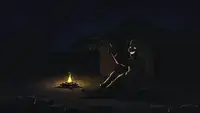 A late-night gathering in a rural Tanzanian village takes an unexpected and humorous turn when a familiar face emerges from the darkness.
A late-night gathering in a rural Tanzanian village takes an unexpected and humorous turn when a familiar face emerges from the darkness. - The Transformative Impact of Wagagai Gold Mining on Busia, Uganda
The Wagagai gold mining project in Busia, Uganda, represents a monumental leap in the region’s economic and industrial development. As a mentor for the Start Your Own Gold Mine program, I highlight how this $200 million investment by Wagagai Mining (U) Limited—a subsidiary of China’s Liaoning Hongda Group—is set to revolutionize local employment, infrastructure, and value-added mineral processing, aligning with Uganda’s vision to end raw mineral exports and boost domestic refining capacity. - Mining Companies in East Africa
- Seeking Investments for Your Potential Gold Mining Site?
Seeking Investments for your potential gold mining site? Start Your Own Gold Mine emphasizes the crucial first step in attracting investment—investing personally into discovering and validating a viable mineral deposit. Before approaching external financiers or stakeholders with promises of lucrative returns, it's imperative that you invest time, effort, and resources to conduct thorough exploration activities such as geological surveys and sampling analyses. This initial self-investment is essential for establishing the credibility and potential profitability of your site by confirming its value in terms of resource quantity and quality. Once a valuable deposit has been identified through these preliminary efforts, it provides concrete evidence that can be presented to investors, thereby increasing their confidence in funding further development stages such as feasibility studies or full-scale mining operations. This approach not only secures the necessary capital for expansion but also establishes your credibility within the industry by demonstrating commitment and due diligence from inception. - Unlocking Hidden Riches: The Role of Geophysical Exploration in Gold Mining
Geophysical exploration has revolutionized the search for gold by allowing mining companies to non-invasively probe the Earth's subsurface and identify potential deposits with greater accuracy and efficiency. By utilizing a range of techniques such as magnetic, electromagnetic, induced polarization, resistivity, and seismic surveys, experts can detect anomalies and variations in physical properties that may indicate the presence of gold and its associated minerals. This cutting-edge approach not only accelerates the discovery process but also helps in minimizing environmental impact by reducing the need for exploratory drilling and minimizing the area that needs to be disturbed. As the quest for precious metals continues, geophysical methods stand as a cornerstone in the responsible and effective exploitation of gold resources worldwide. - Matrix Gold Prospecting: The Fastest Way to Start Your Own Gold Mine
Matrix Gold Prospecting is a streamlined, systematic approach designed to quickly identify gold deposits and initiate production with minimal delay. This method ensures rapid results while maintaining cost efficiency, making it ideal for small-scale miners looking to start operations within weeks rather than years. - Ground-based High-Resolution Proton Magnetometer Survey
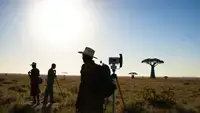 A Ground-based High-Resolution Proton Magnetometer Survey is a sophisticated geophysical technique employed to detect subtle variations in the Earth's magnetic field, revealing potential subsurface mineral deposits, particularly gold ores. This method utilizes a proton magnetometer to precisely measure magnetic field strength, enabling accurate mapping of underground geological structures. This survey is a critical component of modern gold exploration, allowing for targeted and efficient extraction.
A Ground-based High-Resolution Proton Magnetometer Survey is a sophisticated geophysical technique employed to detect subtle variations in the Earth's magnetic field, revealing potential subsurface mineral deposits, particularly gold ores. This method utilizes a proton magnetometer to precisely measure magnetic field strength, enabling accurate mapping of underground geological structures. This survey is a critical component of modern gold exploration, allowing for targeted and efficient extraction. - Estimation of Soil Leachable for Gold Recovery Using 1000 Kilograms of Cyanide
The provided list consists of references and resources related to various aspects within the gold mining industry, particularly focusing on cyanidation (a process used for extracting precious metals like silver or gold from ore using a solution containing sodium cyanide), heap leaching methods in metal recovery processes such as CIL-CIP systems commonly employed by companies including Xinhai Mining and Anglo American, environmental considerations associated with mineral processing (like the Cyanide Code audit reports) alongside alternative technologies aimed at reducing or replacing traditional cyanidation techniques. These resources cover technical papers detailing heap leaching efficiency factors such as ore characteristics affect gold recovery rates; patents related to optimizing and decreasing sodium citrate consumption in sulfides for improved process economics, methods involving hydrogen peroxide use during the cyclones of precious metal extraction (like those studied by Kompleksnoe Ispolzovanie Mineralnogo Syra), as well practical guidelines from industry leaders like SGS and JXSC Machine. - Gold Nugget Suction Pump: A DIY Tool for Efficient Gold Recovery
The Gold Nugget Suction Pump is a specialized suction device designed for gold prospectors to retrieve gold particles trapped in tight crevices, between rocks, or in hard-to-reach underwater areas. Built using everyday materials, this tool combines simplicity, durability, and precision to help you recover even the smallest gold flakes and nuggets. - The Essentials of Business Management and Accounting: Balancing Transparency and Trust
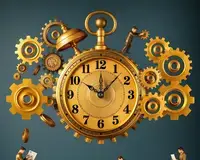 Within the critical landscape of business management, particularly for those venturing into ventures like initiating a gold mine operation, the necessity of robust accounting practices and open communication cannot be emphasized enough. This article explores the foundational elements required to maintain financial integrity and foster trust among all stakeholders involved in any business endeavor.
Within the critical landscape of business management, particularly for those venturing into ventures like initiating a gold mine operation, the necessity of robust accounting practices and open communication cannot be emphasized enough. This article explores the foundational elements required to maintain financial integrity and foster trust among all stakeholders involved in any business endeavor. - Profit-Sharing Model for Gold Mining Operations Utilizing Partner-Provided Sluices
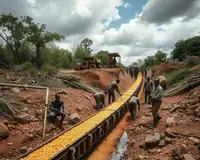 This gold mining business model, through initial investment of $22,000, collaborates with local communities by providing essential equipment, charging a transparent fee, empowering miners with training, and offering premium gold purchase rates, while focusing on sustainability, minimizing environmental impact, promoting community development, and ensuring efficiency through low-cost operations and solar energy utilization.
This gold mining business model, through initial investment of $22,000, collaborates with local communities by providing essential equipment, charging a transparent fee, empowering miners with training, and offering premium gold purchase rates, while focusing on sustainability, minimizing environmental impact, promoting community development, and ensuring efficiency through low-cost operations and solar energy utilization. - How to Successfully Import Gold to India: A Guide by Jean Louis, Start Your Own Gold Mine
 Importing gold to India is a lucrative yet highly regulated process that requires meticulous planning and adherence to legal frameworks. As someone who has worked extensively with clients in India, I, Jean Louis, founder of Start Your Own Gold Mine, can guide you through the essential steps—from obtaining the necessary licenses like the Import Export Code (IEC) to navigating customs duties and RBI regulations. Whether you’re an individual looking to import gold under baggage rules or a business aiming to work with authorized banks and agencies, this guide will help you understand the complexities of the process, avoid common pitfalls, and ensure compliance with Indian laws. Let’s turn your gold import aspirations into a seamless and profitable venture.
Importing gold to India is a lucrative yet highly regulated process that requires meticulous planning and adherence to legal frameworks. As someone who has worked extensively with clients in India, I, Jean Louis, founder of Start Your Own Gold Mine, can guide you through the essential steps—from obtaining the necessary licenses like the Import Export Code (IEC) to navigating customs duties and RBI regulations. Whether you’re an individual looking to import gold under baggage rules or a business aiming to work with authorized banks and agencies, this guide will help you understand the complexities of the process, avoid common pitfalls, and ensure compliance with Indian laws. Let’s turn your gold import aspirations into a seamless and profitable venture. - Exploring the World of Mineral Resources: Types, Importance, and Conservation
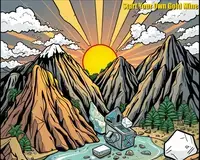 Mineral resources are the backbone of modern civilization, playing a critical role in almost every aspect of our daily lives. From the metals in our smartphones to the energy that powers our homes, mineral resources are indispensable. However, their extraction and use come with significant environmental and social challenges. This article provides an in-depth exploration of the types of mineral resources, their importance, the environmental impact of their extraction, and the urgent need for conservation. It also offers practical strategies for sustainable mineral use to ensure their availability for future generations.
Mineral resources are the backbone of modern civilization, playing a critical role in almost every aspect of our daily lives. From the metals in our smartphones to the energy that powers our homes, mineral resources are indispensable. However, their extraction and use come with significant environmental and social challenges. This article provides an in-depth exploration of the types of mineral resources, their importance, the environmental impact of their extraction, and the urgent need for conservation. It also offers practical strategies for sustainable mineral use to ensure their availability for future generations. - Heap Leaching vs. Carbon-in-Leach (CIL): A Comparison of Scalability, Efficiency, and Applications
Heap leaching and Carbon-in-Leach (CIL) are two widely used methods for extracting metals, particularly gold, from ores and tailings. While both processes aim to recover valuable metals, they differ significantly in terms of scalability, cost, efficiency, and suitability for different ore types. This article provides a detailed comparison of heap leaching and CIL, highlighting their advantages, limitations, and ideal applications, along with a summary table for quick reference. - Detailed Explanation of the SYOGM Gold Mine Production Line #1
The proposed gold mine production line is designed for efficiency and cost-effectiveness in gold recovery, incorporating several key components. It begins with durable grizzly screens for rock classification, followed by a mechanical feeder that regulates the flow into a jaw crusher, which processes appropriately sized rocks. Oversized rocks are managed separately to prevent clogs, using manual methods to break them down, thus maintaining optimal production capacity. After the jaw crusher, smaller rock fragments are gravity-fed to impact mills for further pulverization, and a particle recirculation system, utilizing methods such as hydrocyclones or spiral concentrators, ensures larger particles are reprocessed for improved gold extraction. The finely milled material is then directed to sluices designed for fine gold recovery, leveraging gravitational flow for efficiency. This self-contained, gravity-fed production line minimizes transportation costs and time, ultimately enhancing productivity and profitability, validated by successful implementations in similar projects, thereby representing a reliable investment for sustainable gold mining operations. - Strategic Provisioning of Equipment to Village Miners in Exchange for Gold Benefits (Relationship Management)
This web page talks about a way for dealers and buyers to work together that is good for both sides. The dealers or buyers give miners in villages the equipment they need for mining gold. This helps the miners mine gold more efficiently. In return, the dealers and buyers get some of the profits from the gold-bearing rocks, or they get a good percentage of any precious metals that are found. They also get priority when buying these valuable resources and get discounts on future transactions. - We strive to bring customers to mining land, not the other way around
 Start Your Own Gold Mine helps clients succeed by guiding them to proven, productive mining lands, avoiding common pitfalls of faulty exploration reports on potential mining properties. If a client's land does not appear to be profitable, our approach is reversed. Instead of bringing the client to a potentially infeasible mining site, we focus on finding suitable mining land that meets their needs, ensuring a more promising and successful mining venture.
Start Your Own Gold Mine helps clients succeed by guiding them to proven, productive mining lands, avoiding common pitfalls of faulty exploration reports on potential mining properties. If a client's land does not appear to be profitable, our approach is reversed. Instead of bringing the client to a potentially infeasible mining site, we focus on finding suitable mining land that meets their needs, ensuring a more promising and successful mining venture. - Step-by-step Guide for Effortless Commencement of Start Your Own Gold Mine Project in your country
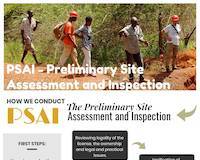 This article provides a detailed budget and cost breakdown for starting your own gold mining project, explaining the process step-by-step.
This article provides a detailed budget and cost breakdown for starting your own gold mining project, explaining the process step-by-step. - Setting up Camp on a Gold Mining Site
This page provides guidance on setting up camp for small-scale gold prospecting. It emphasizes the importance of choosing a suitable location with potential for gold mining, followed by considerations for water and sanitation, protection from the elements, and equipment and tools needed for prospecting. Other essential aspects include hiring help, storage, communication and navigation, and keeping necessary administrative documents. The page emphasizes safety, sustainability, and environmental responsibility while encouraging readers to begin their own small-scale gold mining operation. - Understanding Potential for Alluvial Gold Mining Sites
To better understand the potential of alluvial gold mining sites, landlords and license holders should answer the following mining-related questions. - Mining License Compliance in East Africa
 Mining license holders in East Africa frequently fail to comply with regulations, often more than 95% of the time, due to their lack of skilled personnel, instead hiring unqualified third parties to prepare reports, which are often inaccurate and do not adhere to international standards. The primary reason for this is the license holder's lack of executive education, which is essential for understanding their primary responsibility of achieving the organization's objectives by utilizing adequate organization and personnel. A professional executive is expected to oversee overall operations and strategic decision-making, while other essential professionals, such as accountants, secretaries, mining engineers, geologists, and skilled gold prospectors, are required to manage various aspects of the mining operation.
Mining license holders in East Africa frequently fail to comply with regulations, often more than 95% of the time, due to their lack of skilled personnel, instead hiring unqualified third parties to prepare reports, which are often inaccurate and do not adhere to international standards. The primary reason for this is the license holder's lack of executive education, which is essential for understanding their primary responsibility of achieving the organization's objectives by utilizing adequate organization and personnel. A professional executive is expected to oversee overall operations and strategic decision-making, while other essential professionals, such as accountants, secretaries, mining engineers, geologists, and skilled gold prospectors, are required to manage various aspects of the mining operation. - How to differentiate between alluvial and eluvial gold nuggets
By observing the shape, surface texture, and color of the gold nugget, you can determine whether it is alluvial or eluvial. Keep in mind that the shape and appearance of gold nuggets can vary significantly, so experience and knowledge of the local gold-bearing area can be helpful in making an accurate identification. - Detailed Explanation of the SYOGM Gold Mine Production Line #0
The SYOGM Gold Mine Production Line #1 is a basic hard rock production line that may be used before more serious stage of work during prospecting and initial days of the work. - Opportunities in Gold Mining with a Modest $8,000 Investment
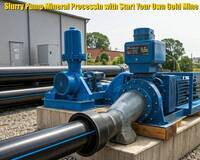 Starting a gold mining operation with a modest $8,000 investment, involving setup, equipment, and production stages to yield a potentially lucrative return. This specific strategic approach is distinct from traditional gold prospecting methods, where the focus is typically on searching for gold deposits in unexplored territories. Instead, we adopt a more targeted and efficient strategy, where we visit existing sites that have been previously mined or explored, and process their tailings, rocks, and gold-bearing ores.
Starting a gold mining operation with a modest $8,000 investment, involving setup, equipment, and production stages to yield a potentially lucrative return. This specific strategic approach is distinct from traditional gold prospecting methods, where the focus is typically on searching for gold deposits in unexplored territories. Instead, we adopt a more targeted and efficient strategy, where we visit existing sites that have been previously mined or explored, and process their tailings, rocks, and gold-bearing ores. - Importance of Representative Sample
 A representative sample for gold grade is a meticulously collected and processed portion of ore that accurately reflects the average gold concentration of the entire mineral deposit. This sample is essential for determining the true value and potential profitability of a gold mining operation. To ensure its representativeness, the sampling process must follow standardized protocols, including proper sampling techniques, adequate sample size, and uniform distribution across different sections of the deposit. Additionally, the sample should undergo rigorous testing and analysis in a controlled laboratory environment to provide reliable and consistent gold grade measurements. By obtaining a representative sample, mining professionals can make informed decisions regarding extraction methods, resource estimation, and economic feasibility, ultimately enhancing the efficiency and success of gold recovery efforts.
A representative sample for gold grade is a meticulously collected and processed portion of ore that accurately reflects the average gold concentration of the entire mineral deposit. This sample is essential for determining the true value and potential profitability of a gold mining operation. To ensure its representativeness, the sampling process must follow standardized protocols, including proper sampling techniques, adequate sample size, and uniform distribution across different sections of the deposit. Additionally, the sample should undergo rigorous testing and analysis in a controlled laboratory environment to provide reliable and consistent gold grade measurements. By obtaining a representative sample, mining professionals can make informed decisions regarding extraction methods, resource estimation, and economic feasibility, ultimately enhancing the efficiency and success of gold recovery efforts. - Introduction to Mineral Processing in East Africa
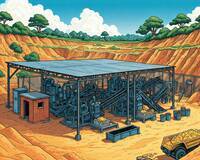 Start Your Own Gold Mine provides comprehensive turnkey services to establish gold mineral processing operations in East Africa, encompassing land acquisition, equipment installation, staff training, and regulatory compliance.
Start Your Own Gold Mine provides comprehensive turnkey services to establish gold mineral processing operations in East Africa, encompassing land acquisition, equipment installation, staff training, and regulatory compliance. - Categories of Available Gold for Trade and Export
 At Start Your Own Gold Mine, we collaborate with genuine and licensed gold dealers across East Africa to offer a diverse range of gold categories available for purchase in Uganda, Kenya, and Tanzania. These categories cater to various investment needs and preferences, ensuring that our clients can find the perfect gold type to suit their trading and export requirements.
At Start Your Own Gold Mine, we collaborate with genuine and licensed gold dealers across East Africa to offer a diverse range of gold categories available for purchase in Uganda, Kenya, and Tanzania. These categories cater to various investment needs and preferences, ensuring that our clients can find the perfect gold type to suit their trading and export requirements.
- Review of geological reports for compliance with NI 43-101
The uploaded document, titled "NI43-101 Technical Geological Report for Limani Gold Prospect," outlines geological, environmental, and operational aspects of a mining project. However, compliance with NI 43-101, a Canadian standard for the disclosure of mineral project information, is stringent and requires adherence to specific content and reporting guidelines. - Best Practices After Obtaining a Mining and Exploration License for Over 100 km²
Once you've secured a mining and exploration license for an area exceeding 100 km², the journey towards successful gold mining begins. This comprehensive guide outlines the most effective steps to take, ensuring a strategic and efficient approach to your mining endeavors. - Unlock Gold Success with Kassanda Rapid Rock Verification!
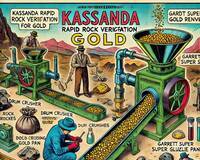 Introducing the game-changer: Kassanda Rapid Rock Verification for Gold! 🚀 Developed by Louis himself, this innovative field assaying method allows you to quickly and accurately assess gold content in rocks right on-site. Say goodbye to long waits and hello to efficient, reliable results! ⏱️💰
Introducing the game-changer: Kassanda Rapid Rock Verification for Gold! 🚀 Developed by Louis himself, this innovative field assaying method allows you to quickly and accurately assess gold content in rocks right on-site. Say goodbye to long waits and hello to efficient, reliable results! ⏱️💰 - Visiting Uganda for a Mining Site Tour: Insights and Practical Tips
 Uganda, renowned for its rich mineral deposits, offers a unique opportunity for aspiring miners and industry professionals to explore its vibrant mining sector. Whether you're an investor, a mining enthusiast, or part of a team planning a site visit, understanding the local landscape and cultural nuances is crucial for a successful and safe experience. Jean M. Louis, a seasoned mentor from the Start Your Own Gold Mine program, shares invaluable insights to help you navigate your mining site visit in Uganda effectively.
Uganda, renowned for its rich mineral deposits, offers a unique opportunity for aspiring miners and industry professionals to explore its vibrant mining sector. Whether you're an investor, a mining enthusiast, or part of a team planning a site visit, understanding the local landscape and cultural nuances is crucial for a successful and safe experience. Jean M. Louis, a seasoned mentor from the Start Your Own Gold Mine program, shares invaluable insights to help you navigate your mining site visit in Uganda effectively. - Discover the Future of Gold Mining with SYOGM Advance Wash Plant!
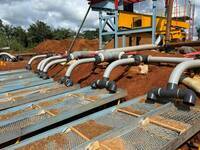 Are you ready to take your gold mining operation to the next level? Introducing the **SYOGM Advance Wash Plant**, a game-changer in gold recovery systems! Designed and perfected in the stunning landscapes of **Uganda**, this innovative wash plant will revolutionize the way you extract gold. And the best part? We deliver **worldwide!** 🌟
Are you ready to take your gold mining operation to the next level? Introducing the **SYOGM Advance Wash Plant**, a game-changer in gold recovery systems! Designed and perfected in the stunning landscapes of **Uganda**, this innovative wash plant will revolutionize the way you extract gold. And the best part? We deliver **worldwide!** 🌟 - Terms and Conditions for Gold Mining Equipment Manufacturing by Start Your Own Gold Mine
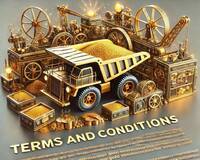 Start Your Own Gold Mine offers comprehensive terms and conditions governing the manufacture, sale, and use of specialized gold mining equipment.
Start Your Own Gold Mine offers comprehensive terms and conditions governing the manufacture, sale, and use of specialized gold mining equipment. - Report of prospecting on land of professor Magezi Kirigwajjo from 26 October 2024
- Salting of Mining Lands
 Salting refers to the deceptive practice of artificially enhancing the perceived value of mining lands by introducing or indicating the presence of valuable minerals, such as gold, that are not actually present in commercially viable quantities. This fraudulent activity can lead to substantial financial losses for inexperienced investors who may not have the means to verify the actual conditions of the land before committing resources. Salting can take many forms, including the placement of small amounts of gold in visible locations or misleading claims about the richness of a property based on manipulated measurements.
Salting refers to the deceptive practice of artificially enhancing the perceived value of mining lands by introducing or indicating the presence of valuable minerals, such as gold, that are not actually present in commercially viable quantities. This fraudulent activity can lead to substantial financial losses for inexperienced investors who may not have the means to verify the actual conditions of the land before committing resources. Salting can take many forms, including the placement of small amounts of gold in visible locations or misleading claims about the richness of a property based on manipulated measurements. - Comprehensive Control and Management of the Gold Mining Company
An all-encompassing framework for the effective oversight, strategic direction, and operational administration of a gold mining company, ensuring optimal resource utilization, regulatory compliance, and sustainable growth in a competitive market. - Start Your Own Gold Mine headquarter and branches
"Launch your gold mining venture with Start Your Own Gold Mine, featuring headquarters and branches across East Africa." - I want to produce 20-25 kilos a month, how much should I invest?
 This article provides a comprehensive guide on the startup costs and essential considerations for investing in gold mining in Uganda, specifically targeting a production goal of 20-25 kilograms per month.
This article provides a comprehensive guide on the startup costs and essential considerations for investing in gold mining in Uganda, specifically targeting a production goal of 20-25 kilograms per month. - Buying and selling gold in Uganda, Tanzania and Kenya
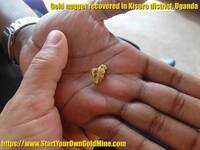 In order to successfully navigate the gold trade industry in East Africa's Uganda, Tanzania, and Kenya, newcomers should prioritize a comprehensive understanding of market dynamics, exercise due diligence, and acquire straightforward market knowledge. This will not only enhance their chances of success but also minimize potential risks and maximize opportunities in this lucrative sector.
In order to successfully navigate the gold trade industry in East Africa's Uganda, Tanzania, and Kenya, newcomers should prioritize a comprehensive understanding of market dynamics, exercise due diligence, and acquire straightforward market knowledge. This will not only enhance their chances of success but also minimize potential risks and maximize opportunities in this lucrative sector. - Step-by-step Guide for Effortless Commencement of Start Your Own Gold Mine Project in your country
 In the quest for gold in a gold-rich area, the discovery of the initial gold deposit is a crucial step in generating income. With expert guidance and support, a comprehensive mining site plan is developed, and the client's team is trained and equipped to efficiently extract gold. Our consulting fee is $6,000 per month, with the potential for further savings through manufacturing their own machines. For alluvial gold mining, processing costs can be significantly reduced. The journey from initial discovery to establishing a full-fledged gold mine can take 45 days or less, with our expertise ensuring success and sustainability.
In the quest for gold in a gold-rich area, the discovery of the initial gold deposit is a crucial step in generating income. With expert guidance and support, a comprehensive mining site plan is developed, and the client's team is trained and equipped to efficiently extract gold. Our consulting fee is $6,000 per month, with the potential for further savings through manufacturing their own machines. For alluvial gold mining, processing costs can be significantly reduced. The journey from initial discovery to establishing a full-fledged gold mine can take 45 days or less, with our expertise ensuring success and sustainability. - Start Your Own Gold Mine in 45 days with US $22,000
The Start Your Own Gold Mine program for the consulting fee of US $22,000 provides a client with a full bundle of previously created and prepared resources so that first 5 kilograms of gold may be produced and shared between the client and our company by the ratio of 3 kilograms for client and 2 kilograms for our company. Upon completion of full training and production of 5 kilograms of gold, business remains to client for the future. Clients are expected to have more available capital then the fee that is paid in Start Your Own Gold Mine for their expenses of accommodation or residency expenses. - Countries available to Start Your Own Gold Mine
Our group have legal establishments in Rwanda, Uganda, Kenya and Tanzania. We may potentially work in any of the East African countries such as Burundi, South Sudan but also the Democratic Republic of Congo. In addition, the Start Your Own Gold Mine program can be executed in other countries around the world where legal mining is possible. Our team has extensive experience in training staff members and can provide assistance in sending our staff members to different countries to support the implementation of the program. - Investors seeking Explored Lands With Reports in East Africa
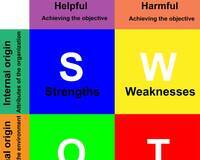 Foreign investors often inquire with us about lands that come with comprehensive reports, meeting specific standards. They seek certainty in terms of the quality and validity of these reports, as they form the basis of their investment assessments. Unfortunately, the existing reports in many East African countries do not always meet these standard requirements. This lack of consistency in reporting quality poses a challenge for foreign investors who rely on such reports to evaluate the potential of gold mining projects and minimize risks.
Foreign investors often inquire with us about lands that come with comprehensive reports, meeting specific standards. They seek certainty in terms of the quality and validity of these reports, as they form the basis of their investment assessments. Unfortunately, the existing reports in many East African countries do not always meet these standard requirements. This lack of consistency in reporting quality poses a challenge for foreign investors who rely on such reports to evaluate the potential of gold mining projects and minimize risks.
- Where and How to Buy Anonymously Gold for Cash in Europe?
In this article, we will explore how to purchase gold anonymously for cash in Europe without revealing which country is the best for this purpose. - The Gold Trade in East Africa: Understanding the Market and Approach
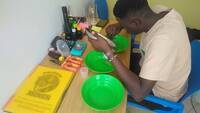 The gold trade in East Africa is booming, with ample opportunities for business deals. However, foreign traders often struggle to navigate the market due to differences in mentality and approach. In this article, we will explore the key factors that gold traders need to understand in order to succeed in this region.
The gold trade in East Africa is booming, with ample opportunities for business deals. However, foreign traders often struggle to navigate the market due to differences in mentality and approach. In this article, we will explore the key factors that gold traders need to understand in order to succeed in this region. - Executive Summary to Start Your Own Gold Mine with Mineral Processing in Uganda
The Executive Summary serves as a business proposal for clients who wish to Start Your Own Gold Mine through a well-researched and experienced business opportunity in mineral processing. The proposed mineral processing venture is sustainable and scalable, leveraging extensive knowledge and experience gained since 2012. The market opportunity is significant due to the large number of miners in the districts of Uganda and the lack of professional and efficient mineral processing centers currently serving the miners. By occupying this market with our low-risk and targeted strategy, clients position themselves to become the leading provider of mineral processing services in the region, offering to investors a lucrative income-generating opportunity. - SYOGM Advance Gold Wash Plant Design
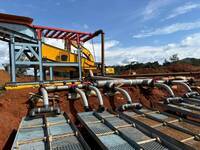 The SYOGM (Start Your Own Gold Mine) Advance Wash Plant is an innovative gold recovery system that allows miners to efficiently and effectively extract gold particles from dirt. The wash plant design incorporates various components and processes to ensure optimal extraction and recovery of gold.
The SYOGM (Start Your Own Gold Mine) Advance Wash Plant is an innovative gold recovery system that allows miners to efficiently and effectively extract gold particles from dirt. The wash plant design incorporates various components and processes to ensure optimal extraction and recovery of gold. - Easiest-to-use washplant for excavator applications
* Captured Region Text Buffer name: *RCD TEMPORARY BUFFER* Buffer file: /home/data1/protected/tmp/2024-01-12-19:45:22-RCD TEMPORARY BUFFER.txt Time captured: 2024-01-13-20:15:57 - Exploring the Economic Potential of Gold Mining in Mubende District and Kassanda, Uganda
* Captured Region Text Buffer name: *RCD TEMPORARY BUFFER* Buffer file: /home/data1/protected/tmp/2024-01-08-20:56:10-RCD TEMPORARY BUFFER.txt Time captured: 2024-01-09-11:42:28 - Resumen Ejecutivo sobre Procesamiento de Minerales por Start Your Own Gold Mine
El Resumen Ejecutivo sirve como una propuesta de negocio para asociarse con inversionistas en busca de una oportunidad de negocio bien investigada y con experiencia. La propuesta de empresa de procesamiento de minerales es sostenible y escalable, aprovechando el extenso conocimiento y experiencia adquiridos desde 2012. La oportunidad del mercado es significativa debido al gran número de mineros en los distritos de Uganda y a la falta de centros de procesamiento de minerales profesionales y eficientes que actualmente sirvan a los mineros. Al ocupar este mercado con nuestra estrategia de bajo riesgo y enfocada, nos posicionamos para convertirnos en el principal proveedor de servicios de procesamiento de minerales en la región, ofreciendo a los inversionistas una lucrativa oportunidad de generar ingresos. - Mineral Rights vs. Gold Mines: Exploring the Differences
In the world of mining and exploration, there are two key terms that often cause confusion: mineral rights and gold mines. While both are related to the extraction of valuable resources from the earth, they refer to distinct aspects of the industry. - Factors Affecting Gold Recovery in Cyanidation in East African Countries
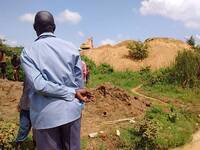 The efficiency of gold recovery in artisanal cyanidation in East Africa is influenced by factors such as gold particle size, mineralogy of the ore or tailings, presence of cyanide-consuming compounds, cyanide concentration and contact time, and pH level of the leach solution.
The efficiency of gold recovery in artisanal cyanidation in East Africa is influenced by factors such as gold particle size, mineralogy of the ore or tailings, presence of cyanide-consuming compounds, cyanide concentration and contact time, and pH level of the leach solution. - Rivendosja artizanale e arit në Lindjen e Afrikës.
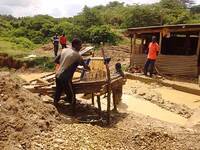 Përshkrim i hollësishëm i rimëkëmbjes së artezanale të arit në Afrikën Lindore, përfshirë planifikimin e minierave, zbatimin e masave të sigurisë, nxjerrjen dhe hoqjen e mineralave, transportimin efikas të mineraleve, shthurjen dhe grirjen e materialeve të papërpunuara, ndarjen e arit nga mineralet e tjera, përpunimin e koncentratit përfundimtar, përmirësimin e pastërimit dhe shndërrimin e koncentratit në metal të rafinuar për shitje.
Përshkrim i hollësishëm i rimëkëmbjes së artezanale të arit në Afrikën Lindore, përfshirë planifikimin e minierave, zbatimin e masave të sigurisë, nxjerrjen dhe hoqjen e mineralave, transportimin efikas të mineraleve, shthurjen dhe grirjen e materialeve të papërpunuara, ndarjen e arit nga mineralet e tjera, përpunimin e koncentratit përfundimtar, përmirësimin e pastërimit dhe shndërrimin e koncentratit në metal të rafinuar për shitje. - Artisanal Gold Recovery in East Africa
 Elaborated description of artisanal gold recovery in East Africa, involving mine planning, implementing safety measures, excavating and removing ores, efficiently transporting minerals, crushing and milling raw materials, separating gold from other minerals, processing final concentrate, enhancing purity, and converting concentrate into refined metal for sales.
Elaborated description of artisanal gold recovery in East Africa, involving mine planning, implementing safety measures, excavating and removing ores, efficiently transporting minerals, crushing and milling raw materials, separating gold from other minerals, processing final concentrate, enhancing purity, and converting concentrate into refined metal for sales. - Executive Summary für Mineralverarbeitung durch Start Your Own Gold Mine
Die Executive Summary dient als Geschäftsvorschlag für eine Partnerschaft mit Investoren, die eine fundierte und erfahrene Geschäftsmöglichkeit suchen. Das vorgeschlagene Mineralverarbeitungsunternehmen ist nachhaltig und skalierbar und profitiert von umfangreichem Wissen und Erfahrung, die seit 2012 gesammelt wurden. Die Marktchancen sind signifikant aufgrund der großen Anzahl von Minenarbeitern in den Distrikten in Uganda und dem Mangel an professionellen und effizienten Mineralverarbeitungszentren, die derzeit die Bergleute bedienen. Durch die Besetzung dieses Marktes mit unserer risikoarmen und zielgerichteten Strategie positionieren wir uns als führender Anbieter von Mineralverarbeitungsdienstleistungen in der Region und bieten Investoren eine lukrative Einkommensmöglichkeit. - Izvršni sažetak o obradi minerala od strane Start Your Own Gold Mine
Izvršni sažetak služi kao poslovna ponuda za partnerstvo s investitorima koji traže dobro istraženu i iskusnu poslovnu priliku. Predloženi posao obrade minerala je održiv i razmjeran, temeljen na opsežnom znanju i iskustvu stečenom od 2012. godine. Prilika na tržištu je značajna zbog velikog broja rudara u okruzima Ugande i nedostatka profesionalnih i učinkovitih centara za obradu minerala koji trenutno pružaju usluge rudarima. Zauzimajući ovo tržište s našom niskorizičnom i ciljanom strategijom, pozicioniramo se kao vodeći pružatelj usluga obrade minerala u regiji, nudeći investitorima unosnu mogućnost generiranja prihoda. - Small-Scale Mineral Processing: Unlocking Potential and Ensuring Sustainable Gold Recovery
The mineral processing of the mother lode presents a promising opportunity for small-scale operations in Uganda. This article explores the various stages and processes involved in extracting gold from prospecting rocks to the final recovery, while highlighting the commitment to environmentally friendly practices. - RIASSUNTO ESECUTIVO SULLA LAVORAZIONE DI MINERALI DA START YOUR OWN GOLD MINE IN UGANDA
The Executive Summary serves as a business proposal for partnership with investors seeking a well-researched and experienced business opportunity. The proposed mineral processing venture is sustainable and scalable, leveraging extensive knowledge and experience gained since 2012. The market opportunity is significant due to the large number of miners in the districts of Uganda and the lack of professional and efficient mineral processing centers currently serving the miners. By occupying this market with our low-risk and targeted strategy, we position ourselves to become the leading provider of mineral processing services in the region, offering investors a lucrative income-generating opportunity. - Financing of Gold Mining Site That Lacks Proper Business Management, Administration, And Record-Keeping
 These sites are already producing gold but require financial and investment support to improve their operations and maximize profitability. For this stage of development, we focus on mining sites that are already producing gold but lack proper business management, administration, and record-keeping. Our aim is to provide financing and investment opportunities for these sites under specific conditions.
These sites are already producing gold but require financial and investment support to improve their operations and maximize profitability. For this stage of development, we focus on mining sites that are already producing gold but lack proper business management, administration, and record-keeping. Our aim is to provide financing and investment opportunities for these sites under specific conditions. - Securing Capital for Mining Lands with Presumed Gold Deposits
 We are excited to present our service for the development of gold mining land. Our company, Start Your Own Gold Mine, specializes in prospecting and exploration services for plain land assumed to have minerals. This land has no previous production and no neighboring production.
We are excited to present our service for the development of gold mining land. Our company, Start Your Own Gold Mine, specializes in prospecting and exploration services for plain land assumed to have minerals. This land has no previous production and no neighboring production. - Funding for Gold Mining Site Development
Are you in search of funding opportunities for the development of gold mining sites? Look no further. Start Your Own Gold Mine has been providing financial support for mining projects since 2011. We have successfully funded the growth and establishment of numerous mining sites across Tanzania, Uganda, and Kenya. - Improving Gold Recovery from Artisanal Tailings in East Africa
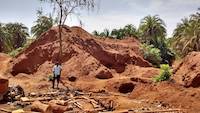 This page discusses methods to improve gold recovery from artisanal tailings in East Africa. It provides an overview of the challenges faced by village miners and outlines a procedure for starting a gold recovery business in Uganda, Tanzania, and Kenya.
This page discusses methods to improve gold recovery from artisanal tailings in East Africa. It provides an overview of the challenges faced by village miners and outlines a procedure for starting a gold recovery business in Uganda, Tanzania, and Kenya. - Gold Recovery: Chlorination Leaching of Tailings
Discover the process of extracting gold from tailings through chlorination leaching, including the necessary steps, safety considerations, and effective techniques for maximizing gold recovery. - DIY Activated Carbon - Acid Activation in East Africa
The article provides a simplified procedure for making activated carbon using acid activation, emphasizing the steps involved and the materials needed. - How To Prepare Analysis Of Copper Ores For Seller Evaluation
Guide to Preparing Copper Ore Analysis for Seller Evaluation: Learn the step-by-step process of analyzing copper ores, including chemical analysis, assay techniques, physical properties, and mineralogical analysis, to present comprehensive data for evaluation by potential sellers. - Executive Summary on Mineral Processing by Start Your Own Gold Mine
The Executive Summary serves as a business proposal for partnership with investors seeking a well-researched and experienced business opportunity. The proposed mineral processing venture is sustainable and scalable, leveraging extensive knowledge and experience gained since 2012. The market opportunity is significant due to the large number of miners in the districts of Uganda and the lack of professional and efficient mineral processing centers currently serving the miners. By occupying this market with our low-risk and targeted strategy, we position ourselves to become the leading provider of mineral processing services in the region, offering investors a lucrative income-generating opportunity. - 1 acre, gold mining site in Uganda, sale for 5% of $2,000,000 value
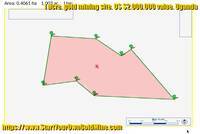 We are excited to present an extraordinary investment opportunity—1 acre of prime gold mining land in Uganda. This lucrative gold mining site is now available for sale at a fantastic value of only 5% of its estimated total worth of $2,000,000.
We are excited to present an extraordinary investment opportunity—1 acre of prime gold mining land in Uganda. This lucrative gold mining site is now available for sale at a fantastic value of only 5% of its estimated total worth of $2,000,000. - ✨ Introducing our Gold Refining System! 💰
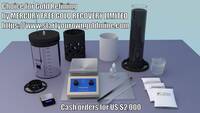 Introducing our Gold Refining System: With our fully self-contained and safe system, you can hassle-free refine 1-2 kg of gold per day. No fumes, no worries! We provide full training to ensure you have the necessary skills to operate the system with confidence. Our worldwide deliveries make it easy for you to start refining gold and exporting it yourself, especially in countries like Uganda where only refined gold can be exported. Take control of your gold production today! For larger systems capable of refining 30-50 kg per day, please contact us for further details.
Introducing our Gold Refining System: With our fully self-contained and safe system, you can hassle-free refine 1-2 kg of gold per day. No fumes, no worries! We provide full training to ensure you have the necessary skills to operate the system with confidence. Our worldwide deliveries make it easy for you to start refining gold and exporting it yourself, especially in countries like Uganda where only refined gold can be exported. Take control of your gold production today! For larger systems capable of refining 30-50 kg per day, please contact us for further details. - Preliminary Site Inspection and Assessment
Discover the power of our Preliminary Site Assessment and Inspection service! Led by mining expert Mr. Jean Louis, our team conducts comprehensive evaluations of mining sites in Tanzania, Uganda, and other Start Your Own Gold Mine program locations. 🌍🔎 From assessing living and working resources to analyzing previous gold mining activities and determining future development potential, we provide valuable insights to help you make informed decisions. 💼⛏️ Ensure the success and profitability of your mining venture with our expert assessment. Contact us today to schedule your assessment and embark on the path to gold mining success! ✨🚀 - PIZZA RULE FOR GOLD DEALS IN UGANDA, LCO POLICY LETTER OF 9 OCTOBER 2023
 The "Pizza Rule" implemented by Jean Louis and his company in Kampala aims to address unreliable prospects in the gold trade by requiring a symbolic gesture of commitment. Prospective businesspersons who fail to honor a scheduled meeting or bring even a single gram of gold for purchase must send an amount equivalent to 120,000 Ugandan shillings (approximately US $35) as compensation for any inconvenience caused. Additionally, local sellers must bring at least 10 grams of gold to the office to proceed. This rule, inspired by European business practices involving lunch meetings, ensures that only serious and committed individuals engage in business dealings, thereby streamlining the gold procurement process and minimizing wasted time and resources.
The "Pizza Rule" implemented by Jean Louis and his company in Kampala aims to address unreliable prospects in the gold trade by requiring a symbolic gesture of commitment. Prospective businesspersons who fail to honor a scheduled meeting or bring even a single gram of gold for purchase must send an amount equivalent to 120,000 Ugandan shillings (approximately US $35) as compensation for any inconvenience caused. Additionally, local sellers must bring at least 10 grams of gold to the office to proceed. This rule, inspired by European business practices involving lunch meetings, ensures that only serious and committed individuals engage in business dealings, thereby streamlining the gold procurement process and minimizing wasted time and resources. - Willkommen bei Start Your Own Gold Mine
Willkommen bei Start Your Own Gold Mine! Wir sind Experten für die Feingoldgewinnung und bieten effiziente Dienstleistungen an, um die Produktivität beim Goldbergbau zu maximieren und die Kosten zu minimieren. Mit über 350+ Bergbaustandorten weltweit sind wir Ihr zuverlässiger Partner für den Goldabbau. Kontaktieren Sie uns für Investitionsmöglichkeiten und weitere Informationen! - Financing of Gold Mining Projects
 The article delves into the investment focus of Start Your Own Gold Mine, a company that specializes in investing in productive gold mines that already have a certain level of gold production. The company avoids investing in gold prospecting, as it is considered a service rather than a productive mine.
The article delves into the investment focus of Start Your Own Gold Mine, a company that specializes in investing in productive gold mines that already have a certain level of gold production. The company avoids investing in gold prospecting, as it is considered a service rather than a productive mine. - Gold Mining and Prospecting Glossary in Start Your Own Gold Mine program
 Welcome to the Start Your Own Gold Mine program! Our website features a comprehensive glossary of terms related to gold mining and prospecting. Whether you are a beginner or an experienced miner, our glossary is designed to provide you with a valuable resource to enhance your knowledge and understanding of the industry. From basic terminology to advanced concepts, our carefully curated glossary covers everything you need to know about gold mining, including terms like placer mining, lode deposit, dredging, panning, and much more. Whether you are looking to embark on your own gold mining venture or simply want to expand your knowledge, our glossary is your go-to reference. Start exploring today and unlock the secrets of gold mining and prospecting with Start Your Own Gold Mine!
Welcome to the Start Your Own Gold Mine program! Our website features a comprehensive glossary of terms related to gold mining and prospecting. Whether you are a beginner or an experienced miner, our glossary is designed to provide you with a valuable resource to enhance your knowledge and understanding of the industry. From basic terminology to advanced concepts, our carefully curated glossary covers everything you need to know about gold mining, including terms like placer mining, lode deposit, dredging, panning, and much more. Whether you are looking to embark on your own gold mining venture or simply want to expand your knowledge, our glossary is your go-to reference. Start exploring today and unlock the secrets of gold mining and prospecting with Start Your Own Gold Mine! - How to Start Your Own Gold Mine?
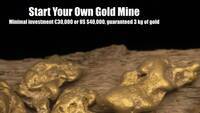 Start Your Own Gold Mine is your trusted partner in starting and managing a successful gold mining operation. With our comprehensive support and expertise, we guide you through every step of the process, from research and exploration to obtaining permits and setting up infrastructure. Our team of experienced professionals is dedicated to helping you achieve your goals in the gold mining industry. Visit our website to learn more about the services we offer and how we can assist you in starting your own profitable gold mine.
Start Your Own Gold Mine is your trusted partner in starting and managing a successful gold mining operation. With our comprehensive support and expertise, we guide you through every step of the process, from research and exploration to obtaining permits and setting up infrastructure. Our team of experienced professionals is dedicated to helping you achieve your goals in the gold mining industry. Visit our website to learn more about the services we offer and how we can assist you in starting your own profitable gold mine. - Importance of Core Drilling in Mining
 At Start Your Own Gold Mine, we understand the importance of core drilling in mining operations. We are dedicated to providing high-quality and affordable services to our clients in East Africa. For 30 meter deep core drilling, we offer the most affordable services in all of East Africa, guaranteed. Our expert team, state-of-the-art equipment, and commitment to safety and efficiency make us the ideal choice for your core drilling needs.
At Start Your Own Gold Mine, we understand the importance of core drilling in mining operations. We are dedicated to providing high-quality and affordable services to our clients in East Africa. For 30 meter deep core drilling, we offer the most affordable services in all of East Africa, guaranteed. Our expert team, state-of-the-art equipment, and commitment to safety and efficiency make us the ideal choice for your core drilling needs. - Financial Breakdown for Small-Scale Mining Company
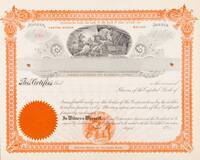 This page provides a concise financial breakdown for a small-scale mining company involved in rock mining and shaft sinking. It highlights the key categories and expenses involved in the financial operations of such a business. Please note that the breakdown presented here is a general overview and should be tailored to suit the specific circumstances and requirements of the mining company. Consulting with financial professionals and conducting a comprehensive analysis is recommended for a more precise financial assessment.
This page provides a concise financial breakdown for a small-scale mining company involved in rock mining and shaft sinking. It highlights the key categories and expenses involved in the financial operations of such a business. Please note that the breakdown presented here is a general overview and should be tailored to suit the specific circumstances and requirements of the mining company. Consulting with financial professionals and conducting a comprehensive analysis is recommended for a more precise financial assessment. - Gold concentration method by tapping during gold panning
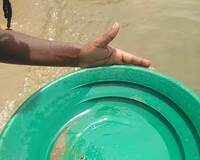 Tapping is one of many of methods used during the gold panning process. Gold concentration method by tapping concentrates even the invisible gold to the side of the gold pan. Tapping goes hand in hand with backwashing of the blacksand. Gold panner may efficiently remove the black sand by tapping, concentrating gold at the top of the gold pan, and backwashing the blacksand away from the gold.
Tapping is one of many of methods used during the gold panning process. Gold concentration method by tapping concentrates even the invisible gold to the side of the gold pan. Tapping goes hand in hand with backwashing of the blacksand. Gold panner may efficiently remove the black sand by tapping, concentrating gold at the top of the gold pan, and backwashing the blacksand away from the gold. - KASSANDA RAPID ROCK VERIFICATION FOR GOLD, LCO BULLETIN OF 26 APRIL 2023
- Facts On How to Start Your Own Gold Mine
- 2023-03-29 Gold panning procedure for mother lode gold after processing with the rock impact mill
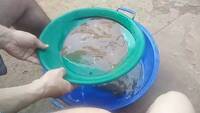 This is the gold panning procedure to verify for the gold from mother lode rocks, immediately after crushing of few buckets by using the SYOGM Rock Impact Mill. Watch the video and keep using this processs. If process takes longer than 3 minutes, you are doing something wrong.
This is the gold panning procedure to verify for the gold from mother lode rocks, immediately after crushing of few buckets by using the SYOGM Rock Impact Mill. Watch the video and keep using this processs. If process takes longer than 3 minutes, you are doing something wrong. - Gold Mining Lands For Sale and Partnership
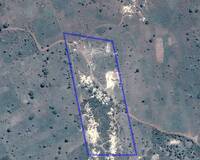 Our business helps clients to Start Your Own Gold Mine. Since 2012 we have been in continuous contact with gold mining lands and mining sites, or claims and their license holders in East Africa and other countries. On many of these lands we have already conducted Preliminary Site Inspection and Assessment. Majority of these gold mining lands may be made ready for gold production after only one month of exploration and prospecting service Matrix Gold Prospecting. We recommend start of gold production only after identification of gold bearing deposits on such lands.
Our business helps clients to Start Your Own Gold Mine. Since 2012 we have been in continuous contact with gold mining lands and mining sites, or claims and their license holders in East Africa and other countries. On many of these lands we have already conducted Preliminary Site Inspection and Assessment. Majority of these gold mining lands may be made ready for gold production after only one month of exploration and prospecting service Matrix Gold Prospecting. We recommend start of gold production only after identification of gold bearing deposits on such lands. - POLICY ON PRACTICAL COORDINATION, LCO POLICY LETTER OF 6 JULY 2022
This policy outlines practical coordination requirements for executing plans, programs, projects, and tasks in both close and distant interactions within LOUIS Communication Office. It emphasizes the importance of documenting instructions in writing, thoroughly understanding them before responding to supervisors with detailed confirmations or communications regarding progress or obstacles encountered during execution. Coordination involves communicating intentions beforehand, updating on progress throughout implementation, and reporting completion details afterward. - SYOGM Rock Impact Mill
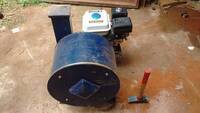 SYOGM Rock Impact Mill refers to low-cost, highly efficient, crushing and grinding impact mill with capacity of 500 kg and even up to 900 kg per hour. Capacity depends of the operator's skills and speed of work. This type of rock impact mill can easily replace rudimentary and very expensive ball mills such as those used in East Africa, in Tanzania, Uganda or Kenya or neighboring countries. While local village miners need to dry their rocks, this rock impact mill will work with water and without drying. It may process dry rocks as well. The machine may be transported by 2 people from a car to operating site. Or it may be transported by one person and wheelbarrow. Thus it is very mobile. Recovery screen is 1 mm and may be adjusted. We know from practical testing and scientific journal that screen of 1.5 mm is good enough to achieve almost optimum recovery. Thus our screen of 1 mm is more than enough to provide optimum recovery for small scale miners in East Africa and in other countries. This is pass-through grinding machine. It means that it may be used for very quick gold discovery and field sampling.
SYOGM Rock Impact Mill refers to low-cost, highly efficient, crushing and grinding impact mill with capacity of 500 kg and even up to 900 kg per hour. Capacity depends of the operator's skills and speed of work. This type of rock impact mill can easily replace rudimentary and very expensive ball mills such as those used in East Africa, in Tanzania, Uganda or Kenya or neighboring countries. While local village miners need to dry their rocks, this rock impact mill will work with water and without drying. It may process dry rocks as well. The machine may be transported by 2 people from a car to operating site. Or it may be transported by one person and wheelbarrow. Thus it is very mobile. Recovery screen is 1 mm and may be adjusted. We know from practical testing and scientific journal that screen of 1.5 mm is good enough to achieve almost optimum recovery. Thus our screen of 1 mm is more than enough to provide optimum recovery for small scale miners in East Africa and in other countries. This is pass-through grinding machine. It means that it may be used for very quick gold discovery and field sampling. - Ispiranje zlata u Hrvatskoj, Nenad Šerepec
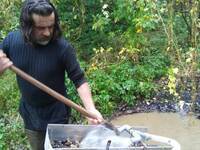 Ispirač zlata u Hrvatskoj i proizvođač opreme za ispiranje zlata dokazao se na više lokacija kao na rijeci Dravi, onda na Bilogori i na raznim drugim lokacijama. Nenad Šerepec, bolestan od zlatne groznice, ispirač zlata u Hrvatskoj.
Ispirač zlata u Hrvatskoj i proizvođač opreme za ispiranje zlata dokazao se na više lokacija kao na rijeci Dravi, onda na Bilogori i na raznim drugim lokacijama. Nenad Šerepec, bolestan od zlatne groznice, ispirač zlata u Hrvatskoj. - If you can catch a leprechaun...
 A leprechaun, according to Irish legend is a dwarf who keeps a pot of gold hidden away. If you can catch a leprechaun, your troubles are over. Because he keeps his gold just for ransom money. If you catch him, he'll quickly tell you where his gold is, so you'll let him go.
A leprechaun, according to Irish legend is a dwarf who keeps a pot of gold hidden away. If you can catch a leprechaun, your troubles are over. Because he keeps his gold just for ransom money. If you catch him, he'll quickly tell you where his gold is, so you'll let him go. - When people inquire with us "having buyers" that we may send them gold...
This page is short description how having buyers does not really help those companies in East Africa. Gold buyers are just everywhere, we have buyers who pay good prices. Especially companies which accumulate gold in stock never lack a gold buyer. To provide some gold production we would need to have some benefits. - 2020-05-04: Mzungu shoes
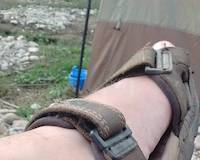 Sandals are best to be worn in such area.
Sandals are best to be worn in such area. - 2020-05-04: Camp life at gold mining site
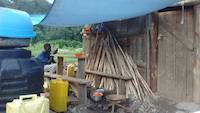 That is how camp life at gold mining site looks like. There are varieties of conditions. This time we have been in a humid area in front of Bwindi Impenetrable Forest.
That is how camp life at gold mining site looks like. There are varieties of conditions. This time we have been in a humid area in front of Bwindi Impenetrable Forest. - 2020-05-02: Passage of cattle over the river Rohezanyinda
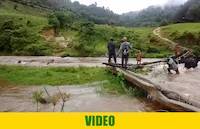 Cattle has to pass the river just as always. There is no adequate bridge and it easily comes to animal abuse. We have to remember that we are just in front of the Bwindi Impenetrable Forest and it means end of civilization. Only gorillas and elephants and other larger or smaller animals may be found just 30 meters from this place straight to Congo.
Cattle has to pass the river just as always. There is no adequate bridge and it easily comes to animal abuse. We have to remember that we are just in front of the Bwindi Impenetrable Forest and it means end of civilization. Only gorillas and elephants and other larger or smaller animals may be found just 30 meters from this place straight to Congo. - 2020-05-02: Video for Andrea from Italy
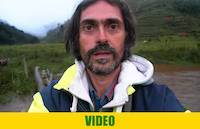 This video shows how we were passing the river. We heard of people dying in this river although it is very shallow. Our assistant once saved a person from Rwanda who fell into river. The most important loss for that person was his mobile phone. The fact that he was saved and that he could get seriously injured or worse, he did not considered. This is gold bearing river.
This video shows how we were passing the river. We heard of people dying in this river although it is very shallow. Our assistant once saved a person from Rwanda who fell into river. The most important loss for that person was his mobile phone. The fact that he was saved and that he could get seriously injured or worse, he did not considered. This is gold bearing river. - 2020-05-02: Demonstration of Villa Grazia by our Italian manager
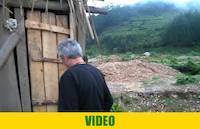 Villa Grazia is the cabin where our Italian manager was sleeping. Elephants were passing just by. Inside of the cabin there is tent for better protection from humidity and insects.
Villa Grazia is the cabin where our Italian manager was sleeping. Elephants were passing just by. Inside of the cabin there is tent for better protection from humidity and insects. - 2020-05-02: Surface mining pit covered with water
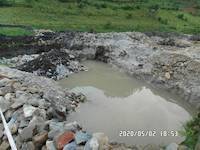 This pit is covered with water. It may be pumped out within few hours with water pump capacity of about 30 cubic meter per hour.
This pit is covered with water. It may be pumped out within few hours with water pump capacity of about 30 cubic meter per hour. - 2020-05-02: Demarcation of the mining site and latrine in background
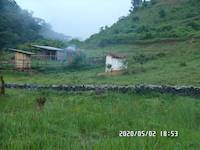 One may see demarcation of the mining site and latrine in background.
One may see demarcation of the mining site and latrine in background. - 2020-05-02: Welcome to Villa Grazia: The Ultimate Timber Retreat
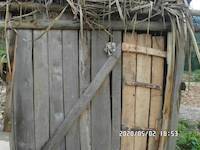 Villa Grazia was the cabin for our Italian manager. Site is located right in front of Bwindi Impenetrable Forest in Uganda.
Villa Grazia was the cabin for our Italian manager. Site is located right in front of Bwindi Impenetrable Forest in Uganda. - 2020-05-02: Living cabin in the middle of the mining site
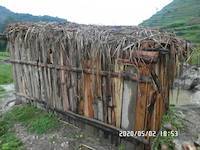 We had elephants passing nearby this cabin each in a while as they come out of the Bwindi Impenetrable Forest in Uganda and go to sweet potato fields for a meal.
We had elephants passing nearby this cabin each in a while as they come out of the Bwindi Impenetrable Forest in Uganda and go to sweet potato fields for a meal. - 2020-05-02: Living cabin in the middle of the mining site
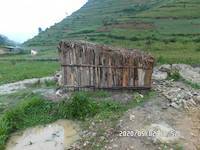 This cabin was used for sleeping by our manager from Italy. As we were just in front of Bwindi Impenetrable Forest we had elephants passing and sometimes touching the cabin during passage.
This cabin was used for sleeping by our manager from Italy. As we were just in front of Bwindi Impenetrable Forest we had elephants passing and sometimes touching the cabin during passage. - 2020-05-02: Mining pit covered with water with Bwindi Impenetrable Forest in background
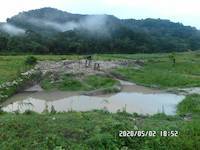 One may see our first mining pit on this site #1 just about 100 meters in front of the Bwindi Impenetrable Forest in Uganda in the district of Kisoro. Start Your Own Gold Mine program is available in every country where gold may be mined.
One may see our first mining pit on this site #1 just about 100 meters in front of the Bwindi Impenetrable Forest in Uganda in the district of Kisoro. Start Your Own Gold Mine program is available in every country where gold may be mined. - 2020-05-02: Tent and cabing, behind view
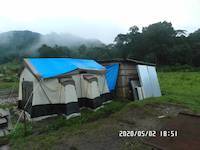 One may see that some parts of sluices we have been keeping outside of the cabin. By the law we had freedom to use the spaces anywhere around the cabin. Yet some of landlords complained and demanded money which we did not pay.
One may see that some parts of sluices we have been keeping outside of the cabin. By the law we had freedom to use the spaces anywhere around the cabin. Yet some of landlords complained and demanded money which we did not pay. - 2020-05-02: Main cabin and storage
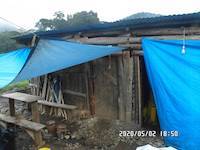 The cabin also serves as storage as in this left part of the cabin we have been accommodating a manager and apprentice plus all the shovels, gumboots, pickaxes, and other mining gear.
The cabin also serves as storage as in this left part of the cabin we have been accommodating a manager and apprentice plus all the shovels, gumboots, pickaxes, and other mining gear. - 2020-05-02: Main cabin protected by tarpaulin
 The main cabin has been used by managers. It is protected from rain by the blue tarpaulin on picture. All communication and energy resources are stored in the main cabin with the essential food, computers and gold prospecting gear.
The main cabin has been used by managers. It is protected from rain by the blue tarpaulin on picture. All communication and energy resources are stored in the main cabin with the essential food, computers and gold prospecting gear. - 2020-05-02: Large camping tent
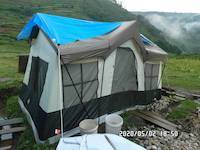 The large camping tent sometimes accommodated even 6 to 8 people. When set on right place it offers quite a good protection from humidity, rain and eventual wind.
The large camping tent sometimes accommodated even 6 to 8 people. When set on right place it offers quite a good protection from humidity, rain and eventual wind. - 2020-05-02: Water tanks used as storage for food and shower tent in background
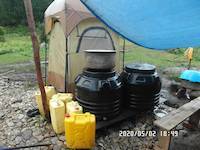 You may see water tanks on this picture. We are using them normally for water. In this camp we have been using them to store food and dishes. In background one can see our shower tent. The tent is very practical device allowing us to shower even surrounded by other people. This item is very recommended in the program Start Your Own Gold Mine.
You may see water tanks on this picture. We are using them normally for water. In this camp we have been using them to store food and dishes. In background one can see our shower tent. The tent is very practical device allowing us to shower even surrounded by other people. This item is very recommended in the program Start Your Own Gold Mine. - Meetings during Preliminary Site Assessment and Inspection in Busia, Uganda for gold mining startups
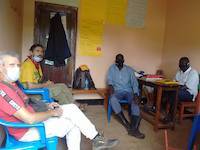 2020-09-28 - We are continually conducting meetings with gold mining site owners, and arranging appointments and conducting Preliminary Site Assessment and Inspection to determine in a quick manner how small scale gold mining activities may be improved. East African small scale gold mining industry will be good opportunity for investments for long term.
2020-09-28 - We are continually conducting meetings with gold mining site owners, and arranging appointments and conducting Preliminary Site Assessment and Inspection to determine in a quick manner how small scale gold mining activities may be improved. East African small scale gold mining industry will be good opportunity for investments for long term. - How to chat with Start Your Own Gold Mine staff members?
 We are using the Extensible Messaging and Presence Protocol (XMPP) as our main and private communication protocol. It enables near-real-time chat or messaging with exchange of files, images, data and geographical locations between our staff members. Set up your software on any mobile device or any operatin system and you will be soon ready to go to chat with us.
We are using the Extensible Messaging and Presence Protocol (XMPP) as our main and private communication protocol. It enables near-real-time chat or messaging with exchange of files, images, data and geographical locations between our staff members. Set up your software on any mobile device or any operatin system and you will be soon ready to go to chat with us. - 2020-01-18 Day of gold prospecting from Kampala, Uganda and 500 km to the West
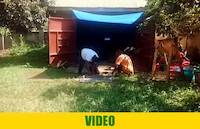 This was the day of gold prospecting straight from Kampala, Uganda and
then 500 km to the west. We arrived to the place which we are not
revealing at this place. Gold was confirmed several times on the first
gradient. That means after verbal gold prospecting we are arriving to
location and panning or making reports. On this location we found area
without license that can be licensed by us. It offers opportunity for
quick gold mining.
This was the day of gold prospecting straight from Kampala, Uganda and
then 500 km to the west. We arrived to the place which we are not
revealing at this place. Gold was confirmed several times on the first
gradient. That means after verbal gold prospecting we are arriving to
location and panning or making reports. On this location we found area
without license that can be licensed by us. It offers opportunity for
quick gold mining. - 2.47 grams of the gold on the balance scale
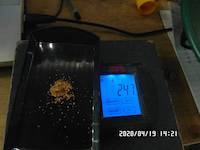 This is my other balance scale that measures up to 300 grams and is
very accurate. It cannot measure small particles less than 0.20 grams.
This is my other balance scale that measures up to 300 grams and is
very accurate. It cannot measure small particles less than 0.20 grams. - 0.23 grams of gold recovered from concentrate after the sluice run
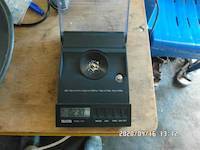 This is 0.23 grams of gold that we have recovered from concentrate
after the sluice run.
We are satisfied that our medium field prospecting sluice is not
losing any gold particles. The situation "not to lose" gold particles
is specific to this location, the particle shapes and sizes. If gold
particles would be smaller, we would need to utilize better special
methods. While we have almost 95% of gold particles that belong to
medium gold size group, we recover all gold that is present in the
excavated soil.
This is 0.23 grams of gold that we have recovered from concentrate
after the sluice run.
We are satisfied that our medium field prospecting sluice is not
losing any gold particles. The situation "not to lose" gold particles
is specific to this location, the particle shapes and sizes. If gold
particles would be smaller, we would need to utilize better special
methods. While we have almost 95% of gold particles that belong to
medium gold size group, we recover all gold that is present in the
excavated soil. - Gold Nugget Weighing 8.048 Grams
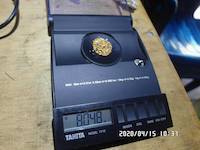 Mining area from April 2020 is yielding with gold at all times.
Mining area from April 2020 is yielding with gold at all times. - Gold Particles: 0.144 Grams on balance scale
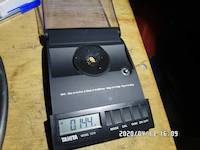 This is how it looks like when gold is measured.
This is how it looks like when gold is measured. - 1.068 grams of natural gold nuggets on the balance scale
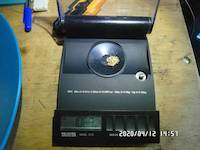 Nice natural gold particles on the scale.
Nice natural gold particles on the scale. - Natural Gold Nugget 2.4 Grams On Balance Scale
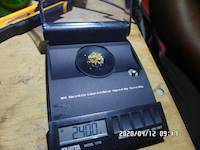 This is alluvial gold, natural gold nuggets on the balance scale.
This is alluvial gold, natural gold nuggets on the balance scale. - 0.062 grams of gold on the balance scale
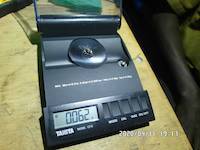 We observe particles of gold on the balance scale.
We observe particles of gold on the balance scale. - 0.214 grams of gold of natural gold particles on the balance scale
 We observe gold particles on the balance scale, we measure the gold and verify its values, this way miner gets the ability to conduct field assays.
We observe gold particles on the balance scale, we measure the gold and verify its values, this way miner gets the ability to conduct field assays. - 0.12 grams of gold on the balance scale
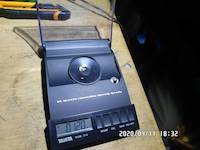 Observation of gold sizes and weights help the miner to determine better areas or estimate values in small scale mining.
Observation of gold sizes and weights help the miner to determine better areas or estimate values in small scale mining. - 0.078 grams of gold on the balance scale
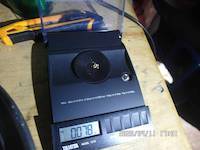 This is how much gold one needs to reach 0.078 grams. Observations of quantity of gold and its weight and value is a process that helps the miner determine easier good gold bearing areas.
This is how much gold one needs to reach 0.078 grams. Observations of quantity of gold and its weight and value is a process that helps the miner determine easier good gold bearing areas. - 0.204 grams of natural gold particles on the balance scale
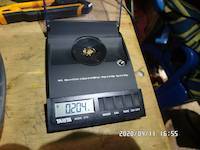 The balance scale is very precise, it is however limited to 10 grams
of precious stones or gold, or anything else.
The balance scale is very precise, it is however limited to 10 grams
of precious stones or gold, or anything else. - 0.008 grams of natural gold particles on the balance scale
 This is 0.008 grams of natural gold particles on the balance scale.
This is 0.008 grams of natural gold particles on the balance scale. - Purchase of 0.204 grams of natural gold nuggets in the area of Rubuguri town, district of Kisoro, Uganda
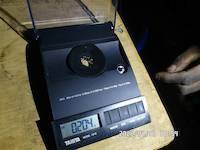 Purchase of small gold quantities develops our relations to village miners and our knowledge of the gold.
Purchase of small gold quantities develops our relations to village miners and our knowledge of the gold. - Purchase of 0.552 grams of natural gold nuggets in the area of Rubuguri town, district of Kisoro, Uganda
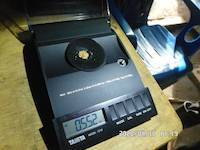 Purchase of small gold quantities develops our relations to village miners and our knowledge of the gold.
Purchase of small gold quantities develops our relations to village miners and our knowledge of the gold. - That is how 1.28 grams of gold look like on the balance scale
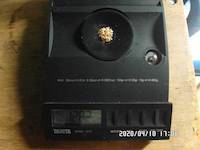 Purchase of small gold quantities develops our relations to village miners and our knowledge of the gold.
Purchase of small gold quantities develops our relations to village miners and our knowledge of the gold. - 1.28 grams of gold in the gold pan
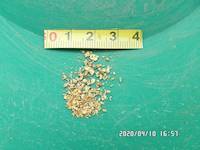 These final gold particles have been cleaned after run of the sluice in the valley of Katojo, village Nyamatsinda, area of Rubuguri town, district of Kisoro, Uganda, during our gold prospecting and exploration project from February 2020. Particles show that they have been kicked many times by rocks and boulders and that their origin is not this place, not here where they are found.
These final gold particles have been cleaned after run of the sluice in the valley of Katojo, village Nyamatsinda, area of Rubuguri town, district of Kisoro, Uganda, during our gold prospecting and exploration project from February 2020. Particles show that they have been kicked many times by rocks and boulders and that their origin is not this place, not here where they are found. - Gold nuggets in the gold pan
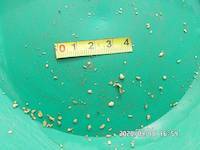 These final gold particles have been cleaned after run of the sluice in the valley of Katojo, village Nyamatsinda, area of Rubuguri town, district of Kisoro, Uganda, during our gold prospecting and exploration project from February 2020. Particles show that they have been kicked many times by rocks and boulders and that their origin is not this place, not here where they are found.
These final gold particles have been cleaned after run of the sluice in the valley of Katojo, village Nyamatsinda, area of Rubuguri town, district of Kisoro, Uganda, during our gold prospecting and exploration project from February 2020. Particles show that they have been kicked many times by rocks and boulders and that their origin is not this place, not here where they are found. - Natural gold nuggets from Uganda
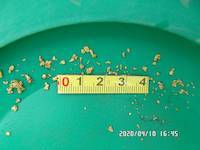 These final gold particles have been cleaned after run of the sluice in the valley of Katojo, village Nyamatsinda, area of Rubuguri town, district of Kisoro, Uganda, during our gold prospecting and exploration project from February 2020. Particles show that they have been kicked many times by rocks and boulders and that their origin is not this place, not here where they are found.
These final gold particles have been cleaned after run of the sluice in the valley of Katojo, village Nyamatsinda, area of Rubuguri town, district of Kisoro, Uganda, during our gold prospecting and exploration project from February 2020. Particles show that they have been kicked many times by rocks and boulders and that their origin is not this place, not here where they are found. - Final gold recovery, valley of Katojo, village Nyamatsinda, area of Rubuguri town, district of Kisoro, Uganda
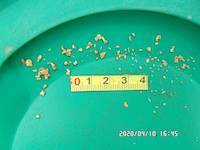 These final gold particles have been cleaned after run of the sluice in the valley of Katojo, village Nyamatsinda, area of Rubuguri town, district of Kisoro, Uganda, during our gold prospecting and exploration project from February 2020. Particles show that they have been kicked many times by rocks and boulders and that their origin is not this place, not here where they are found.
These final gold particles have been cleaned after run of the sluice in the valley of Katojo, village Nyamatsinda, area of Rubuguri town, district of Kisoro, Uganda, during our gold prospecting and exploration project from February 2020. Particles show that they have been kicked many times by rocks and boulders and that their origin is not this place, not here where they are found. - Final gold particles from the valley of Katojo, village Nyamatsinda, area of Rubuguri town, district of Kisoro, Uganda
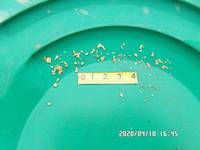 These final gold particles have been cleaned after run of the sluice in the valley of Katojo, village Nyamatsinda, area of Rubuguri town, district of Kisoro, Uganda, during our gold prospecting and exploration project from February 2020. Particles show that they have been kicked many times by rocks and boulders and that their origin is not this place, not here where they are found.
These final gold particles have been cleaned after run of the sluice in the valley of Katojo, village Nyamatsinda, area of Rubuguri town, district of Kisoro, Uganda, during our gold prospecting and exploration project from February 2020. Particles show that they have been kicked many times by rocks and boulders and that their origin is not this place, not here where they are found. - Purchase of 0.302 grams of natural gold nuggets in the area of Rubuguri, district of Kisoro, Uganda
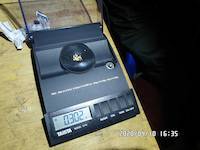 We purchase gold in the bushes of Uganda from village miners, as this way we discover gold locations and gain new relations during the exploration stage.
We purchase gold in the bushes of Uganda from village miners, as this way we discover gold locations and gain new relations during the exploration stage. - Measuring gold particle sizes tells us this is 0.012 grams gold nugget with length of about 2 mm
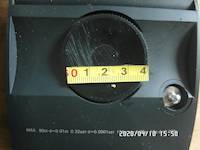 We measured the gold particle sizes so to easier estimate the outcomes during field assaying. With this big gold particles of 2-3 mm in its length, we know how many of such similar nuggets we need to one gram of gold. Estimates and learning of field assaying process is part of the program Start Your Own Gold Mine. Without practical experience on the field, person may be confused on how to estimate alluvial deposits.
We measured the gold particle sizes so to easier estimate the outcomes during field assaying. With this big gold particles of 2-3 mm in its length, we know how many of such similar nuggets we need to one gram of gold. Estimates and learning of field assaying process is part of the program Start Your Own Gold Mine. Without practical experience on the field, person may be confused on how to estimate alluvial deposits. - Measuring gold particle sizes tells us this is 0.012 grams gold nugget with length of about 2 mm
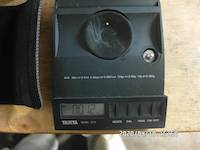 We measured the gold particle sizes so to easier estimate the outcomes during field assaying. With this big gold particles of 2-3 mm in its length, we know how many of such similar nuggets we need to one gram of gold. Estimates and learning of field assaying process is part of the program Start Your Own Gold Mine. Without practical experience on the field, person may be confused on how to estimate alluvial deposits.
We measured the gold particle sizes so to easier estimate the outcomes during field assaying. With this big gold particles of 2-3 mm in its length, we know how many of such similar nuggets we need to one gram of gold. Estimates and learning of field assaying process is part of the program Start Your Own Gold Mine. Without practical experience on the field, person may be confused on how to estimate alluvial deposits. - Measuring gold particle sizes tells us this is 0.02 grams gold nugget with length of about 2-3 mm
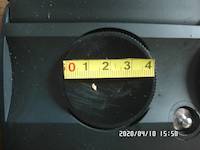 We measured the gold particle sizes so to easier estimate the outcomes during field assaying. With this big gold particles of 2-3 mm in its length, we know how many of such similar nuggets we need to one gram of gold. Estimates and learning of field assaying process is part of the program Start Your Own Gold Mine. Without practical experience on the field, person may be confused on how to estimate alluvial deposits.
We measured the gold particle sizes so to easier estimate the outcomes during field assaying. With this big gold particles of 2-3 mm in its length, we know how many of such similar nuggets we need to one gram of gold. Estimates and learning of field assaying process is part of the program Start Your Own Gold Mine. Without practical experience on the field, person may be confused on how to estimate alluvial deposits. - Measuring gold particle sizes tells us this is 0.02 grams gold nugget with length of about 2-3 mm
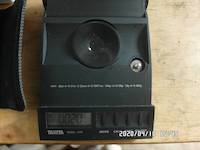 We measured the gold particle sizes so to easier estimate the outcomes during field assaying. With this big gold particles of 2-3 mm in its length, we know how many of such similar nuggets we need to one gram of gold. Estimates and learning of field assaying process is part of the program Start Your Own Gold Mine. Without practical experience on the field, person may be confused on how to estimate alluvial deposits.
We measured the gold particle sizes so to easier estimate the outcomes during field assaying. With this big gold particles of 2-3 mm in its length, we know how many of such similar nuggets we need to one gram of gold. Estimates and learning of field assaying process is part of the program Start Your Own Gold Mine. Without practical experience on the field, person may be confused on how to estimate alluvial deposits. - Measuring gold particle sizes tells us this is 0.032 grams gold nugget with length of about 3 mm
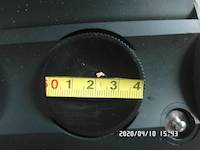 We measured the gold particle sizes so to easier estimate the outcomes during field assaying. With this big gold particles of 2-3 mm in its length, we know that we need at least 30+ such particles to reach one gram. Estimates and learning of field assaying process is part of the program Start Your Own Gold Mine. Without practical experience on the field, person may be confused on how to estimate alluvial deposits.
We measured the gold particle sizes so to easier estimate the outcomes during field assaying. With this big gold particles of 2-3 mm in its length, we know that we need at least 30+ such particles to reach one gram. Estimates and learning of field assaying process is part of the program Start Your Own Gold Mine. Without practical experience on the field, person may be confused on how to estimate alluvial deposits. - Measuring gold particle sizes tells us this is 0.032 grams gold nugget
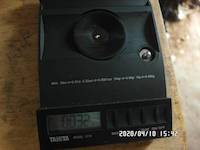 We measured the gold particle sizes so to easier estimate the outcomes during field assaying. With this big gold particles of 2-3 mm in its length, we know that we need at least 30+ such particles to reach one gram. Estimates and learning of field assaying process is part of the program Start Your Own Gold Mine. Without practical experience on the field, person may be confused on how to estimate alluvial deposits.
We measured the gold particle sizes so to easier estimate the outcomes during field assaying. With this big gold particles of 2-3 mm in its length, we know that we need at least 30+ such particles to reach one gram. Estimates and learning of field assaying process is part of the program Start Your Own Gold Mine. Without practical experience on the field, person may be confused on how to estimate alluvial deposits. - Purchase of 0.028 grams in Katojo, Rubuguri, district of Kisoro, Uganda
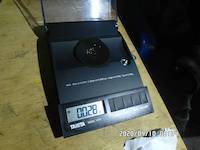 We purchased some small gold particles, about 0.028 grams of natural small gold nuggets in the area of Rubugur, district of Kisoro in Uganda.
We purchased some small gold particles, about 0.028 grams of natural small gold nuggets in the area of Rubugur, district of Kisoro in Uganda. - Purchase of 1.786 grams of natural gold nuggets in the area of Rubuguri, district of Kisoro, Uganda
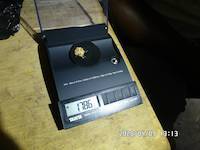 Purchase of small gold quantities develops our relations to village miners and our knowledge of the gold.
Purchase of small gold quantities develops our relations to village miners and our knowledge of the gold. - Purchase of 0.026 grams of natural gold nuggets in the gold mining area of Rubuguri, District Kisoro, Uganda
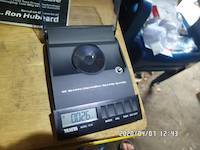 We purchase this gold as described for some amount of 1 dollar as of April 2020, the balance scale is very precise and can help us in better estimation of gold grade at alluvial gold mining terrains.
We purchase this gold as described for some amount of 1 dollar as of April 2020, the balance scale is very precise and can help us in better estimation of gold grade at alluvial gold mining terrains. - Purchase of 0.02 grams of gold in the area of Rubuguri, district of Kisoro, Uganda
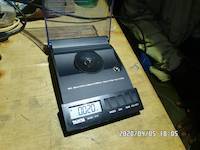 We purchase even smallest quantities of gold in the area of Rubuguri, district of Kisoro, Uganda
We purchase even smallest quantities of gold in the area of Rubuguri, district of Kisoro, Uganda - Purchase of 0.074 grams of natural gold nugggets
 Local village miners are sometimes asking us to buy gold, and we do so gladly, we pay for even smallest and largest quantities of gold.
Local village miners are sometimes asking us to buy gold, and we do so gladly, we pay for even smallest and largest quantities of gold. - Purchase of 0.104 grams of natural gold nuggets in the area of Rubuguri, district of Kisoro in Uganda.
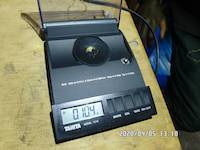 We are purchasing natural gold nuggets and use precise balance scales.
We are purchasing natural gold nuggets and use precise balance scales. - Purchase of 0.816 grams of natural gold nuggets in the area of Rubuguri, district Kisoro, Uganda
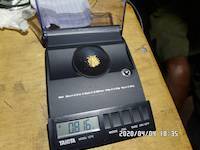 We have been purchasing gold from village miners so to become aware of locations where gold can be mined and to understand more about gold particle shapes and sizes. Angular shapes indicate to us sources of gold or nearby source locations.
We have been purchasing gold from village miners so to become aware of locations where gold can be mined and to understand more about gold particle shapes and sizes. Angular shapes indicate to us sources of gold or nearby source locations. - Purchase of 0.728 grams of gold in Rubuguri, district Kisoro, Uganda
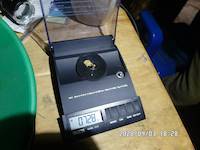 We have been purchasing natural gold nuggets in the area of Rubuguri, district Kisoro in Uganda.
We have been purchasing natural gold nuggets in the area of Rubuguri, district Kisoro in Uganda. - Purchase of 0.232 grams of pure gold nuggets in gold mining area of Rubuguri, Kisoro, Uganda
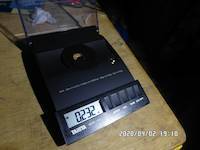 We have purchased here 0.232 grams of gold, pure and natural gold nuggets, directly from local miners in the area of Rubuguri, Kisoro, Uganda
We have purchased here 0.232 grams of gold, pure and natural gold nuggets, directly from local miners in the area of Rubuguri, Kisoro, Uganda - Purchase of 2.244 grams of natural gold nuggets from the area of Rubuguri, Kisoro, Uganda
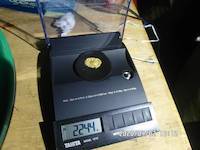 Natural gold nuggets are very particular in their shapes. We purchased gold during the exploration and prospecting with gold mining activities in the area of Rubuguri, Kisoro, Uganda.
Natural gold nuggets are very particular in their shapes. We purchased gold during the exploration and prospecting with gold mining activities in the area of Rubuguri, Kisoro, Uganda. - Purchase of 0.914 grams in the area of Rubuguri, Kisoro, Uganda
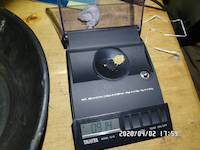 Small gold is purchased from village miners with the purpose of inspection and understanding of the gold particles and their formation in the particular area.
Small gold is purchased from village miners with the purpose of inspection and understanding of the gold particles and their formation in the particular area. - 2020-03-30, 0.294 grams of natural gold nuggets on the balance scale
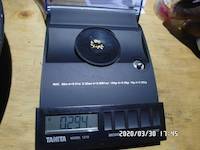 Kisoro district, Uganda. During our exploration project close to Rubuguri town, we encountered a single person who sold us 0.294 grams of natural gold nuggets. 💛💰💡
Kisoro district, Uganda. During our exploration project close to Rubuguri town, we encountered a single person who sold us 0.294 grams of natural gold nuggets. 💛💰💡
- 2020-03-30, 0.060 grams of natural gold nuggets on the balance scale
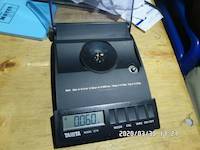
- 2020-03-30, size of the 0.02 grams natural gold nugget on the balance scale
 During our exploration project in Kisoro district, Uganda, close to Rubuguri town, we discovered that a single person was trading gold. However, there were many others who also sold us gold on the same day, making it a bustling gold trade scene. 💰💛
During our exploration project in Kisoro district, Uganda, close to Rubuguri town, we discovered that a single person was trading gold. However, there were many others who also sold us gold on the same day, making it a bustling gold trade scene. 💰💛
- 2020-03-30, 0.02 grams natural gold nugget on the balance scale
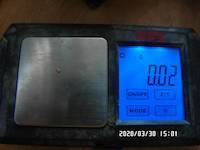
- 2020-03-30, 0.070 grams of natural gold nuggets on the balance scale
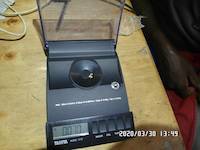
- 2020-03-30, 0.078 grams of natural gold nuggets on the balance scale
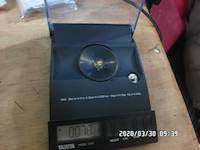
- 2020-03-30, 0.046 grams of natural gold nuggets on the balance scale
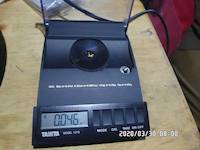
- 2020-03-29, 0.296 grams of natural gold nuggets on the balance scale
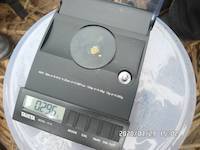
- 2020-03-28, 0.024 grams of natural gold nuggets on the balance scale
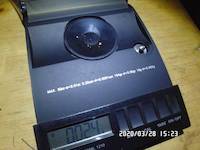 During our exploration project in Kisoro district, Uganda, close to Rubuguri town, we encountered a single person who sold us 0.024 grams of natural gold nuggets on the balance scale. Meanwhile, several others also sold us gold on the same day, making it a bustling gold trade hub. 💰💛
During our exploration project in Kisoro district, Uganda, close to Rubuguri town, we encountered a single person who sold us 0.024 grams of natural gold nuggets on the balance scale. Meanwhile, several others also sold us gold on the same day, making it a bustling gold trade hub. 💰💛
- 2020-03-28, 0.058 grams of natural gold nuggets on the balance scale
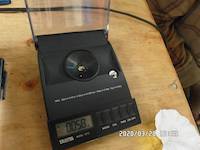 Gold purchase and trade in Kisoro district, Uganda, during our exploration project close to Rubuguri town, was a significant activity. On this day In 2020, we purchased a lot of gold, and one transaction with 0.058 grams of natural gold nuggets on the balance scale is shown here on picture.
Gold purchase and trade in Kisoro district, Uganda, during our exploration project close to Rubuguri town, was a significant activity. On this day In 2020, we purchased a lot of gold, and one transaction with 0.058 grams of natural gold nuggets on the balance scale is shown here on picture.
- 2020-03-28, 0.060 grams of natural gold nuggets on the balance scale
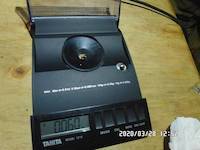
- 2020-03-28, 1.582 grams of natural gold nuggets on the balance scale
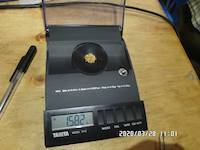
- 2020-03-28, 2.236 grams of natural gold nuggets on the balance scale

- 2020-03-28, 5.924 grams of natural gold nuggets on the balance scale
 The gold trade in Kisoro district, Uganda, during our exploration project close to Rubuguri town, was quite an interesting experience. We encountered a single person who was selling us gold, but there were many others who also sold us gold in a single day. The total amount of gold we purchased from these sellers was 5.924 grams of natural gold nuggets.
The gold trade in Kisoro district, Uganda, during our exploration project close to Rubuguri town, was quite an interesting experience. We encountered a single person who was selling us gold, but there were many others who also sold us gold in a single day. The total amount of gold we purchased from these sellers was 5.924 grams of natural gold nuggets.
- 2020-03-28, 5.738 grams of natural gold nuggets on the balance scale
 The gold trade in Kisoro district, Uganda, was quite lively during our exploration project near Rubuguri town. A single person was able to sell us 5.738 grams of natural gold nuggets in a single day, while many others also sold us gold in large quantities.
The gold trade in Kisoro district, Uganda, was quite lively during our exploration project near Rubuguri town. A single person was able to sell us 5.738 grams of natural gold nuggets in a single day, while many others also sold us gold in large quantities. - 2020-03-26, 0.52 grams of natural gold nuggets on the balance scale
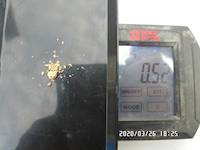
- 2020-03-25, 0.18 grams of natural gold nuggets on the balance scale
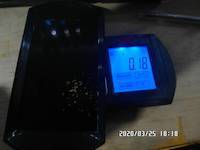
- 2020-03-25, 0.12 grams of natural gold nuggets on the balance scale
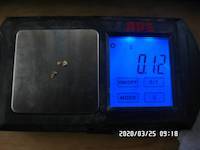
- 2020-03-20, 0.086 grams of natural gold nuggets on the balance scale
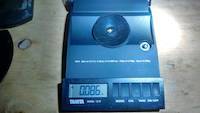 The gold trade in Kisoro district, Uganda, was quite lively during our exploration project near Rubuguri town. A single person was able to sell us 0.086 grams of natural gold nuggets on the balance scale, while many others were also selling gold to us in a single day.
The gold trade in Kisoro district, Uganda, was quite lively during our exploration project near Rubuguri town. A single person was able to sell us 0.086 grams of natural gold nuggets on the balance scale, while many others were also selling gold to us in a single day.
- 2020-03-15, 5.39 grams of natural gold nuggets on the balance scale
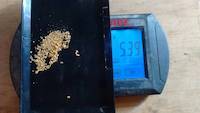 The gold trade in Kisoro district, Uganda, during our exploration project close to Rubuguri town, was quite interesting. We encountered a single person who sold us 5.39 grams of natural gold nuggets on the balance scale. This was just one of many instances where others sold us gold as well in a single day.
The gold trade in Kisoro district, Uganda, during our exploration project close to Rubuguri town, was quite interesting. We encountered a single person who sold us 5.39 grams of natural gold nuggets on the balance scale. This was just one of many instances where others sold us gold as well in a single day.
- March 9th 2020, exactly 2 grams of natural gold nuggets on the balance scale
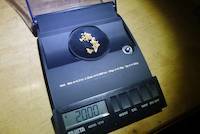
- March 9th 2020, more than 10 grams on the balance scale
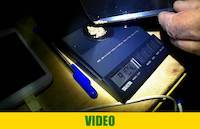
- March 9th 2020, transfer of gold onto the precise balance scale
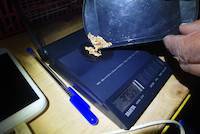
- March 9th 2020, 2.316 grams of natural gold nuggets on the balance scale
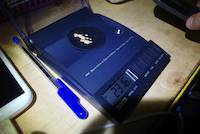 During our exploration project in Kisoro district, Uganda, we discovered that gold trade was prevalent in the area, particularly near Rubuguri town. On March 9th, 2020, we weighed 2.316 grams of natural gold nuggets on a balance scale, from single person, and there were so many in a day.
During our exploration project in Kisoro district, Uganda, we discovered that gold trade was prevalent in the area, particularly near Rubuguri town. On March 9th, 2020, we weighed 2.316 grams of natural gold nuggets on a balance scale, from single person, and there were so many in a day. - March 9th 2020, about 10 grams of natural gold nuggets on the desk
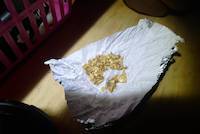
- March 9th 2020, natural gold nuggets on the desk
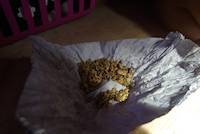
- March 9th 2020, natural gold nuggets on the balance scale
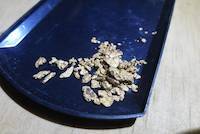 This is how natural gold nuggets from alluvial gold mining operations look like.
This is how natural gold nuggets from alluvial gold mining operations look like. - Natural gold nuggets on the balance scale, year 2020, March and April
This is collection of various measurements of natural gold nuggets on the balance scale from the year 2020, from March and April - February 28th 2020, Wheelbarrows, shoveling and opening of alluvial mining pits
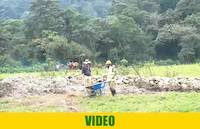
- February 28th 2020, Opening of the alluvial pit #1
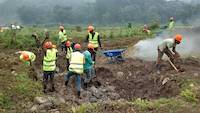 On February 28th, 2020, "alluvial pit #1" was opened as part of a systematic exploration program for alluvial (placer) gold. Pitting involves digging small holes in suspected areas using hand tools or machinery to collect samples from different depths and locations to determine the presence of gold. Trenching is similar but on a larger scale, involving longer trenches dug with heavy equipment like excavators to understand broader distribution patterns of potential deposits before deciding further mining operations are warranted.
On February 28th, 2020, "alluvial pit #1" was opened as part of a systematic exploration program for alluvial (placer) gold. Pitting involves digging small holes in suspected areas using hand tools or machinery to collect samples from different depths and locations to determine the presence of gold. Trenching is similar but on a larger scale, involving longer trenches dug with heavy equipment like excavators to understand broader distribution patterns of potential deposits before deciding further mining operations are warranted. - February 28th 2020, There is fog and there is smoke, without smoke, flies are biting our workers
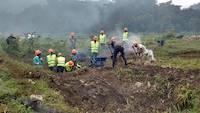 The fog is there on picture but also the smoke. Miners are preparing
smoke to deter small flies that are biting our heads, legs, hands.
The fog is there on picture but also the smoke. Miners are preparing
smoke to deter small flies that are biting our heads, legs, hands. - February 28th 2020, Together with mineral police protection in Kisoro, Uganda
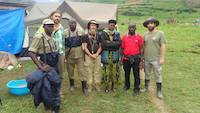 Mineral police protection officers visited our site and made sure of legalities.
Mineral police protection officers visited our site and made sure of legalities. - February 27th 2020, Our cabin on the mining site, too short a video
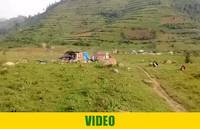
- February 27th 2020, Our cabin on the mining site
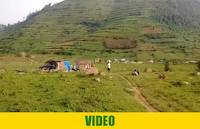
- February 27th 2020, On motorcycle through the area of Rubuguri in Uganda
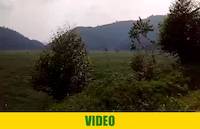 Kisoro District is a rural area in Uganda, renowned for its rich gold deposits due to the numerous artisanal gold production that operate there.
Kisoro District is a rural area in Uganda, renowned for its rich gold deposits due to the numerous artisanal gold production that operate there. - February 27th 2020, Work on the gold mining site
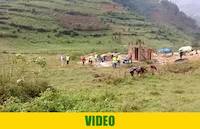
- February 27th 2020, Action, just the first day on the mining site
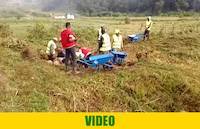
- February 27th 2020, There is action the first day on the mining site

- February 27th 2020, View on our mining site from the nearby hill
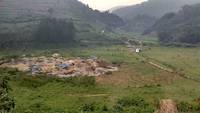 Gorilla Valley Lodge is across this valley. Our mining site is on the right part of the picture.
Gorilla Valley Lodge is across this valley. Our mining site is on the right part of the picture. - February 27th 2020, View on our mining site
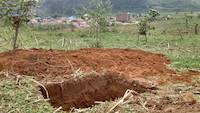
- February 27th 2020, Excavation of the pit for the latrine
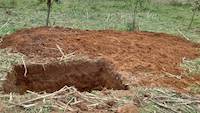
- February 27th 2020, Preparation of the latrine
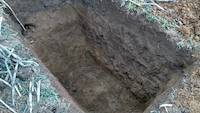 Latrine is a public toilet in a military area, word is used for bush areas too.
Latrine is a public toilet in a military area, word is used for bush areas too. - February 27th 2020, Rock demarcation on the mining site
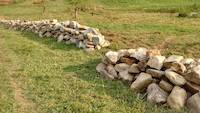 We have been using rocks to easily demarcate the mining site.
We have been using rocks to easily demarcate the mining site. - February 27th 2020, Using rocks to demarcate the mining site in Uganda
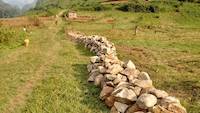 The free rocks have been used to demarcate the mining site. After few
days of rain, rocks are very clean and can be inspected for gold and
other minerals.
The free rocks have been used to demarcate the mining site. After few
days of rain, rocks are very clean and can be inspected for gold and
other minerals. - February 27th 2020, Demarcation of the site with stone
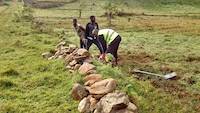 The stones have been used to demarcate our intended area for the mining.
The stones have been used to demarcate our intended area for the mining. - February 27th 2020, First day on the new mining site in Uganda
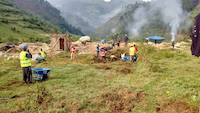 This was February 27th 2020, and the first day on the new mining site,
as you can see we are in full activity, digging the pits and
demarcating the site.
This was February 27th 2020, and the first day on the new mining site,
as you can see we are in full activity, digging the pits and
demarcating the site. - Gold mining locations in Kisoro district, Uganda
Our company in Uganda have been exploring and mining gold for quite some time. We have began our business back in 2017, produced a lot of concentrate and then after some interruptions we have continued working from the end 2019 and begin 2020. We started our work in 2020 in the district of Kisoro in Uganda, nearby Rwanda and the Democratic Republic of Congo. Our sites are located nearby Bwindi Impenetrable Forest, the first site is just nearby the Gorilla Valley Lodge which we highly recommend to our clients and associates. Elephants and gorilla are regularly coming out of the forest and sometimes coming straight onto us. - February 26th 2020, Transport of gold mining equipment over the river
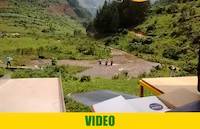
- February 26th 2020, The view on the valley nearby the Bwindi Impenetrable Forest
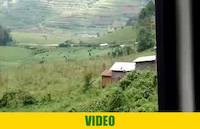
- February 26th 2020, Very slippery road on the way to the gold mining site
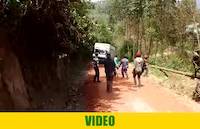
- February 26th 2020, We had to somehow conquer the muddy slippery road
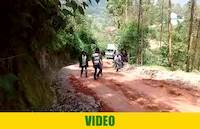
- February 26th 2020, Muddy soil on the road is making difficulties for our truck
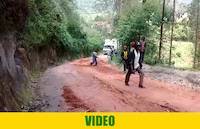
- February 26th 2020, Difficulties short before the arrival to the mining site

- February 26th 2020, The road to the Bwindi Impenetrable Forest
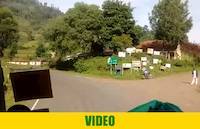 There are many lodges for gorilla safari on the road to the Bwindi Impenetrable Forest.
There are many lodges for gorilla safari on the road to the Bwindi Impenetrable Forest. - February 26th 2020, Hills in Kisoro district, Uganda
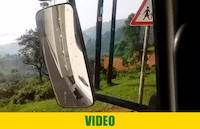
- February 26th 2020, Arrival to mining site
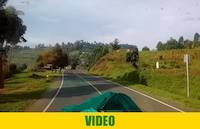 The travel was long, about 500 kilometers to the mining site.
The travel was long, about 500 kilometers to the mining site. - February 26th 2020, Preparing the cabin for life and business
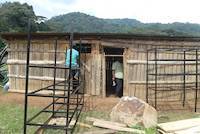
- February 26th 2020, Apprentice in the program Start Your Own Gold Mine
 Work at the cabin.
Work at the cabin. - February 26th 2020, Apprentice in the program Start Your Own Gold Mine
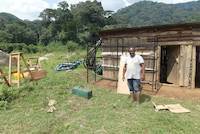 The apprentice from Nigeria is coping very well with the orientation in the camp area.
The apprentice from Nigeria is coping very well with the orientation in the camp area. - February 26th 2020, The cabin on the mining site
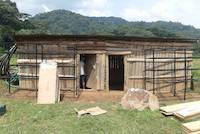 One can see the cabin on the mining site, used for accommodation and storage. Shelves are used to stow more equipment in a nice manner.
One can see the cabin on the mining site, used for accommodation and storage. Shelves are used to stow more equipment in a nice manner. - February 26th 2020, Transport of grizzly bars over the timber bridge
 Workers transporting grizzly bars over the river.
Workers transporting grizzly bars over the river. - February 26th 2020, supervisor Gaetano on mining site
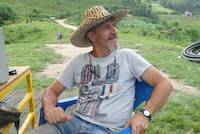 Gaetano is a highly experienced and proficient mining site supervisor who possesses a diverse range of skills in gold, diamonds, and jewellery production. With extensive knowledge and expertise in the mining industry, Gaetano demonstrates exceptional leadership and organizational abilities, ensuring smooth operations at mining sites under his supervision. His proficiency in gold mining techniques, diamond evaluation, and jewellery production processes enables him to effectively oversee all aspects of these operations, from extraction and processing to the final creation of exquisite jewellery pieces. Gaetano's comprehensive skill set, combined with his dedication and passion for the industry, make him an invaluable asset to any mining project or jewellery production endeavor.
Gaetano is a highly experienced and proficient mining site supervisor who possesses a diverse range of skills in gold, diamonds, and jewellery production. With extensive knowledge and expertise in the mining industry, Gaetano demonstrates exceptional leadership and organizational abilities, ensuring smooth operations at mining sites under his supervision. His proficiency in gold mining techniques, diamond evaluation, and jewellery production processes enables him to effectively oversee all aspects of these operations, from extraction and processing to the final creation of exquisite jewellery pieces. Gaetano's comprehensive skill set, combined with his dedication and passion for the industry, make him an invaluable asset to any mining project or jewellery production endeavor. - Apprentice and client from Italy in the program Start Your Own Gold Mine
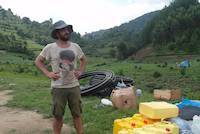 Our clients who participate on ground are apprentices in the program Start Your Own Gold Mine, they learn so many things. Representatives of clients on ground are also apprentices including close executives.
Our clients who participate on ground are apprentices in the program Start Your Own Gold Mine, they learn so many things. Representatives of clients on ground are also apprentices including close executives. - February 26th 2020, supervisor Gaetano before the final move to the mining site
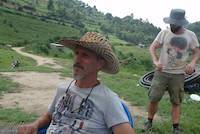 It requires guts for doing what we are doing. Mine site supervisor Gaetano is seemingly enjoying the time before the final transfer of equipment to the mining site.
It requires guts for doing what we are doing. Mine site supervisor Gaetano is seemingly enjoying the time before the final transfer of equipment to the mining site. - February 26th 2020, equipment transport over the timber bridge
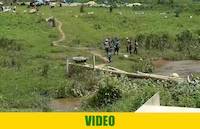 You may observe the timber bridge over the river Rohezanyinda. Our
people have transported all heavy equipment pieces without problem
over the very risky timber bridge.
You may observe the timber bridge over the river Rohezanyinda. Our
people have transported all heavy equipment pieces without problem
over the very risky timber bridge. - The Elephant Bee Hive Project in Katojo, Rubuguri, district of Kisoro, Uganda
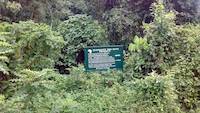 The Elephant Bee Hive Project was the idea to place the beehives as a
natural and live fence to deter elephants not to exit the Bwindi
Impenetrable Forest. This way, people's crops could be saved. However,
the idea is not practical, as many beehives were abandoned first by
their bees, and second by their maintainers, the project is not
functional, and requires skilled people to work. We have made our own
Elephant Defense Project and have informed people that they could
plant chilli pepper around the crops to deter elephants, further, we
informed rangers of the Uganda Wild Life Authority that they could
bringing elephants' dung from other places of the forest to deter them
to exit the forest in the night. The implementation alone requires
funding and investments. We can provide only the advice.
The Elephant Bee Hive Project was the idea to place the beehives as a
natural and live fence to deter elephants not to exit the Bwindi
Impenetrable Forest. This way, people's crops could be saved. However,
the idea is not practical, as many beehives were abandoned first by
their bees, and second by their maintainers, the project is not
functional, and requires skilled people to work. We have made our own
Elephant Defense Project and have informed people that they could
plant chilli pepper around the crops to deter elephants, further, we
informed rangers of the Uganda Wild Life Authority that they could
bringing elephants' dung from other places of the forest to deter them
to exit the forest in the night. The implementation alone requires
funding and investments. We can provide only the advice. - The day of travel to mining site in Kisoro, Uganda
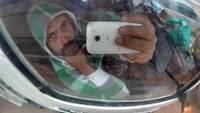 On this day we travelled to the new mining site, that is the area of Rubuguri in the district of Kisoro in Uganda. The suspension was in the air due to the road conditions and safety. We did arrive safe and well.
On this day we travelled to the new mining site, that is the area of Rubuguri in the district of Kisoro in Uganda. The suspension was in the air due to the road conditions and safety. We did arrive safe and well. - Heavy grizzly bars loaded into the truck before departure to the alluvial gold mining site in Uganda
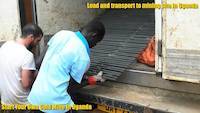 The heavy grizzly bars are loaded into the truck, four people can
carry one grizzly bar.
The heavy grizzly bars are loaded into the truck, four people can
carry one grizzly bar. - Gold prospecting equipment before the load and transport for the gold mining site in Uganda
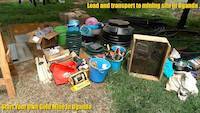 The simplest wooden feeder produced so much money for us in past, we
included it in this ride too, much of the smaller gold prospecting
equipment on this picture represent most important parts for gold
recovery on alluvial mining sites.
The simplest wooden feeder produced so much money for us in past, we
included it in this ride too, much of the smaller gold prospecting
equipment on this picture represent most important parts for gold
recovery on alluvial mining sites. - The truck ready to depart with our equipment to alluvial gold mining site in Uganda
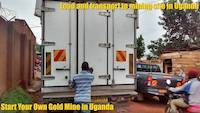 ## February 25th 2020
The truck is almost ready to depart to district of Kisoro, Uganda.
## February 25th 2020
The truck is almost ready to depart to district of Kisoro, Uganda. - Load and transport of equipment to alluvial gold mining site in Uganda
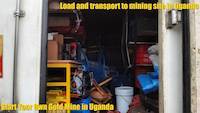 The truck was full of the equipment for the alluvial mining site. We
prepared enough equipment for three operations. Alluvial relates to
alluvium, we speak of clay or silt or gravel carried by rushing
streams and deposited where the stream slows down. Alluvial deposits
are most common in gold mining, especially in small scale gold mining.
It took about 8 hours to load the truck with all the equipment.
The truck was full of the equipment for the alluvial mining site. We
prepared enough equipment for three operations. Alluvial relates to
alluvium, we speak of clay or silt or gravel carried by rushing
streams and deposited where the stream slows down. Alluvial deposits
are most common in gold mining, especially in small scale gold mining.
It took about 8 hours to load the truck with all the equipment. - All about pickaxes in the program Start Your Own Gold Mine in East Africa
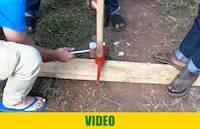 Here you may see all methods of preparation, handling and maintaining the pickaxes in the program Start Your Own Gold Mine that we conduct in East Africa. We are opening gold mines in Kenya, Uganda, Tanzania, Rwanda, and any other East African country such as Burundi, South Sudan and even in the neighboring Democratic Republic of Congo. We are zealous to get to the gold, forget the commercial series Gold Rush, we may often risk our lives, sometimes we are going deep into forest and jungle whenever necessary, just to get the gold. No fears of snakes or other circumstances that would not appeal to luxury life styles of Europe and North America.
Here you may see all methods of preparation, handling and maintaining the pickaxes in the program Start Your Own Gold Mine that we conduct in East Africa. We are opening gold mines in Kenya, Uganda, Tanzania, Rwanda, and any other East African country such as Burundi, South Sudan and even in the neighboring Democratic Republic of Congo. We are zealous to get to the gold, forget the commercial series Gold Rush, we may often risk our lives, sometimes we are going deep into forest and jungle whenever necessary, just to get the gold. No fears of snakes or other circumstances that would not appeal to luxury life styles of Europe and North America. - Apprentice in Start Your Own Gold Mine program and supervisor Gaetano mounting metal parts of pickaxes onto its handles
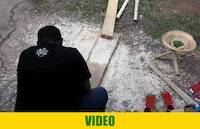 The quality of pickaxes in East Africa is terrible. They are sold in
parts, metal pickaxe part is sold separate from wooden handles and
neither the metal part nor the wooden handles are all the same, so
they have to be prepared and mounted together before any small scale
mining work can start.
This type of work took about two days to finish, without it, it would
not be possible to dig all the alluvial mining pits later in time.
The quality of pickaxes in East Africa is terrible. They are sold in
parts, metal pickaxe part is sold separate from wooden handles and
neither the metal part nor the wooden handles are all the same, so
they have to be prepared and mounted together before any small scale
mining work can start.
This type of work took about two days to finish, without it, it would
not be possible to dig all the alluvial mining pits later in time. - Method of mounting the metal part of the pickaxe onto its handle
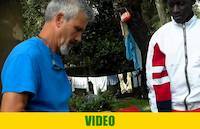 The quality of pickaxes in East Africa is terrible. They are sold in
parts, metal pickaxe part is sold separate from wooden handles and
neither the metal part nor the wooden handles are all the same, so
they have to be prepared and mounted together before any small scale
mining work can start.
The quality of pickaxes in East Africa is terrible. They are sold in
parts, metal pickaxe part is sold separate from wooden handles and
neither the metal part nor the wooden handles are all the same, so
they have to be prepared and mounted together before any small scale
mining work can start. - Method of mounting the metal part of the pickaxe onto its handle
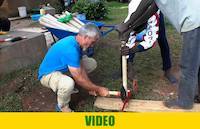 The quality of pickaxes in East Africa is terrible. They are sold in
parts, metal pickaxe part is sold separate from wooden handles and
neither the metal part nor the wooden handles are all the same, so
they have to be prepared and mounted together before any small scale
mining work can start.
The quality of pickaxes in East Africa is terrible. They are sold in
parts, metal pickaxe part is sold separate from wooden handles and
neither the metal part nor the wooden handles are all the same, so
they have to be prepared and mounted together before any small scale
mining work can start. - Mounting the metal parts of the pickaxe onto its handle in Kampala, Uganda
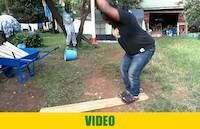 The quality of pickaxes in East Africa is terrible. They are sold in
parts, metal pickaxe part is sold separate from wooden handles and
neither the metal part nor the wooden handles are all the same, so
they have to be prepared and mounted together before any small scale
mining work can start.
We made sure that pickaxes do get its proper function.
The quality of pickaxes in East Africa is terrible. They are sold in
parts, metal pickaxe part is sold separate from wooden handles and
neither the metal part nor the wooden handles are all the same, so
they have to be prepared and mounted together before any small scale
mining work can start.
We made sure that pickaxes do get its proper function. - Apprentice in Start Your Own Gold Mine program practicing how to mount metal parts of the pickaxe onto its handles
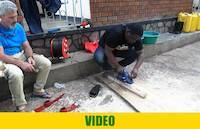 The quality of pickaxes in East Africa is terrible. They are sold in
parts, metal pickaxe part is sold separate from wooden handles and
neither the metal part nor the wooden handles are all the same, so
they have to be prepared and mounted together before any small scale
mining work can start.
The apprentice in Start Your Own Gold Mine program is learning and
practicing how to prepare handles so that they may be easily mounted
together with the metal part of the pickaxe.
Without this important step that took even two days to accomplish, we
would not be able to dig all the alluvial mining pits later that we
dug with exactly these pickaxes.
The quality of pickaxes in East Africa is terrible. They are sold in
parts, metal pickaxe part is sold separate from wooden handles and
neither the metal part nor the wooden handles are all the same, so
they have to be prepared and mounted together before any small scale
mining work can start.
The apprentice in Start Your Own Gold Mine program is learning and
practicing how to prepare handles so that they may be easily mounted
together with the metal part of the pickaxe.
Without this important step that took even two days to accomplish, we
would not be able to dig all the alluvial mining pits later that we
dug with exactly these pickaxes. - Apprentice in Start Your Own Gold Mine program practicing how to mount metal parts of the pickaxe onto its handles
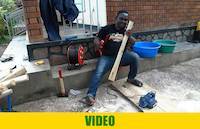 The quality of pickaxes in East Africa is terrible. They are sold in
parts, metal pickaxe part is sold separate from wooden handles and
neither the metal part nor the wooden handles are all the same, so
they have to be prepared and mounted together before any small scale
mining work can start.
On this video one may see one of our apprentices learning and
practicing on how to mount metal parts of the pickaxe onto its wooden
handles.
The quality of pickaxes in East Africa is terrible. They are sold in
parts, metal pickaxe part is sold separate from wooden handles and
neither the metal part nor the wooden handles are all the same, so
they have to be prepared and mounted together before any small scale
mining work can start.
On this video one may see one of our apprentices learning and
practicing on how to mount metal parts of the pickaxe onto its wooden
handles. - Method of mounting the metal part of the pickaxe onto its handle
 The quality of pickaxes in East Africa is terrible. They are sold in
parts, metal pickaxe part is sold separate from wooden handles and
neither the metal part nor the wooden handles are all the same, so
they have to be prepared and mounted together before any small scale
mining work can start.
By using the method as on video we are mounting the metal parts of the
pickaxe onto its handles.
The quality of pickaxes in East Africa is terrible. They are sold in
parts, metal pickaxe part is sold separate from wooden handles and
neither the metal part nor the wooden handles are all the same, so
they have to be prepared and mounted together before any small scale
mining work can start.
By using the method as on video we are mounting the metal parts of the
pickaxe onto its handles. - Method of mounting the metal part of the pickaxe onto its handle
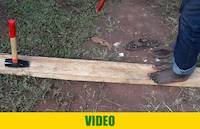 The quality of pickaxes in East Africa is terrible. They are sold in
parts, metal pickaxe part is sold separate from wooden handles and
neither the metal part nor the wooden handles are all the same, so
they have to be prepared and mounted together before any small scale
mining work can start.
By using this method as shown on the video we are mounting the metal
parts of the pickaxe onto its handles.
The quality of pickaxes in East Africa is terrible. They are sold in
parts, metal pickaxe part is sold separate from wooden handles and
neither the metal part nor the wooden handles are all the same, so
they have to be prepared and mounted together before any small scale
mining work can start.
By using this method as shown on the video we are mounting the metal
parts of the pickaxe onto its handles. - Demonstrating to the mining engineer Patrick how to mount metal parts of the pickaxe on its wooden handle
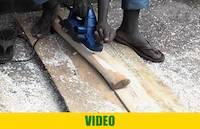 The quality of pickaxes in East Africa is terrible. They are sold in
parts, metal pickaxe part is sold separate from wooden handles and
neither the metal part nor the wooden handles are all the same, so
they have to be prepared and mounted together before any small scale
mining work can start.
Here on this video, the apprentice Patrick, mining engineer by
profession, is learning how to mount the metal part of the pickaxe
onto its wooden handle.
The quality of pickaxes in East Africa is terrible. They are sold in
parts, metal pickaxe part is sold separate from wooden handles and
neither the metal part nor the wooden handles are all the same, so
they have to be prepared and mounted together before any small scale
mining work can start.
Here on this video, the apprentice Patrick, mining engineer by
profession, is learning how to mount the metal part of the pickaxe
onto its wooden handle. - Method of making sure of safety for the pickaxes
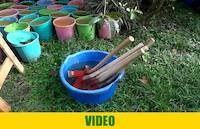 The quality of pickaxes in East Africa is terrible. They are sold in
parts, metal pickaxe part is sold separate from wooden handles and
neither the metal part nor the wooden handles are all the same, so
they have to be prepared and mounted together before any small scale
mining work can start.
This video shows the method how we are making sure that pickaxes are
safe and don't slip off its wooden handle. Wood expands while soaking
some water and metal part of the pickaxe remains firmly on its handle.
The quality of pickaxes in East Africa is terrible. They are sold in
parts, metal pickaxe part is sold separate from wooden handles and
neither the metal part nor the wooden handles are all the same, so
they have to be prepared and mounted together before any small scale
mining work can start.
This video shows the method how we are making sure that pickaxes are
safe and don't slip off its wooden handle. Wood expands while soaking
some water and metal part of the pickaxe remains firmly on its handle. - Method of mounting the metal part of the pickaxe onto its handle
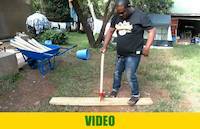 The quality of pickaxes in East Africa is terrible. They are sold in
parts, metal pickaxe part is sold separate from wooden handles and
neither the metal part nor the wooden handles are all the same, so
they have to be prepared and mounted together before any small scale
mining work can start.
This is the method of how we are mounting the metal part of the
pickaxe onto its wooden handle.
Watch the back...
The quality of pickaxes in East Africa is terrible. They are sold in
parts, metal pickaxe part is sold separate from wooden handles and
neither the metal part nor the wooden handles are all the same, so
they have to be prepared and mounted together before any small scale
mining work can start.
This is the method of how we are mounting the metal part of the
pickaxe onto its wooden handle.
Watch the back... - Preparation of pickaxe handles in our headquarter in Kampala, Uganda
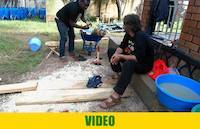 The quality of pickaxes in East Africa is terrible. They are sold in
parts, metal pickaxe part is sold separate from wooden handles and
neither the metal part nor the wooden handles are all the same, so
they have to be prepared and mounted together before any small scale
mining work can start.
The quality of pickaxes in East Africa is terrible. They are sold in
parts, metal pickaxe part is sold separate from wooden handles and
neither the metal part nor the wooden handles are all the same, so
they have to be prepared and mounted together before any small scale
mining work can start. - Jackfruit, jack tree or fene, locally fenesi fruit in Entebbe, Uganda, April 12th 2017
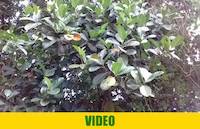 This is jackfruit or jack tree or fenne, locally named fenesi, in Entebbe, Uganda. Delicious fruit that everybody likes.
This is jackfruit or jack tree or fenne, locally named fenesi, in Entebbe, Uganda. Delicious fruit that everybody likes. - The trucks for sale in Entebbe, Uganda, April 12th 2017
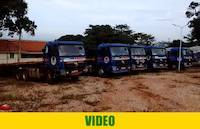 These trucks were for sale in Entebbe, Uganda, in 2017, discovered during the VMTRADE market research.
These trucks were for sale in Entebbe, Uganda, in 2017, discovered during the VMTRADE market research. - Uganda Wildlife Education Centre Pointer, April 12th 2017
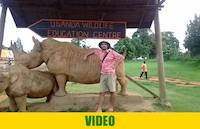 This was the Uganda Wildelife Education Center pointer begin of 2017. later in time they reworked it.
This was the Uganda Wildelife Education Center pointer begin of 2017. later in time they reworked it. - Beautiful fountaine at Imperial Mall in Entebbe, Uganda, April 12th 2017
 This is beautiful fountain by Imperial Mall in Entebbe, Uganda.
This is beautiful fountain by Imperial Mall in Entebbe, Uganda. - Eatable flower in Entebbe, Uganda, April 12th 2017
 This is eatable flower in Entebbe, Uganda.
This is eatable flower in Entebbe, Uganda. - Beautiful hair like tree flower in Entebbe, Uganda, April 12th 2017
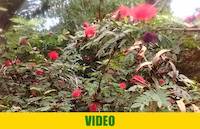 This is beautiful hair-like flower on the tree in Entebbe, Uganda. If
one comes from Europe where we cannot see this type of flowers, we may
think that it comes from other planet.
This is beautiful hair-like flower on the tree in Entebbe, Uganda. If
one comes from Europe where we cannot see this type of flowers, we may
think that it comes from other planet. - Kampala Taxi Park with huge number of public taxis as of April 10th 2017
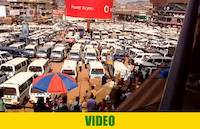
- Kampala Taxi Park as of April 10th 2017
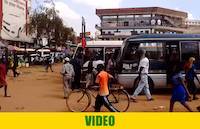 ## April 10th 2017
This is Kampala Taxi Park.
## April 10th 2017
This is Kampala Taxi Park.
- Apparently friendly assistance changed to extortion, Lake Victoria, Kampala, Uganda
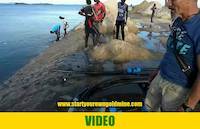 During our test of the spray bars at the shore of the Lake Victoria in
Kampala, Uganda, the apparently friendly assistance changed to
extortion. The guy with the shovel was influenced by somebody else who
asked for each shovel of sand suddenly about US $12. That was surprising. We have got more problems after this video and it was solved soon. Our security policewoman was guarding us and there was no problem at all.
During our test of the spray bars at the shore of the Lake Victoria in
Kampala, Uganda, the apparently friendly assistance changed to
extortion. The guy with the shovel was influenced by somebody else who
asked for each shovel of sand suddenly about US $12. That was surprising. We have got more problems after this video and it was solved soon. Our security policewoman was guarding us and there was no problem at all. - Testing of spray bars on the Lake Victoria in Kampala, Uganda
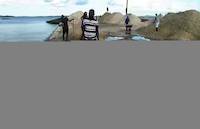 We have been conducting a test of spray bars at the Lake Victoria in
Kampala, Uganda.
We have been conducting a test of spray bars at the Lake Victoria in
Kampala, Uganda. - Testing of spray bars on the Lake Victoria in Kampala, Uganda
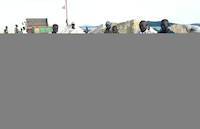 We are testing our HDPE (High Density Polyethylene) spray bars for
sluices forgold recovery. This was in Kampala, Uganda, straight on the
beach of the Lake Victoria.
We are testing our HDPE (High Density Polyethylene) spray bars for
sluices forgold recovery. This was in Kampala, Uganda, straight on the
beach of the Lake Victoria. - Testing the INGCO water pump in Kampala, Uganda, directly on the beach of Lake Victoria
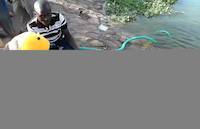 Each part of the gold mining equipment in the Start Your Own Gold Mine
program is tested for its function. We brought the water pump to the
Lake Victoria lake near Luzira, Kampala, the capital of Uganda.
It is working well.
Each part of the gold mining equipment in the Start Your Own Gold Mine
program is tested for its function. We brought the water pump to the
Lake Victoria lake near Luzira, Kampala, the capital of Uganda.
It is working well. - Verification if the soil sampling auger works well
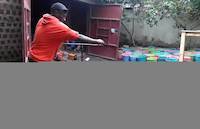 We have been manufacturing our own soil sampling augers. The program
Start Your Own Gold Mine focuses on our own manufacture of gold mining
and prospecting equipment. This is auger, a hand tool for boring
holes.
It would take about 45 minutes to reach 4 meters deep. It has very
little cost compared to the test pit method and in speedy manner
larger area can be verified for gold traces.
In case that gold is not found in alluvial areas we can get quite a
good feeling if we are reaching the alluvial rocks under the black
surface soil.
We have been manufacturing our own soil sampling augers. The program
Start Your Own Gold Mine focuses on our own manufacture of gold mining
and prospecting equipment. This is auger, a hand tool for boring
holes.
It would take about 45 minutes to reach 4 meters deep. It has very
little cost compared to the test pit method and in speedy manner
larger area can be verified for gold traces.
In case that gold is not found in alluvial areas we can get quite a
good feeling if we are reaching the alluvial rocks under the black
surface soil. - Manufacture of spray bars with the HDPE (High Density Polyethylene) pipes in Kampala, Uganda
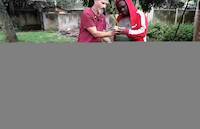 The mine site supervisor Gaetano is supervising our apprentice during
the manufacture of the spray bars. We have used here HDPE (High
Density Polyethylene) pipes and couplings.
The mine site supervisor Gaetano is supervising our apprentice during
the manufacture of the spray bars. We have used here HDPE (High
Density Polyethylene) pipes and couplings.
- Start Your Own Gold Mine Training Center - SYOGM Training Center
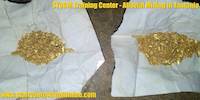 Start Your Own Gold Mine Training Center or shortly SYOGM Training Center is about 6 hours drive from Dar es Salaam towards Morogoro region. The distance from Dar es Salaam is just about 280 km or 174 miles. Training center is licensed for mining. Clients learn on the location various skills such as placer mining and prospecting, sieving of concentrates, separation, particle size grouping and analysis, descending and ascending into shafts or trees, laser distance and measurements of heaps of gold bearing ores and lengths, sluice operation and gravitational gold recovery, fine gold recovery system, melting of gold, usage of solar energy, survival and living skills in the forest, which includes entertainment in the middle of the Tanzanian forest.
Start Your Own Gold Mine Training Center or shortly SYOGM Training Center is about 6 hours drive from Dar es Salaam towards Morogoro region. The distance from Dar es Salaam is just about 280 km or 174 miles. Training center is licensed for mining. Clients learn on the location various skills such as placer mining and prospecting, sieving of concentrates, separation, particle size grouping and analysis, descending and ascending into shafts or trees, laser distance and measurements of heaps of gold bearing ores and lengths, sluice operation and gravitational gold recovery, fine gold recovery system, melting of gold, usage of solar energy, survival and living skills in the forest, which includes entertainment in the middle of the Tanzanian forest. - Please tell me about capacity of crushing and grinding of gold bearing ores?
2019-08-29 Our local partner in Tanzania is asking about various parameters required to determine the rock crushing and grinding capacities, usually necessary to be provided to Chinese manufacturers of rock crushing and grinding machinery. We always recommend American based and European machinery before Chinese machinery, first for the moderate price, as when one knows where to purchase machinery, the quality and capacity of such machines are usually superior to Chinese made machines. Second because it is cheaper. Many purchase machinery in China, due to online marketing of chinese manufacturers. Pricing is yet still cheaper in USA, Canada and Europe. - Proper sampling mixing and reduction on canvas
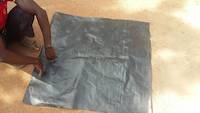 We are training our staff members to understand and execute proper sampling procedures. On these pictures and video you may observe how we have taken every third scoop from each bucket with gold concentrates, thereafter we have been using standard mixing methods and reduction of sample by quartering until we remained with just a kilogram or less. The final sample can be taken to the laboratory for assaying.
We are training our staff members to understand and execute proper sampling procedures. On these pictures and video you may observe how we have taken every third scoop from each bucket with gold concentrates, thereafter we have been using standard mixing methods and reduction of sample by quartering until we remained with just a kilogram or less. The final sample can be taken to the laboratory for assaying. - Strategic Partnership Agreement between the Safe Mining Initiative, Tanzania and Start Your Own Gold Mine
 June 20th 2019. Strategic Partnership Agreement have been signed between the Safe Mining Initiative, Tanzania and Start Your Own Gold Mine. The major purpose of the agreement is to provide mutual educational efforts for miners and public in Tanzania and the world, on ethical and environmentally friendly mining methods, pollution issues, and other adverse social issues with the goal of social betterment of the same. START YOUR OWN GOLD MINE LIMITED is to strive to we prepare mobile educational centers and educational tents, that will teach miners safe mining methods. Such tents would be mobile, movable, and transportable, with basic equipment and demonstratable methods teaching mercury free gold recovery. Such tents would be equipped with music, loudspeakers, with advertising panes which speak about the safe mining.
June 20th 2019. Strategic Partnership Agreement have been signed between the Safe Mining Initiative, Tanzania and Start Your Own Gold Mine. The major purpose of the agreement is to provide mutual educational efforts for miners and public in Tanzania and the world, on ethical and environmentally friendly mining methods, pollution issues, and other adverse social issues with the goal of social betterment of the same. START YOUR OWN GOLD MINE LIMITED is to strive to we prepare mobile educational centers and educational tents, that will teach miners safe mining methods. Such tents would be mobile, movable, and transportable, with basic equipment and demonstratable methods teaching mercury free gold recovery. Such tents would be equipped with music, loudspeakers, with advertising panes which speak about the safe mining. - Geita Gold Trade Center - Soko Kuu La Dhahabu Geita - Tanzania
 2019-03-17 - Geita Gold Trade Center - Soko Kuu La Dhahabu Geita - Tanzania, have been officially opened and inaugurated by Ministry of Minerals of Tanzania on March 17th 2019 to provide gold miners with professional offices to sell their gold and to provide dealers and gold buyers with safe place to purchase the gold. Multiple banks are in the same building of the Geita Gold Trade Cener to provide easy funds for gold sales. Security services and government offices for payments of royalties on sales of minerals are right in the Geita Gold Trade Center. This is one among several gold trade centers that are to be opened all over Tanzania.
2019-03-17 - Geita Gold Trade Center - Soko Kuu La Dhahabu Geita - Tanzania, have been officially opened and inaugurated by Ministry of Minerals of Tanzania on March 17th 2019 to provide gold miners with professional offices to sell their gold and to provide dealers and gold buyers with safe place to purchase the gold. Multiple banks are in the same building of the Geita Gold Trade Cener to provide easy funds for gold sales. Security services and government offices for payments of royalties on sales of minerals are right in the Geita Gold Trade Center. This is one among several gold trade centers that are to be opened all over Tanzania. - About mentor to Start Your Own Gold Mine, Mr. Jean Louis
 This page is telling you about the mentor to Start Your Own Gold Mine, Mr. Jean Louis, little about his life story and background in teaching and consulting for business startups. Mr. Jean Louis is born in 1973 and have opened his first official company the first working day of this 18th birthdate. This was 4 years too late, as business was running since he was 14 years. He worked in former Yugoslavia, in theater of Austria, in Germany, Denmark, Norway, Italy, Tanzania and Uganda. He has helped hundreds of businessmen worldwide to establish their own business. Knowledgeable in international corporate laws he has been helping with business startups and asset protections since 2002. Distance management and delegation skills enable him to run multiple teams in multiple countries in the same time. Communication is number one priority. That is the motto of Mr. Louis. Start Your Own Gold Mine with personal and face to face consulting and training by Jean.
This page is telling you about the mentor to Start Your Own Gold Mine, Mr. Jean Louis, little about his life story and background in teaching and consulting for business startups. Mr. Jean Louis is born in 1973 and have opened his first official company the first working day of this 18th birthdate. This was 4 years too late, as business was running since he was 14 years. He worked in former Yugoslavia, in theater of Austria, in Germany, Denmark, Norway, Italy, Tanzania and Uganda. He has helped hundreds of businessmen worldwide to establish their own business. Knowledgeable in international corporate laws he has been helping with business startups and asset protections since 2002. Distance management and delegation skills enable him to run multiple teams in multiple countries in the same time. Communication is number one priority. That is the motto of Mr. Louis. Start Your Own Gold Mine with personal and face to face consulting and training by Jean. - SYOGM Team Building Project
 The Start Your Own Gold Mine Team Building Project is call for training and action of those people connected to our company and business, those former and present staff members, potential staff members, people who have applied for the employment, or potential managers who have applied to the executive positions and people who have accomplished the Preliminary Communication Preparation Project. People trained in parts of the Start Your Own Gold Mine business program are then invited and called to consult, mentor, provide services, organize and manage parts of the training program for the benefit of our clients.
The Start Your Own Gold Mine Team Building Project is call for training and action of those people connected to our company and business, those former and present staff members, potential staff members, people who have applied for the employment, or potential managers who have applied to the executive positions and people who have accomplished the Preliminary Communication Preparation Project. People trained in parts of the Start Your Own Gold Mine business program are then invited and called to consult, mentor, provide services, organize and manage parts of the training program for the benefit of our clients. - Are you looking for joint venture in mining or in prospecting? What is tangible gold bearing ores?
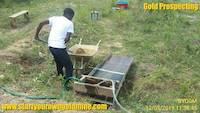 Many gold mining lands owners and mineral license holders inquire with our company and invite us to inspect the mining site. Usually such mining sites are not developed. So often mining sites do not have even one open shaft or any activity engaged. That creates situation and invitation that we shall rather invest into prospecting activities instead of actual mining activities. In this articles you may understand the difference between the prospecting and exploration stage and actual mining stage. It explains you what is tangible gold bearing ores and what kind of joint ventures we are looking for.
Many gold mining lands owners and mineral license holders inquire with our company and invite us to inspect the mining site. Usually such mining sites are not developed. So often mining sites do not have even one open shaft or any activity engaged. That creates situation and invitation that we shall rather invest into prospecting activities instead of actual mining activities. In this articles you may understand the difference between the prospecting and exploration stage and actual mining stage. It explains you what is tangible gold bearing ores and what kind of joint ventures we are looking for. - Rudimentary ball mill startup
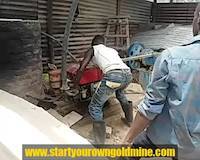 This is classic Tanzanian rudimentary ball mill. It contains balls, it is run on diesel engine, it runs in dry mode. We will certainly convert it to wet and water mode, to demonstrate faster grinding. Its length is 81 cm, and outer diameter 94 cm. Wall thickness is 4 mm. Estimated fuel expense per hour is 1 liter. It has concrete foundation, yet sometimes just timber. Volume of a cylinder with radius of 0.47 m and height of 0.81 m is 0.56 ㎥. The capacity is 200 kilograms per hour or little bit more…
This is classic Tanzanian rudimentary ball mill. It contains balls, it is run on diesel engine, it runs in dry mode. We will certainly convert it to wet and water mode, to demonstrate faster grinding. Its length is 81 cm, and outer diameter 94 cm. Wall thickness is 4 mm. Estimated fuel expense per hour is 1 liter. It has concrete foundation, yet sometimes just timber. Volume of a cylinder with radius of 0.47 m and height of 0.81 m is 0.56 ㎥. The capacity is 200 kilograms per hour or little bit more… - Ball mills used in program Start Your Own Gold Mine
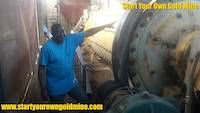 We love ball mills. We love balls and rods used in ball mills and rod mills. We love crushing and grinding of gold bearing rocks. In this category we are teaching our clients and website visitors on some facts, tips and tricks on usage, maintenance and practical operations of ball mills. Learn how to get those rocks crushed and grinded!
We love ball mills. We love balls and rods used in ball mills and rod mills. We love crushing and grinding of gold bearing rocks. In this category we are teaching our clients and website visitors on some facts, tips and tricks on usage, maintenance and practical operations of ball mills. Learn how to get those rocks crushed and grinded! - View on few resources, the line from rudimentary ball mill to the pools
 Date: 2019-05-01, North Mara, Tanzania. Dejan Vidojković is explaining the line from the elevated ball mills and jaw crushers to the pools downthere as they may be used to collect water, or recirculate the water. We must devise new several production lines on this mining site, that is why we are communicating and sending videos and pictures to each other as Mr. Jean Louis was located on distance in Europe, supervising the operations.
Date: 2019-05-01, North Mara, Tanzania. Dejan Vidojković is explaining the line from the elevated ball mills and jaw crushers to the pools downthere as they may be used to collect water, or recirculate the water. We must devise new several production lines on this mining site, that is why we are communicating and sending videos and pictures to each other as Mr. Jean Louis was located on distance in Europe, supervising the operations. - Verification of water source on mining site in Tanzania
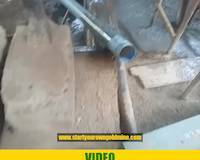 Water sources in mining are major resource. On majority of artisanal mining sites in Tanzania water is rather obstacle than a resource. This situation here is quite different, the mining site needs a lot of water for processing. Verification of the water supply have taken place this day. Several water sources available on this mining site.
Water sources in mining are major resource. On majority of artisanal mining sites in Tanzania water is rather obstacle than a resource. This situation here is quite different, the mining site needs a lot of water for processing. Verification of the water supply have taken place this day. Several water sources available on this mining site. - Water pump and water source enabled on mining site in North Mara
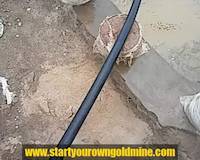 The submersible water pump have been put in action and its flow verified. This is good flow to handle and process several tonnes of tailings per hour. It may handle easily good fresh ores. We will still consider lessening the expenses by using solar power, or battery run bilge pumps.
The submersible water pump have been put in action and its flow verified. This is good flow to handle and process several tonnes of tailings per hour. It may handle easily good fresh ores. We will still consider lessening the expenses by using solar power, or battery run bilge pumps. - Jaw crusher test in Tanzania
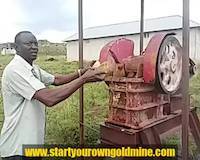 This is small jaw crusher and we are testing the function, not the capacity. We brought it back to life. It needs grease and kind care. Jaw crusher is our best friend.
This is small jaw crusher and we are testing the function, not the capacity. We brought it back to life. It needs grease and kind care. Jaw crusher is our best friend. - Prospecting Check Reports in Kenya
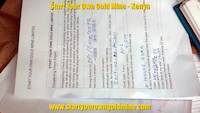 For each gold prospecting action we are keeping Prospecting Check Reports, as this way we know where the sample was obtained, how much of it was verified, how sample was obtained, from which shaft, from which location, which geographical position was it and what gold particles have been found.
For each gold prospecting action we are keeping Prospecting Check Reports, as this way we know where the sample was obtained, how much of it was verified, how sample was obtained, from which shaft, from which location, which geographical position was it and what gold particles have been found. - Coin in the gold pan along gold particles
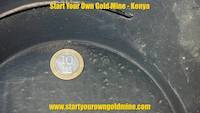 Coin is placed in the pan to show the sizes and help in understanding the findings when pictures are sent for the analysis.
Coin is placed in the pan to show the sizes and help in understanding the findings when pictures are sent for the analysis. - Mr. Peter Mwita prospecting for gold on tailing heaps in Kenya
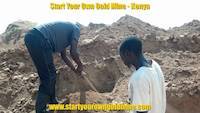 This is our director Mr. Peter Mwita, prospecting for gold in Kenya on tailing heaps, that later developed into mineral processing of 50,000 tonnes.
This is our director Mr. Peter Mwita, prospecting for gold in Kenya on tailing heaps, that later developed into mineral processing of 50,000 tonnes. - Fine gold recovery system preparation
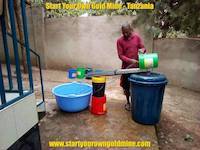 Fine gold recovery system may be improvized with simplest tools.
Fine gold recovery system may be improvized with simplest tools. - Bilge pump and protection in the water
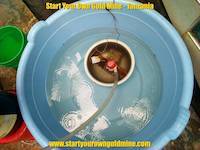 This is how bilge pump have been mounted so that it is protected from other soil particles.
This is how bilge pump have been mounted so that it is protected from other soil particles. - Simple super concentration setup
 This simple super concentration setup is using recirculated water and bilge pump to recover fine gold particles.
This simple super concentration setup is using recirculated water and bilge pump to recover fine gold particles. - Gold panning training
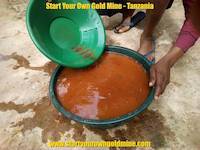 The gold panning training is part of program for each of our staff members in Rwanda, Tanzania, Kenya and Uganda.
The gold panning training is part of program for each of our staff members in Rwanda, Tanzania, Kenya and Uganda. - Mr. M'hengele Nkwabi gold panning
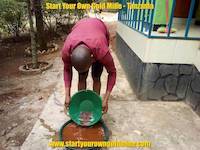 Gold panning practice and preparation for the real work on the mining site is process that every staff member is undergoing.
Gold panning practice and preparation for the real work on the mining site is process that every staff member is undergoing. - Black sand sorted in buckets by their size
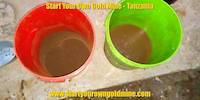 Mesh is the number of openings per linear inch of a screen or measures size of particles, and that is how we are sorting the black sand.
Mesh is the number of openings per linear inch of a screen or measures size of particles, and that is how we are sorting the black sand. - Separation of particles by their sizes
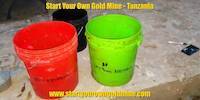 Particles are sorted and separated in various buckets by their sizes.
Particles are sorted and separated in various buckets by their sizes. - The bucket with 50-100 mesh particles
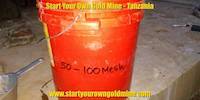 This bucket contains particles from 50 to 100 mesh in size.
This bucket contains particles from 50 to 100 mesh in size. - Black sand in the bucket
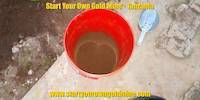 This is black sand, more over this is magnetite that we are using in the technology of fine gold recovery.
This is black sand, more over this is magnetite that we are using in the technology of fine gold recovery. - Magnetite particles collected in the bucket
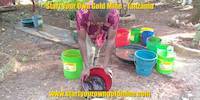 This is bucket with magnetite particles of particular size as collected in the bucket.
This is bucket with magnetite particles of particular size as collected in the bucket. - Black sand sorting with buckets
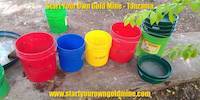 The black sand or better said magnetite is sorted in buckets. A transparent tape sticks on the side of buckets, it may not be visible on pictures. Over the transparent tape the mesh sizes are written so that various magnetite particles may be separated. Similar process can be used for quick and field particle size analysis.
The black sand or better said magnetite is sorted in buckets. A transparent tape sticks on the side of buckets, it may not be visible on pictures. Over the transparent tape the mesh sizes are written so that various magnetite particles may be separated. Similar process can be used for quick and field particle size analysis. - Set of sieves on the bucket
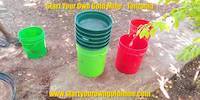 This is stack of sieves on the bucket for basic particle separation and black sand preparation.
This is stack of sieves on the bucket for basic particle separation and black sand preparation. - Sieves and buckets for gold prospecting
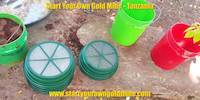 Sieves of various mesh sizes and buckets are used in gold prospecting and final gold recovery.
Sieves of various mesh sizes and buckets are used in gold prospecting and final gold recovery. - Set of sieves for basic gold prospecting
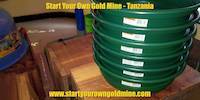 Sets of sieves are so much valuable tool for basic gold prospecting. Quick particle size analysis can be made with this set of sieves, and more over, they are used in quick final gold recovery.
Sets of sieves are so much valuable tool for basic gold prospecting. Quick particle size analysis can be made with this set of sieves, and more over, they are used in quick final gold recovery. - Collecting black sand from rain drainage
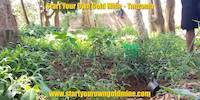 Rain is bringing iron particles down the streams and natural drainage streams. Those places are researched and magnetite is collected to recover gold.
Rain is bringing iron particles down the streams and natural drainage streams. Those places are researched and magnetite is collected to recover gold. - Collection of black sand from natural drainage
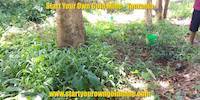 The black sand is collected on numerous, various places, directly from rain drainage.
The black sand is collected on numerous, various places, directly from rain drainage. - Mr. M'hengele Nkwabi calling people during black sand collection
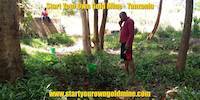 As you may see there are buckets around, as this is the action of collection of black sand, magnetite and some hematite. Such is used in recovery of gold particles. Normally miners are removing or separating black sand and it is funny that we even need it in larger quantities, as we are using magnetite in the technology we are applying to recover gold.
As you may see there are buckets around, as this is the action of collection of black sand, magnetite and some hematite. Such is used in recovery of gold particles. Normally miners are removing or separating black sand and it is funny that we even need it in larger quantities, as we are using magnetite in the technology we are applying to recover gold. - Collection of black sand in Geita, Tanzania
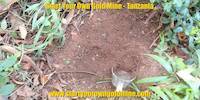 Magnetite, hematite and other heavy minerals are well known as black sand, they are disturbance to many gold prospectors and hinders final gold panning. Some companies are using magnetic separators to remove such black sand. Quite opposite on our side. The technology we are using requires black sand, so we are often collecting it.
Magnetite, hematite and other heavy minerals are well known as black sand, they are disturbance to many gold prospectors and hinders final gold panning. Some companies are using magnetic separators to remove such black sand. Quite opposite on our side. The technology we are using requires black sand, so we are often collecting it. - Natural drainage is chosen to collect black sand
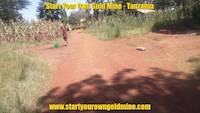 Mr. M'hengele Nkwabi is collecting black sand from natural rain drainage in Geita, Tanzania.
Mr. M'hengele Nkwabi is collecting black sand from natural rain drainage in Geita, Tanzania. - Mr. M'hengele Nkwabi getting ready to collect magnetite minerals
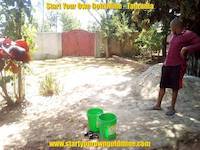 Mr. M'hengele Nkwabi is getting ready in Geita, Tanzania, to collect the magnetite minerals. It is also known as black sand. We use magnets to collect black sand from natural drainages or mining places.
Mr. M'hengele Nkwabi is getting ready in Geita, Tanzania, to collect the magnetite minerals. It is also known as black sand. We use magnets to collect black sand from natural drainages or mining places. - Main roundabout in Geita, Tanzania, the major gold mining town in Tanzania
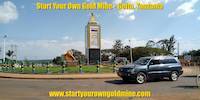 This is roundabout in Geita town, Tanzania, the main gold mining place in Tanzania. Our headquarter in Geita is just about 15 minutes slow walk from this roundabout. Few rock crushing machines may be seen on the roundabout as monuments.
This is roundabout in Geita town, Tanzania, the main gold mining place in Tanzania. Our headquarter in Geita is just about 15 minutes slow walk from this roundabout. Few rock crushing machines may be seen on the roundabout as monuments. - Artisanal mineral processing near Geita, Tanzania
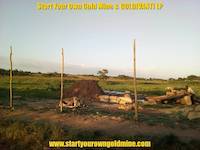 This is classic artisanal mineral processing near Geita, Tanzania, there is a sluice, there are some pools with water, the tailing heaps, and final milled ores are processed here, concentrate of gold is collected and processed with mercury. Mercury is poisonous and forbidden substance. We are never using mercury in our own mercury free gold recovery technology.
This is classic artisanal mineral processing near Geita, Tanzania, there is a sluice, there are some pools with water, the tailing heaps, and final milled ores are processed here, concentrate of gold is collected and processed with mercury. Mercury is poisonous and forbidden substance. We are never using mercury in our own mercury free gold recovery technology. - Artisanal mining site and pond of water
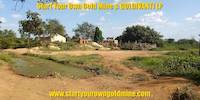 This is how artisanal mining sites look like in Geita, Tanzania. A pond of dirty water is valuable resources for mineral processing.
This is how artisanal mining sites look like in Geita, Tanzania. A pond of dirty water is valuable resources for mineral processing. - Mining shaft on the mining site
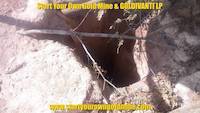 This is one of the mining shafts on mining site. People are going for rocks, while alluvial content was even one gram per shovel on certain locations. It is not quite logical to understand, but people on mining site may not know the mining site without conducting the Prospecting Checks for gold.
This is one of the mining shafts on mining site. People are going for rocks, while alluvial content was even one gram per shovel on certain locations. It is not quite logical to understand, but people on mining site may not know the mining site without conducting the Prospecting Checks for gold. - Visit to mining site
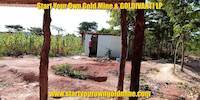 This mining site was discovered to have even one gram of gold in a simple shovel of the soil. People are building rooms at the place where they should not be built as exactly on that place the good gold grade have been found.
This mining site was discovered to have even one gram of gold in a simple shovel of the soil. People are building rooms at the place where they should not be built as exactly on that place the good gold grade have been found. - Mazuri Lodge, near Geita, Tanzania
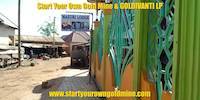 This is how the lodge and street looks like in mining locations near Geita, Tanzania.
This is how the lodge and street looks like in mining locations near Geita, Tanzania. - Mr. M'hengele Nkwabi, our staff member
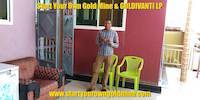 Mr. M'hengele Nkwabi is our staff member that makes good reports from fields.
Mr. M'hengele Nkwabi is our staff member that makes good reports from fields. - Ball mills for small scale gold mining imported to Tanzania
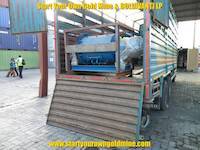 These ball mills are for small scale mining, the total capacity for 2 ball mills is not more than 1.2 tonnes per hour. On good and rich ores these ball mills speed up the gold production for about 12 times. The equivalent capacity if purchased in Tanzania would be US $50,000. The ball mills are worth about 50% less. They are running on diesel engines and can bring good steady income over the time. Ball mills are used in final grinding of the crushed gold bearing rocks.
These ball mills are for small scale mining, the total capacity for 2 ball mills is not more than 1.2 tonnes per hour. On good and rich ores these ball mills speed up the gold production for about 12 times. The equivalent capacity if purchased in Tanzania would be US $50,000. The ball mills are worth about 50% less. They are running on diesel engines and can bring good steady income over the time. Ball mills are used in final grinding of the crushed gold bearing rocks. - Mining shaft on mining site in Kenya
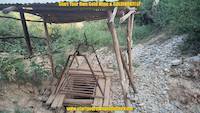 Date: February 27th 2019 This mining shaft contains good and rich ores and is located on our signed up locations for processing of 50,000 tonnes.
Date: February 27th 2019 This mining shaft contains good and rich ores and is located on our signed up locations for processing of 50,000 tonnes. - Staff member in Kenya on February 27th 2019
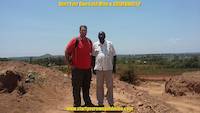 Date: February 27th 2019 Mr. Dejan Vidojkovich, Organization Executive Secretary in senior position have arrived to mining site in Kenya signed up for future mineral processing.
Date: February 27th 2019 Mr. Dejan Vidojkovich, Organization Executive Secretary in senior position have arrived to mining site in Kenya signed up for future mineral processing. - Cyanidation pools with tailing heaps
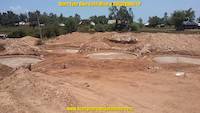 Date: February 27th 2019 Cyanidation pools and tailing heaps all around, total of about 50,000 tonnes available. Since then have been devising ways on how to bring and use constant water to process tailings efficiently.
Date: February 27th 2019 Cyanidation pools and tailing heaps all around, total of about 50,000 tonnes available. Since then have been devising ways on how to bring and use constant water to process tailings efficiently. - New mining site in Kenya with huge tailing heaps
 Date: February 27th 2019 New mining site with huge tailing heaps is identified in Kenya and agreement signed up.
Date: February 27th 2019 New mining site with huge tailing heaps is identified in Kenya and agreement signed up. - Travel from Busia, Uganda, to Isibania, Kenya
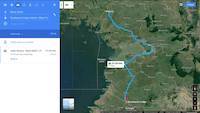 This is the route on how to travel from Busia, Uganda to Isibania, Kenya in Migori county, South Kenya. Our Organization Executive Secretary Mr. Dejan Vidojković arrived to Entebbe, Uganda end of January 2019. He stayed in Uganda for February 2019, and was in Kenya for March and April 2019. Then he arrived to Tanzania to help in establishment of a new mining site end of April 2019.
This is the route on how to travel from Busia, Uganda to Isibania, Kenya in Migori county, South Kenya. Our Organization Executive Secretary Mr. Dejan Vidojković arrived to Entebbe, Uganda end of January 2019. He stayed in Uganda for February 2019, and was in Kenya for March and April 2019. Then he arrived to Tanzania to help in establishment of a new mining site end of April 2019. - Safety know for harnesses and descending into mining shafts
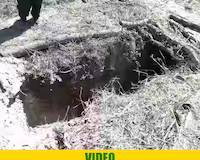 This is safety knot that has to be used in each descending into the mining shafts, or otherwise, if rope is too short, there will be free fall to the bottom.
This is safety knot that has to be used in each descending into the mining shafts, or otherwise, if rope is too short, there will be free fall to the bottom. - 17 shovels in one minute x 4 kg = shoveling of 4 tonnes per hour
 This video shows good tempo of 17 shovels per minute, each shovel being minimum 4 kilograms, probably 6 kilograms. This rhythm of shoveling provides 4 tonnes to 6 tonnes per hour. Two persons shoveling together can easily load 4 tonnes of soil into the sluice. Even if not, then 2 people could easily load 2 tonnes of soil per hour. To load 10 tonnes of soil per hour one would then employ 4 to 10 people. This makes it possible to handle 10 tonnes per hour and 100 tonnes per day.
This video shows good tempo of 17 shovels per minute, each shovel being minimum 4 kilograms, probably 6 kilograms. This rhythm of shoveling provides 4 tonnes to 6 tonnes per hour. Two persons shoveling together can easily load 4 tonnes of soil into the sluice. Even if not, then 2 people could easily load 2 tonnes of soil per hour. To load 10 tonnes of soil per hour one would then employ 4 to 10 people. This makes it possible to handle 10 tonnes per hour and 100 tonnes per day. - Mr. Okedi prospecting for gold on the open pit near Amonikakinei, Tiira, Busia, Uganda
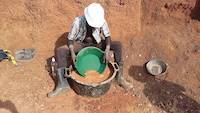 Here is Mr. Okedi, he is prospecting for the gold at the open pit near Amonikakinei, Tiira, Busia, Uganda.
Here is Mr. Okedi, he is prospecting for the gold at the open pit near Amonikakinei, Tiira, Busia, Uganda. - Gold particles compared to known coin size
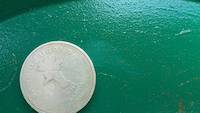 The gold particles are compared to the known coin size or one piece of the meter tape, so that we may get the visual sense to what gold have been found. One particle of very fine gold does not justify the operation to process such soil.
The gold particles are compared to the known coin size or one piece of the meter tape, so that we may get the visual sense to what gold have been found. One particle of very fine gold does not justify the operation to process such soil. - Gold prospecting on open pit near Amonikakinei, Tiira, Busia, Uganda
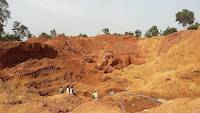 People in background are trying to reach the rich gold pockets at bottom of this open pit. Our people and team at front is verifying the overburden soil for existence and presence of gold. Sadly, few particles of fine gold do not justify the gravitational operation.
People in background are trying to reach the rich gold pockets at bottom of this open pit. Our people and team at front is verifying the overburden soil for existence and presence of gold. Sadly, few particles of fine gold do not justify the gravitational operation. - Gold prospecting on the open pit, Amonikakinei, Tiira, Busia, Uganda
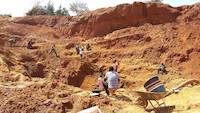 Gold prospecting activities are currently underway at the Amonikakinei open pit site, located in Tiira, Busia, Uganda, by GOLDIVANTI GOLD LIMITED. The presence of gold in the overburden soil has been consistently confirmed through recurring tests since early February 2019. While the soil above the bedrock contains a lower concentration of gold, miners have been eagerly searching for richer pockets. Despite their lack of knowledge on commercially processing the soft soil, people in the background are still searching for concentrated gold pockets. Gold has been found a few times every few months or once a year.
Gold prospecting activities are currently underway at the Amonikakinei open pit site, located in Tiira, Busia, Uganda, by GOLDIVANTI GOLD LIMITED. The presence of gold in the overburden soil has been consistently confirmed through recurring tests since early February 2019. While the soil above the bedrock contains a lower concentration of gold, miners have been eagerly searching for richer pockets. Despite their lack of knowledge on commercially processing the soft soil, people in the background are still searching for concentrated gold pockets. Gold has been found a few times every few months or once a year. - Dejan visiting SAMA, the Syanyonja artisanal miners organization
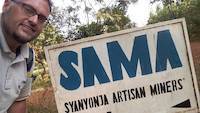 Mr. Dejan Vidojković have visited at begin of February 2019, the SAMA, Syanyonja artisanal mining organization.
Mr. Dejan Vidojković have visited at begin of February 2019, the SAMA, Syanyonja artisanal mining organization. - Prospecting Check Report Example from Busia, Uganda
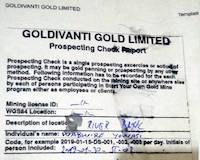 This is Prospecting Check Report near the area of Busia, Uganda. Every gold panning check is reported on the paper. That is how we collect the knowledge into the database.
This is Prospecting Check Report near the area of Busia, Uganda. Every gold panning check is reported on the paper. That is how we collect the knowledge into the database. - Gold particles in the gold pan, from river Okame, Busia, Uganda
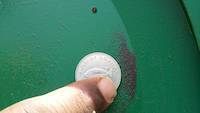 These are gold particles found on the beach of river Okame, near Busia, Uganda, as compared to the known coin size.
These are gold particles found on the beach of river Okame, near Busia, Uganda, as compared to the known coin size. - Children swimming on the river Okame, near Busia, Uganda
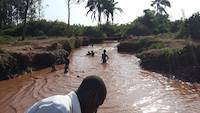 Children are swimming in the river Okame, Busia, Uganda. This river is polluted by mercury from various spills of soil contaminated with it by mining operations. Uganda, as of 2019, still does not have any system or legal enforcements to contain the mercury.
Children are swimming in the river Okame, Busia, Uganda. This river is polluted by mercury from various spills of soil contaminated with it by mining operations. Uganda, as of 2019, still does not have any system or legal enforcements to contain the mercury. - One gold particle found in river Okame, Busia, Uganda
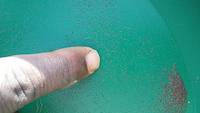 The one fine gold particle was found in river Okame, Busia, Uganda. The top soil does not contain much gold.
The one fine gold particle was found in river Okame, Busia, Uganda. The top soil does not contain much gold. - The gold panning with the Garrett Super Sluice on river Okame, Busia, Uganda
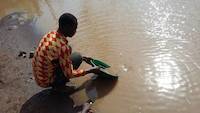 Mr. Wabwire, our sluice operator is gold panning with the Garrett Super Sluice on river Okame, Busia, Uganda…
Mr. Wabwire, our sluice operator is gold panning with the Garrett Super Sluice on river Okame, Busia, Uganda… - Wabwire gold panning on river Okame, Busia, Uganda
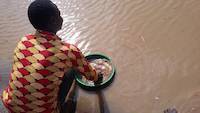 This is Wabwire, our staff member and sluice operator, here on the picture he is gold panning on the river Okame, Busia, Uganda.
This is Wabwire, our staff member and sluice operator, here on the picture he is gold panning on the river Okame, Busia, Uganda. - One pan prospecting volume
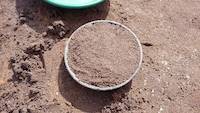 The one pan prospecting volume is shown on this picture. This is Garrett Backpacker Pan filled with soil. When this exact gold pan is filled little bit below its hole on the side, the volume is just about 1.2 liters. By knowing the specific density of the soil, and by knowing the volume and actual gold prospecting results, we may know if the recoverable gold is profitable in the soil. That is field laboratory.
The one pan prospecting volume is shown on this picture. This is Garrett Backpacker Pan filled with soil. When this exact gold pan is filled little bit below its hole on the side, the volume is just about 1.2 liters. By knowing the specific density of the soil, and by knowing the volume and actual gold prospecting results, we may know if the recoverable gold is profitable in the soil. That is field laboratory. - Gold prospecting on river Okame, Busia, Uganda
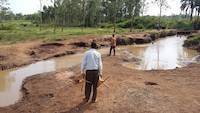 The river Okame does not have the exposed bedrock, yet it carries gold particles from overburden soil, and from tailings that are constantly spilled into the river. It also accrues the mercury waste from mining activities. Basic gold prospecting practice can be done on the river.
The river Okame does not have the exposed bedrock, yet it carries gold particles from overburden soil, and from tailings that are constantly spilled into the river. It also accrues the mercury waste from mining activities. Basic gold prospecting practice can be done on the river. - Gold nuggets on the hand
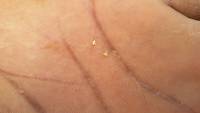 These are small gold nuggets directly from mother lode in Busia, Uganda.
These are small gold nuggets directly from mother lode in Busia, Uganda. - The engine for rudimentary ball mill in Uganda, East Africa
 This is the engine used for rudimentary ball mill in Uganda, East Africa.
This is the engine used for rudimentary ball mill in Uganda, East Africa. - Rudimentary ball mill or "crusher" in Uganda
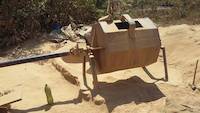 This is rudimentary ball mill or "crusher" in Uganda, it is used for primary crushing and final milling. Capacity is only 100 kg per hour.
This is rudimentary ball mill or "crusher" in Uganda, it is used for primary crushing and final milling. Capacity is only 100 kg per hour. - Rudimentary ball mill in Busia, Uganda
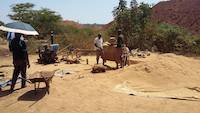 This is rudimentary ball mill in Busia, Uganda. People tend to use very big balls inside for the reason that they do not use primary crushing properly. Thus big ball helps that rocks get crushed. No liners are used and such rudimentary ball mills are broken each in a while, they don't last in operation longer than just few months when they need to get repaired. Dusty environment and improper maintenance contribute to low efficiency. The capacity is maximum 100 kg per hour.
This is rudimentary ball mill in Busia, Uganda. People tend to use very big balls inside for the reason that they do not use primary crushing properly. Thus big ball helps that rocks get crushed. No liners are used and such rudimentary ball mills are broken each in a while, they don't last in operation longer than just few months when they need to get repaired. Dusty environment and improper maintenance contribute to low efficiency. The capacity is maximum 100 kg per hour. - Near the mining site #281 in Busia, Uganda
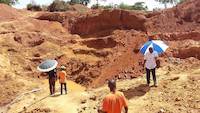 This open pit is very near the mining site #281 in our database, in area of Busia, Uganda. This open pit yields with rich gold pockets every few months.
This open pit is very near the mining site #281 in our database, in area of Busia, Uganda. This open pit yields with rich gold pockets every few months. - Mr. Dejan Vidojković at mining site #281 in Uganda
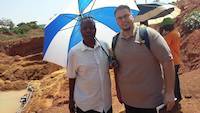 On the right side one may see our Organization Executive Secretary I/C, as of 2018/2019, Mr. Dejan Vidojković.
On the right side one may see our Organization Executive Secretary I/C, as of 2018/2019, Mr. Dejan Vidojković. - Rolex, the favorite food for many in Uganda, rolled chapati with eggs, that is Rolex
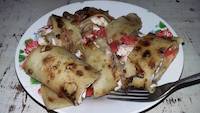 Rolex is favorite food for many in Uganda. Rolled chapati with eggs makes a Rolex!…
Rolex is favorite food for many in Uganda. Rolled chapati with eggs makes a Rolex!… - Gold Panning is Easy, by Roy Lagal and Metal Detecting by Garrett
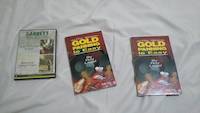 The Gold Panning is Easy, by Roy Lagal and Metal Detecting videos by Garrett company are essential for every gold prospector anywhere in the world.
The Gold Panning is Easy, by Roy Lagal and Metal Detecting videos by Garrett company are essential for every gold prospector anywhere in the world. - Seven pairs of walkie-talkies to Start Your Own Gold Mine
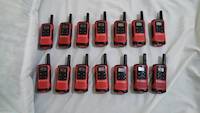 The seven pairs of walkie-talkies for adventurers attending the Start Your Own Gold Mine program have been brought to East Africa in January 2019. We always use walkie-talkies on mining sites. Mobile phones and networks are so much unavailable at remote locations. Walkie-talkies are indispensable.
The seven pairs of walkie-talkies for adventurers attending the Start Your Own Gold Mine program have been brought to East Africa in January 2019. We always use walkie-talkies on mining sites. Mobile phones and networks are so much unavailable at remote locations. Walkie-talkies are indispensable. - The bodaboda ride in Entebbe, Uganda
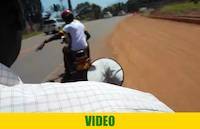 This is ride on bodaboda, the motorcycle in Entebbe, Uganda.
This is ride on bodaboda, the motorcycle in Entebbe, Uganda. - The view on the bed in Barconi hotel, Entebbe, Uganda
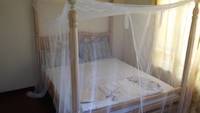 This is how the room and the bed looks like in Barconi Hotel, Entebbe, Uganda.
This is how the room and the bed looks like in Barconi Hotel, Entebbe, Uganda. - Barconi Hotel, Entebbe, Uganda
 This is Barconi hotel in Entebbe, Uganda.
This is Barconi hotel in Entebbe, Uganda. - Quick bodaboda transfer of stuff in Entebbe, Uganda
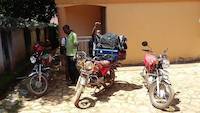 Bodaboda people are motorcycle riders, and bodaboda is motorcycle. They transport everything, from luggage to beds and coffins with dead bodies. Bodaboda transport is always available everywhere in East Africa.
Bodaboda people are motorcycle riders, and bodaboda is motorcycle. They transport everything, from luggage to beds and coffins with dead bodies. Bodaboda transport is always available everywhere in East Africa. - Dejan departing to Vienna for flight to Uganda, East Africa
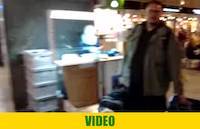 This is from January 25th 2019, Mr. Dejan is departing to Vienna, Austria, to catch the next flight to Uganda, East Africa. Various prospecting and lapidary equipment in weight of 23 kilograms is stuffed into the luggage.
This is from January 25th 2019, Mr. Dejan is departing to Vienna, Austria, to catch the next flight to Uganda, East Africa. Various prospecting and lapidary equipment in weight of 23 kilograms is stuffed into the luggage. - Dejan in Graz city, Austria, preparing to travel to Vienna
 Dejan is preparing to move to Vienna, from Graz, Austria. As the next booked flight for East Africa departed from Vienna, Austria.
Dejan is preparing to move to Vienna, from Graz, Austria. As the next booked flight for East Africa departed from Vienna, Austria. - Gold particles found
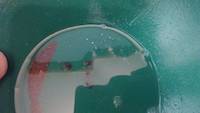 These white dots are actually yellow gold particles found in the soil from river Drava, Croatia. They appear white on the picture as camera could not setup its lightning correctly. The result of gold panning is to find the gold, and Mr. Dejan did find it.
These white dots are actually yellow gold particles found in the soil from river Drava, Croatia. They appear white on the picture as camera could not setup its lightning correctly. The result of gold panning is to find the gold, and Mr. Dejan did find it. - Gold panning in the middle of room
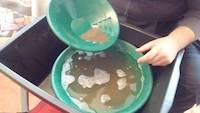 This is the evidence that gold panning may be practiced in the middle of the room. You need to have appropriately sized water containers and basins, gold pans, and it will work. This is Dejan, our Organization Executive Secretary I/C as of end of 2018, while learning gold panning methods.
This is the evidence that gold panning may be practiced in the middle of the room. You need to have appropriately sized water containers and basins, gold pans, and it will work. This is Dejan, our Organization Executive Secretary I/C as of end of 2018, while learning gold panning methods. - Mr. Dejan learning gold panning
 To learn gold panning may be simple for some people, and it may be as complicated as hell for some other people. Some people need 20 minutes, some people require 20 days. Mr. Dejan is learning fast on this picture and he has got all the basics within short time. The perfection comes with practice on the ground in East Africa and with the actual gold recovery.
To learn gold panning may be simple for some people, and it may be as complicated as hell for some other people. Some people need 20 minutes, some people require 20 days. Mr. Dejan is learning fast on this picture and he has got all the basics within short time. The perfection comes with practice on the ground in East Africa and with the actual gold recovery. - Mr. Dejan Vidojković, on his first prospecting expedition
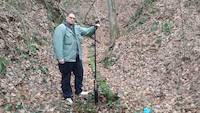 This is Mr. Dejan Vidojković on his first gold prospecting expedition in Croatia, Europe. He is seen at the location with soil sampling auger. The first attempt and Dejan did find the gold particles. This is no coincidence.
This is Mr. Dejan Vidojković on his first gold prospecting expedition in Croatia, Europe. He is seen at the location with soil sampling auger. The first attempt and Dejan did find the gold particles. This is no coincidence. - Mr. Dejan Vidojković, former Organization Executive Secretary I/C for Start Your Own Gold Mine in East Africa
 Mr. Dejan Vidojković was a former Organization Executive Secretary in charge for Start Your Own Gold Mine in East Africa, from begin 2019 until begin of June 2019. His first gold prospecting expedition was in Croatia, end of 2018. With his first gold panning experiences he found the first gold particles. Few weeks thereafter Mr. Dejan was recovering gold from mercury contaminated gold concentrates in Busia, Uganda. On February 26th 2019, he moved to Kenya to establish additional several locations of work for our business and for adventurers from other countries. Apparently for his personal matters he returned to Europe. He has abused our business in East Africa and is NOT AUTHORIZED by our company for any business. Please report any communication of Mr. Dejan Vidojković as he was mis-representing himself as being authorized by the company for abusive actions.
Mr. Dejan Vidojković was a former Organization Executive Secretary in charge for Start Your Own Gold Mine in East Africa, from begin 2019 until begin of June 2019. His first gold prospecting expedition was in Croatia, end of 2018. With his first gold panning experiences he found the first gold particles. Few weeks thereafter Mr. Dejan was recovering gold from mercury contaminated gold concentrates in Busia, Uganda. On February 26th 2019, he moved to Kenya to establish additional several locations of work for our business and for adventurers from other countries. Apparently for his personal matters he returned to Europe. He has abused our business in East Africa and is NOT AUTHORIZED by our company for any business. Please report any communication of Mr. Dejan Vidojković as he was mis-representing himself as being authorized by the company for abusive actions. - Now exiting to Indian ocean by night
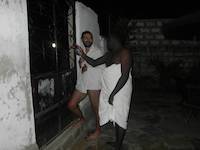 The Indian ocean is right there, but we had to ask for permission to exit out into the beach in Mombasa, Kenya.
The Indian ocean is right there, but we had to ask for permission to exit out into the beach in Mombasa, Kenya. - Mr. Louis in the swimming pool in Talentos beach, Mombasa, Kenya
 We have just arrived to Kenya and organized the accommodation in Talentos Beach, in Mombasa, Kenya. I could not wait and used the opportunity to swim in the pool. I cannot wait coming back to Talentos Beach in Mombasa.
We have just arrived to Kenya and organized the accommodation in Talentos Beach, in Mombasa, Kenya. I could not wait and used the opportunity to swim in the pool. I cannot wait coming back to Talentos Beach in Mombasa. - View of Kilimanjaro near Arusha, Tanzania on our travel to Kenya
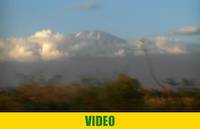 The Kilimanjaro volcano could be seen directly from our car on our travel to Kenya in October 2017.
The Kilimanjaro volcano could be seen directly from our car on our travel to Kenya in October 2017. - Tanzanite gemstones in Arusha, Tanzania
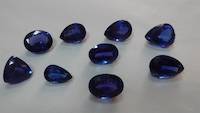 Back from August 2017 to October 2017, we have established the business of Tanzanite trade and polishing in Mirerani, Tanzania. This was our last day in Arusha, before our travel to Kenya in October 2017. Tanzanite Apollo company is located in Mirerani, Tanzania, the source of Tanzanite gemstone. It provides wholesale of Tanzanite and other gemstones to the world. You may find more about it on https://www.tanzaniteapollo.com…
Back from August 2017 to October 2017, we have established the business of Tanzanite trade and polishing in Mirerani, Tanzania. This was our last day in Arusha, before our travel to Kenya in October 2017. Tanzanite Apollo company is located in Mirerani, Tanzania, the source of Tanzanite gemstone. It provides wholesale of Tanzanite and other gemstones to the world. You may find more about it on https://www.tanzaniteapollo.com… - Elephant decoration on a wall near Arusha, Tanzania, on our travel to Kenya in October 2017
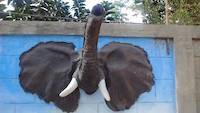 The elephant decoration is on the walls of a hotel near Arusha, Tanzania, on our travel to Kenya.
The elephant decoration is on the walls of a hotel near Arusha, Tanzania, on our travel to Kenya. - Rhinoceros decoration near Arusha, Tanzania, on our travel to Kenya
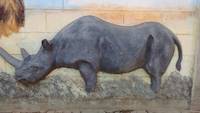 This is rhinoceros as decorated on the wall of a hotel near Arusha, Tanzania, on our travel to Kenya in October 2017.
This is rhinoceros as decorated on the wall of a hotel near Arusha, Tanzania, on our travel to Kenya in October 2017. - Lion picture near Arusha, Tanzania, on our travel to Kenya, in October 2017
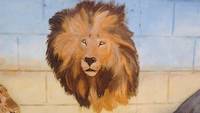 This is lion picture as decorated on the wall of a hotel near Arusha, on our travel to Kenya in October 2017.
This is lion picture as decorated on the wall of a hotel near Arusha, on our travel to Kenya in October 2017. - African Buffalo decoration in Tanzania, just before moving to Kenya
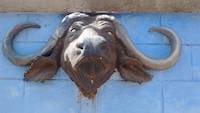 We found these on the walls of a hotel near Arusha, just before moving to Kenya in October 2017.
We found these on the walls of a hotel near Arusha, just before moving to Kenya in October 2017. - Leopard decoration in Tanzania, just before moving to Kenya
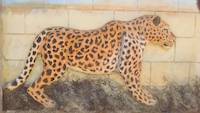 This is leopard in Tanzania, near Arusha, just shortly before moving to Kenya in October 2017.
This is leopard in Tanzania, near Arusha, just shortly before moving to Kenya in October 2017. - Start Your Own Gold Mine Limited company in Kenya, since 2018
 Start Your Own Gold Mine Limited company is active in Kenya since 2018. Due to previous research and connections to valuable partners, and the avialable gold mining opportunities in Kenya, the decision to open up new business in Kenya was met in 2018. The roots of this decision go back to the year 2012, for gold trade purposes. Today, the business program Start Your Own Gold Mine and mercury free gold recovery courses are legally provided in Kenya for local and foreign investors.
Start Your Own Gold Mine Limited company is active in Kenya since 2018. Due to previous research and connections to valuable partners, and the avialable gold mining opportunities in Kenya, the decision to open up new business in Kenya was met in 2018. The roots of this decision go back to the year 2012, for gold trade purposes. Today, the business program Start Your Own Gold Mine and mercury free gold recovery courses are legally provided in Kenya for local and foreign investors. - Driving in Geita, Tanzania
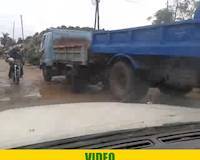 October 30th 2012, somewhere in Geita region, Tanzania We don't know where this really was, but video shows the conditions on streets in some of smaller towns.
October 30th 2012, somewhere in Geita region, Tanzania We don't know where this really was, but video shows the conditions on streets in some of smaller towns. - Geita town and region in Tanzania
 These pages will show our experiences, travels and information about the Geita town and around the mining sites near Geita in Tanzania.
These pages will show our experiences, travels and information about the Geita town and around the mining sites near Geita in Tanzania. - Falcon in Hotel Tilapia, Mwanza, Tanzania
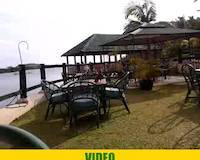 October 20th 2012, Hotel Tilapia, Mwanza, Tanzania, Location: http://www.openstreetmap.org/#map=18/-2.528553/32.895481 We were wondering why we cannot see any pigeons in Mwanza, Tanzania. Town is full of falcons. Any smaller bird appearing is eaten by falcons. Be careful with your food in restaurants, if falcons see it, at your first turn they will snatch it.
October 20th 2012, Hotel Tilapia, Mwanza, Tanzania, Location: http://www.openstreetmap.org/#map=18/-2.528553/32.895481 We were wondering why we cannot see any pigeons in Mwanza, Tanzania. Town is full of falcons. Any smaller bird appearing is eaten by falcons. Be careful with your food in restaurants, if falcons see it, at your first turn they will snatch it. - Leverage with mortar and pestle to crush larger rocks
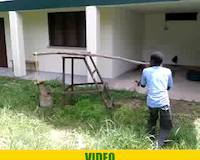 This is one way on how to easier crush larger rocks during sampling process. The leverage may be used to raise the mortar and crush the rocks in the pestle. Even child of 12 years can handle the leverage and help in such operation. We don't employ children. This is was our neighbor in Mwanza who helped to make this movie.
This is one way on how to easier crush larger rocks during sampling process. The leverage may be used to raise the mortar and crush the rocks in the pestle. Even child of 12 years can handle the leverage and help in such operation. We don't employ children. This is was our neighbor in Mwanza who helped to make this movie. - Our first mining camp in 2012 in Mgusu, Geita, Tanzania
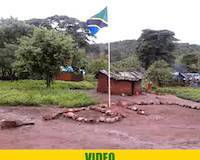 December 23rd 2012, Mgusu hills, Geita, Tanzania This is our first mining camp in Tanzania. And there is the generator that is used to charge the multiple phones of our staff members. The first gold mining operation was financed by investment of our company GOLDIVANTI LP.
December 23rd 2012, Mgusu hills, Geita, Tanzania This is our first mining camp in Tanzania. And there is the generator that is used to charge the multiple phones of our staff members. The first gold mining operation was financed by investment of our company GOLDIVANTI LP. - Mercury in miner's pan
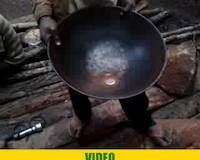 December 23rd 2012, Mgusu hills, Geita, Tanzania Miner is demonstrating mercury in the pan. Mercury is dangerous and poisonous substance that shall be avoided by all means. Countries worldwide have agreed to eradicate mercury by the Minamat Convention. We do not endorse mercury in gold recovery. We use only mercury free gold recovery methods.
December 23rd 2012, Mgusu hills, Geita, Tanzania Miner is demonstrating mercury in the pan. Mercury is dangerous and poisonous substance that shall be avoided by all means. Countries worldwide have agreed to eradicate mercury by the Minamat Convention. We do not endorse mercury in gold recovery. We use only mercury free gold recovery methods. - Mihaio's torch, Mgusu hills, Tanzania
 December 25th 2012 Mgusu Hills Tanzania Our friend Mihaio is demonstrating us how he had to improvize and make the torch. He used the alluminum paper from cigarette boxes as wires to connect the battires, and some rubber stripes to keep it all together. The torch works and he was daily using it in deep mining shafts.
December 25th 2012 Mgusu Hills Tanzania Our friend Mihaio is demonstrating us how he had to improvize and make the torch. He used the alluminum paper from cigarette boxes as wires to connect the battires, and some rubber stripes to keep it all together. The torch works and he was daily using it in deep mining shafts. - Mining camp in Mgusu hills, Geita, Tanzania
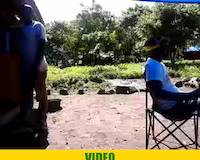 December 26th 2012 Mgusu Hills Tanzania The video quality is bad, but not much is left from that time, due to loss of data. The video shows the shade and people talking in front of our accommodation at the mining camp in Mgusu Hills, Geita, Tanzania.
December 26th 2012 Mgusu Hills Tanzania The video quality is bad, but not much is left from that time, due to loss of data. The video shows the shade and people talking in front of our accommodation at the mining camp in Mgusu Hills, Geita, Tanzania. - View on construction of miners' house
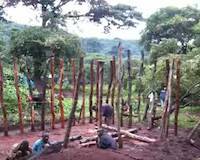 January 10th 2013 Mgusu Hills Tanzania The expense of this house was just about US $100. This was the first location as run by investment of GOLDIVANTI LP company.
January 10th 2013 Mgusu Hills Tanzania The expense of this house was just about US $100. This was the first location as run by investment of GOLDIVANTI LP company. - View on construction of the miners' house
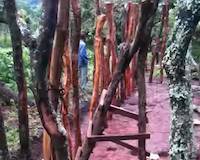 January 10th 2013 Mgusu Hills Tanzania This is the miners' house and view on the construction of it.
January 10th 2013 Mgusu Hills Tanzania This is the miners' house and view on the construction of it. - Mining Camp, Tips and Tricks
 On these pages we are demonstrating various solutions for mining camp, tips and tricks of living in a camp, dangers, safety and security, various metnality in East African countries where the Start Your Own Gold Mine program is conducted. In Rwanda, Uganda, Tanzania and Kenya.
On these pages we are demonstrating various solutions for mining camp, tips and tricks of living in a camp, dangers, safety and security, various metnality in East African countries where the Start Your Own Gold Mine program is conducted. In Rwanda, Uganda, Tanzania and Kenya. - Water tanks loaded into the truck
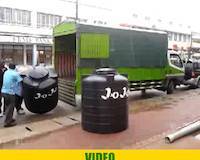 January 1st 2013, Mwanza, Tanzania Water tanks are loaded into the truck. This truck was rented and the drivers said that everything is fine, so we can move on. Later during the night, we found out that springs were not quite alright, and that the truck had to be replaced for the equipment to arrive to the elevated location at the hill.
January 1st 2013, Mwanza, Tanzania Water tanks are loaded into the truck. This truck was rented and the drivers said that everything is fine, so we can move on. Later during the night, we found out that springs were not quite alright, and that the truck had to be replaced for the equipment to arrive to the elevated location at the hill. - Our departing point from Geita
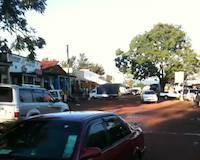 This is our departing point from Geita to mining sites. This is the place where we purchase our remaining stuff, such as medicine in pharmacies, some food, supplies, there is hardware shop and post office around.
This is our departing point from Geita to mining sites. This is the place where we purchase our remaining stuff, such as medicine in pharmacies, some food, supplies, there is hardware shop and post office around. - From Mwanza, via Kigongo to Busisi by fair
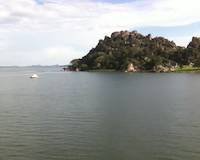 January 9th 2013, Kigongo and Busisi, Tanzania This is the view just before the arrival of the ferry from Mwanza, over Kigongo to Busisi, towards Geita, Tanzania. The video cannot describe the beauty of Tanzanian nature.
January 9th 2013, Kigongo and Busisi, Tanzania This is the view just before the arrival of the ferry from Mwanza, over Kigongo to Busisi, towards Geita, Tanzania. The video cannot describe the beauty of Tanzanian nature. - Small equipment for mining site
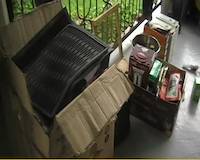 Date: January 8st 2013, Mwanza, Tanzania Small equipment have been prepared and transported to the mining site.
Date: January 8st 2013, Mwanza, Tanzania Small equipment have been prepared and transported to the mining site. - Matresses and stuff for the mining site
 Date: January 8st 2013, Mwanza, Tanzania These mattresses and the stuff have been moved to the mining site for our miners.
Date: January 8st 2013, Mwanza, Tanzania These mattresses and the stuff have been moved to the mining site for our miners. - Waking up the pharmacist in Geita, Tanzania
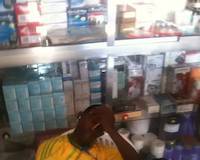 Date: January 26th 2013 in Geita, Tanzania When you need malaria medicine, always make sure to wake up the pharmacist...
Date: January 26th 2013 in Geita, Tanzania When you need malaria medicine, always make sure to wake up the pharmacist... - Picture of fine gold in the gold pan
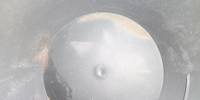 This text provides a step by step guide on how to perform gold panning, including preparation steps like cleaning and swishing materials using gravity flow rate for separation into layers based on weight; draining excess water after each process until traces left behind from heavier metals such as pure metallic gold are found through careful sifting or washing.
This text provides a step by step guide on how to perform gold panning, including preparation steps like cleaning and swishing materials using gravity flow rate for separation into layers based on weight; draining excess water after each process until traces left behind from heavier metals such as pure metallic gold are found through careful sifting or washing. - Fine gold is seen in the gold pan
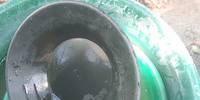 This is fine gold as seen in the experiment.
This is fine gold as seen in the experiment. - The fine gold after recovery experiment
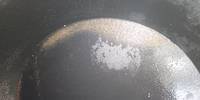 This is fine gold after the recovery experiment.
This is fine gold after the recovery experiment. - Fine gold in the gold pan after experiment
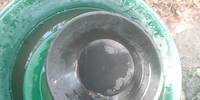 The fine gold is seen in the gold pan after the experiment.
The fine gold is seen in the gold pan after the experiment. - Fine gold recovered after panning
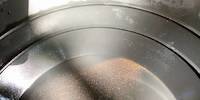 This is fine gold as recovered after panning one small quantity of crushed and milled ores. The quantity is equal to the volume of the Garrett Backpacker pan, which is about 1.2 litres or 0.0012 cubic meters or 1200 cubic centimetres.
This is fine gold as recovered after panning one small quantity of crushed and milled ores. The quantity is equal to the volume of the Garrett Backpacker pan, which is about 1.2 litres or 0.0012 cubic meters or 1200 cubic centimetres. - Gold recovered in the gold pan
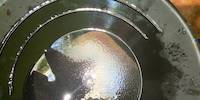 The gold shown on this picture have been recovered from crushed and milled ore sample. It is very rich material and very profitable. This many particles of gold have been recovered from one small Garrett Backpacker pan full of material.
The gold shown on this picture have been recovered from crushed and milled ore sample. It is very rich material and very profitable. This many particles of gold have been recovered from one small Garrett Backpacker pan full of material. - Gold recovered in the gold pan
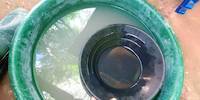 On this picture one can see the gold as separated on the upper part of the gold pan and with the black sand on the bottom. This is proof that mercury free gold recovery methods can easily be applied everywhere in East Africa.
On this picture one can see the gold as separated on the upper part of the gold pan and with the black sand on the bottom. This is proof that mercury free gold recovery methods can easily be applied everywhere in East Africa. - The field assay going on
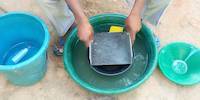 This is the controlled experiment on the crushed and milled ore. A controlled quantity of soil is used and particles recovered are counted and measured after the recovery. The results can give clear picture if the material is rich, profitable or not profitable.
This is the controlled experiment on the crushed and milled ore. A controlled quantity of soil is used and particles recovered are counted and measured after the recovery. The results can give clear picture if the material is rich, profitable or not profitable. - Bus station in Busia, Uganda
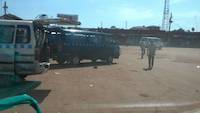 This is the bus station in Busia town, Uganda.
This is the bus station in Busia town, Uganda. - Quartering of the sample on canvas, with warning
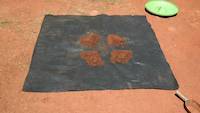 The quartering have been conducted, but this is small sample containing concentrates, and even if it wasn't, the dirt on the canvas was not quartered equally, and thus the quarters do not represent perfect proportional minerals from the whole. Much care must be taken in doing this work, as well as to clean thoroughly the parts of the canvas where the discarded metal has been in order to prevent salting.
The quartering have been conducted, but this is small sample containing concentrates, and even if it wasn't, the dirt on the canvas was not quartered equally, and thus the quarters do not represent perfect proportional minerals from the whole. Much care must be taken in doing this work, as well as to clean thoroughly the parts of the canvas where the discarded metal has been in order to prevent salting. - Quarter of the sample, is it removed or not removed?
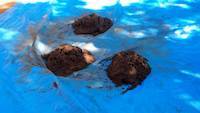 NEGATIVE EDUCATION WARNING: These pictures are shown how NOT TO do the quartering procedure. What do you observe on this picture? The quarter of the sample have been removed. Is it removed? What can you see and observe?…
NEGATIVE EDUCATION WARNING: These pictures are shown how NOT TO do the quartering procedure. What do you observe on this picture? The quarter of the sample have been removed. Is it removed? What can you see and observe?… - Collection of quarter of the sample into gold pan
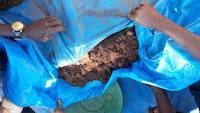 NEGATIVE EDUCATION WARNING: These pictures are shown how NOT TO do the quartering procedure. People collect one quarter of the sample into the gold pan. Please don't do this.
NEGATIVE EDUCATION WARNING: These pictures are shown how NOT TO do the quartering procedure. People collect one quarter of the sample into the gold pan. Please don't do this. - Negative education on errors in sampling
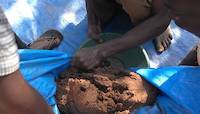 NEGATIVE EDUCATION WARNING: These pictures are shown how NOT TO do the quartering procedure. People are using canvas incorrectly, removing sample into gold pan, not cleaning the canvas, and walking barefoot over mercury contaminated sample.
NEGATIVE EDUCATION WARNING: These pictures are shown how NOT TO do the quartering procedure. People are using canvas incorrectly, removing sample into gold pan, not cleaning the canvas, and walking barefoot over mercury contaminated sample. - Negative education on errors in quartering
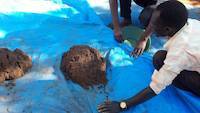 NEGATIVE EDUCATION WARNING: These pictures are shown how NOT TO do the quartering procedure. People are trying to remove way to big sample part into the gold pan. Instead, additional canvas underneath shall be used first to remove the quarter and then to dispose of it.
NEGATIVE EDUCATION WARNING: These pictures are shown how NOT TO do the quartering procedure. People are trying to remove way to big sample part into the gold pan. Instead, additional canvas underneath shall be used first to remove the quarter and then to dispose of it. - Negative education examples of quartering
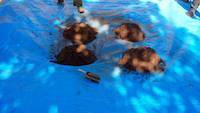 NEGATIVE EDUCATION WARNING: These pictures are shown how NOT TO do the quartering procedure. The barefoot walking over material, dirty canvas, not cleaning and removing all particles of the sample.
NEGATIVE EDUCATION WARNING: These pictures are shown how NOT TO do the quartering procedure. The barefoot walking over material, dirty canvas, not cleaning and removing all particles of the sample. - Quartering the sample
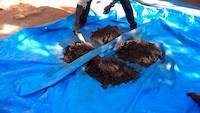 NEGATIVE EDUCATION WARNING: These pictures are shown how NOT TO do the quartering procedure.
NEGATIVE EDUCATION WARNING: These pictures are shown how NOT TO do the quartering procedure. - Quartering the sample
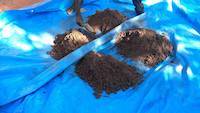 NEGATIVE EDUCATION WARNING: This picture are shown how NOT TO do the quartering procedure. Barefoot walking over the canvas, using small scoop to try to flatten the sample, not using any piece of cloth to clean the canvas and collect or particles together, those are the incoherent facts to be observed on this picture.
NEGATIVE EDUCATION WARNING: This picture are shown how NOT TO do the quartering procedure. Barefoot walking over the canvas, using small scoop to try to flatten the sample, not using any piece of cloth to clean the canvas and collect or particles together, those are the incoherent facts to be observed on this picture. - People are using canvas to divide the sample in two parts
 NEGATIVE EDUCATION WARNING: These pictures are shown how NOT TO do the quartering procedure. The incoherent facts that may be seen on this picture are dirt everywhere on the canvas, thus either removing the gold particles from the sample or contaminating parts of sample with it. Using hands too close on the sample material and barefoot walking over the canvas, thus either removing or contaminating the sample.
NEGATIVE EDUCATION WARNING: These pictures are shown how NOT TO do the quartering procedure. The incoherent facts that may be seen on this picture are dirt everywhere on the canvas, thus either removing the gold particles from the sample or contaminating parts of sample with it. Using hands too close on the sample material and barefoot walking over the canvas, thus either removing or contaminating the sample. - The method to divide smaller sample in two parts
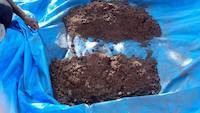 This pictures shows the starting position to divide the smaller sample into two parts.
This pictures shows the starting position to divide the smaller sample into two parts. - The sample as divided in two parts
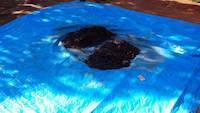 This sample have been divided in two approximately equal parts.
This sample have been divided in two approximately equal parts. - Division of the sample in two parts
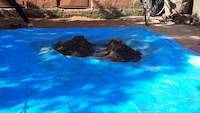 On this picture one can see how sample have been divided on two parts.
On this picture one can see how sample have been divided on two parts. - Coning the sample
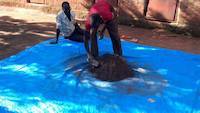 After mixing the sample, it has to be coned and then flattened before quartering process.
After mixing the sample, it has to be coned and then flattened before quartering process. - Mixing the sample in plastic canvas
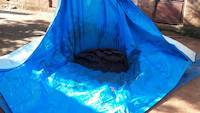 While this picture cannot describe proper way of using canvas on how to mix the sample, it demonstrates the basic principle of rolling the sample in canvas.
While this picture cannot describe proper way of using canvas on how to mix the sample, it demonstrates the basic principle of rolling the sample in canvas. - Sampling Errors in Practice
 NEGATIVE EDUCATION WARNING: These pages describe how not to do the sampling, coning and quartering, as these errors are common. Much care must be taken in doing this work, as well as to clean thoroughly the parts of the
platform or canvas where the discarded metal has been in order to prevent salting. People walking barefoot on the mercury contaminated soil and other negative facts may be observed on this series of pictures.
NEGATIVE EDUCATION WARNING: These pages describe how not to do the sampling, coning and quartering, as these errors are common. Much care must be taken in doing this work, as well as to clean thoroughly the parts of the
platform or canvas where the discarded metal has been in order to prevent salting. People walking barefoot on the mercury contaminated soil and other negative facts may be observed on this series of pictures.
- Removing the quarters into gold pan
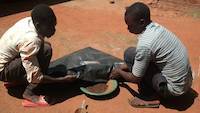 Removing the quarter of the sample into the gold pan is easy task. We rather recommend using other piece of canvas underneath, so that sample is easier removed from it, and then later placed into buckets or bags. Much care must be taken in doing this work, as well as to clean thoroughly the parts of the canvas where the discarded metal has been in order to prevent salting.
Removing the quarter of the sample into the gold pan is easy task. We rather recommend using other piece of canvas underneath, so that sample is easier removed from it, and then later placed into buckets or bags. Much care must be taken in doing this work, as well as to clean thoroughly the parts of the canvas where the discarded metal has been in order to prevent salting. - Flattening of the sample on canvas
 The cone made out of the sample material shall be flattened on canvas so that easier quartering may take place in the second step.
The cone made out of the sample material shall be flattened on canvas so that easier quartering may take place in the second step. - Sample in the middle of tabletop oilcloth, or this time tent plastic canvas
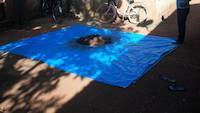 Here one can see the sample in the middle of the tent plastic canvas. The canvas shall be about 2 meters by 2 meters, this one is little larger. For larger canvas, more care must be taken to have proper mixing and removal of parts of sample during the quartering process. This picture is negatively educationl. Do not repeat what you see on this picture.
Here one can see the sample in the middle of the tent plastic canvas. The canvas shall be about 2 meters by 2 meters, this one is little larger. For larger canvas, more care must be taken to have proper mixing and removal of parts of sample during the quartering process. This picture is negatively educationl. Do not repeat what you see on this picture. - Quartering - dividing the sample into four equal parts
Quartering is standard process to divide the sample into four equal parts. It is sample reduction process. Even though it may seem simple on pictures, it is not as simple if we are quartering sample which shall be assayed for gold grade. Small details of the techniques of quartering are very important, as otherwise gold contamination occurs and sample assays higher than it should be. Tips and tricks are explained on these pages about sampling and quartering methods. - Mixing the smple on table oilcloth, nylon or plastic canvas
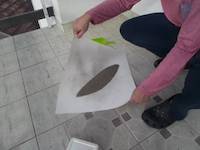 This series of pictures will demonstrate how to mix the sample on the table oilcloth, nylon or plastic canvas. The procedure is standard, hundred yeasr old yet not as known and practiced by small scale miners in Africa.
This series of pictures will demonstrate how to mix the sample on the table oilcloth, nylon or plastic canvas. The procedure is standard, hundred yeasr old yet not as known and practiced by small scale miners in Africa. - How to prepare the square table oilcloth for sample mixing
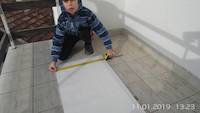 These pictures will show how to prepare the square table oilcloth or other type of plastic canvas for purposes of mixing the sample. The process is simple, find out what is the quantity of the sample, try to estimate the square size, find the table oilcloth, measure its width and if width is good enough for the sample size, cut it to the length of the width, and you have got the square. While this process may be sample in its words to some people, to some other people it is complicated. Pictures are there to give the mass to the reader so that process can be easier understood.
These pictures will show how to prepare the square table oilcloth or other type of plastic canvas for purposes of mixing the sample. The process is simple, find out what is the quantity of the sample, try to estimate the square size, find the table oilcloth, measure its width and if width is good enough for the sample size, cut it to the length of the width, and you have got the square. While this process may be sample in its words to some people, to some other people it is complicated. Pictures are there to give the mass to the reader so that process can be easier understood. - Sampling, Coning, Quartering, Reducing of Samples, the sampling series of pictures and videos to Start Your Own Gold Mine
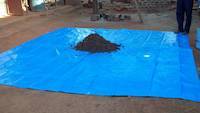 We present here the standard sampling, coning, quartering, reducing of samples and the whole sampling series of pictures and videos to Start Your Own Gold Mine for our staff members, gold prospectors and clients. Videos and pictures on sampling methods and procedures are not necessary published in certain order. We are advising clients and staff members upon need and demand, on which video and picture to watch, to understand proper and standard sampling methods and preparations of samples.
We present here the standard sampling, coning, quartering, reducing of samples and the whole sampling series of pictures and videos to Start Your Own Gold Mine for our staff members, gold prospectors and clients. Videos and pictures on sampling methods and procedures are not necessary published in certain order. We are advising clients and staff members upon need and demand, on which video and picture to watch, to understand proper and standard sampling methods and preparations of samples. - Mixing the sample in canvas, video
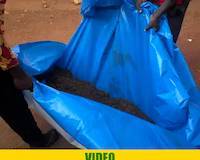 Video showing people mixing the sample in canvas.
Video showing people mixing the sample in canvas. - Mixing the sample in canvas
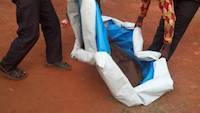 To ensure an accurate gold concentration determination, individuals mix samples of mixed minerals on canvases using their hands or tools to achieve uniformity throughout and maintain consistent quality control measures such as uniform distribution across variables like geological conditions during formation and mining methods used for extraction. This also aids better understanding of ore quality distribution which is crucial when planning subsequent mining operations to maximize profit margins within given constraints, while minimizing environmental impact from inefficient resource utilization patterns.
To ensure an accurate gold concentration determination, individuals mix samples of mixed minerals on canvases using their hands or tools to achieve uniformity throughout and maintain consistent quality control measures such as uniform distribution across variables like geological conditions during formation and mining methods used for extraction. This also aids better understanding of ore quality distribution which is crucial when planning subsequent mining operations to maximize profit margins within given constraints, while minimizing environmental impact from inefficient resource utilization patterns. - Mixing the samples in canvas with rolled edges
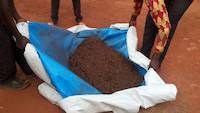 People are mixing the sample in canvas with rolled edges.
People are mixing the sample in canvas with rolled edges. - Rolling the edges of canvas to easier mix the sample
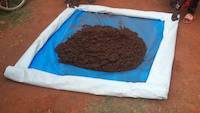 When canvas appears too long, the edges could be rolled to easier mix the sample.
When canvas appears too long, the edges could be rolled to easier mix the sample. - The sample has to be mixed well by using canvas, in opposite directions
 Sample must be mixed well by rolling the canvas from one side to other and then exchanging the directions and rolling it again from side to side.
Sample must be mixed well by rolling the canvas from one side to other and then exchanging the directions and rolling it again from side to side. - Mixing and rolling of the sample on ground
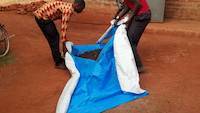 Staff members are now mixing and rolling the sample on ground.
Staff members are now mixing and rolling the sample on ground. - The sample placed in the center of the square canvas
 The staff members are placing the samples in the middle of the square of plastic canvas.
The staff members are placing the samples in the middle of the square of plastic canvas. - Sample is placed in the center of square plastic canvas
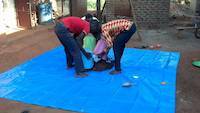 The staff members are placing the samples in the middle of the square of plastic canvas.
The staff members are placing the samples in the middle of the square of plastic canvas. - Placement of sample from buckets into the center of the square canvas
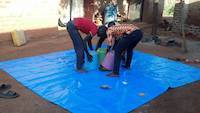 The staff members are placing the samples in the middle of the square of plastic canvas.
The staff members are placing the samples in the middle of the square of plastic canvas. - Placement of sample from sample buckets into the middle of plastic canvas
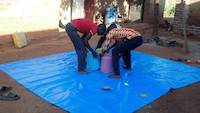 The staff members are placing the samples in the middle of the square of plastic canvas.
The staff members are placing the samples in the middle of the square of plastic canvas. - Placement of sample in the middle of square plastic canvas
 The staff members are placing the samples in the middle of the square of plastic canvas.
The staff members are placing the samples in the middle of the square of plastic canvas. - The square plastic canvas prepared on ground for sample mixing
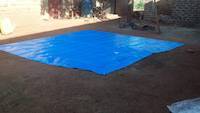 This is the square plastic canvas that is prepared on ground for purposes of sample mixing.
This is the square plastic canvas that is prepared on ground for purposes of sample mixing. - Plastic canvas for sample mixing
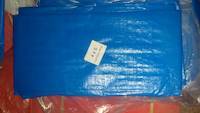 This is plastic canvas for tents. We are using this to mix the sample quickly on ground, without loosing any piece of soil.
This is plastic canvas for tents. We are using this to mix the sample quickly on ground, without loosing any piece of soil. - Incorrect: canvas too small for sample
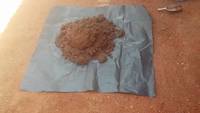 On this picture we are using the canvas and rolling method to mix the sample. But the sample is clearly too big for this square of nylon to be mixed.
On this picture we are using the canvas and rolling method to mix the sample. But the sample is clearly too big for this square of nylon to be mixed. - Sample mixing by use of canvas
 The final sample max be mixed by various methods, standard method is quartering which may be done with shovels, with machines, and with canvas or table oilcloths, or other similar plastic canvas. On these pages we are demonstrating the process of preparation and mixing of the sample to educate our staff members and clients.
The final sample max be mixed by various methods, standard method is quartering which may be done with shovels, with machines, and with canvas or table oilcloths, or other similar plastic canvas. On these pages we are demonstrating the process of preparation and mixing of the sample to educate our staff members and clients. - Mr. Okedi, gold panning in Amonikakinei, Uganda
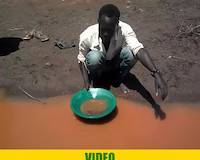 Mr. Okedi, a diligent sluice operation assistant from Uganda's Busia district, is currently engaged in gold panning at Amonikakinei beach in Uganda. This ancient method of extracting gold involves using tools like pans and sluices to separate lighter materials (gravel, sand) from heavier objects such as gold due to differences in density. Gold panning requires patience, skillful manipulation of water levels, keen observation for spotting gold particles, and physical labor. Mr. Okedi's work at Amonikakinei demonstrates the ongoing practice of this historical technique used worldwide by various cultures seeking natural wealth from river deposits like those found along River Okame in Uganda.
Mr. Okedi, a diligent sluice operation assistant from Uganda's Busia district, is currently engaged in gold panning at Amonikakinei beach in Uganda. This ancient method of extracting gold involves using tools like pans and sluices to separate lighter materials (gravel, sand) from heavier objects such as gold due to differences in density. Gold panning requires patience, skillful manipulation of water levels, keen observation for spotting gold particles, and physical labor. Mr. Okedi's work at Amonikakinei demonstrates the ongoing practice of this historical technique used worldwide by various cultures seeking natural wealth from river deposits like those found along River Okame in Uganda. - Mr. Tibasima, gold panning for gold at river Okame, near Amonikakinei, Uganda
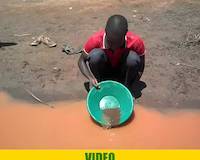 This is Mr. Tibasima, the sluice operation assistant, gold panning for gold at river Okame, near Amonikakinei, Uganda…
This is Mr. Tibasima, the sluice operation assistant, gold panning for gold at river Okame, near Amonikakinei, Uganda… - Fine gold totally recovered in the gold pan, Geita, Tanzania, January 8th 2019
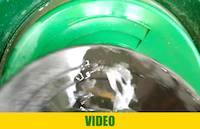 This is fine gold totally recovered from milled rocks. This video serves as evidences that powder as result of rock crushing and milling, can be panned down to fine gold, with all other particles fully removed. Thus the gold panning can be used as quantitative tool just as described by Paul K. Theobalrd, Jr. in the book "The Gold Pan as a Quantitative Geologic Tool"…
This is fine gold totally recovered from milled rocks. This video serves as evidences that powder as result of rock crushing and milling, can be panned down to fine gold, with all other particles fully removed. Thus the gold panning can be used as quantitative tool just as described by Paul K. Theobalrd, Jr. in the book "The Gold Pan as a Quantitative Geologic Tool"… - The proof how gold panning can be done
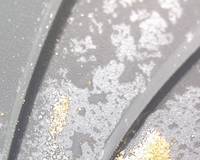 This is the proof how gold panning can be done, this is the result of gold panning of finely milled rocks as small as 50 mesh and smaller than 100 mesh, in Geita, Tanzania, on January 8th 2019.
This is the proof how gold panning can be done, this is the result of gold panning of finely milled rocks as small as 50 mesh and smaller than 100 mesh, in Geita, Tanzania, on January 8th 2019. - Fine gold in the pan, Geita, Tanzania
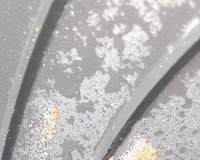 Gold panning in Geita, Tanzania, on January 8th 2019…
Gold panning in Geita, Tanzania, on January 8th 2019… - Gold panning in Geita, Tanzania, 2019-01-08
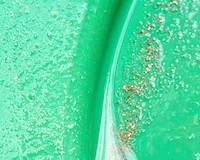 Gold panning in Geita, Tanzania on January 8th 2019…
Gold panning in Geita, Tanzania on January 8th 2019… - The fine gold in the gold pan, Geita, Tanzania
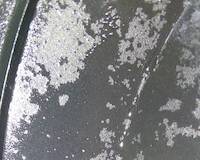 This is the fine gold in the gold pan, Geita, Tanzania.
This is the fine gold in the gold pan, Geita, Tanzania. - Fine gold in the pan, Geita, Tanzania
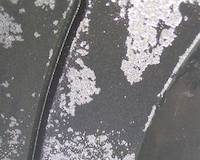 Date: 2019-01-08 Geita, Tanzania Our Organization Executive Secretary I/C in Geita, Tanzania have been gold panning, and this is the result of the today's practice.
Date: 2019-01-08 Geita, Tanzania Our Organization Executive Secretary I/C in Geita, Tanzania have been gold panning, and this is the result of the today's practice. - The width of grizzly bars to be 125-126 cm
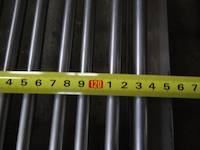 On this picture one can see that the width of the grizzly bars is 125.5 cm. Generally recommended measure is minimum of 120 cm which is good enough for 5 people to shovel each 30-40 kg per minute, or good enough to unload 4-5 wheelbarrows, each with 40-50 kg per load.
On this picture one can see that the width of the grizzly bars is 125.5 cm. Generally recommended measure is minimum of 120 cm which is good enough for 5 people to shovel each 30-40 kg per minute, or good enough to unload 4-5 wheelbarrows, each with 40-50 kg per load. - The width of the classifier is 120 cm to 126 cm
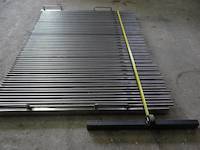 On this picture one can see the measurement of the width of the grizzly bars, which is 120 cm to 126 cm in total.
On this picture one can see the measurement of the width of the grizzly bars, which is 120 cm to 126 cm in total. - The width of the grizzly bars is about 120 - 126 cm
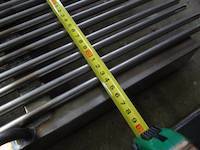 The width of the grizzly bars is about 120 - 126 cm, in general we make it minimally 120 cm. The hooper or feeder boxes are made later out of wooden boards, and classifier is mounted for 10 tonnes per hour capacity.
The width of the grizzly bars is about 120 - 126 cm, in general we make it minimally 120 cm. The hooper or feeder boxes are made later out of wooden boards, and classifier is mounted for 10 tonnes per hour capacity. - The length of the grizzly bars is 100 cm
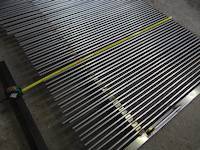 The length of the grizzly bars is 100 cm as shown better on this picture and other picture in this series. The SYOGM™ Gold Recovery Plant has capacity of 10 tonnes per hour and allows 5 people to shovel each 30-40 kg per minute or to unload 4-5 wheelbarrows full of soil of about 40-50 kg weight.
The length of the grizzly bars is 100 cm as shown better on this picture and other picture in this series. The SYOGM™ Gold Recovery Plant has capacity of 10 tonnes per hour and allows 5 people to shovel each 30-40 kg per minute or to unload 4-5 wheelbarrows full of soil of about 40-50 kg weight. - The length of grizzly bars is about 100 cm
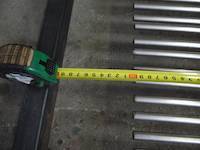 We construct various types of grizzly bars and the length of these grizzly bars is about 100 cm. It could be longer or shorter, that depends of various circumstances. These measurements of the classifiers are shown for our suppliers on the ground in East Africa as they are constructing same types of equipment exactly as given on these pictures and in our blueprints. Start Your Own Gold Mine program is provided in East Africa, since end of 2018 and begin of 2019, in Rwanda, Uganda, Kenya and Tanzania.
We construct various types of grizzly bars and the length of these grizzly bars is about 100 cm. It could be longer or shorter, that depends of various circumstances. These measurements of the classifiers are shown for our suppliers on the ground in East Africa as they are constructing same types of equipment exactly as given on these pictures and in our blueprints. Start Your Own Gold Mine program is provided in East Africa, since end of 2018 and begin of 2019, in Rwanda, Uganda, Kenya and Tanzania. - It is about 125.5 cm width, general width is 120 cm for our 10 tonnes per hour classifier
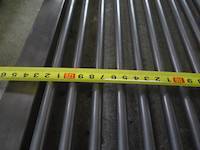 The width is shown here as about 125.5 cm in total. We assume that general width of the SYOGM™ Gold Recovery Plant classifier is 120 cm which is good enough for 5 people to shovel material inside and also good enough for unload of the single wheelbarrow of 40-50 kg.
The width is shown here as about 125.5 cm in total. We assume that general width of the SYOGM™ Gold Recovery Plant classifier is 120 cm which is good enough for 5 people to shovel material inside and also good enough for unload of the single wheelbarrow of 40-50 kg. - The measure of grizzly bars or classifier begins from the outer starting point
 On this picture you may see that the measure begins from the outer point of this classifier.
On this picture you may see that the measure begins from the outer point of this classifier. - The width of SYOGM™ Classifier is 120 cm
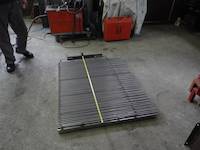 The width of the SYOGM™ Gold Recovery Plant classifier for 10 tonnes per hour capacity is 120 cm. It is constructed this time of the plain stainless steel or inox as found cheaply in Croatia, Europe, and manufactured in the workshop of our favorite and skilled metal technician. The classifier is used to remove unwanted particle sizes, so that such may be analysed and verified if they need to be crushed and milled for gold recovery. Smaller particle sizes are flowing through the sluice, and heavy…
The width of the SYOGM™ Gold Recovery Plant classifier for 10 tonnes per hour capacity is 120 cm. It is constructed this time of the plain stainless steel or inox as found cheaply in Croatia, Europe, and manufactured in the workshop of our favorite and skilled metal technician. The classifier is used to remove unwanted particle sizes, so that such may be analysed and verified if they need to be crushed and milled for gold recovery. Smaller particle sizes are flowing through the sluice, and heavy… - The 10 tonnes per hour classifier for SYOGM™ Gold Recovery Plant
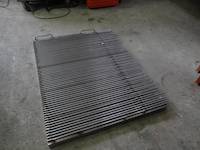 This is 10 tonnes per hour classifier for larger particle of 1 cm, so that unwanted particle sizes can be discarded, and that rocks of that size may be crushed and milled provided they contain enough profitable gold. The sluice is made with the purpose to process alluvial soil and tailing heaps. People may throw onto them one full 40-50 kg wheelbarrow of soil or gravel, and classification with the spray bars is almost instant, depending of the water pressure and the actual setup. Four to five wheelbarrows…
This is 10 tonnes per hour classifier for larger particle of 1 cm, so that unwanted particle sizes can be discarded, and that rocks of that size may be crushed and milled provided they contain enough profitable gold. The sluice is made with the purpose to process alluvial soil and tailing heaps. People may throw onto them one full 40-50 kg wheelbarrow of soil or gravel, and classification with the spray bars is almost instant, depending of the water pressure and the actual setup. Four to five wheelbarrows… - Single sluice grizzly bars in manufacture
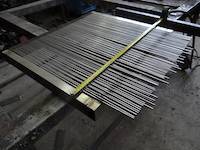 This is the single sluice classifier and grizzly bars during manufacture process. The width is 60 cm. The bars will be adjusted one to each other during the process for even separation.
This is the single sluice classifier and grizzly bars during manufacture process. The width is 60 cm. The bars will be adjusted one to each other during the process for even separation. - The grizzly bars of 3-4 mm for gold recovery system
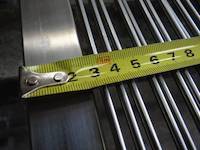 These grizzly bars are used to construct the quick classifier. This type of steel is not hardened, it is standard inox or stainless steel in Europe. The single classifying grizzly bars remove the unwanted particles sizes in gold recovery applications. In comparison to perforated metal sheets, such one way classifiers are way faster and increase the speed of work and thus the capacity of ore processing. With 1 sluice and 10 hours of work per day and gold grade of 0.30 we can make 180.00 grams of gold,…
These grizzly bars are used to construct the quick classifier. This type of steel is not hardened, it is standard inox or stainless steel in Europe. The single classifying grizzly bars remove the unwanted particles sizes in gold recovery applications. In comparison to perforated metal sheets, such one way classifiers are way faster and increase the speed of work and thus the capacity of ore processing. With 1 sluice and 10 hours of work per day and gold grade of 0.30 we can make 180.00 grams of gold,… - The width of single sluice grizzly bars is 60 cm
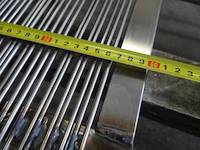 For the time being of 2018 and begin of 2019, in the program Start Your Own Gold Mine we are using single sluices with the width of 60 cm. On the picture one can see the measurement of small grizzly bars and that the final width is 60 cm. The length of such classifier may be about 60 cm to 100 cm, that is matter of decision and estimates. Classifier like this can have bars as small as 4 mm diameter.
For the time being of 2018 and begin of 2019, in the program Start Your Own Gold Mine we are using single sluices with the width of 60 cm. On the picture one can see the measurement of small grizzly bars and that the final width is 60 cm. The length of such classifier may be about 60 cm to 100 cm, that is matter of decision and estimates. Classifier like this can have bars as small as 4 mm diameter. - The workshop and manufacture of the screen, grizzly bars for gravel classification
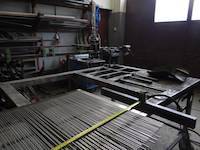 This is the workshop in Europe, Croatia, where we are manufacturing some of the gold mining equipment for the purposes of our investments from company GOLDIVANTI LP and business program Start Your Own Gold Mine that started back in 2013. As of end of 2018 and 2019, the business program Start Your Own Gold Mine is conducted in four countries, Rwanda, Uganda, Kenya and Tanzania and in other countries by request. On this picture one can see the bars made of inox steel or stainless steel. We did not…
This is the workshop in Europe, Croatia, where we are manufacturing some of the gold mining equipment for the purposes of our investments from company GOLDIVANTI LP and business program Start Your Own Gold Mine that started back in 2013. As of end of 2018 and 2019, the business program Start Your Own Gold Mine is conducted in four countries, Rwanda, Uganda, Kenya and Tanzania and in other countries by request. On this picture one can see the bars made of inox steel or stainless steel. We did not… - Feeder for SYOGM Rock Impact Mill
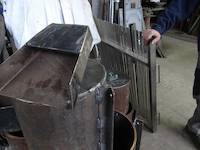 This is feeder for the impact mill, shown from different side.
This is feeder for the impact mill, shown from different side. - SYOGM Rock Impact Mills And Classifier In The Workshop
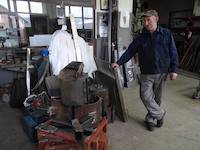 One can see here our favorite, for decades experienced metal technician who is leading the workshop in construction of our mining equipment. The program Start Your Own Gold Mine is conducted in East Africa, in Rwanda, Uganda, Kenya and Tanzania, and provide our clients with full SYOGM™ Gold Recovery Plant with 10 tonnes capacity per hour.
One can see here our favorite, for decades experienced metal technician who is leading the workshop in construction of our mining equipment. The program Start Your Own Gold Mine is conducted in East Africa, in Rwanda, Uganda, Kenya and Tanzania, and provide our clients with full SYOGM™ Gold Recovery Plant with 10 tonnes capacity per hour. - Perforated metal screen used in SYOGM Rock Impact Mills
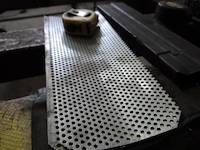 This type of perforated metal screen is used in impact mills with more or less opening sizes depending of the need.
This type of perforated metal screen is used in impact mills with more or less opening sizes depending of the need. - Feeders for impact mills
 One may see the feeder mounted on one of the impact mills.
One may see the feeder mounted on one of the impact mills. - The production of SYOGM Rock Impact Mills in our workshop in Croatia
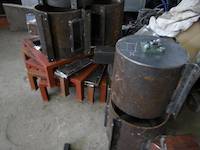 This picture shows the production of impact mills in our workshop in Croatia. Each such impact mill may handle 500 kg of rocks per hour and more than that.
This picture shows the production of impact mills in our workshop in Croatia. Each such impact mill may handle 500 kg of rocks per hour and more than that. - The construction of impact mills for rock milling
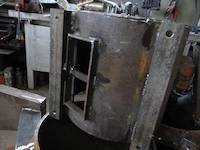 On this picture one can see some details of the construction of impact mills in our workshop in Croatia, Europe. Each such impact mill has capacity of minimum 500 kg per hour, and may mill the rocks down to the powder as small as 50 mesh and smaller.
On this picture one can see some details of the construction of impact mills in our workshop in Croatia, Europe. Each such impact mill has capacity of minimum 500 kg per hour, and may mill the rocks down to the powder as small as 50 mesh and smaller. - The impact mills during the manufacture time
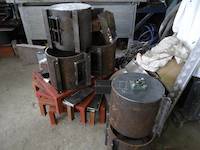 These are the impact mills during the manufacture in our workshop in Croatia. Each impact mill may handle about 500 kg of material easy, or even more with better classification or setups. They are manufactured by company's financed blueprints and engineered designs, and by technician with decades of experience.
These are the impact mills during the manufacture in our workshop in Croatia. Each impact mill may handle about 500 kg of material easy, or even more with better classification or setups. They are manufactured by company's financed blueprints and engineered designs, and by technician with decades of experience. - Basic usage of SYOGM Auger
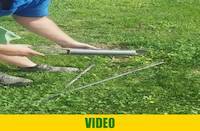 The video shows our manufacturer of SYOGM Augers and basic usage on how to obtain soil samples. Augers are extensible and may go as deep as the strength of the user.
The video shows our manufacturer of SYOGM Augers and basic usage on how to obtain soil samples. Augers are extensible and may go as deep as the strength of the user. - When black sand is not agitated, there is no true panning
 This short educational video will show black sand in the pan, but it is not agitated. There is shaking and movements of hands and the Garrett Prospecting Pan. Yet one can see that the black sand in the gold pan is not agitated. It does not move as slurry. It is not liquid and not stirred with the water. Gold particles inside of this non-agitated black sand are trapped and have no space nor time to fall into the riffles and to get into concentration. This will tell you that shaking has the purpose…
This short educational video will show black sand in the pan, but it is not agitated. There is shaking and movements of hands and the Garrett Prospecting Pan. Yet one can see that the black sand in the gold pan is not agitated. It does not move as slurry. It is not liquid and not stirred with the water. Gold particles inside of this non-agitated black sand are trapped and have no space nor time to fall into the riffles and to get into concentration. This will tell you that shaking has the purpose… - Sluice almost finished
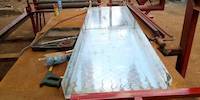 One can see here two sluice inserts that fit into each other. We put great stress that any well known and researched parts of the sluice are applied and that turbulences are avoided and that several multiple gold recovery methods are used to bring about the best gold concentrate one can find.
One can see here two sluice inserts that fit into each other. We put great stress that any well known and researched parts of the sluice are applied and that turbulences are avoided and that several multiple gold recovery methods are used to bring about the best gold concentrate one can find. - Finalization of sluices
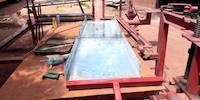 Sluices need to be bent and prepared to fit one into each other. Each sluice has its entry, its exit, its first entrance dimension where inner width is important and its exit width where the outer width is important to be measured and properly applied. Only carefuylly measured sluices may fit one into each other. We always start with the basic chequered alluminum sheets and then apply several methods for gold recovery of every possible particle size and shape. Majority of materials, in its low quality…
Sluices need to be bent and prepared to fit one into each other. Each sluice has its entry, its exit, its first entrance dimension where inner width is important and its exit width where the outer width is important to be measured and properly applied. Only carefuylly measured sluices may fit one into each other. We always start with the basic chequered alluminum sheets and then apply several methods for gold recovery of every possible particle size and shape. Majority of materials, in its low quality… - Sluice bending in Geita, Tanzania
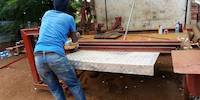 The workshop in Geita, Tanzania is open air workshop, with person that is enough skilled to listen to our dimensions and to bend sluices on an improvized metal brake or metal bending device. As all sluice inserts need to fit one into each other, this is not an easy task to do. Skilled technicians can understand the requirement and simply make it happen.
The workshop in Geita, Tanzania is open air workshop, with person that is enough skilled to listen to our dimensions and to bend sluices on an improvized metal brake or metal bending device. As all sluice inserts need to fit one into each other, this is not an easy task to do. Skilled technicians can understand the requirement and simply make it happen. - Epsom Ltd. the metal workshop in Geita, Tanzania
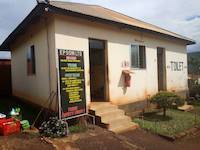 This is one of feature rich workshops for metal works in Geita, Tanzania. EPSOM LTD is company that can deliver good works that no average welder can in the area.
This is one of feature rich workshops for metal works in Geita, Tanzania. EPSOM LTD is company that can deliver good works that no average welder can in the area. - Start Your Own Gold Mine in Rwanda, since 2018
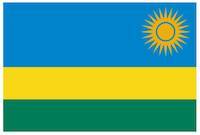 The company and business startup program is in existence in Rwanda since end of the year 2018. START YOUR OWN GOLD MINE Ltd is private company limited by shares with the company code being 108470653, and registered in Rwanda. Directors are Mr. Clement Kizito and Mr. Jean Louis. Company provides the business startup program for small scale gold mining, sales of mining equipment, and develops own gold mining activities.
The company and business startup program is in existence in Rwanda since end of the year 2018. START YOUR OWN GOLD MINE Ltd is private company limited by shares with the company code being 108470653, and registered in Rwanda. Directors are Mr. Clement Kizito and Mr. Jean Louis. Company provides the business startup program for small scale gold mining, sales of mining equipment, and develops own gold mining activities.
- Banka Drill Educational Video
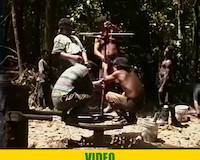 This is Banka Drill, famous drilling rig manually operated and perfect for distant and hard to reach locations. This location have been accessed by boats, and team of people was able to drill down and obtain samples. Please observe following: 1) Man power is enough to operate the drilling rig 2) Each part of the drilling rig may be carried on the back of one person 3) Samples have been processed on the site by using simple sluice…
This is Banka Drill, famous drilling rig manually operated and perfect for distant and hard to reach locations. This location have been accessed by boats, and team of people was able to drill down and obtain samples. Please observe following: 1) Man power is enough to operate the drilling rig 2) Each part of the drilling rig may be carried on the back of one person 3) Samples have been processed on the site by using simple sluice… - Video of shaker tables for chromite mineral processing Cr2O3
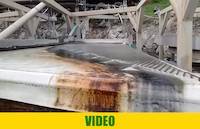 This is yet another video of shaker tables for chromite mineral processing. Our company Start Your Own Gold Mine may provide chromite concentrate and exports to any country in the world. Contact us to obtain chromite concentrates delivered to your door. Payments are required before the shipping.
This is yet another video of shaker tables for chromite mineral processing. Our company Start Your Own Gold Mine may provide chromite concentrate and exports to any country in the world. Contact us to obtain chromite concentrates delivered to your door. Payments are required before the shipping. - The video of shaker tables for chromite Cr2O3 mineral concentration
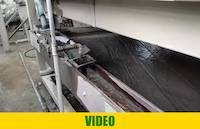 These are shaker tables for chromite Cr2O3 mineral concentration. Our company Start Your Own Gold Mine may provide chromite concentrate and exports to any country in the world. Contact us to obtain chromite concentrates delivered to your door. Payments are required before the shipping.
These are shaker tables for chromite Cr2O3 mineral concentration. Our company Start Your Own Gold Mine may provide chromite concentrate and exports to any country in the world. Contact us to obtain chromite concentrates delivered to your door. Payments are required before the shipping. - Reichert spirals in work for chromite mineral Cr2O3 concentration
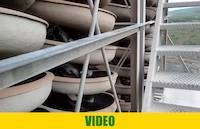 These are Reichert spirals for chromite mineral Cr2O3 concentration. Our company Start Your Own Gold Mine may provide chromite concentrate and exports to any country in the world. Contact us to obtain chromite concentrates delivered to your door. Payments are required before the shipping.
These are Reichert spirals for chromite mineral Cr2O3 concentration. Our company Start Your Own Gold Mine may provide chromite concentrate and exports to any country in the world. Contact us to obtain chromite concentrates delivered to your door. Payments are required before the shipping. - Video of ball mills, separators, jigs for chromite mineral concentration
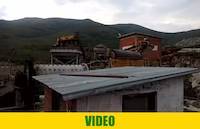 This video shows ball mills, separators and jigs for chromite mineral Cr2O3 concentration. Our company Start Your Own Gold Mine may provide chromite concentrate and exports to any country in the world. Contact us to obtain chromite concentrates delivered to your door. Payments are required before the shipping.
This video shows ball mills, separators and jigs for chromite mineral Cr2O3 concentration. Our company Start Your Own Gold Mine may provide chromite concentrate and exports to any country in the world. Contact us to obtain chromite concentrates delivered to your door. Payments are required before the shipping. - Video of mineral processing plant for chromite Cr2O3 mineral with arrays of shaker tables
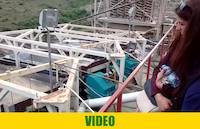 This video shows arrays of shaker tables for concentration of chromite mineral Cr2O3. Our company Start Your Own Gold Mine may provide chromite concentrate and exports to any country in the world. Contact us to obtain chromite concentrates delivered to your door. Payments are required before the shipping.
This video shows arrays of shaker tables for concentration of chromite mineral Cr2O3. Our company Start Your Own Gold Mine may provide chromite concentrate and exports to any country in the world. Contact us to obtain chromite concentrates delivered to your door. Payments are required before the shipping. - Video of shaker table concentrating the chromite Cr2O3 mineral
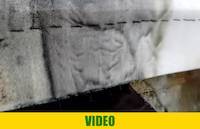 This is video of shaker table producing the concentrat of chromite Cr2O3 mineral. Our company Start Your Own Gold Mine may provide chromite concentrate and exports to any country in the world. Contact us to obtain chromite concentrates delivered to your door. Payments are required before the shipping.
This is video of shaker table producing the concentrat of chromite Cr2O3 mineral. Our company Start Your Own Gold Mine may provide chromite concentrate and exports to any country in the world. Contact us to obtain chromite concentrates delivered to your door. Payments are required before the shipping. - The video of shaker table concentration of chromite (Cr2O3) mineral
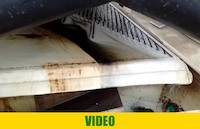 This video shows how chromite Cr2O3 mineral is being concentrated by using shaker table. It is not most efficient method, yet it is workable to a degree. Our company Start Your Own Gold Mine may provide chromite concentrate and exports to any country in the world. Contact us to obtain chromite concentrates delivered to your door. Payments are required before the shipping.
This video shows how chromite Cr2O3 mineral is being concentrated by using shaker table. It is not most efficient method, yet it is workable to a degree. Our company Start Your Own Gold Mine may provide chromite concentrate and exports to any country in the world. Contact us to obtain chromite concentrates delivered to your door. Payments are required before the shipping. - Shaker table for chromite mineral concentration
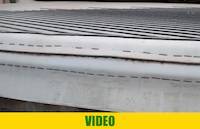 These shaker tables have been made in China for chromite (Cr2O3) mineral concentration processing. Our company Start Your Own Gold Mine may provide chromite concentrate and exports to any country in the world. Contact us to obtain chromite concentrates delivered to your door. Payments are required before the shipping.
These shaker tables have been made in China for chromite (Cr2O3) mineral concentration processing. Our company Start Your Own Gold Mine may provide chromite concentrate and exports to any country in the world. Contact us to obtain chromite concentrates delivered to your door. Payments are required before the shipping. - Mineral processing plant video for chromite concentrate Cr2O3
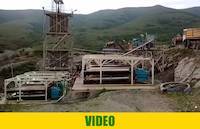 This is short video of mineral processing plant for chromite concentrate Cr2O3 that uses ball mills, rock crushers and rock hammers, and shaker tables. Our company Start Your Own Gold Mine may provide chromite concentrate and exports to any country in the world. Contact us to obtain chromite concentrates delivered to your door. Payments are required before the shipping.
This is short video of mineral processing plant for chromite concentrate Cr2O3 that uses ball mills, rock crushers and rock hammers, and shaker tables. Our company Start Your Own Gold Mine may provide chromite concentrate and exports to any country in the world. Contact us to obtain chromite concentrates delivered to your door. Payments are required before the shipping. - Reichert spirals used to produce the chromite concentrate
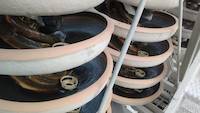 The Reichert spirals are not the most efficient equipment. Yet they are used on this mineral processing plant as part of equipment that is concentrating the chromite concentrates or Cr2O3. Our company Start Your Own Gold Mine may provide chromite concentrate and exports to any country in the world. Contact us to obtain chromite concentrates delivered to your door. Payments are required before the shipping.
The Reichert spirals are not the most efficient equipment. Yet they are used on this mineral processing plant as part of equipment that is concentrating the chromite concentrates or Cr2O3. Our company Start Your Own Gold Mine may provide chromite concentrate and exports to any country in the world. Contact us to obtain chromite concentrates delivered to your door. Payments are required before the shipping. - Chromite concentrate in the gold pan
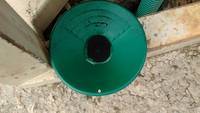 This is 49% chromite concentrate in the gold pan or Cr2O3. Our company Start Your Own Gold Mine may provide chromite concentrate and exports to any country in the world. Contact us to obtain chromite concentrates delivered to your door. Payments are required before the shipping.
This is 49% chromite concentrate in the gold pan or Cr2O3. Our company Start Your Own Gold Mine may provide chromite concentrate and exports to any country in the world. Contact us to obtain chromite concentrates delivered to your door. Payments are required before the shipping. - The chromite mineral processing plant
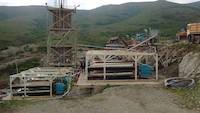 This is mineral processing plant specialized to produce chromite concentrates. Our company Start Your Own Gold Mine may provide chromite concentrate and exports to any country in the world. Contact us to obtain chromite concentrates delivered to your door. Payments are required before the shipping.
This is mineral processing plant specialized to produce chromite concentrates. Our company Start Your Own Gold Mine may provide chromite concentrate and exports to any country in the world. Contact us to obtain chromite concentrates delivered to your door. Payments are required before the shipping. - Stockpile of chromite concentrate
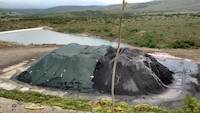 This is stockpile of chromite concentrate containg about 49% of Cr2O3. Our company Start Your Own Gold Mine may provide chromite concentrate and exports to any country in the world. Contact us to obtain chromite concentrates delivered to your door. Payments are required before the shipping.
This is stockpile of chromite concentrate containg about 49% of Cr2O3. Our company Start Your Own Gold Mine may provide chromite concentrate and exports to any country in the world. Contact us to obtain chromite concentrates delivered to your door. Payments are required before the shipping. - Chromite Cr2O3 Concentrate Deliveries
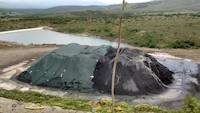 Our company Start Your Own Gold Mine delivers chromite Cr2O3 concentrate to any country in the world. Payments for chromite shall be done before the shipping, rarely upon deliveries, that depends of the reputability of the buyer. The concentration may be about 49% - 50%, contact us for exact assays and analysis of the stockpiles.
Our company Start Your Own Gold Mine delivers chromite Cr2O3 concentrate to any country in the world. Payments for chromite shall be done before the shipping, rarely upon deliveries, that depends of the reputability of the buyer. The concentration may be about 49% - 50%, contact us for exact assays and analysis of the stockpiles. - Air Compressor Kaeser M25 nr. 2 for sale in Tanzania
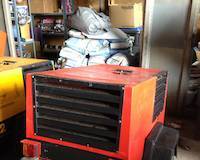 This is Air Compressor Kaeser M25 for sale in Tanzania. It is usable in mining and other industry applications. Refurbished, second hand from Germany, with new batteries and filters. May include pipes, hoses, and jackhammers. We work in all cities of Tanzania, Mbeya, Morogoro, Dar es Salaam, Geita, Kahama, Arusha, just contact us and we will sell air compressor and jackhammers to you.
This is Air Compressor Kaeser M25 for sale in Tanzania. It is usable in mining and other industry applications. Refurbished, second hand from Germany, with new batteries and filters. May include pipes, hoses, and jackhammers. We work in all cities of Tanzania, Mbeya, Morogoro, Dar es Salaam, Geita, Kahama, Arusha, just contact us and we will sell air compressor and jackhammers to you. - Air Compressor Kaeser M25 for sale in Tanzania
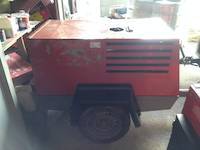 This is Air Compressor Kaeser M25 for sale in Tanzania. It is usable in mining and other industry applications. Refurbished, second hand from Germany, with new batteries and filters. May include pipes, hoses, and jackhammers. We work in all cities of Tanzania, Mbeya, Morogoro, Dar es Salaam, Geita, Kahama, Arusha, just contact us and we will sell air compressor and jackhammers to you.
This is Air Compressor Kaeser M25 for sale in Tanzania. It is usable in mining and other industry applications. Refurbished, second hand from Germany, with new batteries and filters. May include pipes, hoses, and jackhammers. We work in all cities of Tanzania, Mbeya, Morogoro, Dar es Salaam, Geita, Kahama, Arusha, just contact us and we will sell air compressor and jackhammers to you. - Air Compressor Kaeser M22 for sale in Tanzania
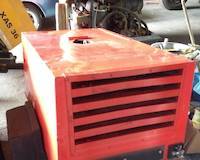 This is Air Compressor Kaeser M22 for sale in Tanzania. It is usable in mining and other industry applications. Refurbished, second hand from Germany, with new batteries and filters. May include pipes, hoses, and jackhammers. We work in all cities of Tanzania, Mbeya, Morogoro, Dar es Salaam, Geita, Kahama, Arusha, just contact us and we will sell air compressor and jackhammers to you.
This is Air Compressor Kaeser M22 for sale in Tanzania. It is usable in mining and other industry applications. Refurbished, second hand from Germany, with new batteries and filters. May include pipes, hoses, and jackhammers. We work in all cities of Tanzania, Mbeya, Morogoro, Dar es Salaam, Geita, Kahama, Arusha, just contact us and we will sell air compressor and jackhammers to you. - Air Compressor CompAir DLT 0404 for sale in Tanzania
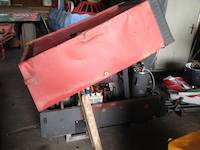 This is Air Compressor CompAir DLT 0404 for sale in Tanzania. It is usable in mining and other industry applications. Refurbished, second hand from Germany, with new batteries and filters. May include pipes, hoses, and jackhammers. We work in all cities of Tanzania, Mbeya, Morogoro, Dar es Salaam, Geita, Kahama, Arusha, just contact us and we will sell air compressor and jackhammers to you.
This is Air Compressor CompAir DLT 0404 for sale in Tanzania. It is usable in mining and other industry applications. Refurbished, second hand from Germany, with new batteries and filters. May include pipes, hoses, and jackhammers. We work in all cities of Tanzania, Mbeya, Morogoro, Dar es Salaam, Geita, Kahama, Arusha, just contact us and we will sell air compressor and jackhammers to you. - Sitemap for Gold Mining Equipment Sales in East Africa, in Tanzania, Uganda, Kenya
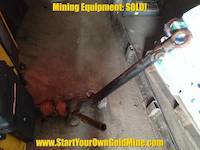 Sitemap for Gold Mining Equipment sales in East Africa, in Tanzania, Uganda and Kenya
Sitemap for Gold Mining Equipment sales in East Africa, in Tanzania, Uganda and Kenya - 💸 SOLD! Air Compressor Kaeser M25 for sale in Tanzania
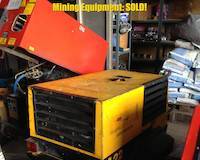 💸 SOLD! This is Air Compressor Air Compressor Kaeser M25 for sale in Tanzania. It is usable in mining and other industry applications. Refurbished, second hand from Germany, with new batteries and filters. May include pipes, hoses, and jackhammers. We work in all cities of Tanzania, Mbeya, Morogoro, Dar es Salaam, Geita, Kahama, Arusha, just contact us and we will sell air compressor and jackhammers to you.
💸 SOLD! This is Air Compressor Air Compressor Kaeser M25 for sale in Tanzania. It is usable in mining and other industry applications. Refurbished, second hand from Germany, with new batteries and filters. May include pipes, hoses, and jackhammers. We work in all cities of Tanzania, Mbeya, Morogoro, Dar es Salaam, Geita, Kahama, Arusha, just contact us and we will sell air compressor and jackhammers to you. - 💸 SOLD! - Air Compressor Atlas Copco XAS 50 for sale in Tanzania
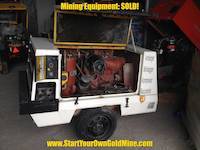 💸 SOLD! - This is Air Compressor Atlas Copco XAS 50 for sale in Tanzania. It is usable in mining and other industry applications. Refurbished, second hand from Germany, with new batteries and filters. May include pipes, hoses, and jackhammers. We work in all cities of Tanzania, Mbeya, Morogoro, Dar es Salaam, Geita, Kahama, Arusha, just contact us and we will sell air compressor and jackhammers to you.
💸 SOLD! - This is Air Compressor Atlas Copco XAS 50 for sale in Tanzania. It is usable in mining and other industry applications. Refurbished, second hand from Germany, with new batteries and filters. May include pipes, hoses, and jackhammers. We work in all cities of Tanzania, Mbeya, Morogoro, Dar es Salaam, Geita, Kahama, Arusha, just contact us and we will sell air compressor and jackhammers to you. - Air Compressor Atlas Copco XAS 36 for sale in Tanzania
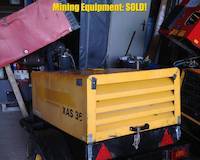 This is Air Compressor Atlas Copco XAS 36 for sale in Tanzania. It is usable in mining and other industry applications. Refurbished, second hand from Germany, with new batteries and filters. May include pipes, hoses, and jackhammers. We work in all cities of Tanzania, Mbeya, Morogoro, Dar es Salaam, Geita, Kahama, Arusha, just contact us and we will sell air compressor and jackhammers to you.
This is Air Compressor Atlas Copco XAS 36 for sale in Tanzania. It is usable in mining and other industry applications. Refurbished, second hand from Germany, with new batteries and filters. May include pipes, hoses, and jackhammers. We work in all cities of Tanzania, Mbeya, Morogoro, Dar es Salaam, Geita, Kahama, Arusha, just contact us and we will sell air compressor and jackhammers to you. - Gold Mining Equipment for Sale in Tanzania
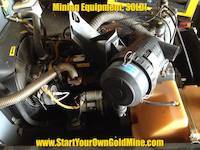 Gold mining equipment for sale in Tanzania by Start Your Own Gold Mine company for gold mining and Tanzanite Apollo for Tanzanite gemstone polishing is offered on these pages for Tanzanian territory. Whoever wish to buy our gold mining equipment, just contact us, and we will help you with best offers. We sell air compressors, jackhammers, diggers, explosives, drills, winches, timber, bricks, alluminum, sluices for gold washing, excavators, trucks, SUV or sport utility vehicles, bulldozers, cranes, gold pans, gold prospecting equipment, concentrators, chemicals, and you name it. Just contact us and let us know what you need.
Gold mining equipment for sale in Tanzania by Start Your Own Gold Mine company for gold mining and Tanzanite Apollo for Tanzanite gemstone polishing is offered on these pages for Tanzanian territory. Whoever wish to buy our gold mining equipment, just contact us, and we will help you with best offers. We sell air compressors, jackhammers, diggers, explosives, drills, winches, timber, bricks, alluminum, sluices for gold washing, excavators, trucks, SUV or sport utility vehicles, bulldozers, cranes, gold pans, gold prospecting equipment, concentrators, chemicals, and you name it. Just contact us and let us know what you need. - Long-range locator Forward Gauss VR-1000B-II exposed as fraudulent dowsing device in Tanzania
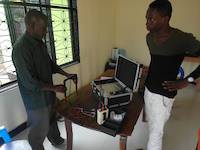 Yet another fraudulent geologist have been exposed as dowser and a modern "witch" in Tanzania. A fraudulent long-range locator device was used as fake metal detectors with claims to be able to find gold on distances such as up to 1000 meters on vertical and horizontal directions. The long-range locator device manufactured in China and named Forward Gauss VR-1000B-II have been exposed as dowsing device which falls in the category of witchcraft and not a science. The electronic circuits within the device detect no gold but are exclusively used to defraud people. Owners of such devices collect money from gullible small scale and artisanal miners in Tanzania. A simple test in our garden have exposed the owner not to be a geologist but a simple clown.
Yet another fraudulent geologist have been exposed as dowser and a modern "witch" in Tanzania. A fraudulent long-range locator device was used as fake metal detectors with claims to be able to find gold on distances such as up to 1000 meters on vertical and horizontal directions. The long-range locator device manufactured in China and named Forward Gauss VR-1000B-II have been exposed as dowsing device which falls in the category of witchcraft and not a science. The electronic circuits within the device detect no gold but are exclusively used to defraud people. Owners of such devices collect money from gullible small scale and artisanal miners in Tanzania. A simple test in our garden have exposed the owner not to be a geologist but a simple clown. - Fraudulent dowsing device Forward Gauss VR 5000 exposed in Tanzania
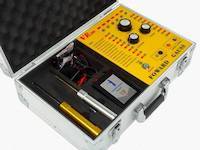 The fraudulent dowsing device Forward Gauss VR 5000 exposed in Tanzania. The fraudulent team of "geologists" claimed to be able to find hidden treasure such as burial reserves and German antiques that include and are not limited to German Duss or Deutz stove, ironbox, lantern, radio, padlocks, axe, hammer, wallclock, gramophone, sword, beacon/bayonnetes, boots, belt, wristwatch, bottle, spoon, German militaria antiques which contain natural red mercury, More to these are high grade uranium, gemstones, diamond, gold and treasure boxes full of pure Silver wares and a lot more.
The fraudulent dowsing device Forward Gauss VR 5000 exposed in Tanzania. The fraudulent team of "geologists" claimed to be able to find hidden treasure such as burial reserves and German antiques that include and are not limited to German Duss or Deutz stove, ironbox, lantern, radio, padlocks, axe, hammer, wallclock, gramophone, sword, beacon/bayonnetes, boots, belt, wristwatch, bottle, spoon, German militaria antiques which contain natural red mercury, More to these are high grade uranium, gemstones, diamond, gold and treasure boxes full of pure Silver wares and a lot more. - Dowsing exposed in gold mining activities
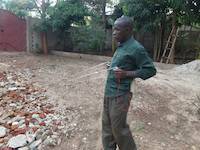 Dowsing or rhabdomancy is searching for underground water or minerals by using a dowsing rod. We are exposing any and all dowsing methods that are too often used in East Africa, in Tanzania, Uganda and Kenya by fraudulent geologist and operators who claim to be able to find valuable minerals by using dowsing and long-range locators which they call "detectors" but are nothing else but fraudulent devices. Too many small scale miners and artisanal miners and their families suffered for wrongdoings of dowsers or "geologist" who claimed to have dowsing abilities. Locating gold on distances of even several kilometers have been reported and exposed as false and fraudulent.
Dowsing or rhabdomancy is searching for underground water or minerals by using a dowsing rod. We are exposing any and all dowsing methods that are too often used in East Africa, in Tanzania, Uganda and Kenya by fraudulent geologist and operators who claim to be able to find valuable minerals by using dowsing and long-range locators which they call "detectors" but are nothing else but fraudulent devices. Too many small scale miners and artisanal miners and their families suffered for wrongdoings of dowsers or "geologist" who claimed to have dowsing abilities. Locating gold on distances of even several kilometers have been reported and exposed as false and fraudulent. - Pouring the gold into the mold
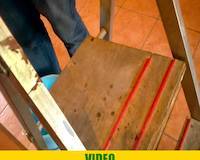 You may see here how gold is quickly poured into the hot mold. After pouring the gold into the mold, shake it a little, give it few kicks, so that any remaining impurities, dirt or borax or remaining particles of gold may come out. Keep those impurities for later refining.
You may see here how gold is quickly poured into the hot mold. After pouring the gold into the mold, shake it a little, give it few kicks, so that any remaining impurities, dirt or borax or remaining particles of gold may come out. Keep those impurities for later refining. - Quickly adding gold scrap into the melting oven
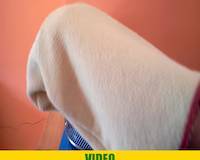 If you wish to add some gold into the melting oven, do not delay as not to decrease the temperature. Quickly open the melting oven with one hand, and by using tweezers or small scoop, add the scrap gold into the oven.
If you wish to add some gold into the melting oven, do not delay as not to decrease the temperature. Quickly open the melting oven with one hand, and by using tweezers or small scoop, add the scrap gold into the oven. - Human fat burning while melting the scrap gold
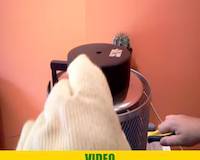 What you may see on this video is human fat burning while melting the gold scrap. Necklaces and bracelets often collect parts of human fat and during the melting stage they quickly burn out.
What you may see on this video is human fat burning while melting the gold scrap. Necklaces and bracelets often collect parts of human fat and during the melting stage they quickly burn out. - Pouring the gold into the mold
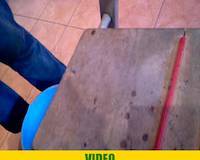 Once gold has been melted in the melting oven, you are pouring the gold into the mold. There is no waiting time. The process must be done without delays. The mold must be heated and is usually held on the top of the oven to keep its temperature always hot. Asbestos gloves must be used, as otherwise you cannot handle the hot mold. You take the tweezers in the hand, quickly open the melting oven, then fix the crucible with tweezers and poour the gold into the mold.
Once gold has been melted in the melting oven, you are pouring the gold into the mold. There is no waiting time. The process must be done without delays. The mold must be heated and is usually held on the top of the oven to keep its temperature always hot. Asbestos gloves must be used, as otherwise you cannot handle the hot mold. You take the tweezers in the hand, quickly open the melting oven, then fix the crucible with tweezers and poour the gold into the mold. - Quick gold mixing with the graphite stab
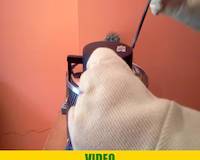 During the melting process one need to quickly open the melting oven, then use the special graphite stab to mix the gold, and then quickly close the melting oven.
During the melting process one need to quickly open the melting oven, then use the special graphite stab to mix the gold, and then quickly close the melting oven. - During melting mold is held on the hot gold melting oven
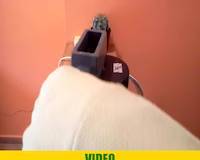 During the melting process the mold must be heated. As if the mold is not heated and very hot, pouring gold into cold mold would result with the burst of the melted gold. Basic safety gear are protective glasses, asbestos gloves and protective apron. When opening the oven to see or verify if gold have been melted, one should be fast. Open the oven, look inside, shake the gold, and close the oven as fast as possible. Don't let the temperature go down during your observation.
During the melting process the mold must be heated. As if the mold is not heated and very hot, pouring gold into cold mold would result with the burst of the melted gold. Basic safety gear are protective glasses, asbestos gloves and protective apron. When opening the oven to see or verify if gold have been melted, one should be fast. Open the oven, look inside, shake the gold, and close the oven as fast as possible. Don't let the temperature go down during your observation. - The front panel of the melting oven for 1 kg of gold
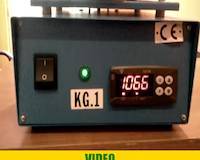 This is the front panel of the small melting oven for gold. The maximum quantity for this melting oven is 1 kg of gold. This melting oven is ideal for scrap gold or gold nuggets. When recovering the gold from tailing heaps on mining sites in Tanzania, Uganda or Kenya, such gold often contains mercury. In that case it is advisable to first separate mercury by using retorts. After separation of mercury such melting oven as this one may be used to melt the final gold. Flux such as borax shall be used…
This is the front panel of the small melting oven for gold. The maximum quantity for this melting oven is 1 kg of gold. This melting oven is ideal for scrap gold or gold nuggets. When recovering the gold from tailing heaps on mining sites in Tanzania, Uganda or Kenya, such gold often contains mercury. In that case it is advisable to first separate mercury by using retorts. After separation of mercury such melting oven as this one may be used to melt the final gold. Flux such as borax shall be used… - Gold Melting Methods And Handlings
 On these pages you may find some of gold melting methods and handlings. One would first need to consider all the safety precautions while melting gold. In the next step one need to know how to melt the gold properly. Not all types of gold are to be melted with the same method. Special precaution and care shall be given when handling any gold that would contain mercury. Even though our company do not buy or trade with gold that contains mercury, we often recover mercury from tailings, and in the case usage of retorts is necessary to prevent any contamination or disposal of mercury.
On these pages you may find some of gold melting methods and handlings. One would first need to consider all the safety precautions while melting gold. In the next step one need to know how to melt the gold properly. Not all types of gold are to be melted with the same method. Special precaution and care shall be given when handling any gold that would contain mercury. Even though our company do not buy or trade with gold that contains mercury, we often recover mercury from tailings, and in the case usage of retorts is necessary to prevent any contamination or disposal of mercury. - Should I engage into gold cyanidation business?
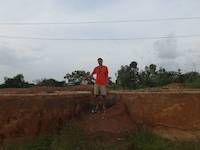 This question is often answered by East African miners by actually engaging into gold cyanidation business. Some of them are winning, majority of them are loosing fortunes, and even if making it profitable, they are still loosing a lot of gold while endangering environment, animals, fish and crops around them. In the program Start Your Own Gold Mine we are not using any cyanidation methods. Out of this conversation an intelligent mind may find clues and indications that may be useful before deciding to engage into any type of gold cyanidation and leaching methods.
This question is often answered by East African miners by actually engaging into gold cyanidation business. Some of them are winning, majority of them are loosing fortunes, and even if making it profitable, they are still loosing a lot of gold while endangering environment, animals, fish and crops around them. In the program Start Your Own Gold Mine we are not using any cyanidation methods. Out of this conversation an intelligent mind may find clues and indications that may be useful before deciding to engage into any type of gold cyanidation and leaching methods.
- Privacy Policy for Start Your Own Gold Mine Website
 This is our privacy policy for Start Your Own Gold Mine website.
This is our privacy policy for Start Your Own Gold Mine website. - Privileged Benefit in Start Your Own Gold Mine Program
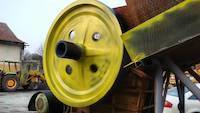 The privileged benefit in the Start Your Own Gold Mine program is the machinery worth US $50,000 that is provided to our clients who respect human rights and environment with the purpose to speed up the mining production for the first 5 kilograms of gold. The mining equipment provided as privileged benefit to our clients consists of excavation equipment such as winches, compressors, jackhammers, explosives, then rock crushing and rock milling equipment and transportation means.
The privileged benefit in the Start Your Own Gold Mine program is the machinery worth US $50,000 that is provided to our clients who respect human rights and environment with the purpose to speed up the mining production for the first 5 kilograms of gold. The mining equipment provided as privileged benefit to our clients consists of excavation equipment such as winches, compressors, jackhammers, explosives, then rock crushing and rock milling equipment and transportation means. - Infographics for Preliminary Site Assessment and Inspection
 This is infographics for Preliminary Site Assessment and Inspection that we conduct before making the decision to enter the partnership with mining site holder or license holder in Tanzania, Uganda or other countries where Start Your Own Gold Mine program is available. Mr. Jean Louis and the team are inspecting the mining site for its living and working resources, previous gold mining activities, and preparation of future mining site development.
This is infographics for Preliminary Site Assessment and Inspection that we conduct before making the decision to enter the partnership with mining site holder or license holder in Tanzania, Uganda or other countries where Start Your Own Gold Mine program is available. Mr. Jean Louis and the team are inspecting the mining site for its living and working resources, previous gold mining activities, and preparation of future mining site development. - Meanwhile in Croatia, prospecting for gold
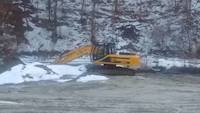 While our people are working in Uganda, we are prospecting for gold directly in Croatia on the quarry field and in joint attempt with the quarry owner.
While our people are working in Uganda, we are prospecting for gold directly in Croatia on the quarry field and in joint attempt with the quarry owner. - This is the pulley as used on our impact mills
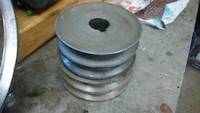 This is pulley made in the workshop in Novska, Croatia. It is used to run the impact chain flail rock mill.
This is pulley made in the workshop in Novska, Croatia. It is used to run the impact chain flail rock mill. - The drum for the impact mill
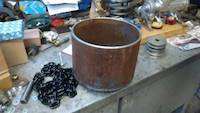 This is the drum and hardened chains shown on picture.
This is the drum and hardened chains shown on picture. - Our main workshop to produce gold mining equipment is in Croatia
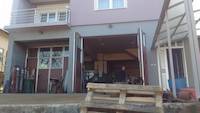 This is our main workshop for 2018 for construction of gold mining equipment. It is located in Novska, Croatia. Mining equipment is transported by ship from Croatia to Tanzania or Uganda.
This is our main workshop for 2018 for construction of gold mining equipment. It is located in Novska, Croatia. Mining equipment is transported by ship from Croatia to Tanzania or Uganda. - Turner preparing the cover
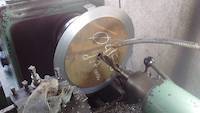 This is turner machine that is used to prepare the covers for impact chain flail rock mills.
This is turner machine that is used to prepare the covers for impact chain flail rock mills. - The drum for SYOGM Rock Impact Mill
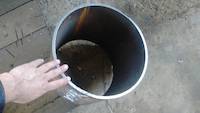 These drums are steel pipes cut in pieces to serve for construction of the SYOGM Rock Impact Mill.
These drums are steel pipes cut in pieces to serve for construction of the SYOGM Rock Impact Mill. - Plan for the foundation of the impact chain flail rock mill
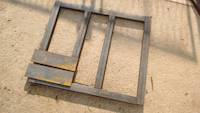 This is the plan on how to make a foundation for the impact chain flail rock mill. The rock mills we are using in the last step of rock processing.
This is the plan on how to make a foundation for the impact chain flail rock mill. The rock mills we are using in the last step of rock processing. - The rock crusher or impact chain flail rock mill
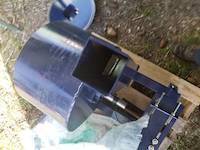 This is the view from above on the impact chain flail rock mill.
This is the view from above on the impact chain flail rock mill. - Impact chain flail rock mill from behind
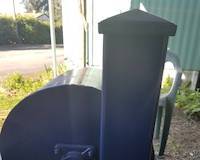 This is the impact chain flail rock mill from behind. It offers the opportunity to crush and mill up to 1000 lbs of rocks per hour.
This is the impact chain flail rock mill from behind. It offers the opportunity to crush and mill up to 1000 lbs of rocks per hour. - The screens of the impact chain flail mill
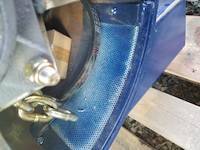 These are the screens as shown from inside of the impact chain flail rock mill.
These are the screens as shown from inside of the impact chain flail rock mill. - One of best crushers or rock mills also known as Beast
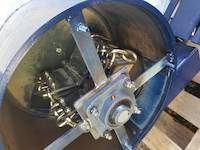 This is the rock mill or crusher, the impact chain flail mill for rocks and perfect for small scale mining. This type of crushers is able to process 1000 lbs per hour when properly fed, or half of it when fed more relaxed. It is good for an entry into the small scale mining and is used in the program Start Your Own Gold Mine.
This is the rock mill or crusher, the impact chain flail mill for rocks and perfect for small scale mining. This type of crushers is able to process 1000 lbs per hour when properly fed, or half of it when fed more relaxed. It is good for an entry into the small scale mining and is used in the program Start Your Own Gold Mine. - The test of the jaw crusher
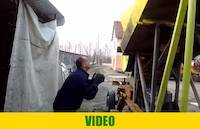 This is how hard rocks are crushed with the jaw crusher Ashdaia (Bosnian aždaja). It can handle tens of tonnes of rocks per hour.
This is how hard rocks are crushed with the jaw crusher Ashdaia (Bosnian aždaja). It can handle tens of tonnes of rocks per hour. - The jaw crusher in work
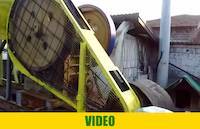 This is our jaw crusher Ashdaia (Bosnian Aždaja) in work and in process. We will be handling tens of tonnes of rocks per hour by using this crusher.
This is our jaw crusher Ashdaia (Bosnian Aždaja) in work and in process. We will be handling tens of tonnes of rocks per hour by using this crusher. - Mr. Louis verifying the working jaw crusher before the purchase
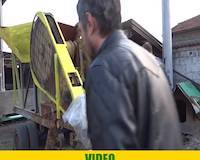 This is our Ashdaia crusher (Aždaja) and it means in Bosnian language dragon. So we are testing how it is crushing harder stones, and watching how it works. It may handle several tens of tonnes of rocks per hour without problems. That is our promising crusher for small scale gold mining business in Tanzania and in Uganda.
This is our Ashdaia crusher (Aždaja) and it means in Bosnian language dragon. So we are testing how it is crushing harder stones, and watching how it works. It may handle several tens of tonnes of rocks per hour without problems. That is our promising crusher for small scale gold mining business in Tanzania and in Uganda. - The jaw crusher from the side
 This is our Aždaja (Ashdaia or dragon) jaw crusher that we have bought in Bosnia and Herzegovina in Europe. The jaw crusher is to be working in Tanzania and/or Uganda on our gold mining locations. It can handle tens of tonnes of rocks per hour.
This is our Aždaja (Ashdaia or dragon) jaw crusher that we have bought in Bosnia and Herzegovina in Europe. The jaw crusher is to be working in Tanzania and/or Uganda on our gold mining locations. It can handle tens of tonnes of rocks per hour. - Mr. Louis standing on the jaw crusher
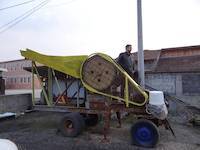 This is the jaw crusher that may handle tens of tonnes of rocks per hour, and that is one of our main resources to handle the rock ores, for us and for our clients in the program Start Your Own Gold Mine. That is what we call privileged benefit for those clients who are entering the program with US $22,000. Those clients who are entering into the program with US $66,000 we provide such jaw crushers and other rock processing equipment in full.
This is the jaw crusher that may handle tens of tonnes of rocks per hour, and that is one of our main resources to handle the rock ores, for us and for our clients in the program Start Your Own Gold Mine. That is what we call privileged benefit for those clients who are entering the program with US $22,000. Those clients who are entering into the program with US $66,000 we provide such jaw crushers and other rock processing equipment in full. - The jaw crusher Ashdaia
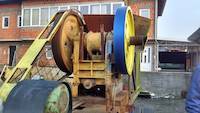 This is our jaw crusher Ashdaia which will be refurbished, nicely painted, protected for the years of work to come. It may handle tens of tonnes of rocks per hour. It is good choice for gold ore processing.
This is our jaw crusher Ashdaia which will be refurbished, nicely painted, protected for the years of work to come. It may handle tens of tonnes of rocks per hour. It is good choice for gold ore processing. - The wheel of Ashdaia jaw crusher
 This is the moving and rotating wheel of the Ashdaia (Aždaja in Bosnian) jaw crusher. It is going to handle tens of tonnes of hard rocks per hour.
This is the moving and rotating wheel of the Ashdaia (Aždaja in Bosnian) jaw crusher. It is going to handle tens of tonnes of hard rocks per hour. - The jaws of the jaw crusher
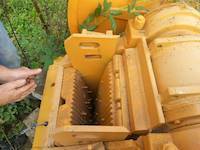 Here are the jaws of the jaw crusher Crocodile. Some improvements have been made to bring the smooth rocks down the jaws to be "eaten". We may need or not these improvements, yet we are going to handle tens of tonnes of rocks by using this crusher. These jaws are made out of manganese. Manganese, Mn, atomic number 25 -- a hard brittle grey polyvalent metallic element that resembles iron but is not magnetic; used in making steel; occurs in many minerals.
Here are the jaws of the jaw crusher Crocodile. Some improvements have been made to bring the smooth rocks down the jaws to be "eaten". We may need or not these improvements, yet we are going to handle tens of tonnes of rocks by using this crusher. These jaws are made out of manganese. Manganese, Mn, atomic number 25 -- a hard brittle grey polyvalent metallic element that resembles iron but is not magnetic; used in making steel; occurs in many minerals. - Parts of jaw crusher in good shape
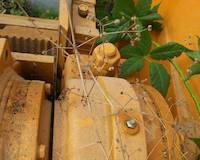 These are the parts of the jaw crusher Crocodile which may be observed to be in a good shape. There is little to be broken here. The materials are hard and almost indestructible. We estimate tens of tonnes of rocks to be crusher per hour once we move it to Tanzania and/or Uganda where we have our small scale gold mining businesses. And we are opening new businesses.
These are the parts of the jaw crusher Crocodile which may be observed to be in a good shape. There is little to be broken here. The materials are hard and almost indestructible. We estimate tens of tonnes of rocks to be crusher per hour once we move it to Tanzania and/or Uganda where we have our small scale gold mining businesses. And we are opening new businesses. - The wheel of the jaw crusher
 This is one of the heavy wheels of a jaw crusher that is large enough to handle tens of tonnes of rocks per hour. This crusher have been produced by former Yugoslavian company FAGRAM from the city of Smederevo in the today's Serbia. It is durable. It has good quality materials. And it has been built to last.
This is one of the heavy wheels of a jaw crusher that is large enough to handle tens of tonnes of rocks per hour. This crusher have been produced by former Yugoslavian company FAGRAM from the city of Smederevo in the today's Serbia. It is durable. It has good quality materials. And it has been built to last. - Jaw crushers for rocks and gold bearing ore used in program to Start Your Own Gold Mine
 We are presenting our work related to jaw crushers for hard rock gold bearing ores as they are wanted, purchased, and used in the program Start Your Own Gold Mine in Tanzania or in Uganda or otherwise used by our company GOLDIVANTI LP or GOLDIVANTI GOLD LIMITED in Uganda. The jaw is made usually of hard manganese enhanced plates and strong inertia forces. The hard rock crushing capacity is usually nothing less than 10 tonnes of hard rock per hour. Such rock crushing capacity gives the opportunity to produce even several hundreds of pure grams of gold per day if not half a kilogram or kilogram of gold. As a primary crusher, after the jaw crusher one need to use the rock milling machines.
We are presenting our work related to jaw crushers for hard rock gold bearing ores as they are wanted, purchased, and used in the program Start Your Own Gold Mine in Tanzania or in Uganda or otherwise used by our company GOLDIVANTI LP or GOLDIVANTI GOLD LIMITED in Uganda. The jaw is made usually of hard manganese enhanced plates and strong inertia forces. The hard rock crushing capacity is usually nothing less than 10 tonnes of hard rock per hour. Such rock crushing capacity gives the opportunity to produce even several hundreds of pure grams of gold per day if not half a kilogram or kilogram of gold. As a primary crusher, after the jaw crusher one need to use the rock milling machines. - Chapati preparation on streets of Busia, Uganda
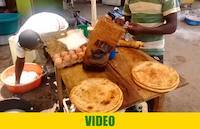 This is how Ugandan chapati is being prepared directly on the street. It is very tasty food especially when hungry and there is nothing else around.
This is how Ugandan chapati is being prepared directly on the street. It is very tasty food especially when hungry and there is nothing else around. - Truck moving the ores to mineral processing place
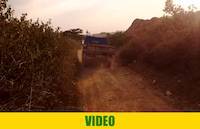 This is how it looks like, the road is dusty, trucks are bringing ores to mineral processing places.
This is how it looks like, the road is dusty, trucks are bringing ores to mineral processing places. - Driving through Busia city in Uganda
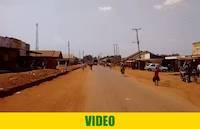 This is Busia city and we are driving along the road.
This is Busia city and we are driving along the road. - Truck full of ore on its way to processing
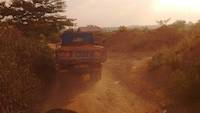 This is small truck full of ore, we think it is loaded with about 2 tonnes of ore. It is called "one trip". One trip may contain from 0.50-1 grams to 4-5 grams of ore, if the ore have been taken from surface or represents overburden. If it is primary ore, it may contain 5-20 grams of gold and more.
This is small truck full of ore, we think it is loaded with about 2 tonnes of ore. It is called "one trip". One trip may contain from 0.50-1 grams to 4-5 grams of ore, if the ore have been taken from surface or represents overburden. If it is primary ore, it may contain 5-20 grams of gold and more. - Popular Mining Encyclopedia of Action Mining arrived to Uganda
 The Popular Mining Encyclopedia as issued by Action Mining, finally arrived to Uganda. I had to push the postman to go by motorcycle to Tororo city, and come to Busia, so that I can get the encyclopedia into my hands. It contains such powerful information and plans for gold mining and recovery equipment.
The Popular Mining Encyclopedia as issued by Action Mining, finally arrived to Uganda. I had to push the postman to go by motorcycle to Tororo city, and come to Busia, so that I can get the encyclopedia into my hands. It contains such powerful information and plans for gold mining and recovery equipment. - Jean Louis in Busia
 I am fetching money from the ATM machine in Busia, that was nice hot day before my departure to Europe.
I am fetching money from the ATM machine in Busia, that was nice hot day before my departure to Europe. - Your best weapon against terrorism
 Your eyes are your best weapon against terrorism. Watch out, if you see anything suspicious report to authorities in Uganda.
Your eyes are your best weapon against terrorism. Watch out, if you see anything suspicious report to authorities in Uganda. - The warning issued in Busia, Uganda
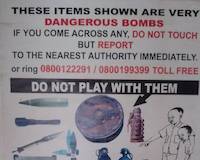 This is one of the warnings that we can find in offices in Busia, Uganda where authorities are warning against bombs.
This is one of the warnings that we can find in offices in Busia, Uganda where authorities are warning against bombs. - Visit to SAMA Syanyonja Artisan Miners' Association in Busia, Uganda
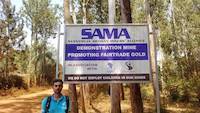 This picture have been made few days after my visit to SAMA Syanyonja Artisan Miners' Alliance and demonstration mine promoting fairtrade gold, in association with EWAD and Fairtrade, where they state that they do not employ children in their mine.
This picture have been made few days after my visit to SAMA Syanyonja Artisan Miners' Alliance and demonstration mine promoting fairtrade gold, in association with EWAD and Fairtrade, where they state that they do not employ children in their mine. - Fancy insect passing over
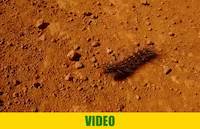 This is nice fancy insect passing over. Is it going to convert to butterfly? We do not know. I just know I like it.
This is nice fancy insect passing over. Is it going to convert to butterfly? We do not know. I just know I like it. - Children in Uganda
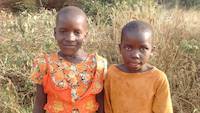 These children we met playing on the mining site. That sounds dangerous and it is. Yet we cannot control families and their children and mining site was not under our control. We did warn them to take care and be careful. They liked our visit.
These children we met playing on the mining site. That sounds dangerous and it is. Yet we cannot control families and their children and mining site was not under our control. We did warn them to take care and be careful. They liked our visit. - The excavated open pit
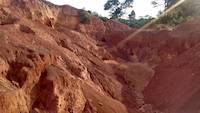 This is excavated open pit that was explored by artisanal miners some years before. Small number of miners are still working in this area and recovering gold every day. Majority of them abandoned the sites and went to new gold rush locations.
This is excavated open pit that was explored by artisanal miners some years before. Small number of miners are still working in this area and recovering gold every day. Majority of them abandoned the sites and went to new gold rush locations. - Mr. Louis in front of the open pit
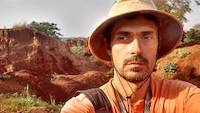 The open pit behind me is possible gold mining opportunity that we may explore in soonest future.
The open pit behind me is possible gold mining opportunity that we may explore in soonest future. - Previous mining locations
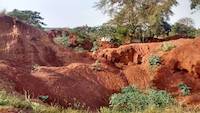 On these locations many artisanal miners have previously recovered gold and lived from it. Today many are still there even though the majority of miners abandoned the place and went somewhere else. So is the gold rush in Uganda.
On these locations many artisanal miners have previously recovered gold and lived from it. Today many are still there even though the majority of miners abandoned the place and went somewhere else. So is the gold rush in Uganda. - Dirty feet
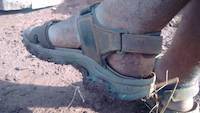 Those are my dirty feet and shoes in Uganda.
Those are my dirty feet and shoes in Uganda. - Travel to prospecting location in Uganda
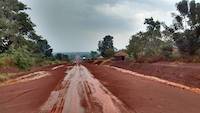 This is picture of our travel today on 15th January 2018 to the new prospecting and prospective location. On such new location we have gold mining opportunity to obtain new ores and process it. The location was occupied by artisanal miners before some years.
This is picture of our travel today on 15th January 2018 to the new prospecting and prospective location. On such new location we have gold mining opportunity to obtain new ores and process it. The location was occupied by artisanal miners before some years. - Preparation of rudimentary sluice for ore processing in Uganda
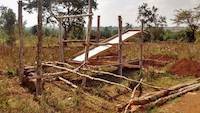 This is rudimentary sluice that is being prepared by our neighboring miners. In my opinion this type of the sluice is way to wide, not evenly balanced, with too steep slopes, and too high to load it with the ores. We cannot recommend small scaler miners and artisanal miners to make this type of sluices. That is inefficient as it requires much energy, material will not be evenly spread and gold would be lost.
This is rudimentary sluice that is being prepared by our neighboring miners. In my opinion this type of the sluice is way to wide, not evenly balanced, with too steep slopes, and too high to load it with the ores. We cannot recommend small scaler miners and artisanal miners to make this type of sluices. That is inefficient as it requires much energy, material will not be evenly spread and gold would be lost. - Mr. Okedi collecting concentrates from looped carpets
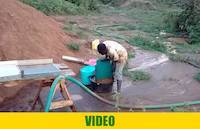 Looped carpets or miners' moss or 3M Nomad type of a carpets are used to efficiently recover gold larger than 50 mesh, gold nuggets, flakes and larger gold. On the end of the day and multiple times of day, concentrates are collected from such carpets.
Looped carpets or miners' moss or 3M Nomad type of a carpets are used to efficiently recover gold larger than 50 mesh, gold nuggets, flakes and larger gold. On the end of the day and multiple times of day, concentrates are collected from such carpets. - Mr. Louis doing practical field assay of gold
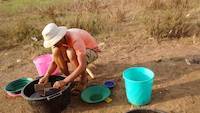 Mr. Louis is doing here practical field assay of gold content in some soil. Similar method may be used to concentrate gold from the operation and to determine how much was recovered.
Mr. Louis is doing here practical field assay of gold content in some soil. Similar method may be used to concentrate gold from the operation and to determine how much was recovered. - Magnified flat gold nugget in the gold pan
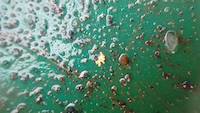 This is magnified and flat gold nugget in the pan. It is probably flat due to the previous ball mill processing, it was smashed and became flat.
This is magnified and flat gold nugget in the pan. It is probably flat due to the previous ball mill processing, it was smashed and became flat. - Small nuggets recovered
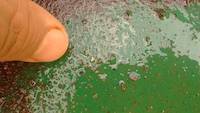 Small flat nuggets are also found in concentrates and recovered by using super-concentration and simple gold panning methods.
Small flat nuggets are also found in concentrates and recovered by using super-concentration and simple gold panning methods. - Mercury gold and mercury ball in the gold pan
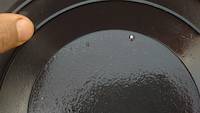 This is how it looks like when many gold particles are connected or amalgamated together with mercury. Miners used mercury in recovery of gold, and lost it in heaps of tailings. We are recovering both the mercury and the gold from such tailings, without using new mercury or introducing new mercury in the process.
This is how it looks like when many gold particles are connected or amalgamated together with mercury. Miners used mercury in recovery of gold, and lost it in heaps of tailings. We are recovering both the mercury and the gold from such tailings, without using new mercury or introducing new mercury in the process. - The mercury gold once again
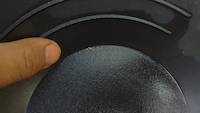 This is mercury gold once again shown in the gold pan after fine gold concentration process. We do not use mercury, we recover it as side effect.
This is mercury gold once again shown in the gold pan after fine gold concentration process. We do not use mercury, we recover it as side effect. - Mercury recovered from concentrates
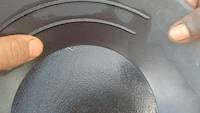 Instead of nice yellow gold, our gold looks as silver like, as it is mixed with mercury. Heaps of tailings are polluted with mercury and our recovery is such that we cannot see it yellow any more unless it is either microscopic, as such could not be connected to mercury or too large as nugget, as such also did not connect to mercury.
Instead of nice yellow gold, our gold looks as silver like, as it is mixed with mercury. Heaps of tailings are polluted with mercury and our recovery is such that we cannot see it yellow any more unless it is either microscopic, as such could not be connected to mercury or too large as nugget, as such also did not connect to mercury. - The fine gold recovery system
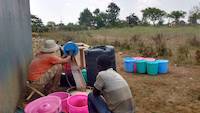 This is fine gold recovery system that helps us concentrate all the gold smaller than 50 mesh.
This is fine gold recovery system that helps us concentrate all the gold smaller than 50 mesh. - Gold is recovered in form of mercury
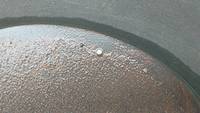 Heaps of tailings are polluted by mercury from previous mining operation. We are recovering mercury as well with the gold, and later dispose safely with the pollutant. Mercury is not used in our operation. We recover mercury from nature.
Heaps of tailings are polluted by mercury from previous mining operation. We are recovering mercury as well with the gold, and later dispose safely with the pollutant. Mercury is not used in our operation. We recover mercury from nature. - Fine gold recovery system
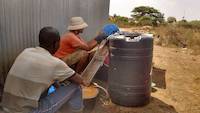 This is fine gold recovery systems, we are using the genious methods invented by smart microscopist from Oregon for purposes of mercury free gold recovery.
This is fine gold recovery systems, we are using the genious methods invented by smart microscopist from Oregon for purposes of mercury free gold recovery. - Concentrate is being processed
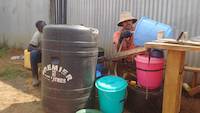 Mr. Louis is processing the remaining concentrates and process is fast. It is possible to process multiple buckets of concentrates after work, and to get to the fine gold within 15 minutes.
Mr. Louis is processing the remaining concentrates and process is fast. It is possible to process multiple buckets of concentrates after work, and to get to the fine gold within 15 minutes. - The gold recovery system
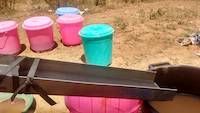 This is view from my working place on the gold recovery system for all gold smaller than 50 mesh, down to 5 microns. This fine gold can be recovered, totally without using mercury and by using simplest set theory in mathematics applied practically. Many people make a question how a set theory may be applied practically, and that is exactly how our gold recovery system works, by using the set theory and by removing those parts of material not containing or containing gold.
This is view from my working place on the gold recovery system for all gold smaller than 50 mesh, down to 5 microns. This fine gold can be recovered, totally without using mercury and by using simplest set theory in mathematics applied practically. Many people make a question how a set theory may be applied practically, and that is exactly how our gold recovery system works, by using the set theory and by removing those parts of material not containing or containing gold. - Buckets of concentrate are today processed for gold
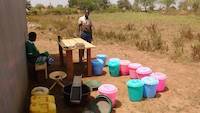 The buckets of concentrate are today processed for gold. In general, our bulk of concentrate is not large. These many buckets contain various particle sizes and types of gold, and help in sorting out what we were doing. We can then determine which heap of tailing was better productive.
The buckets of concentrate are today processed for gold. In general, our bulk of concentrate is not large. These many buckets contain various particle sizes and types of gold, and help in sorting out what we were doing. We can then determine which heap of tailing was better productive. - Children panning for gold on mining site
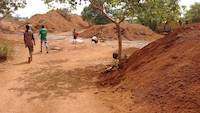 These children are panning for gold on mining site in a dangerous and polluted environment. Each heap of tailings is polluted with mercury. Children are in constant contact with mercury while playing and working on the mining site. We do not endorse such activities. This is report from neighboring sites where we do not have control.
These children are panning for gold on mining site in a dangerous and polluted environment. Each heap of tailings is polluted with mercury. Children are in constant contact with mercury while playing and working on the mining site. We do not endorse such activities. This is report from neighboring sites where we do not have control. - Heaps of tailings being milled again and processed
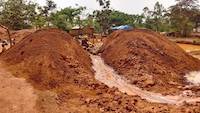 These heaps of tailings are being milled again with the rudimentary locally made hammer crusher that runs in wet mode. The material is then processed on small looped carpet sluices. The hammer crusher is spending about 25,000 Ugs. per day on hammers alone, which is about US $6.95.
These heaps of tailings are being milled again with the rudimentary locally made hammer crusher that runs in wet mode. The material is then processed on small looped carpet sluices. The hammer crusher is spending about 25,000 Ugs. per day on hammers alone, which is about US $6.95. - Buckets of concentrate on the end of the day
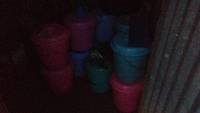 The buckets of concentrates are collected on the end of the day. The picture is dark for that reason that it was evening without light.
The buckets of concentrates are collected on the end of the day. The picture is dark for that reason that it was evening without light. - Mercury coated gold have silver color
 This is mercury coated gold, and it has a shiny silver color.
This is mercury coated gold, and it has a shiny silver color. - Gold nuggets magnified in the gold pan
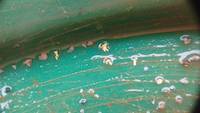 These gold nuggets are magnified 10x in the gold pan.
These gold nuggets are magnified 10x in the gold pan. - Types of gold nuggets recovered
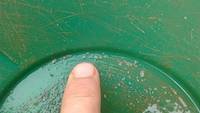 Here are small gold nuggets recovered in concentrate of today.
Here are small gold nuggets recovered in concentrate of today. - Type of small gold nuggets we are recovering
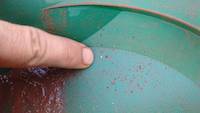 This is one type of small gold nuggets we are recovering from heaps of tailings in Uganda.
This is one type of small gold nuggets we are recovering from heaps of tailings in Uganda. - Coarse gold or smallest gold nuggets are found
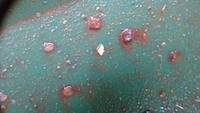 In the previous concentrate we found multiple nuggets of 1-4 millimeter mostly of flake shape due to ball hammering them flat in ball mills.
In the previous concentrate we found multiple nuggets of 1-4 millimeter mostly of flake shape due to ball hammering them flat in ball mills. - Dish wash to settle finest gold particles down from the surface of water
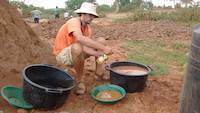 The dish wash is used to settle finest gold particles down into the water as they may float and go out during the gold panning verification.
The dish wash is used to settle finest gold particles down into the water as they may float and go out during the gold panning verification. - Mr. Louis filling the drum of water
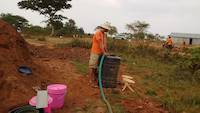 The drum is filled with water for the verification of gold collection in 2 hours of work. We are making scientific yet practical and field measurements of gold recovery.
The drum is filled with water for the verification of gold collection in 2 hours of work. We are making scientific yet practical and field measurements of gold recovery. - Purchasing manager verifying gold particles on the sluice
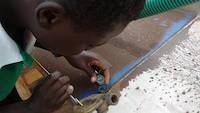 Purchasing manager is verifying the gold particles on the sluice.
Purchasing manager is verifying the gold particles on the sluice. - Mr. Louis in front of the heap of tailings
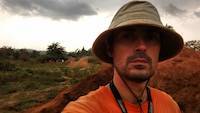 This heap of tailings was processed as of the day of publishing of this picture.
This heap of tailings was processed as of the day of publishing of this picture. - Small heap of tailings
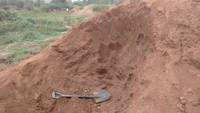 This heap of tailings is being processed as of the day of publishing this image.
This heap of tailings is being processed as of the day of publishing this image. - Mr. Louis with tailings heaps in background
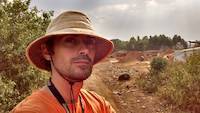 Tailings are visible in background, heaps of tailings to be processed with our fine gold recovery sluices.
Tailings are visible in background, heaps of tailings to be processed with our fine gold recovery sluices. - Tailings in background
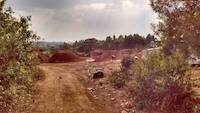 One may see many tailings heaps in background. Each of them contains fine gold.
One may see many tailings heaps in background. Each of them contains fine gold. - Tailings heaps in background on mineral processing site
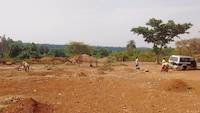 One may see people working on this mineral processing site with tailings heaps in background. Well, those are ours. We process those heaps.
One may see people working on this mineral processing site with tailings heaps in background. Well, those are ours. We process those heaps. - Mr. Okedi feeding the sluice
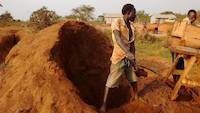 Mr. Okedi is feeding the sluice here, few cubic meters have been handled within 5 hours of work.
Mr. Okedi is feeding the sluice here, few cubic meters have been handled within 5 hours of work. - The nugget in comparison to my finger
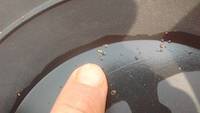 This gold nugget is small and may be seen here in comparison to my finger. It was recovered by using special matting. Multiple nuggets were recovered, many of them coated with mercury in silver color and many of them as pure gold.
This gold nugget is small and may be seen here in comparison to my finger. It was recovered by using special matting. Multiple nuggets were recovered, many of them coated with mercury in silver color and many of them as pure gold. - Gold nugget of 2-3 mm under magnification
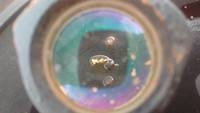 This small gold nugget has size of 2-3 millimeter, and is magnified for 10x by using the jeweler's loupe and a simple mobile phone camera. It was recovered by using special matting on our sluice in Uganda.
This small gold nugget has size of 2-3 millimeter, and is magnified for 10x by using the jeweler's loupe and a simple mobile phone camera. It was recovered by using special matting on our sluice in Uganda. - Fine gold particles
 These fine gold particles appear silver like color on this picture, but they were in fact yellow. When magnified under the lack of the light, the mobile phone is giving somehow distorted image.
These fine gold particles appear silver like color on this picture, but they were in fact yellow. When magnified under the lack of the light, the mobile phone is giving somehow distorted image. - Preparing the sluice for work
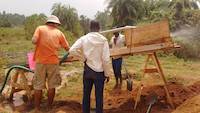 Mr. Louis is here preparing the sluice for work. Some key details are not shown on the picture, and are rather revealed to clients in the Start Your Own Gold Mine program. This is testing sluice whereby we are testing the capability to recover gold by at least 98% and where we are determining what else need to be improved for the actual sluice to be constructed.
Mr. Louis is here preparing the sluice for work. Some key details are not shown on the picture, and are rather revealed to clients in the Start Your Own Gold Mine program. This is testing sluice whereby we are testing the capability to recover gold by at least 98% and where we are determining what else need to be improved for the actual sluice to be constructed. - The sluice setup on January 11th 2018
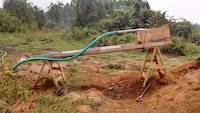 This is our sluice setup on January 11th 2018. We are definitely able to recover gold nuggets and fine gold particles.
This is our sluice setup on January 11th 2018. We are definitely able to recover gold nuggets and fine gold particles. - Administration before the daily work
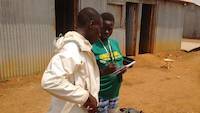 We always have administrative tasks to do, before, during and after the work. We record, measure, notify, obtain receipts, demand signatures, and do whatever necessary administration tasks.
We always have administrative tasks to do, before, during and after the work. We record, measure, notify, obtain receipts, demand signatures, and do whatever necessary administration tasks. - Concentrate collection
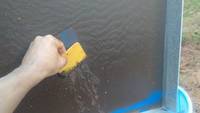 On the end of the day, concentrate is collected and retained for further concentration and final gold recovery.
On the end of the day, concentrate is collected and retained for further concentration and final gold recovery. - Miners working on the sluice
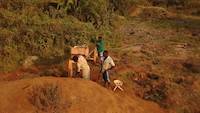 Miners are handling the first tailings heaps on this mining site.
Miners are handling the first tailings heaps on this mining site. - Women and people panning for gold nearby our tailings heaps
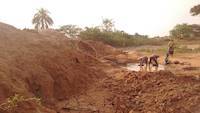 These women and men are panning for gold just nearby our tailings heaps. They may obtain per day of panning from 0.1 to 0.3 grams of gold, or sometimes more. It helps them live the life.
These women and men are panning for gold just nearby our tailings heaps. They may obtain per day of panning from 0.1 to 0.3 grams of gold, or sometimes more. It helps them live the life. - Mining and mineral processing site
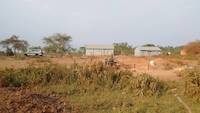 This is our mining and mineral processing site where we have agreement to process all the tailings heaps.
This is our mining and mineral processing site where we have agreement to process all the tailings heaps. - Miners feeding the sluice
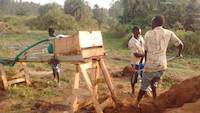 Sluice is fed by miners by the rate of 132 shovels per hour where average shovel is about 8 kilograms, amounting to little bit more than one tonne per hour. In the first stage, slow water pressure and low slope is applied to review how much of gold is retained and what gold is eventually being lost. Once capability have been attained, the slope is increasing up to the tolerated degree, and water pressure is increased. Up to 6-8 tonnes per hour may then be handled in the second stage.
Sluice is fed by miners by the rate of 132 shovels per hour where average shovel is about 8 kilograms, amounting to little bit more than one tonne per hour. In the first stage, slow water pressure and low slope is applied to review how much of gold is retained and what gold is eventually being lost. Once capability have been attained, the slope is increasing up to the tolerated degree, and water pressure is increased. Up to 6-8 tonnes per hour may then be handled in the second stage. - Concentrate on the vortex matting
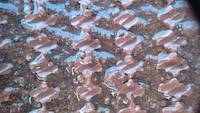 This is vortex matting, enlarged. Concentrate is under the surface of these particles, including several small gold nuggets.
This is vortex matting, enlarged. Concentrate is under the surface of these particles, including several small gold nuggets. - Mr. Louis by the sluice
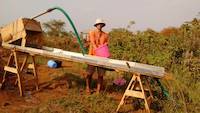 This is Mr. Louis, preparing small details for the fine gold recovery sluice. Gold particles are so small that cannot be seen by naked eyes.
This is Mr. Louis, preparing small details for the fine gold recovery sluice. Gold particles are so small that cannot be seen by naked eyes. - Water pump is debugged
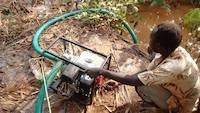 The water pump could not pull the water on 2-3 meters. We found out that pressure was disturbed too weak connection of the suction hose. Within few minutes it was repaired and water pump engaged.
The water pump could not pull the water on 2-3 meters. We found out that pressure was disturbed too weak connection of the suction hose. Within few minutes it was repaired and water pump engaged. - Our purchasing manager on the site
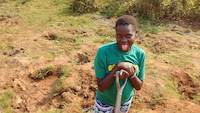 This is our purchasing manager in Uganda, she handles a lot of accounting, facilitates with suppliers, makes sure that things are running smoothly.
This is our purchasing manager in Uganda, she handles a lot of accounting, facilitates with suppliers, makes sure that things are running smoothly. - Quick and improvized sluice ready for work
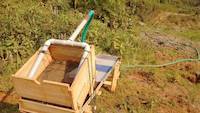 This is quick and improvized sluice ready for work and handling of the tailings heaps.
This is quick and improvized sluice ready for work and handling of the tailings heaps. - Preparing the elevation for sluices
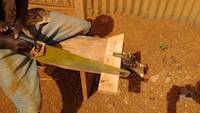 Mr. Okedi is preparing the elevation for the sluice hopper.
Mr. Okedi is preparing the elevation for the sluice hopper. - Old welding clamps used for carpentry
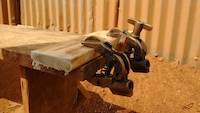 This type of welding clamps may be used for carpentry and are generally useful to clamp the prospecting equipment, such as sluices together.
This type of welding clamps may be used for carpentry and are generally useful to clamp the prospecting equipment, such as sluices together. - Using welding clamps for carpentry
 These welding clamps may be used for simple carpentry as one can see it.
These welding clamps may be used for simple carpentry as one can see it. - Preparation of the HDPE pipes
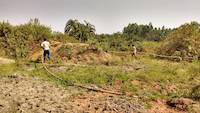 The HDPE (High Density Polyethylene) pipe is prepared on the mining site for the sluice run.
The HDPE (High Density Polyethylene) pipe is prepared on the mining site for the sluice run. - Gold particles on the rock
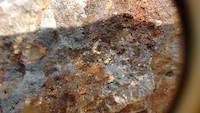 This magnification of 10x shows gold particles of 3-4 millimeter on the rock that also contains some iron or black sand.
This magnification of 10x shows gold particles of 3-4 millimeter on the rock that also contains some iron or black sand. - Repairing the wooden goat
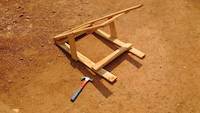 Those wooden goats were made of low quality timber. Not made to last, but to be light and to endure the improvization stage. We had to repair this one.
Those wooden goats were made of low quality timber. Not made to last, but to be light and to endure the improvization stage. We had to repair this one. - The old abandoned rudimentary ball mill drum
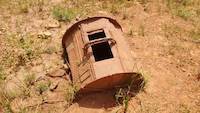 This is old and abandoned rudimentary ball mill drum on the mining site. One may see how it was repaired multiple times. We suspect gold inside, left for those who know where to search for it.
This is old and abandoned rudimentary ball mill drum on the mining site. One may see how it was repaired multiple times. We suspect gold inside, left for those who know where to search for it. - Black sand after classification
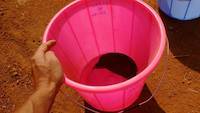 Black sand has been classified and is now in the bucket.
Black sand has been classified and is now in the bucket. - Classification of black sand
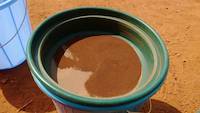 The classifiers are mounted onto buckets and black sand is separated in various particle size groups. Same procedure may be used in mercury free gold recovery.
The classifiers are mounted onto buckets and black sand is separated in various particle size groups. Same procedure may be used in mercury free gold recovery. - Black sand preparation and separation
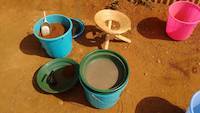 On this picture one may see the simple tools used to prepare the black sand, to separate it, or better say classify it into various sizes. This preparation was necessary in the area which lacks the black sand and where much of eluvial gold is found. Contrary to what majority of prospectors are saying that black sand is disturbing them in gold separation and recovery, we are using it directly to capture the fine gold particles.
On this picture one may see the simple tools used to prepare the black sand, to separate it, or better say classify it into various sizes. This preparation was necessary in the area which lacks the black sand and where much of eluvial gold is found. Contrary to what majority of prospectors are saying that black sand is disturbing them in gold separation and recovery, we are using it directly to capture the fine gold particles. - Separation of black sand
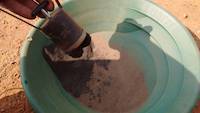 Black sand, what it is? One may see on this picture that it appears actually black. Not always so. Sometimes it is redish or dusty orange or simple dusty. Most of times it appears darker than other types of sand. It is magnetic and one may see magnet on picture lifting and separating black sand from the rest. Its specific gravity is higher than usual silica sand or quartz sand for 3-4 times. It consists of magnetite and hematite and other heavier minerals. Not all of them have same magnetic attraction.
Black sand, what it is? One may see on this picture that it appears actually black. Not always so. Sometimes it is redish or dusty orange or simple dusty. Most of times it appears darker than other types of sand. It is magnetic and one may see magnet on picture lifting and separating black sand from the rest. Its specific gravity is higher than usual silica sand or quartz sand for 3-4 times. It consists of magnetite and hematite and other heavier minerals. Not all of them have same magnetic attraction. - Final result of few hours of work
 The bench and the improvized table is ready on the mining site for beans and posho (Lugandan language for polenta).
The bench and the improvized table is ready on the mining site for beans and posho (Lugandan language for polenta). - Preparing the open air table
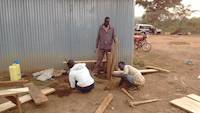 The open air table is being prepared.
The open air table is being prepared. - Workers preparing the improvized wooden table
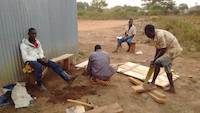 These workers are preparing the improvized wooden table. The expense of the table is over the expense of the simple plastic table as available in the shops.
These workers are preparing the improvized wooden table. The expense of the table is over the expense of the simple plastic table as available in the shops. - Black Sand Separation In Garrett Super Sluice Gold Pan
 Here on this picture one may see the black sand being actually black when separated by magnet in the Garrett gold pan Super Sluice.
Here on this picture one may see the black sand being actually black when separated by magnet in the Garrett gold pan Super Sluice. - Workers preparing bench and desks as open-air furniture
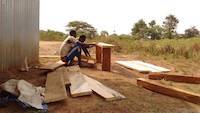 These workers are making outside furniture, or open-air furniture, the improvized benches, desks, and kitchen furniture. The mining camp requires such.
These workers are making outside furniture, or open-air furniture, the improvized benches, desks, and kitchen furniture. The mining camp requires such. - Collecting black sand with neodymium magnet
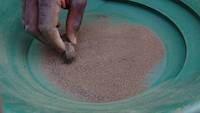 This neodymium magnet is used to collect the black sand from the gold pan and separate it from other non-magnetic type of sand, including gold. But gold was not there on this picture. Mysterious?…
This neodymium magnet is used to collect the black sand from the gold pan and separate it from other non-magnetic type of sand, including gold. But gold was not there on this picture. Mysterious?… - Collecting and separating the black sand
 We are using properly our technology to collect and separate black sand, that is what these boys are doing. They are classifying and collecting black sand.
We are using properly our technology to collect and separate black sand, that is what these boys are doing. They are classifying and collecting black sand. - Prospecting for fine gold on the river Malaba in Uganda
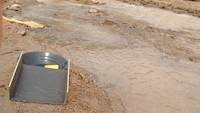 On this river Malaba there were particles of very fine gold, yet, the tests did not show any workable results.
On this river Malaba there were particles of very fine gold, yet, the tests did not show any workable results. - Collecting black sand
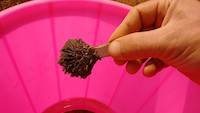 This neodymium magnet is used to collect particles of black sand. As you can see the magnetite and hematite are attracted to magnet. Hematite may be collected with neodymium magnets, but not with any type of magnets.
This neodymium magnet is used to collect particles of black sand. As you can see the magnetite and hematite are attracted to magnet. Hematite may be collected with neodymium magnets, but not with any type of magnets. - The rock crusher, rudimentary batch ball mill
 This is the rock crusher. In Swahili in Tanzania, this crusher is known as calasher. It is a rudimentary ball mill made in Uganda. But we are in Uganda now, and this rock crusher has 33 rotations per minute and may crush about 100 kilograms per hour. Handling it and operation is dangerous. Injuries happen. And the crusher itself may run out of its stand, and start rotating on the mining site. And kill somebody. That happened already. But not on our mining site. Thus crusher is used in Uganda on the…
This is the rock crusher. In Swahili in Tanzania, this crusher is known as calasher. It is a rudimentary ball mill made in Uganda. But we are in Uganda now, and this rock crusher has 33 rotations per minute and may crush about 100 kilograms per hour. Handling it and operation is dangerous. Injuries happen. And the crusher itself may run out of its stand, and start rotating on the mining site. And kill somebody. That happened already. But not on our mining site. Thus crusher is used in Uganda on the… - Mineral sample on the mining site
 This is gold bearing rock that is crushed, milled and processed on this mining site.
This is gold bearing rock that is crushed, milled and processed on this mining site. - Mr. Louis nearby the tailings heap
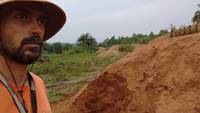 This is the tailings heap in background, and Mr. Louis is watching what? Birds? We don't know.
This is the tailings heap in background, and Mr. Louis is watching what? Birds? We don't know. - The mercury coated or amalgamated gold in the gold pan
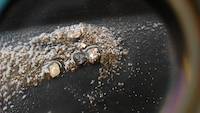 This is the enlargement of the mercury coated or amalgamated gold in the gold pan.
This is the enlargement of the mercury coated or amalgamated gold in the gold pan. - Mercury gold and small gold particles recovered
 Mercury gold is seen in the gold pan and represents the result from one portion of the concentrates that were collected on the sluice. Mercury collects small particles of gold together, and we recovery mercury and dispose of it. We do not use mercury in recovery of the gold. We recover both gold and mercury accidentally due to previous mercury pollution.
Mercury gold is seen in the gold pan and represents the result from one portion of the concentrates that were collected on the sluice. Mercury collects small particles of gold together, and we recovery mercury and dispose of it. We do not use mercury in recovery of the gold. We recover both gold and mercury accidentally due to previous mercury pollution. - Sluice handling
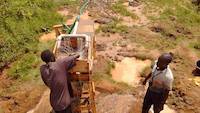 People are handling the sluice for fine gold recovery. We are using 4 important pieces of technology necessary to capture small gold. The test stage allows a lot of mistakes to happen, so that next sluice may be built with all the small improvements necessary for better gold recovery.
People are handling the sluice for fine gold recovery. We are using 4 important pieces of technology necessary to capture small gold. The test stage allows a lot of mistakes to happen, so that next sluice may be built with all the small improvements necessary for better gold recovery. - Feeding the sluice
 The sluice is fed during the first half an hour of testing. Clay material was much harder to handle, while all the sand was handled pretty well, mercury and gold particles could be recovered, together with the oxide coated gold particles.
The sluice is fed during the first half an hour of testing. Clay material was much harder to handle, while all the sand was handled pretty well, mercury and gold particles could be recovered, together with the oxide coated gold particles. - Laminar water flow
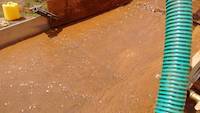 Laminar water flow on the sluice is important factor in gold recovery. Turbulences and bubbles or air spaces under the water flow shall by all means be avoided.
Laminar water flow on the sluice is important factor in gold recovery. Turbulences and bubbles or air spaces under the water flow shall by all means be avoided. - Gold particles are separated on the sluice
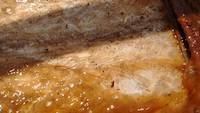 Sluice and the slick plates on the first part of the sluice are being separated from each other and gold particles are running to be captured. Water flow is carefully observed, the level of the sluice, bubbles and turbulences.
Sluice and the slick plates on the first part of the sluice are being separated from each other and gold particles are running to be captured. Water flow is carefully observed, the level of the sluice, bubbles and turbulences. - So many hoses, pipe, which one is ours?
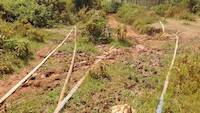 There are so many hoses and pipes on the ground, many of them are neglected. Miners do their best. Due to expenses, light blue hoses are used to bring water. But they are also breaking all the time and are more liability than an asset. We are using the HDPE pipe of two inch as it is durable and gives least resistant to water in comparison to those other soft hoses.
There are so many hoses and pipes on the ground, many of them are neglected. Miners do their best. Due to expenses, light blue hoses are used to bring water. But they are also breaking all the time and are more liability than an asset. We are using the HDPE pipe of two inch as it is durable and gives least resistant to water in comparison to those other soft hoses. - The HDPE pipe is being moved for easier water supply
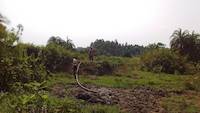 The HDPE pipe is moved by our people for easier water supply. That way we did not need to cut the expensive suction hose which we use to bring water from the HDPE pipe. HDPE means high density polyethylene. Polyethylene is a lightweight thermoplastic used in insulation, plumbing and similar applications.
The HDPE pipe is moved by our people for easier water supply. That way we did not need to cut the expensive suction hose which we use to bring water from the HDPE pipe. HDPE means high density polyethylene. Polyethylene is a lightweight thermoplastic used in insulation, plumbing and similar applications. - The sluice ready for the tailings heap test
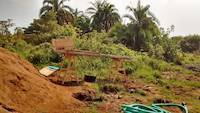 The sluice is setup on the mining site on 1st January 2018 and is ready for the tailings test. Larger gold particles were found and much of the smaller particles of black, brown and dark red gold. Maybe you wonder what is black, brown and dark red gold? Those gold particles are coated with other minerals and do not appear as yellow and shiny as larger gold particles.
The sluice is setup on the mining site on 1st January 2018 and is ready for the tailings test. Larger gold particles were found and much of the smaller particles of black, brown and dark red gold. Maybe you wonder what is black, brown and dark red gold? Those gold particles are coated with other minerals and do not appear as yellow and shiny as larger gold particles. - Injury on the mining site
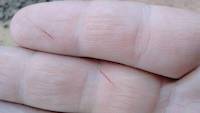 Fingers were cut on the sluice on the attempt to remove some small rocks. But small rocks were made of quartz. Sharp quartz.
Fingers were cut on the sluice on the attempt to remove some small rocks. But small rocks were made of quartz. Sharp quartz. - The empty mining site on 26th December 2017
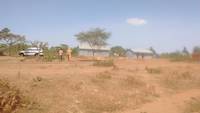 This is the empty mining and mineral processing site on 27th December 2017 in Uganda. People went for Christmas, we remained with few people for work. There was plenty of time to field assay the tailings heap that was first in the row out of many.
This is the empty mining and mineral processing site on 27th December 2017 in Uganda. People went for Christmas, we remained with few people for work. There was plenty of time to field assay the tailings heap that was first in the row out of many. - Gold flake in the gold pan
 Small gold flake was found in the gold pan during the gold panning on the materials from tailings.
Small gold flake was found in the gold pan during the gold panning on the materials from tailings. - Prospecting in the tailings after the sluice
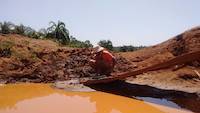 Local miners remain with tailings after the sluice. Here I am verifying their tailings and losses. Such material was tested by using Garrett Super Sluice to quickly determine what is being lost. Several flakes of gold of 1 millimeter have been found, and one nugget of 2 millimeter. Multiple small particles of gold including mercury have been found as well. It proved again the losses of artisanal miners and gave us assurance of profitability of the tailings.
Local miners remain with tailings after the sluice. Here I am verifying their tailings and losses. Such material was tested by using Garrett Super Sluice to quickly determine what is being lost. Several flakes of gold of 1 millimeter have been found, and one nugget of 2 millimeter. Multiple small particles of gold including mercury have been found as well. It proved again the losses of artisanal miners and gave us assurance of profitability of the tailings. - Conducting the field assay on the tailing heap
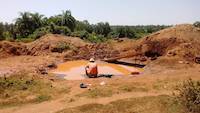 It was 26th December 2017. I was conducting the more proper field assay on the tailings heap to determine the number of gold particles and to get a feeling of what it is inside. When I say "more proper" it means that there may be various factors influencing the analysis of the tailings heap. The result was fantastic in the sense that I could recover all the smallest particles of gold, even hardly visible under the magnifier, including the mercury particles. Thus we may determine on the spot and within…
It was 26th December 2017. I was conducting the more proper field assay on the tailings heap to determine the number of gold particles and to get a feeling of what it is inside. When I say "more proper" it means that there may be various factors influencing the analysis of the tailings heap. The result was fantastic in the sense that I could recover all the smallest particles of gold, even hardly visible under the magnifier, including the mercury particles. Thus we may determine on the spot and within… - The black sand separation system
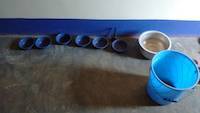 This is our black sand separation system. When concentrate contains some gold and we do not want to recover the small gold, but need some black sand, we are using the classic magnetic separation from one bowl to other bowl. The concentrate is first dried on the stove, then black sand is removed for our purposes. The black sand removal for purposes of gold recovery is efficient with this method only if you have very small amount of concentrate. With bucket large concentrates this method is very slow…
This is our black sand separation system. When concentrate contains some gold and we do not want to recover the small gold, but need some black sand, we are using the classic magnetic separation from one bowl to other bowl. The concentrate is first dried on the stove, then black sand is removed for our purposes. The black sand removal for purposes of gold recovery is efficient with this method only if you have very small amount of concentrate. With bucket large concentrates this method is very slow… - Fisher in the rudimentary raft
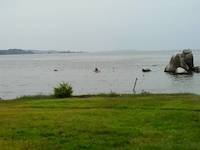 This fisher is catching fish by using the rudimentary raft, that looks as unsafe as it can be. We heard few of such fishers were caught by crocodiles somewhere nearby Kenyan beach of Lake Victoria.
This fisher is catching fish by using the rudimentary raft, that looks as unsafe as it can be. We heard few of such fishers were caught by crocodiles somewhere nearby Kenyan beach of Lake Victoria. - The view on Lake Victoria from Mwanza, Tanzania, back in 2012
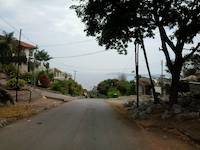 This is view on the Lake Victoria from Mwanza, Tanzania, back in 2012.
This is view on the Lake Victoria from Mwanza, Tanzania, back in 2012. - Lake Victoria in Mwanza, 2012
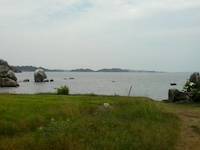 This is view on the Lake Victoria, from Mwanza city, Tanzania, back in 2012.
This is view on the Lake Victoria, from Mwanza city, Tanzania, back in 2012. - Bismarck Rocks in Mwanza in 2012
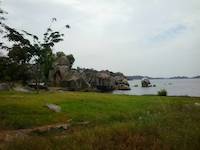 This is the beach of Lake Victoria, nearby the Bismarck Rocks in Mwanza, back in 2012. This is maybe the only maintained and beautiful place on the lake in Mwanza. And it is forbidden to walk or enjoy there, but people still do it. Other places are either polluted or dirty of trash.
This is the beach of Lake Victoria, nearby the Bismarck Rocks in Mwanza, back in 2012. This is maybe the only maintained and beautiful place on the lake in Mwanza. And it is forbidden to walk or enjoy there, but people still do it. Other places are either polluted or dirty of trash. - The construction in Mwanza in 2012
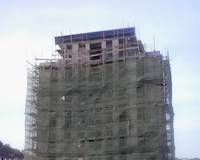 This is how construction companies are doing it in Mwanza back in 2012.
This is how construction companies are doing it in Mwanza back in 2012. - Mwanza as of 25th August 2012
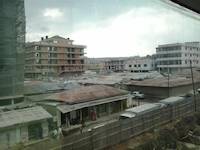 This is Mwanza back in 2012.
This is Mwanza back in 2012. - View on Mwanza roofs 25th August 2012
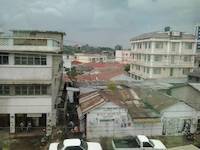 This is the view onto Mwanza roofs in August 2012.
This is the view onto Mwanza roofs in August 2012. - Chamber of Commerce in Dar es Salaam, Tanzania
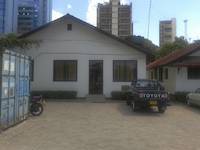 During first government visits in Tanzania, back in 2012, we visited also the Chamber of Commerce. The building was pretty hidden and virtually deserted. No customers or businessmen observed at premises. We have to pass the gun control and sign up in the book of visitors. We had idea to purchase gold in Tanzania by using a bank guarantee. This deal have been shown later as fake and fraudulent. Chamber of Commerce had no means to help us with gold purchases and in general those few women working there…
During first government visits in Tanzania, back in 2012, we visited also the Chamber of Commerce. The building was pretty hidden and virtually deserted. No customers or businessmen observed at premises. We have to pass the gun control and sign up in the book of visitors. We had idea to purchase gold in Tanzania by using a bank guarantee. This deal have been shown later as fake and fraudulent. Chamber of Commerce had no means to help us with gold purchases and in general those few women working there… - Way too expensive hotel in Dar es Salaam
 Before we arrived to Dar es Salaam, first time, back in 2012, we were reading in the tourist guide not to trust the taxi drivers to bring us to hotels. And then I did exact same mistake. I told him to bring us to inexpensive hotel, yet he brought us to the expensive one. Taxi drivers in Dar es Salaam are sharing their commissions with hotels. If you wish to sleap cheaply, the price of 10 dollars is enough for a good hotel. Remember that. If you wish to sleep even cheaper it is possible for US $4.48…
Before we arrived to Dar es Salaam, first time, back in 2012, we were reading in the tourist guide not to trust the taxi drivers to bring us to hotels. And then I did exact same mistake. I told him to bring us to inexpensive hotel, yet he brought us to the expensive one. Taxi drivers in Dar es Salaam are sharing their commissions with hotels. If you wish to sleap cheaply, the price of 10 dollars is enough for a good hotel. Remember that. If you wish to sleep even cheaper it is possible for US $4.48… - Goldivanti LP purchasing manager in Uganda in front of the storage room
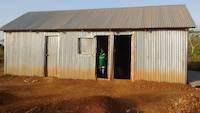 This is our Ugandan purchasing manager, she purchases all connectors, HDPE pipes, hoses, water pumps, pump connectors, and just whatever else is necessary. She managed to send a person to Tanzania and export and import the most necessary equipment.
This is our Ugandan purchasing manager, she purchases all connectors, HDPE pipes, hoses, water pumps, pump connectors, and just whatever else is necessary. She managed to send a person to Tanzania and export and import the most necessary equipment. - One part of our equipment in the storage room
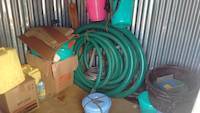 This is one part of our equipment in the storage room. Few suction hoses, a water pump, basins, gold pans, vortex matting and the miners' moss, fine gold sluices, buckets for concentrates and various basic tools.
This is one part of our equipment in the storage room. Few suction hoses, a water pump, basins, gold pans, vortex matting and the miners' moss, fine gold sluices, buckets for concentrates and various basic tools. - Mr. Louis resting after gold recovery
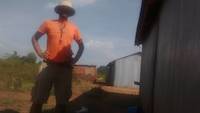 The gold recovery method took several minutes to complete and to run the concentrates to recover some fine gold particles. Mr. Louis is resting in standing position, after longer sitting session.
The gold recovery method took several minutes to complete and to run the concentrates to recover some fine gold particles. Mr. Louis is resting in standing position, after longer sitting session. - The fine gold recovery system as conducted by Mr. Louis
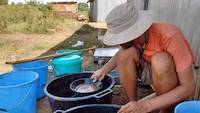 The fine gold system is conducted by Mr. Louis in the shade of the storage and accommodation building. Few buckets, gold pans, classifiers, and super-concentration helps in recovery of the finest gold particles. Both the beach sand and tailing heaps have been proven to contain fine gold and that is the target of the operation on this mining site. The recovery of fine gold in multiple tailing heaps.
The fine gold system is conducted by Mr. Louis in the shade of the storage and accommodation building. Few buckets, gold pans, classifiers, and super-concentration helps in recovery of the finest gold particles. Both the beach sand and tailing heaps have been proven to contain fine gold and that is the target of the operation on this mining site. The recovery of fine gold in multiple tailing heaps. - Fine gold recovered after test of the tailing
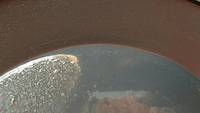 The fine gold have been recovered after the test of the tailing heaps and beach sand. The beach sand is containing fine gold and mercury together from previous mining operations. People are bringing sand and soil all the time to wash it on the river. Beach contains a lot of fine gold and few nuggets. The tailing heaps contain fine gold and small nuggets as well. This fine gold as shown on the picture have been recovered without any mercury, by using simplest tools for gold prospecting.
The fine gold have been recovered after the test of the tailing heaps and beach sand. The beach sand is containing fine gold and mercury together from previous mining operations. People are bringing sand and soil all the time to wash it on the river. Beach contains a lot of fine gold and few nuggets. The tailing heaps contain fine gold and small nuggets as well. This fine gold as shown on the picture have been recovered without any mercury, by using simplest tools for gold prospecting. - Drink mercury, drink
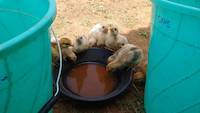 Not that I wanted this. But it is how it is. Chicken and goats are continously on the mining site and drinking whatever water they find around. This gold pan had black sand particles with gold and mercury smaller than 200 mesh. It was sieves with the 200 mesh sieve. Such fine gold smaller than 200 mesh, including even smaller mercury particles are floating in the water. These chicks are drinking both the fine gold particles floating in the water and mercury particles as well. Mercury is a pollutant…
Not that I wanted this. But it is how it is. Chicken and goats are continously on the mining site and drinking whatever water they find around. This gold pan had black sand particles with gold and mercury smaller than 200 mesh. It was sieves with the 200 mesh sieve. Such fine gold smaller than 200 mesh, including even smaller mercury particles are floating in the water. These chicks are drinking both the fine gold particles floating in the water and mercury particles as well. Mercury is a pollutant… - The fine gold recovery system
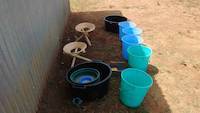 This is our fine gold recovery system. A set of buckets and basins, classifiers, sluices, gold pans. Very simple. We can recover finest gold particles without using mercury. Process is fast and simple and we use the principle and the rule that key to recovery of gold is concentration. So we do that. We concentrate it. First we are concentrating the gold on the fine gold sluice. Then we obtain the concentrates we concentrate the concentrates on a smaller sluice and get very much of the gold in very…
This is our fine gold recovery system. A set of buckets and basins, classifiers, sluices, gold pans. Very simple. We can recover finest gold particles without using mercury. Process is fast and simple and we use the principle and the rule that key to recovery of gold is concentration. So we do that. We concentrate it. First we are concentrating the gold on the fine gold sluice. Then we obtain the concentrates we concentrate the concentrates on a smaller sluice and get very much of the gold in very… - The tailing heap
 This is the tailing heap being processed by the fellow miner on the location. The expected outcome is about 50 grams, up to 100 grams, with the initial expense of just 10 grams and later running expenses.
This is the tailing heap being processed by the fellow miner on the location. The expected outcome is about 50 grams, up to 100 grams, with the initial expense of just 10 grams and later running expenses. - The raised operation on the heap
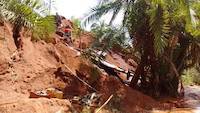 The operation of tailing processing is raised so that hammer crusher is placed on the top of the heap and sluices down. The second sluice have too much of the slope and also very turbulent water flow that simply looses a lot of gold. 1-2 grams of gold lost per day makes a lot of money on the end of the month.
The operation of tailing processing is raised so that hammer crusher is placed on the top of the heap and sluices down. The second sluice have too much of the slope and also very turbulent water flow that simply looses a lot of gold. 1-2 grams of gold lost per day makes a lot of money on the end of the month. - Find out where is the assaying sluice...
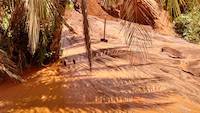 On this picture one may observe the flow of the processed tailing, and there is one small assaying sluice capturing the fine gold particles. Try to find out where it is. Do you see it?…
On this picture one may observe the flow of the processed tailing, and there is one small assaying sluice capturing the fine gold particles. Try to find out where it is. Do you see it?… - The tailing heap after re-processing
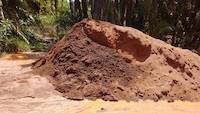 These tailing heaps are ending on the location just nearby the river thus polluting the area with the mercury particles. River is fully polluted, cows are drinking the same water and mercury is slowly transported to human bodies.
These tailing heaps are ending on the location just nearby the river thus polluting the area with the mercury particles. River is fully polluted, cows are drinking the same water and mercury is slowly transported to human bodies. - Miners' moss and the turbulent water flow
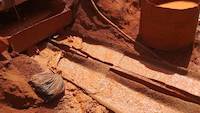 Miners are using this type of a setup with two sluices after the hammer crusher. That is for the reason that the crusher cannot easily be stopped and started again, so they close one of the outputs to clean the carpet on one side while the other one is still running. Miners' moss is incorrectly set, the water flow is turbulent, and expanded metal is missing to push the gold particles quickly down into the carpets. A simple test have revealed that a lot of gold is being lost, just as much as one would…
Miners are using this type of a setup with two sluices after the hammer crusher. That is for the reason that the crusher cannot easily be stopped and started again, so they close one of the outputs to clean the carpet on one side while the other one is still running. Miners' moss is incorrectly set, the water flow is turbulent, and expanded metal is missing to push the gold particles quickly down into the carpets. A simple test have revealed that a lot of gold is being lost, just as much as one would… - The "Wett Mill" or locally made hammer crusher and processing of tailing
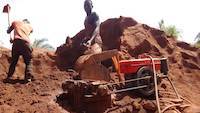 This is "wet mill" or locally made hammer crusher that breaks each in a while. The maintenance expenses may be alone 3,500,000 Ugs. (Ugandan shillings) per month. The hammers are constantly replaced and the machine once running cannot be easily turned off. It mills rocks just for a certain percentage, large amount of pebbles and rocks come out as not well done.
This is "wet mill" or locally made hammer crusher that breaks each in a while. The maintenance expenses may be alone 3,500,000 Ugs. (Ugandan shillings) per month. The hammers are constantly replaced and the machine once running cannot be easily turned off. It mills rocks just for a certain percentage, large amount of pebbles and rocks come out as not well done. - The method of collecting the black sand
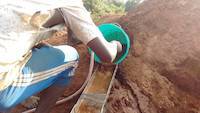 We are collecting the black sand. This is one effective method. On this place we lack black sand as we are using it to collect fine gold particles. On the place where other people generate concentrates we are using their concentrates to find black sand usable in our application of mercury free gold recovery.
We are collecting the black sand. This is one effective method. On this place we lack black sand as we are using it to collect fine gold particles. On the place where other people generate concentrates we are using their concentrates to find black sand usable in our application of mercury free gold recovery. - The heavy chains in hardware store in Busia
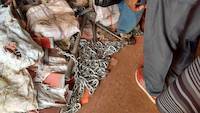 The heavy chains in hardware store in Busia may be used in the chain impact mill that may influence the gold recovery.
The heavy chains in hardware store in Busia may be used in the chain impact mill that may influence the gold recovery. - One way to connect the suction hose and plastic pipe
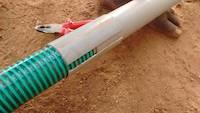 This is one way to connect the softer suction hose of 2 inch and the plastic pipe which is exactly the same size as the suction hose. The suction cannot be put directly onto this plastic pipe as how we have done that in Tanzania. The pipe is simple of different type over here. We have cut two pieces of the plastic pipe and then cut it on one side of the pipe, along the side. One piece have been bent and made smaller, expandable due to its elasticity and placed it inside the suction hose and the plastic…
This is one way to connect the softer suction hose of 2 inch and the plastic pipe which is exactly the same size as the suction hose. The suction cannot be put directly onto this plastic pipe as how we have done that in Tanzania. The pipe is simple of different type over here. We have cut two pieces of the plastic pipe and then cut it on one side of the pipe, along the side. One piece have been bent and made smaller, expandable due to its elasticity and placed it inside the suction hose and the plastic… - Connecting hoses and pipes with rubber strings
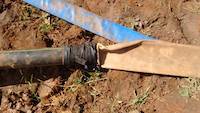 The rubbers are made out of the bicycle inner tyre and sold for 1,000 Ugandan shillings which is about US $0.27.
The rubbers are made out of the bicycle inner tyre and sold for 1,000 Ugandan shillings which is about US $0.27. - Miners shoveling sand into the sluice
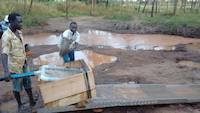 Miners are shoveling the sand into the sluice for fine gold recovery.
Miners are shoveling the sand into the sluice for fine gold recovery. - Spray bars are washing quickly the soil
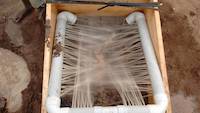 Soil is washed on these spray bars and it is giving quite good output of about 4-5 tonnes per hour. Fine gold can be captured with this water flow. Sluices are wide enough and water flow is not disturbing the recovery.
Soil is washed on these spray bars and it is giving quite good output of about 4-5 tonnes per hour. Fine gold can be captured with this water flow. Sluices are wide enough and water flow is not disturbing the recovery. - The work on the sluice
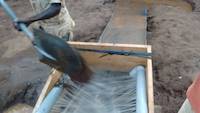 There was some work on the sluice primarily for the purpose to collect a lot of black sand for later work, yet fine gold particles and fine mercury particles were there as well. Mercury will be collected for proper disposal and is not used in gold recovery.
There was some work on the sluice primarily for the purpose to collect a lot of black sand for later work, yet fine gold particles and fine mercury particles were there as well. Mercury will be collected for proper disposal and is not used in gold recovery. - One shovel is finished within seconds, about 40-50 kilograms is washed in one minute
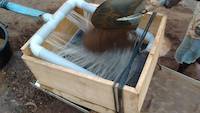 Just about 40-50 kilogram is washed within a minute, one person is enough to feed this sluice. That alone makes 4-5 tonnes per hour. Sluice may collect fine gold particles, mercury for disposal purposes, and larger nuggets.
Just about 40-50 kilogram is washed within a minute, one person is enough to feed this sluice. That alone makes 4-5 tonnes per hour. Sluice may collect fine gold particles, mercury for disposal purposes, and larger nuggets. - Using candle, plyers and nail to make the simplest spray bars
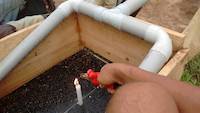 Simplest spray bars are easily constructed on the spot by using the candle, matchboxes, pliers and the nail. Nail is heated and used to pierce the plastic pipes. We are using enough holes for about 60% of the water to come out, which makes nice shower. I guess we shall put few more holes for some 70% - 75% of the water supply.
Simplest spray bars are easily constructed on the spot by using the candle, matchboxes, pliers and the nail. Nail is heated and used to pierce the plastic pipes. We are using enough holes for about 60% of the water to come out, which makes nice shower. I guess we shall put few more holes for some 70% - 75% of the water supply. - The turbulence on the sluice
 Water turbulences on the sluice are not wished and wanted. Such turbulences shall be lessened by adjustments of the spray bars. Fine gold does not like being pushed with sudden bursts of water.
Water turbulences on the sluice are not wished and wanted. Such turbulences shall be lessened by adjustments of the spray bars. Fine gold does not like being pushed with sudden bursts of water. - The vortex matting is being washed to dissolve any water tension
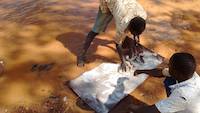 Various particles on the vortex matting may create the tension so that water cannot enter the small wells or dimples. That includes the black sand and fine gold particles, they may run over the matting without being captured. Washing it with the environmentally friendly dish soap breaks the tensions and helps the fine gold to settle nicely.
Various particles on the vortex matting may create the tension so that water cannot enter the small wells or dimples. That includes the black sand and fine gold particles, they may run over the matting without being captured. Washing it with the environmentally friendly dish soap breaks the tensions and helps the fine gold to settle nicely. - Miner working with hydro-nozzle in Uganda
 The hydro-nozzle is used here to suck the sand into the pipe and then straight into the sluice. Miner is getting used to it.
The hydro-nozzle is used here to suck the sand into the pipe and then straight into the sluice. Miner is getting used to it. - Miners working with hydro-nozzle
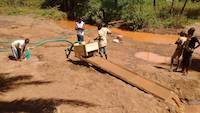 The hydro-nozzle is used here to wash the sand on the river beach for the test of the sluice and water supply.
The hydro-nozzle is used here to wash the sand on the river beach for the test of the sluice and water supply. - The hydro-nozzle setup
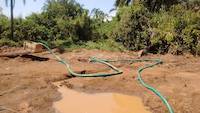 This was the simple and improvized hydro-nozzle setup on the sand beach of the river Okame. The hydro-nozzle was first time utilized in this location. People were curious to see that new mzungu technology.
This was the simple and improvized hydro-nozzle setup on the sand beach of the river Okame. The hydro-nozzle was first time utilized in this location. People were curious to see that new mzungu technology. - The pump is working surprisingly well
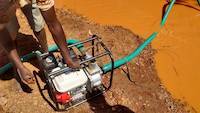 The Chinese WD or WX-20 pump, whatever, is re-branded pump and sold by many various different companies. It is working surprisingly well. And is giving more water than enough for our purposes.
The Chinese WD or WX-20 pump, whatever, is re-branded pump and sold by many various different companies. It is working surprisingly well. And is giving more water than enough for our purposes. - The setup of the pump for the dredge test on river Okame in Uganda
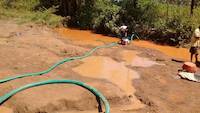 The pump was set up as on this picture for the dredge test on the river okame. The hydro-nozzle was tested and is able to pick up a lot of sand. It requires a strong pump of 2 inch and on almost the full speed.
The pump was set up as on this picture for the dredge test on the river okame. The hydro-nozzle was tested and is able to pick up a lot of sand. It requires a strong pump of 2 inch and on almost the full speed. - The hydro-nozzle in action in Uganda
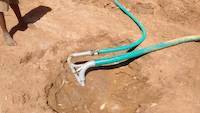 The hydro-nozzle is being tested on the sand beach in Uganda. Fine gold and fine mercury was found in the beach. Too many people were there over few last years washing both gold and mercury particles. River is thus polluted.
The hydro-nozzle is being tested on the sand beach in Uganda. Fine gold and fine mercury was found in the beach. Too many people were there over few last years washing both gold and mercury particles. River is thus polluted. - Preparation of the bottom part of the sluice
 The bottom part of the sluice is being prepared for testing stage.
The bottom part of the sluice is being prepared for testing stage. - The polluted feces of the skinned goat
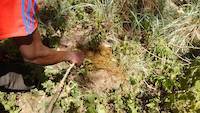 The polluted feces of the skinned goat contains a lot of plastic. Goats were eating whatever they found around. It was not a witchcraft. It was polluted environment.
The polluted feces of the skinned goat contains a lot of plastic. Goats were eating whatever they found around. It was not a witchcraft. It was polluted environment. - Skinned goat, and polluted with plastic
 The goat is skinned for feast, yet polluted with plastic. A person asked me to come there to ask me something, and I came. I said by joke it is witchcraft. But the guy really was thinking it is. What happened is that they found some plastic in the goat. Due to the environment polluted with plastic, the goat had stomach full of it.
The goat is skinned for feast, yet polluted with plastic. A person asked me to come there to ask me something, and I came. I said by joke it is witchcraft. But the guy really was thinking it is. What happened is that they found some plastic in the goat. Due to the environment polluted with plastic, the goat had stomach full of it. - It almost fell into the trench
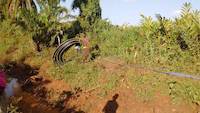 The HDPE (High Density Polyethylene) pipe almost fell into the trench, our boys are handling it.
The HDPE (High Density Polyethylene) pipe almost fell into the trench, our boys are handling it. - The HDPE pipe is near the river
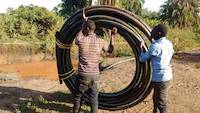 The HDPE (High Density Polyethylene) pipe is almost at the river place.
The HDPE (High Density Polyethylene) pipe is almost at the river place. - 100 meter may not be as easy as one thinks
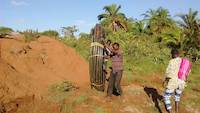 The 100 meter distance to the river may not be as easy to handle as one thinks. The mud is just everywhere and legs get stuck into it. Pipe itself as made out of the HDPE (High Density Polyethylene) is heavy and requires handling.
The 100 meter distance to the river may not be as easy to handle as one thinks. The mud is just everywhere and legs get stuck into it. Pipe itself as made out of the HDPE (High Density Polyethylene) is heavy and requires handling. - Moving the HDPE pipe to the river
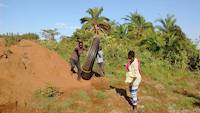 The HDPE (High Density Polyethylene) pipe is brought to the river for testing purposes. We wish to test the pump for its capability to bring us enough water to the sluice which is 100 meter distant.
The HDPE (High Density Polyethylene) pipe is brought to the river for testing purposes. We wish to test the pump for its capability to bring us enough water to the sluice which is 100 meter distant. - The HDPE pipe is brought to the the river
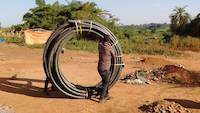 The HDPE (High Density Polyethylene) pipe is brought to the river for testing purposes. We wish to test the pump for its capability to bring us enough water to the sluice which is 100 meter distant.
The HDPE (High Density Polyethylene) pipe is brought to the river for testing purposes. We wish to test the pump for its capability to bring us enough water to the sluice which is 100 meter distant. - The open pit after the work of the excavator
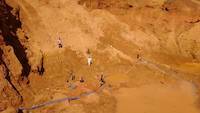 This open pit was run and dug by excavator in last three days and people are trying to reach the gold bearing rocks. They actually reached it, only lack the knowledge of prospecting to continually verify the material and lack the equipment to process it. There is often more work than necessary which increases the expenses. Sometimes just 10 bags of materials are discarded and 22 grams of gold found. But the process of transport of the material is stopped, and delayed by long time of such verification.
This open pit was run and dug by excavator in last three days and people are trying to reach the gold bearing rocks. They actually reached it, only lack the knowledge of prospecting to continually verify the material and lack the equipment to process it. There is often more work than necessary which increases the expenses. Sometimes just 10 bags of materials are discarded and 22 grams of gold found. But the process of transport of the material is stopped, and delayed by long time of such verification. - Wooden sawhorses, the HDPE pipe and timber on the site
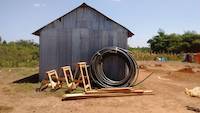 The wooden goats, the HDPE pipe and timber is ready on the site to be used for processing of the tailing.
The wooden goats, the HDPE pipe and timber is ready on the site to be used for processing of the tailing. - Wooden goats for various applications
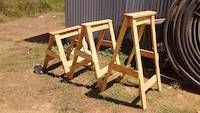 Wooden goats may be used for various applications, such as improvized desks, even beds, work benches, and the sluice setup for recovery of the gold.
Wooden goats may be used for various applications, such as improvized desks, even beds, work benches, and the sluice setup for recovery of the gold. - Simple petrol run pump for about 600 liters per minute
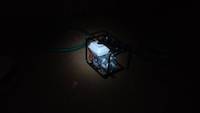 This is simple 2 inch petrol pump for about 600 liters per minute, which is about 36 m³ of water per hour. Yet, we do not need that much water and intend to run the pump throttled down so that 6 tonnes of material can be processed per hour. Once that has been achieved, further adjustments can be made to increase the speed of processing.
This is simple 2 inch petrol pump for about 600 liters per minute, which is about 36 m³ of water per hour. Yet, we do not need that much water and intend to run the pump throttled down so that 6 tonnes of material can be processed per hour. Once that has been achieved, further adjustments can be made to increase the speed of processing. - Heaps of tailing in the background
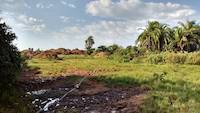 The tailing may be seen in background, there are many heaps of tailing containing the fine gold and some coarse gold. The lost fine gold may be still recovered. We are researching if such operation will be profitable for us.
The tailing may be seen in background, there are many heaps of tailing containing the fine gold and some coarse gold. The lost fine gold may be still recovered. We are researching if such operation will be profitable for us. - The layers of rock in the open pit
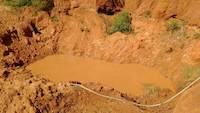 The layers of rock are visible in this open pit and may be traced to the gold bearing rocks.
The layers of rock are visible in this open pit and may be traced to the gold bearing rocks. - Layers of rocks visible in the open pit
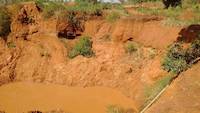 The layers of rocks are visible in this open pit and may be traced down to the source.
The layers of rocks are visible in this open pit and may be traced down to the source. - The sample application of wooden goats
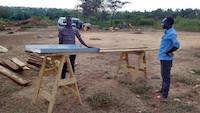 Wooden goats may be used as a work bench or for the sluice that one may see on this picture. They are supportive improvized tool in any bush or open air work.
Wooden goats may be used as a work bench or for the sluice that one may see on this picture. They are supportive improvized tool in any bush or open air work. - Wooden boards obtained from a village
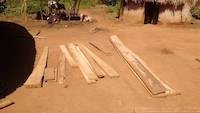 These wooden boards have been obtained from a village few kilometers far from the mineral processing location.
These wooden boards have been obtained from a village few kilometers far from the mineral processing location. - Cutting timber in the forest
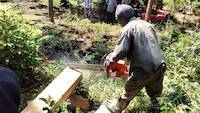 Timber is cut in the forest and quickly converted into wooden boards that will be used for the washing of the soil of the tailing heaps and for benches, desks and similar.
Timber is cut in the forest and quickly converted into wooden boards that will be used for the washing of the soil of the tailing heaps and for benches, desks and similar. - Cutting timber in the forest
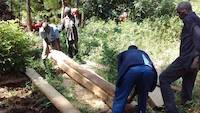 The timber is cut directly in the forest and sold to us, then brought to the mining site for purposes of assembly of the sluice boxes, benches, tables and similar.
The timber is cut directly in the forest and sold to us, then brought to the mining site for purposes of assembly of the sluice boxes, benches, tables and similar. - Open pit mining in Uganda
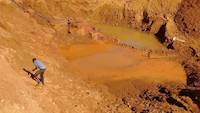 The open pit mining is a popular way in Busia as in 2017 and one, two years earlier. Yet, the excavations often lacks proper planning and work stagnate easily even when a lot of gold has been found.
The open pit mining is a popular way in Busia as in 2017 and one, two years earlier. Yet, the excavations often lacks proper planning and work stagnate easily even when a lot of gold has been found. - The vortex matting on the sluice
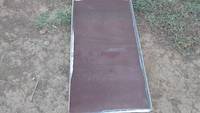 The vortex matting is on the sluice. One piece on the left side looks like incorrectly cut, we could say so. Yet the sides will be covered and pushed down by pieces of wood, and that is not essential.
The vortex matting is on the sluice. One piece on the left side looks like incorrectly cut, we could say so. Yet the sides will be covered and pushed down by pieces of wood, and that is not essential. - The sluice work in gold recovery
 The sluice work in gold recovery may be one of most important stages. Nobody wish to loose gold. If there is production every day, few grams of lost gold may not mean nothing. Yet if the gold is lost over and over again for many days, weeks and months, the loss gold is of considerable value and care must be taken to retain it.
The sluice work in gold recovery may be one of most important stages. Nobody wish to loose gold. If there is production every day, few grams of lost gold may not mean nothing. Yet if the gold is lost over and over again for many days, weeks and months, the loss gold is of considerable value and care must be taken to retain it. - Cutting and preparing the vortex matting for the sluice
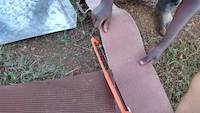 We are cutting and preparing the vortex matting for the sluice. With some lack of proper tools and within this environment we did it pretty well. Cutting is not as easy.
We are cutting and preparing the vortex matting for the sluice. With some lack of proper tools and within this environment we did it pretty well. Cutting is not as easy. - Funny looking rooster
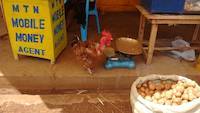 This funny looking rooster we found in Tororo, while purchasing the HDPE (High Density Polyethylene) pipe connectors and other small stuff necessary for business.
This funny looking rooster we found in Tororo, while purchasing the HDPE (High Density Polyethylene) pipe connectors and other small stuff necessary for business. - Tororo rock in Tororo city, Uganda
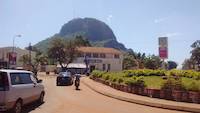 This is well known Tororo rock in the Tororo city in southeastern Uganda. It emerges there out of nothing, and no other hills are visible in the area.
This is well known Tororo rock in the Tororo city in southeastern Uganda. It emerges there out of nothing, and no other hills are visible in the area. - Fine Gold Recovery Methods And Results
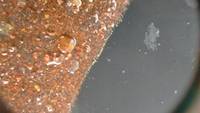 Fine gold recovery methods and results are discussed in this category. That is an important money bringing subject in gold mining. Fine gold is so much lost in mining operations, and is everywhere in existence, yet cannot be captured by well known or popular methods. There are only few inexpensive methods that exist in the world that can give good results in recovery of fine gold. Classification of particle sizes before the final recovery is one of the key principles that each gold prospector shall know and use. Gold panning is the other one. Fine gold can be easily panned out when all procedures are respected.
Fine gold recovery methods and results are discussed in this category. That is an important money bringing subject in gold mining. Fine gold is so much lost in mining operations, and is everywhere in existence, yet cannot be captured by well known or popular methods. There are only few inexpensive methods that exist in the world that can give good results in recovery of fine gold. Classification of particle sizes before the final recovery is one of the key principles that each gold prospector shall know and use. Gold panning is the other one. Fine gold can be easily panned out when all procedures are respected. - Processing the one pan of tailing within 5 minutes
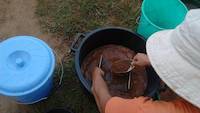 One pan of tailing soil was processed within 5 minutes in order to find the fine gold particles. Once fully understood, the process may be repeated over and over again with accuracy and certainty. It requires that a gold prospector or miner fully process the material and get a feeling of how much gold is inside there. And then by comparing those tests one may get a feeling of the ratio. In the same time I am mentioning accuracy and certainty, and then there is the contradiction that one need to get…
One pan of tailing soil was processed within 5 minutes in order to find the fine gold particles. Once fully understood, the process may be repeated over and over again with accuracy and certainty. It requires that a gold prospector or miner fully process the material and get a feeling of how much gold is inside there. And then by comparing those tests one may get a feeling of the ratio. In the same time I am mentioning accuracy and certainty, and then there is the contradiction that one need to get… - You should be using always the same quantity of material when testing for gold
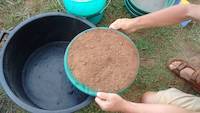 This is one Garrett Prospecting Gold Pan full and leveled with classified soil from a tailing heap. The soil was first classified for particles larger than 8 mesh, to find out what percentage of larger gravel is in the heaps. Then it was classified for particles smaller than 20 mesh, as I did not want to test for gold nuggest larger than 20 mesh. I know they do exist in these heaps from other tests. And I am fine with it. There is no point in searching for few nuggets in large volume of material…
This is one Garrett Prospecting Gold Pan full and leveled with classified soil from a tailing heap. The soil was first classified for particles larger than 8 mesh, to find out what percentage of larger gravel is in the heaps. Then it was classified for particles smaller than 20 mesh, as I did not want to test for gold nuggest larger than 20 mesh. I know they do exist in these heaps from other tests. And I am fine with it. There is no point in searching for few nuggets in large volume of material… - Tiny gold nugget on left side and mercury coated gold on the right side of the gold pan
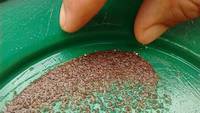 Here one may see the tiny nugget. I have recovered it by using sieves or classifiers, the green classifying pans for prospecting minerals. They can be used to find gemstones and gold nuggets. The soil that was in the area of gold panning was simply classified. When I found the gold nugget visually, I have simply transferred it into the pile of 20 mesh to 30 mesh sized gravel. Later I tried to pan it, I did not find this nugget, and somehow I was sorry for that, but I kept the quantity. Then again…
Here one may see the tiny nugget. I have recovered it by using sieves or classifiers, the green classifying pans for prospecting minerals. They can be used to find gemstones and gold nuggets. The soil that was in the area of gold panning was simply classified. When I found the gold nugget visually, I have simply transferred it into the pile of 20 mesh to 30 mesh sized gravel. Later I tried to pan it, I did not find this nugget, and somehow I was sorry for that, but I kept the quantity. Then again… - The spray of water on the left side designates the water losses in pumping
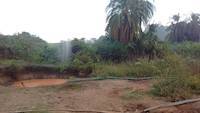 This spray of water is the loss and many such holes in the hoses influence the final water volume on the sluice. It also increases the fuel consumption.
This spray of water is the loss and many such holes in the hoses influence the final water volume on the sluice. It also increases the fuel consumption. - Water loss in pumping
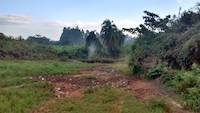 The water is lost in pumping if hoses are not tight. Pressure is lost and less water arrives to destination, the sluice for washing the gold ores.
The water is lost in pumping if hoses are not tight. Pressure is lost and less water arrives to destination, the sluice for washing the gold ores. - Gold nugget
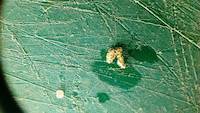 This gold nugget was recovered by panning.
This gold nugget was recovered by panning. - Gold nugget on my hand
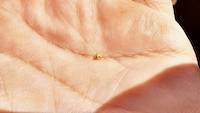 This is yet another smaller gold nugget on my hand.
This is yet another smaller gold nugget on my hand. - A gold nugget on the prospecting sluice
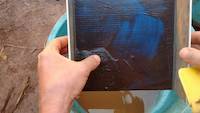 One gold nugget may be seen on the prospecting sluice.
One gold nugget may be seen on the prospecting sluice. - 0.89 grams of gold on the pocket scale
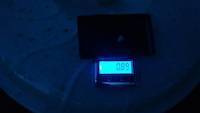 This gold was collected with one of our sluice that helped in fine gold recovery.
This gold was collected with one of our sluice that helped in fine gold recovery. - 11.42 grams of gold before the end of the shift
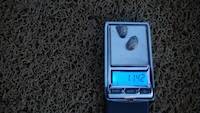 11.42 grams of gold were recovered this day before the end of the shift. This gold contains dangerous mercury, which we do not endorse or use. It was recovered with some of our help, but miners used their own methods. Mercury is dangerous chemical and not advisable for anything. It shall be disposed as waste.
11.42 grams of gold were recovered this day before the end of the shift. This gold contains dangerous mercury, which we do not endorse or use. It was recovered with some of our help, but miners used their own methods. Mercury is dangerous chemical and not advisable for anything. It shall be disposed as waste. - 6.44 grams of gold recovered on the sluice
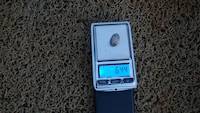 The black nylon part of the sluice with a wooden stopper has helped to recover these 6.44 grams of gold. It means, no other technology was used, just a stopper to stop the majority of gold to go over to the sluice.
The black nylon part of the sluice with a wooden stopper has helped to recover these 6.44 grams of gold. It means, no other technology was used, just a stopper to stop the majority of gold to go over to the sluice. - Mr. Louis after the work
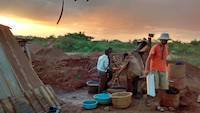 The picture was made after the work. Mr. Louis is moving with the equipment to the side.
The picture was made after the work. Mr. Louis is moving with the equipment to the side. - Gold nuggets recovered on 18th December 2017
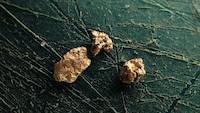 These are beautiful gold nuggets. Picture is slightly changed in its tone.
These are beautiful gold nuggets. Picture is slightly changed in its tone. - The flow on the sluice
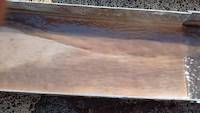 The narrow sluice is captuing a lot of fine gold.
The narrow sluice is captuing a lot of fine gold. - Fine gold is captured
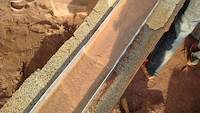 This setup is capturing fine gold particles.
This setup is capturing fine gold particles. - The improved super-concentration of gold concentrates
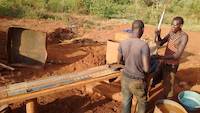 This is improved super-concentration of gold concentrates. The traditional sluice is simply extended with the technology we use to capture the finest gold particles.
This is improved super-concentration of gold concentrates. The traditional sluice is simply extended with the technology we use to capture the finest gold particles. - 0.11 grams of gold nuggets on the pocket scale
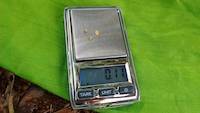 These gold nuggets were recovered by sluicing and gold panning.
These gold nuggets were recovered by sluicing and gold panning. - 4.79 grams of gold on the pocket scale
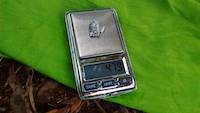 This gold was recovered on 18th December 2017.
This gold was recovered on 18th December 2017. - 4.44 grams of gold on the pocket scale
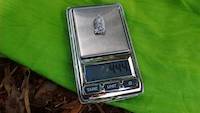 This gold was recovered on 18th December 2017…
This gold was recovered on 18th December 2017… - 0.37 grams of gold on the pocket scale
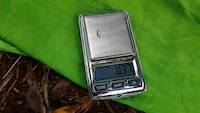 This is 0.37 grams of gold on the pocket scale.
This is 0.37 grams of gold on the pocket scale. - This is mercury gold and gold nuggets
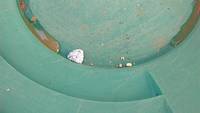 One may see on the left side the gold recovered by mercury which is of silver color and few gold yellow gold nuggets on the right side recovered on the sluice and by gold panning. We do not endorse any mercury recoveries.
One may see on the left side the gold recovered by mercury which is of silver color and few gold yellow gold nuggets on the right side recovered on the sluice and by gold panning. We do not endorse any mercury recoveries. - Gold nuggets
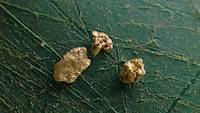 These gold nuggets are not as heavy, they are enlarged in the image, and were recovered today on 18th December 2017.
These gold nuggets are not as heavy, they are enlarged in the image, and were recovered today on 18th December 2017. - Gold nuggets, macro picture
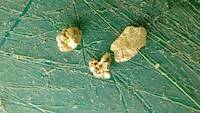 This is yet another picture of smaller gold nuggets recovered by gold panning and concentration on the sluice.
This is yet another picture of smaller gold nuggets recovered by gold panning and concentration on the sluice. - Gold nugget in a gold pan
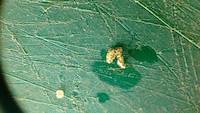 This is gold nugget.
This is gold nugget. - Gold nuggets in a gold pan
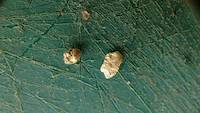 My gold pan is scratched. Yet we can recover gold nuggets as these.
My gold pan is scratched. Yet we can recover gold nuggets as these. - Gold nugget on my hand
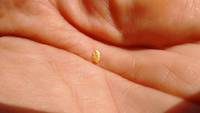 This gold nugget was recovered on this day of 18th December 2017 by gold panning.
This gold nugget was recovered on this day of 18th December 2017 by gold panning. - Miners' Moss or spaghetti carpet
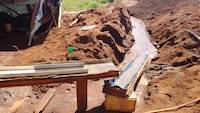 This type of miners's moss or spaghetti carpets are used to capture fine gold. That is certainly not the best solution, yet it is used to created kilograms of gold in Uganda.
This type of miners's moss or spaghetti carpets are used to capture fine gold. That is certainly not the best solution, yet it is used to created kilograms of gold in Uganda. - The rudimentary sluice is being upgraded
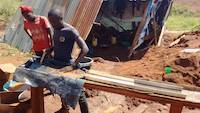 This rudimentary sluice is being upgraded with piece of technology that may capture finest gold particles. Yet only with the proper setup the majority of gold may be recovered. The water pressure cannot be too much, material cannot be washed to fast. There are many other factors influencing the gold recovery rate.
This rudimentary sluice is being upgraded with piece of technology that may capture finest gold particles. Yet only with the proper setup the majority of gold may be recovered. The water pressure cannot be too much, material cannot be washed to fast. There are many other factors influencing the gold recovery rate. - Gold nugget directly recovered on the sluice
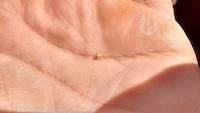 This gold nugget was directly recovered on the sluice on the nylon, while washing the concentrated material. It represents the lack of riffles or proper sluice to recover such nuggets.
This gold nugget was directly recovered on the sluice on the nylon, while washing the concentrated material. It represents the lack of riffles or proper sluice to recover such nuggets. - This is fine gold under the magnifier
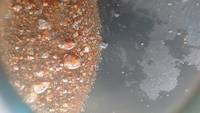 This is fine gold, many particles of fine gold are seen under the magnifier and image captured by mobile phone.
This is fine gold, many particles of fine gold are seen under the magnifier and image captured by mobile phone. - Fine gold line
 This is the line of fine gold under the magnifier.
This is the line of fine gold under the magnifier. - Fine gold particles concentrated on the sluice
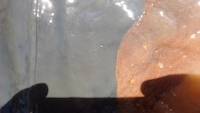 The local sluice allows one to observe the finest gold particles being concentrated on the first part of the sluice.
The local sluice allows one to observe the finest gold particles being concentrated on the first part of the sluice. - The piece of black nylon is showing fine gold
 This piece of black nylon have been mounted on the gold washing sluice and is being washed with pretty clean water from the nearest river Okame in Uganda. On such nice piece of black nylon, one may see how finest gold particles are being concentrated.
This piece of black nylon have been mounted on the gold washing sluice and is being washed with pretty clean water from the nearest river Okame in Uganda. On such nice piece of black nylon, one may see how finest gold particles are being concentrated. - Gold particles with mercury
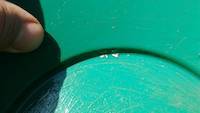 The tailing as being produced by artisanal miners in Uganda contains a lot of mercury inside and thus gold is recovered that contain a lot of mercury. It is not yellow but of silver color. We do not endorse usage of mercury in mining operations. However, we do recover gold that may contain mercury or traces of mercury. Such mercury, when recovered by our company, is disposed and exported as waste to secure locations.
The tailing as being produced by artisanal miners in Uganda contains a lot of mercury inside and thus gold is recovered that contain a lot of mercury. It is not yellow but of silver color. We do not endorse usage of mercury in mining operations. However, we do recover gold that may contain mercury or traces of mercury. Such mercury, when recovered by our company, is disposed and exported as waste to secure locations. - Mr. Louis showing the gold nuggets to the miner
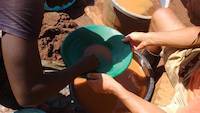 Mr. Louis is showing the gold nuggets to the miner, after demonstrating him the classification process. Gold nuggets may be easily recovered once classification of concentrate have been finished.
Mr. Louis is showing the gold nuggets to the miner, after demonstrating him the classification process. Gold nuggets may be easily recovered once classification of concentrate have been finished. - Gold nugget in the gold pan
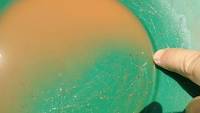 The gold nugget in the gold pan was panned by myself after the classification of particles into 3 separate sizes, larger than 20 mesh, particles between 20 and 30 mesh, and particles smaller than 30 mesh. After such classification of particle sizes, it was a matter of few minutes to pan out the larger gold nuggets.
The gold nugget in the gold pan was panned by myself after the classification of particles into 3 separate sizes, larger than 20 mesh, particles between 20 and 30 mesh, and particles smaller than 30 mesh. After such classification of particle sizes, it was a matter of few minutes to pan out the larger gold nuggets. - Basins are never enough
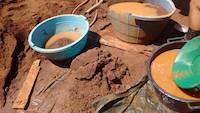 One of the out-points or better say not logical facts that we found on this mining site is the lack of basins and containers for the concentrates and handling of concentrates. Buckets were completely missing. Basins were not in best shapes. So every single action is coping or exchanging with other basins containing always some gold inside. It creates new risks in handling gold and delays the operation.
One of the out-points or better say not logical facts that we found on this mining site is the lack of basins and containers for the concentrates and handling of concentrates. Buckets were completely missing. Basins were not in best shapes. So every single action is coping or exchanging with other basins containing always some gold inside. It creates new risks in handling gold and delays the operation. - Gold nugget recovered by simple panning
 After washing the concentrates as created by neighbor, all the details of such concentrates have been analyzed. The procedure have been tested and devised which would be the best to collect simply all of the gold. The concentrate was such that it could contain even 3 grams big gold nuggets, which we did not find today. It contains a lot of fine gold due to the accumulation of black sands found in spaghetti carpets or miners' moss, and it contains a lot of smaller nuggets of the size of about 30-60…
After washing the concentrates as created by neighbor, all the details of such concentrates have been analyzed. The procedure have been tested and devised which would be the best to collect simply all of the gold. The concentrate was such that it could contain even 3 grams big gold nuggets, which we did not find today. It contains a lot of fine gold due to the accumulation of black sands found in spaghetti carpets or miners' moss, and it contains a lot of smaller nuggets of the size of about 30-60… - Mercury gold recovery is dangerous and poisonous business
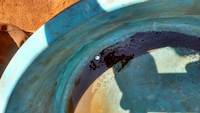 Mercury is a dangerous substance which we do not recommend to anybody in mining operations. There are many good mercury free gold recovery methods. Why pay for mercury when gold can be recovered without mercury? No American or European gold prospector is using mercury in their operations. So just stop using it, stop getting sick and stop polluting your environment.
Mercury is a dangerous substance which we do not recommend to anybody in mining operations. There are many good mercury free gold recovery methods. Why pay for mercury when gold can be recovered without mercury? No American or European gold prospector is using mercury in their operations. So just stop using it, stop getting sick and stop polluting your environment. - Miners feeding the hammer crusher in background
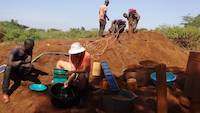 Those two miners in background are feeding the hammer crusher while I am handling the super concentrate.
Those two miners in background are feeding the hammer crusher while I am handling the super concentrate. - Helping the neighbor
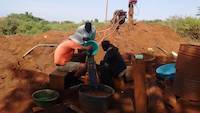 The super-concentration and handling of concentrates for the neighbor helped me understand much about the operation, the soil, the tailing and gold inside. It was not all how I have expected it. One need to see it practically, to understand what is required to handle such soil. There are factors that are important to note: - the type of machinery that people are using to create such tailings, - the particle sizes that such machinery is producing, - the particles sizes of gold that such machinery…
The super-concentration and handling of concentrates for the neighbor helped me understand much about the operation, the soil, the tailing and gold inside. It was not all how I have expected it. One need to see it practically, to understand what is required to handle such soil. There are factors that are important to note: - the type of machinery that people are using to create such tailings, - the particle sizes that such machinery is producing, - the particles sizes of gold that such machinery… - Little wet...
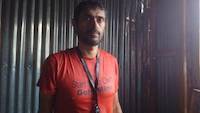 It was raining, so we are wet for a while.
It was raining, so we are wet for a while. - Rain on the mining site
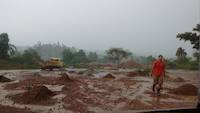 During the rain we can still test the surface sand for existence of gold, and if not, we can collect black-sands.
During the rain we can still test the surface sand for existence of gold, and if not, we can collect black-sands. - During the rain
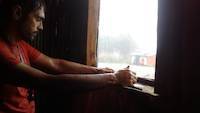 The rain is falling down as fast as possible. We have to wait until it is over.
The rain is falling down as fast as possible. We have to wait until it is over. - Collecting black sand
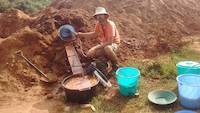 The black sand is collected not always for reasons of having concentrates.
The black sand is collected not always for reasons of having concentrates. - Ndaiga trading center
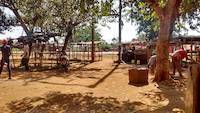 These are shops and stands in Ndaiga trading center.
These are shops and stands in Ndaiga trading center. - Ndaiga in the morning, district of Busia in Uganda
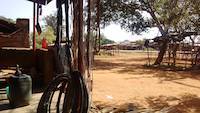 The view from Ndaiga trading center in the morning of December 2017.
The view from Ndaiga trading center in the morning of December 2017. - Sample houses for rent in Busia
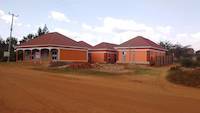 These are sample houses for rent in Busia, Uganda.
These are sample houses for rent in Busia, Uganda. - Equipment brough to mining site
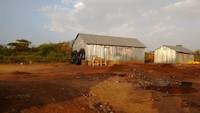 The HDPE pipes of 150 meters are brought to the mining site, together with the production sluice and other gold prospecting equipment. The purpose of the project is to improve the mining site and have a complete production line.
The HDPE pipes of 150 meters are brought to the mining site, together with the production sluice and other gold prospecting equipment. The purpose of the project is to improve the mining site and have a complete production line. - Loading 150 meter of 2 inch HDPE pipe onto the pick-up truck
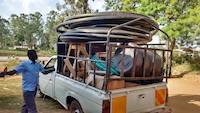 The 2 inch HDPE or High Density Polyethylene pipe of 150 meter is loaded onto the truck for water supply on the mining site. Even though we do not know quite at this moment if it will give us correct water pressure, we simply need to try it out.
The 2 inch HDPE or High Density Polyethylene pipe of 150 meter is loaded onto the truck for water supply on the mining site. Even though we do not know quite at this moment if it will give us correct water pressure, we simply need to try it out. - Moving the stuff to the mining site
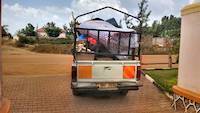 The basic stuff and prospecting tools including the large production sluice are moved to the mining site.
The basic stuff and prospecting tools including the large production sluice are moved to the mining site. - When nothing works, push it
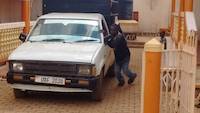 Guys are pushing to pick-up vehicle to start it.
Guys are pushing to pick-up vehicle to start it. - Some mining equipment is loaded onto the pick-up truck
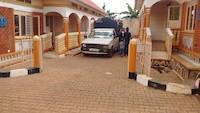 We are loading some of the mining equipment on the pick-up truck and moving near the mining site.
We are loading some of the mining equipment on the pick-up truck and moving near the mining site. - Moving from Busia to Ndaiga, Uganda
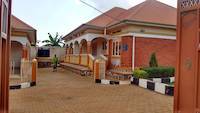 We are moving from this nice house in Busia to Ndaiga for work on the mining site.
We are moving from this nice house in Busia to Ndaiga for work on the mining site. - Water pump from Swiss company Ennos
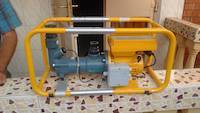 This water pump works on solar power directly. It has a built-in solar controler. It is produced by Swiss company, I just guess "Ennos". The price in Uganda is way too much, it is good for richer people or companies. What is good is that it can push water on long distance, even 2 kilometers. The watter supply by this pump is not sufficient for direct mining purposes. It may be used for collection of water in water tanks for later work.
This water pump works on solar power directly. It has a built-in solar controler. It is produced by Swiss company, I just guess "Ennos". The price in Uganda is way too much, it is good for richer people or companies. What is good is that it can push water on long distance, even 2 kilometers. The watter supply by this pump is not sufficient for direct mining purposes. It may be used for collection of water in water tanks for later work. - Simple improvized wooden table
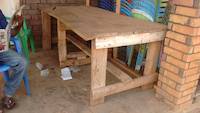 Improvized wooden desks or tables are easily made and can be used on mining site. For some reason local carpenters are harder to understand what means "improvized", and they always tend to make "beautiful" desks.
Improvized wooden desks or tables are easily made and can be used on mining site. For some reason local carpenters are harder to understand what means "improvized", and they always tend to make "beautiful" desks. - Mr. Louis just before food poisoning event
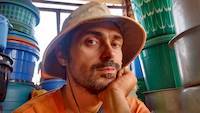 Something is wrong, one may see it, it is soon happening, food poisoning and night without sleeps. Few hydrochlorid pills and paracetamol helped me later.
Something is wrong, one may see it, it is soon happening, food poisoning and night without sleeps. Few hydrochlorid pills and paracetamol helped me later. - Purchasing manager arranging kitchen stuff for the mining site
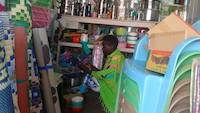 Our purchasing manager Aling is arranging kitchen stuff for the mining site. Pots, frying pans, tellers, cups, forks and spoons, stoves and similar is required for work and living on the mining site.
Our purchasing manager Aling is arranging kitchen stuff for the mining site. Pots, frying pans, tellers, cups, forks and spoons, stoves and similar is required for work and living on the mining site. - No money changer shall use this room as aforex bereau, please...
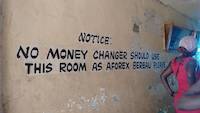 No money changer shall use this room as aforex bereau, please...
No money changer shall use this room as aforex bereau, please... - Ndaiga trading center in Uganda
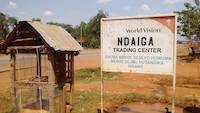 This is table for the Ndaiga trading center near Busitema and Busia in Uganda.
This is table for the Ndaiga trading center near Busitema and Busia in Uganda. - Emirates hotel in Busia, Uganda
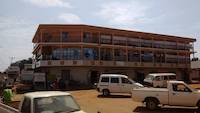 This is Emirates lodge or guest house, or maybe "hotel" in Busia, Uganda.
This is Emirates lodge or guest house, or maybe "hotel" in Busia, Uganda. - USAID tent with "free vaccination" for Ugandan people
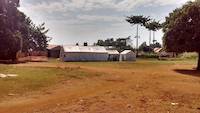 This is the USAID tent in Busia, Uganda. They offer "free vaccinations" for Ugandan people. No information was specified neither possible to be given of the content of those vaccines. Myself, I know that Bill Gates is supporter of this organization and also supporter of the solutions to "over population" problems. Once in front of thousands of people he mentioned how such problems of over population are solved by using vaccinations. Does that mean vaccination are endangering people's health? One…
This is the USAID tent in Busia, Uganda. They offer "free vaccinations" for Ugandan people. No information was specified neither possible to be given of the content of those vaccines. Myself, I know that Bill Gates is supporter of this organization and also supporter of the solutions to "over population" problems. Once in front of thousands of people he mentioned how such problems of over population are solved by using vaccinations. Does that mean vaccination are endangering people's health? One… - Baboons along the road in Busitema forest in Uganda
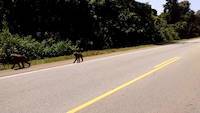 These baboons are walking along the road in Busitema forest in Uganda often fed by travelers with some food. We do not advise feeding baboons on the road as that creates their habits and changes their life style. Food is there enough.
These baboons are walking along the road in Busitema forest in Uganda often fed by travelers with some food. We do not advise feeding baboons on the road as that creates their habits and changes their life style. Food is there enough. - Baboons in the Busitema forest in Uganda
 Here again, few baboons are on the road in Busitema forest in Uganda, near Busia.
Here again, few baboons are on the road in Busitema forest in Uganda, near Busia. - Work on the open pit
 Miners are working on the open pit in Uganda. Rich gold ore have been identified and need to be reached once again. Excavating activities require better planning. This mining site was not managed by our company at the time of creation of this picture.
Miners are working on the open pit in Uganda. Rich gold ore have been identified and need to be reached once again. Excavating activities require better planning. This mining site was not managed by our company at the time of creation of this picture. - Neglected water hoses
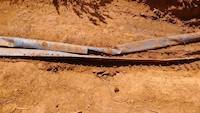 These water hoses are pretty neglected and harder to maintain. We will use the HDPE or High Density Polyethylene pipes of two inches which are more robust, and will have less resistance in transferring the water from one place to other. Polyethylene is a lightweight thermoplastic used especially in packaging and insulation, while thermoplastic is a material that softens when heated and hardens again when cooled.
These water hoses are pretty neglected and harder to maintain. We will use the HDPE or High Density Polyethylene pipes of two inches which are more robust, and will have less resistance in transferring the water from one place to other. Polyethylene is a lightweight thermoplastic used especially in packaging and insulation, while thermoplastic is a material that softens when heated and hardens again when cooled. - Neglected water hoses
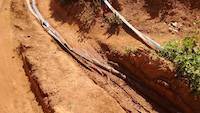 These water hoses are seriously neglected and in bad shape. Trucks are moving over the hoses, and people are trying to repair it all over again and again. We do not want to implement these blue soft hoses in our operation of processing of the gold bearing tailing heaps. Rather we will use the HDPE or High Density Polyethylene pipes of two inches which are more robust, and will have less resistance in transferring the water from one place to other. Polyethylene is a lightweight thermoplastic used…
These water hoses are seriously neglected and in bad shape. Trucks are moving over the hoses, and people are trying to repair it all over again and again. We do not want to implement these blue soft hoses in our operation of processing of the gold bearing tailing heaps. Rather we will use the HDPE or High Density Polyethylene pipes of two inches which are more robust, and will have less resistance in transferring the water from one place to other. Polyethylene is a lightweight thermoplastic used… - Mr. Louis and purchasing manager walking to the open pit
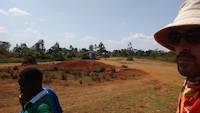 Mr. Louis and his purchasing manager are moving to the open pit. In background one may see a small building made out of metallic sheets. That is the future headquarter on the mining site.
Mr. Louis and his purchasing manager are moving to the open pit. In background one may see a small building made out of metallic sheets. That is the future headquarter on the mining site. - The view from our new base
 This is the view from our new base for purpose of processing of tailing in Busia, Uganda. New base is directly in the village and not far from the working place. Two rooms apartment is about US $27.46 per month.
This is the view from our new base for purpose of processing of tailing in Busia, Uganda. New base is directly in the village and not far from the working place. Two rooms apartment is about US $27.46 per month. - Possible accommodation nearby the mining sites
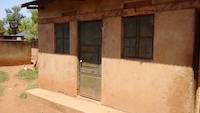 This is how possible accommodation look like in the village nearby the mining site.
This is how possible accommodation look like in the village nearby the mining site. - Miners working on the open pit
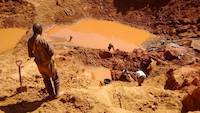 These miners are doing their best to reach the rich gold ore on this open pit. They are excavating the soil in the hope to reach the hard rock. Pieces of rocks as overburden are found in the clay, silt and soft soil. They contain much gold, even few grams in few pieces of rocks. The mining site was not managed by our company at the time when this picture was taken.
These miners are doing their best to reach the rich gold ore on this open pit. They are excavating the soil in the hope to reach the hard rock. Pieces of rocks as overburden are found in the clay, silt and soft soil. They contain much gold, even few grams in few pieces of rocks. The mining site was not managed by our company at the time when this picture was taken. - The path to the open pit is blocked with the excavated soil
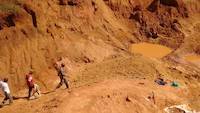 Due to the lack of planning of excavation and movement of material, the path to the open pit is blocked with the excavated soil. For any long term business it is advisable that mining engineers properly plan the excavating activities. This mining site is not or was not managed by our company at the time of making this picture.
Due to the lack of planning of excavation and movement of material, the path to the open pit is blocked with the excavated soil. For any long term business it is advisable that mining engineers properly plan the excavating activities. This mining site is not or was not managed by our company at the time of making this picture. - Work on the open pit
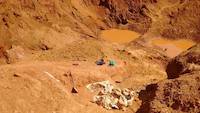 Some rich gold ore have been found in this open pit. Miners are doing their best to reach the reef. Overburden rocks are found and identified being very rich in gold. This mining site is no organized by our company. We are organizing the processing of the tailings on nearest location.
Some rich gold ore have been found in this open pit. Miners are doing their best to reach the reef. Overburden rocks are found and identified being very rich in gold. This mining site is no organized by our company. We are organizing the processing of the tailings on nearest location. - Busia Town Baptist Church in Uganda
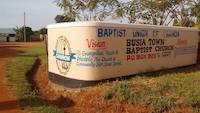 Read the wordings for yourself and make your own conclusions.
Read the wordings for yourself and make your own conclusions. - Impact mills and accessories
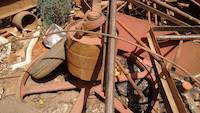 Impact mills are often used in mining and prospecting. Rock may be quickly crushed and gold particles separated. There exists various types of impact mills such as hammer or chain impact mills. In rural locations of Tanzania and Uganda we are constructing such impact mills on the ground, as they seem to be the best firsthand solutions. Only few parts such as flanged bearings are ordered from outside of the country or purchased somewhere in Dar es Salaam, Tanzania or in Mombasa, Kenya. We carefully note all the locations where any machine parts may be purchased. Towns in rural areas do not have metal supply so we are looking for parts at scrap metal yards.
Impact mills are often used in mining and prospecting. Rock may be quickly crushed and gold particles separated. There exists various types of impact mills such as hammer or chain impact mills. In rural locations of Tanzania and Uganda we are constructing such impact mills on the ground, as they seem to be the best firsthand solutions. Only few parts such as flanged bearings are ordered from outside of the country or purchased somewhere in Dar es Salaam, Tanzania or in Mombasa, Kenya. We carefully note all the locations where any machine parts may be purchased. Towns in rural areas do not have metal supply so we are looking for parts at scrap metal yards. - Possible source for a drum
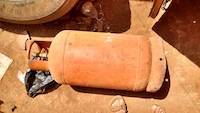 Such gas bottle can be cut in pieces and 2 drums could be made out of the cylinder. Yet the metal wall is not as thick as we would like it. We do not know if it is worth trying for US $19.22 how much the scrap dealer asked us that day, or approximately 70,000 Ugs.
Such gas bottle can be cut in pieces and 2 drums could be made out of the cylinder. Yet the metal wall is not as thick as we would like it. We do not know if it is worth trying for US $19.22 how much the scrap dealer asked us that day, or approximately 70,000 Ugs. - Not a choice for this drum
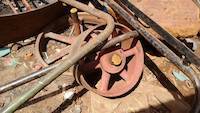 This piece of metal scrap was used in some other historical machine. The idea was to convert it to the drum for our impact mill, yet it would not work as this metal is not good for welding purposes.
This piece of metal scrap was used in some other historical machine. The idea was to convert it to the drum for our impact mill, yet it would not work as this metal is not good for welding purposes. - Possible drums for the impact mill
 This is a possible drum for the impact mill. We are reviewing scrap metal supplies as no other source of metal is available nearby. Local welders cannot bend the metal properly.
This is a possible drum for the impact mill. We are reviewing scrap metal supplies as no other source of metal is available nearby. Local welders cannot bend the metal properly. - Wooden goat
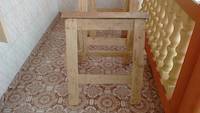 This is wooden goat. That is how it is named everywhere in Balkan area in Europe. Over here almost nobody knows that such improvized wooden legs may be used in construction and mining activities.
This is wooden goat. That is how it is named everywhere in Balkan area in Europe. Over here almost nobody knows that such improvized wooden legs may be used in construction and mining activities. - Ugandan bicycle transport
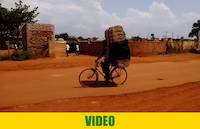 The Ugandan bicycle transport is very interesting. Almost everything may be transported by bicycles, including coffins, goats, pigs, 20 meter long heavy wires, large wooden sheets, beds, Coca-Cola boxes, and 20-30 plastic chairs. Just anything goes for 500 to 2,000 Ugs. per round.
The Ugandan bicycle transport is very interesting. Almost everything may be transported by bicycles, including coffins, goats, pigs, 20 meter long heavy wires, large wooden sheets, beds, Coca-Cola boxes, and 20-30 plastic chairs. Just anything goes for 500 to 2,000 Ugs. per round. - The foot during the work
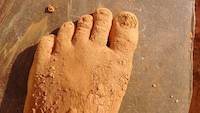 Sun is hot and soil dries fast on the foot.
Sun is hot and soil dries fast on the foot. - With mud covered foot
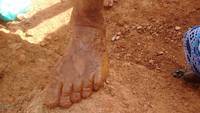 Obviously the soil looks like a German milk chocolate.
Obviously the soil looks like a German milk chocolate. - Mr. Jean Louis prospecting on the open pit
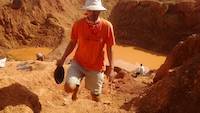 I was teaching miners how to use "Testio" which is Swahili word from Tanzania for the small black metallic gold pan that Tanzanian artisanal miners use to prospect for gold in rocks. Sadly that technology is not known in this part of Uganda. Miners did learn something, and need more training to start implementing the methods properly. They were advised to use the mortar and pestle and frequently check for gold in various rocks and the soil excavated.
I was teaching miners how to use "Testio" which is Swahili word from Tanzania for the small black metallic gold pan that Tanzanian artisanal miners use to prospect for gold in rocks. Sadly that technology is not known in this part of Uganda. Miners did learn something, and need more training to start implementing the methods properly. They were advised to use the mortar and pestle and frequently check for gold in various rocks and the soil excavated. - Crushing rocks with hammer on a metallic surface
 The alternative to mortar and pestle is a simple hammer and metallic or other hard surface such as rock. Care must be taken to wash all the tools and the rocks before attempting to check the existence of the gold inside. That way, the salting with other gold particles and mercury is avoided.
The alternative to mortar and pestle is a simple hammer and metallic or other hard surface such as rock. Care must be taken to wash all the tools and the rocks before attempting to check the existence of the gold inside. That way, the salting with other gold particles and mercury is avoided. - Mr. Louis using the mortar and pestle
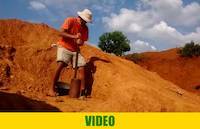 Mortar and pestle are basic miners' tools for gold prospecting in rocks. All tools must be carefully washed before attempting to prospect for gold. The mortar, pestle, basins, gold pans, including the rocks being crushed, those all must be washed to prevent salting with mercury or previous gold particles. This mortar and pestle are too large and may be used in small gold production where crushers are not available. Smaller mortar and pestle are recommended including a simple hammer on a hard surface.
Mortar and pestle are basic miners' tools for gold prospecting in rocks. All tools must be carefully washed before attempting to prospect for gold. The mortar, pestle, basins, gold pans, including the rocks being crushed, those all must be washed to prevent salting with mercury or previous gold particles. This mortar and pestle are too large and may be used in small gold production where crushers are not available. Smaller mortar and pestle are recommended including a simple hammer on a hard surface. - Crushing rocks while prospecting for gold
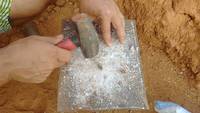 Rocks are being crushed while prospecting for gold. Metallic surface may be used or other larger rock surfaces. Care shall be taken to carefully wash the surface, the hammer, including the rocks to be crushed and basin and gold pans so to avoid the salting with previous gold particles. Artisanal miners in this area were of the opinion that rocks need to be dried before crushing, that is not true, and with the care you may crush even quartz without rocks flying everywhere around. Keep your eyes safe…
Rocks are being crushed while prospecting for gold. Metallic surface may be used or other larger rock surfaces. Care shall be taken to carefully wash the surface, the hammer, including the rocks to be crushed and basin and gold pans so to avoid the salting with previous gold particles. Artisanal miners in this area were of the opinion that rocks need to be dried before crushing, that is not true, and with the care you may crush even quartz without rocks flying everywhere around. Keep your eyes safe… - Crushing gold particles on the metallic surface
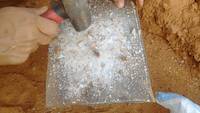 Gold particles are being crushed with the hammer on the metallic surface. Both the surface and the hammer, including any water basins and gold pans shall be thoroughly washed before making a check and before crushing so to avoid salting of previous gold particles into the new rocks.
Gold particles are being crushed with the hammer on the metallic surface. Both the surface and the hammer, including any water basins and gold pans shall be thoroughly washed before making a check and before crushing so to avoid salting of previous gold particles into the new rocks. - Using hand lens to magnify the gold particles
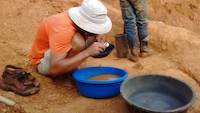 When prospecting for gold, one need to use the magnifier to see the smallest particles invisible to human eye. And yes, we found gold in rocks. Not only gold, we also have found other silver colored metal that we could not identify on the field. It could be iridium, unlikely pure silver, it could be silver colored gold. We will send the particles for analysis to other country.
When prospecting for gold, one need to use the magnifier to see the smallest particles invisible to human eye. And yes, we found gold in rocks. Not only gold, we also have found other silver colored metal that we could not identify on the field. It could be iridium, unlikely pure silver, it could be silver colored gold. We will send the particles for analysis to other country. - Crushing the rocks with mortar and pestle
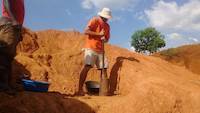 This is the method to crush the rocks with mortar and pestle. This is larger version suitable to handle several rocks at once. It is advisable to first classify the mineral sizes with the sifter or sieve and then to gold pan the particles. Further, before any crushing, both the mortar and pestle, gold pans and any basins must be carefully washed so to avoid salting.
This is the method to crush the rocks with mortar and pestle. This is larger version suitable to handle several rocks at once. It is advisable to first classify the mineral sizes with the sifter or sieve and then to gold pan the particles. Further, before any crushing, both the mortar and pestle, gold pans and any basins must be carefully washed so to avoid salting. - Mr. Louis showing rocks before crushing it with the mortar and pestle
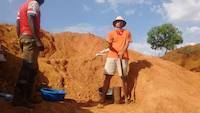 This is Mr. Louis showing a rock before crushing it with the mortar and pestle that he is holding in his hands.
This is Mr. Louis showing a rock before crushing it with the mortar and pestle that he is holding in his hands. - Mr. Louis showing the crushed rocks in the basin
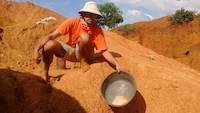 The crushed rocks are transferred to the basin and later panned for gold and other precious metals. There was a problem that miners did not wash this basin, so it contained small particles including small mercury particles. They were advised to wash the basin, the mortar and pestle and any gold pans before making a check for gold.
The crushed rocks are transferred to the basin and later panned for gold and other precious metals. There was a problem that miners did not wash this basin, so it contained small particles including small mercury particles. They were advised to wash the basin, the mortar and pestle and any gold pans before making a check for gold. - Mortar and pestle is miners' basic tool
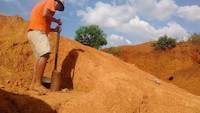 Mortar and pestle is the basic tool in mining. The method is known since centuries. Yet this larger mortar and pestle are also used for production of gold over here whenever miners do not have better method to crush and grind the rocks. It is not recommended for quick checks of rocks due to its weight and unsafe handling.
Mortar and pestle is the basic tool in mining. The method is known since centuries. Yet this larger mortar and pestle are also used for production of gold over here whenever miners do not have better method to crush and grind the rocks. It is not recommended for quick checks of rocks due to its weight and unsafe handling. - Gold prospecting on the open pit
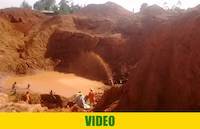 Artisanal miners and Mr. Louis are prospecting for gold on this open pit. Water splash may be seen that is coming from the water pump which priming cover was opened for some reason. The pressure from the raised hose is bringing water to come out of the pump down-there. Very rich gold ore has been found little deeper in this open pit.
Artisanal miners and Mr. Louis are prospecting for gold on this open pit. Water splash may be seen that is coming from the water pump which priming cover was opened for some reason. The pressure from the raised hose is bringing water to come out of the pump down-there. Very rich gold ore has been found little deeper in this open pit. - Water source for tailing processing
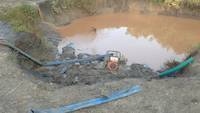 Any water source may be used for processing of the tailings. Such is this entrance to the nearest river where branch of water was excavated so that distance is shortened. Water pumps work better on shorter distances.
Any water source may be used for processing of the tailings. Such is this entrance to the nearest river where branch of water was excavated so that distance is shortened. Water pumps work better on shorter distances. - Kete-kete or stealing of the ore in Uganda
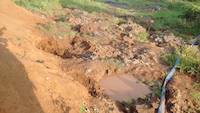 Local artisanal miners at least in this area have some bad habits of stealing ores and tailings from mining site owners. They are named kete-kete. It is advised never to steal ores from a fellow miner and to enter joint ventures and partnerships. Working together is much better than having bad blood between each other.
Local artisanal miners at least in this area have some bad habits of stealing ores and tailings from mining site owners. They are named kete-kete. It is advised never to steal ores from a fellow miner and to enter joint ventures and partnerships. Working together is much better than having bad blood between each other. - Mr. Louis advising the mining site owner about gold panning methods
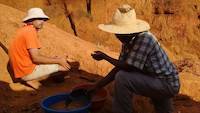 The mining site owner is being advised about proper gold panning methods. Knowledge is free and application of the knowledge is producing results. As on this day we have found other precious metal in the rocks available on this mining site. The type and value of the metal yet has to be identified.
The mining site owner is being advised about proper gold panning methods. Knowledge is free and application of the knowledge is producing results. As on this day we have found other precious metal in the rocks available on this mining site. The type and value of the metal yet has to be identified. - With mud covered foot
 Obviously the soil looks like a German milk chocolate.
Obviously the soil looks like a German milk chocolate. - Mr. Jean Louis prospecting on the open pit
 I was teaching miners how to use "Testio" which is Swahili word from Tanzania for the small black metallic gold pan that Tanzanian artisanal miners use to prospect for gold in rocks. Sadly that technology is not known in this part of Uganda. Miners did learn something, and need more training to start implementing the methods properly. They were advised to use the mortar and pestle and frequently check for gold in various rocks and the soil excavated.
I was teaching miners how to use "Testio" which is Swahili word from Tanzania for the small black metallic gold pan that Tanzanian artisanal miners use to prospect for gold in rocks. Sadly that technology is not known in this part of Uganda. Miners did learn something, and need more training to start implementing the methods properly. They were advised to use the mortar and pestle and frequently check for gold in various rocks and the soil excavated. - Prospecting for gold on the open pit
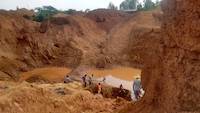 On this day at least 10 people were working and prospecting for gold on this open pit. Difficulties are numerous. Very rich gold ore is down there not far from those miners on the picture. Such rich gold ore contains several grams of gold in just few handful of rocks. There are reasons why people are after it.
On this day at least 10 people were working and prospecting for gold on this open pit. Difficulties are numerous. Very rich gold ore is down there not far from those miners on the picture. Such rich gold ore contains several grams of gold in just few handful of rocks. There are reasons why people are after it. - The priming cover on the water pump
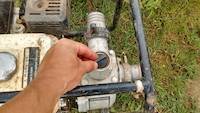 This is the priming cover on the water pump. It comes in plastic and metalic version. Often it is lost or stolen on mining sites. Without it, the pump is not going to work, or with improvized covers such as sticks, pump may easily get broken or damaged. To find the replacement cover one needs to order it from Kampala for some 10,000 Ugs. or US $2.75.
This is the priming cover on the water pump. It comes in plastic and metalic version. Often it is lost or stolen on mining sites. Without it, the pump is not going to work, or with improvized covers such as sticks, pump may easily get broken or damaged. To find the replacement cover one needs to order it from Kampala for some 10,000 Ugs. or US $2.75. - Diesel and benzin prices in Uganda on 3rd December 2017
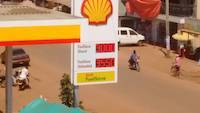 The diesel price on 3rd December 2017 was 3000 Ugandan schillings or US $0.82 per liter, while benzin price was 3550 Ugs. or US $0.97 per liter.
The diesel price on 3rd December 2017 was 3000 Ugandan schillings or US $0.82 per liter, while benzin price was 3550 Ugs. or US $0.97 per liter. - View from the Emirates guest house in Busia, Uganda
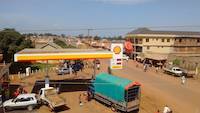 This is how Busia town looks like. The view is from a second floor of the Emirates guest house in Busia, Uganda.
This is how Busia town looks like. The view is from a second floor of the Emirates guest house in Busia, Uganda. - Bianco Pumpz water pump, model BIA-INOX120PC, 5-50 liter per minute
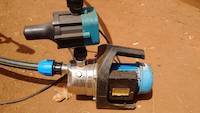 This is 5-50 liters per minute water pump. That is too low pressure, we need more water so that material we are processing is thoroughly liquefied and that gold particles may pass down fully liberated.
This is 5-50 liters per minute water pump. That is too low pressure, we need more water so that material we are processing is thoroughly liquefied and that gold particles may pass down fully liberated. - Bianco Pumpz water pump, model BIA-INOX120PC with 5-50 liters per minute
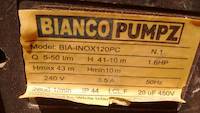 This is Bianco Pumpz water pump, we are watching the specifications before purchasing. This one is supposed to supply from 5 to 50 liters per minute with 3.5 Amperes consumption and 1.6 horse powers. We did not buy it.
This is Bianco Pumpz water pump, we are watching the specifications before purchasing. This one is supposed to supply from 5 to 50 liters per minute with 3.5 Amperes consumption and 1.6 horse powers. We did not buy it. - Stronger hoses for the water pump
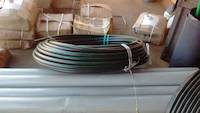 These hoses may be used for better supply of water to the sluices. When hose is too soft it tends to get broken, repairs are expensive and holes too often especially in a thorns rich vegetation. That is why using better hoses is recommended. On longer distances the type of the hose and its inner resistance also influence the supply and pressure of the water.
These hoses may be used for better supply of water to the sluices. When hose is too soft it tends to get broken, repairs are expensive and holes too often especially in a thorns rich vegetation. That is why using better hoses is recommended. On longer distances the type of the hose and its inner resistance also influence the supply and pressure of the water. - The choice of pumps in Busia, Uganda
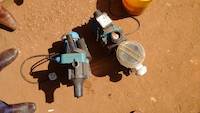 The town simply lacks the supply of any water pumps. Hard to find. Nearest shops are in Jinja, the source of the river Nile or Kampala. Pumps as shown on this picture are used, and do not even function. Buying them is liability.
The town simply lacks the supply of any water pumps. Hard to find. Nearest shops are in Jinja, the source of the river Nile or Kampala. Pumps as shown on this picture are used, and do not even function. Buying them is liability. - Flat tyre of a compressor
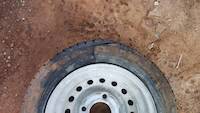 Nice picture of a flat tyre of compressor.
Nice picture of a flat tyre of compressor. - Maintaining compressors
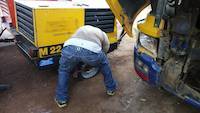 Repairing the flat tyres of compressors.
Repairing the flat tyres of compressors. - Flat tyre of compressors
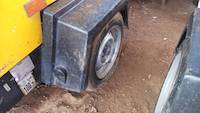 Repairing the flat tyres of compressors.
Repairing the flat tyres of compressors. - Flat tyre on compressor
 Our people are repairing the flat tyres of compressors.
Our people are repairing the flat tyres of compressors. - Prospecting for gold in rocks
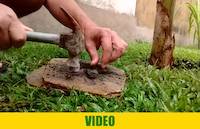 Prospecting for gold in rocks is a basic method and shall be foundation for every prospector. Some of gold prospectors are focusing only on alluvial and liberated gold and forget that such may be coming from rocks. And often rocks contain richer gold grade then alluvial soil. There are few simple and practical methods for prospecting for gold in rocks. In this category of Start Your Own Gold Mine, we are explaining methods and showing you videos on how to prospect for gold in rocks.
Prospecting for gold in rocks is a basic method and shall be foundation for every prospector. Some of gold prospectors are focusing only on alluvial and liberated gold and forget that such may be coming from rocks. And often rocks contain richer gold grade then alluvial soil. There are few simple and practical methods for prospecting for gold in rocks. In this category of Start Your Own Gold Mine, we are explaining methods and showing you videos on how to prospect for gold in rocks. - Carefully wash the surface after crushing the rocks into the gold pan
 Follow this simple procedure as advised by Mr. Jean Louis in the program Start Your Own Gold Mine: 1. Find some proper hard surface on which you may crush the rocks which you wish to check for gold. Also obtain a hammer. It is advisable that you use clean, plastic bags, to cover the rocks while crushing in order to protect yourself. Further, eyes-protection such as goggles and hand gloves may be also necessary for safety. Instead of the hard surface and hammer, most advisable would be to use a proper…
Follow this simple procedure as advised by Mr. Jean Louis in the program Start Your Own Gold Mine: 1. Find some proper hard surface on which you may crush the rocks which you wish to check for gold. Also obtain a hammer. It is advisable that you use clean, plastic bags, to cover the rocks while crushing in order to protect yourself. Further, eyes-protection such as goggles and hand gloves may be also necessary for safety. Instead of the hard surface and hammer, most advisable would be to use a proper… - Wash the surface after crushing rocks into the gold pan
 Follow this simple procedure as advised by Mr. Jean Louis in the program Start Your Own Gold Mine: 1. Find some proper hard surface on which you may crush the rocks which you wish to check for gold. Also obtain a hammer. It is advisable that you use clean, plastic bags, to cover the rocks while crushing in order to protect yourself. Further, eyes-protection such as goggles and hand gloves may be also necessary for safety. Instead of the hard surface and hammer, most advisable would be to use a proper…
Follow this simple procedure as advised by Mr. Jean Louis in the program Start Your Own Gold Mine: 1. Find some proper hard surface on which you may crush the rocks which you wish to check for gold. Also obtain a hammer. It is advisable that you use clean, plastic bags, to cover the rocks while crushing in order to protect yourself. Further, eyes-protection such as goggles and hand gloves may be also necessary for safety. Instead of the hard surface and hammer, most advisable would be to use a proper… - Crushing small pieces of rocks
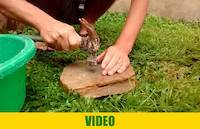 Follow this simple procedure as advised by Mr. Jean Louis in the program Start Your Own Gold Mine: 1. Find some proper hard surface on which you may crush the rocks which you wish to check for gold. Also obtain a hammer. It is advisable that you use clean, plastic bags, to cover the rocks while crushing in order to protect yourself. Further, eyes-protection such as goggles and hand gloves may be also necessary for safety. Instead of the hard surface and hammer, most advisable would be to use a proper…
Follow this simple procedure as advised by Mr. Jean Louis in the program Start Your Own Gold Mine: 1. Find some proper hard surface on which you may crush the rocks which you wish to check for gold. Also obtain a hammer. It is advisable that you use clean, plastic bags, to cover the rocks while crushing in order to protect yourself. Further, eyes-protection such as goggles and hand gloves may be also necessary for safety. Instead of the hard surface and hammer, most advisable would be to use a proper… - Panning for gold out of crushed rock
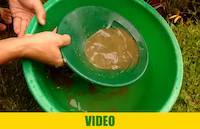 Follow this simple procedure as advised by Mr. Jean Louis in the program Start Your Own Gold Mine: 1. Find some proper hard surface on which you may crush the rocks which you wish to check for gold. Also obtain a hammer. It is advisable that you use clean, plastic bags, to cover the rocks while crushing in order to protect yourself. Further, eyes-protection such as goggles and hand gloves may be also necessary for safety. Instead of the hard surface and hammer, most advisable would be to use a proper…
Follow this simple procedure as advised by Mr. Jean Louis in the program Start Your Own Gold Mine: 1. Find some proper hard surface on which you may crush the rocks which you wish to check for gold. Also obtain a hammer. It is advisable that you use clean, plastic bags, to cover the rocks while crushing in order to protect yourself. Further, eyes-protection such as goggles and hand gloves may be also necessary for safety. Instead of the hard surface and hammer, most advisable would be to use a proper… - Transferring the rock material into the gold pan
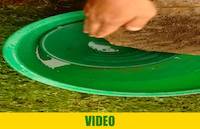 Follow this simple procedure as advised by Mr. Jean Louis in the program Start Your Own Gold Mine: 1. Find some proper hard surface on which you may crush the rocks which you wish to check for gold. Also obtain a hammer. It is advisable that you use clean, plastic bags, to cover the rocks while crushing in order to protect yourself. Further, eyes-protection such as goggles and hand gloves may be also necessary for safety. Instead of the hard surface and hammer, most advisable would be to use a proper…
Follow this simple procedure as advised by Mr. Jean Louis in the program Start Your Own Gold Mine: 1. Find some proper hard surface on which you may crush the rocks which you wish to check for gold. Also obtain a hammer. It is advisable that you use clean, plastic bags, to cover the rocks while crushing in order to protect yourself. Further, eyes-protection such as goggles and hand gloves may be also necessary for safety. Instead of the hard surface and hammer, most advisable would be to use a proper… - Prospecting for gold in rocks
 Follow this simple procedure as advised by Mr. Jean Louis in the program Start Your Own Gold Mine: 1. Find some proper hard surface on which you may crush the rocks which you wish to check for gold. Also obtain a hammer. It is advisable that you use clean, plastic bags, to cover the rocks while crushing in order to protect yourself. Further, eyes-protection such as goggles and hand gloves may be also necessary for safety. Instead of the hard surface and hammer, most advisable would be to use a proper…
Follow this simple procedure as advised by Mr. Jean Louis in the program Start Your Own Gold Mine: 1. Find some proper hard surface on which you may crush the rocks which you wish to check for gold. Also obtain a hammer. It is advisable that you use clean, plastic bags, to cover the rocks while crushing in order to protect yourself. Further, eyes-protection such as goggles and hand gloves may be also necessary for safety. Instead of the hard surface and hammer, most advisable would be to use a proper… - Prospecting for gold in rocks
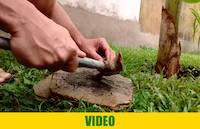 Prospecting for gold in rocks is a basic procedure that each prospector shall know and use. Whenever there is alluvial gold found, one shall also prospect for gold in rocks. The lode gold is the original gold and usually found in rocks. Such gold is not yet liberated from other minerals. Prospecting for gold in rocks is easy. Follow this simple procedure as advised by Mr. Jean Louis in the program Start Your Own Gold Mine: 1. Find some proper hard surface on which you may crush the rocks which you…
Prospecting for gold in rocks is a basic procedure that each prospector shall know and use. Whenever there is alluvial gold found, one shall also prospect for gold in rocks. The lode gold is the original gold and usually found in rocks. Such gold is not yet liberated from other minerals. Prospecting for gold in rocks is easy. Follow this simple procedure as advised by Mr. Jean Louis in the program Start Your Own Gold Mine: 1. Find some proper hard surface on which you may crush the rocks which you… - Bat in the room
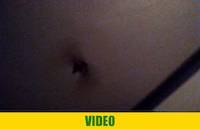 It happens. Bats may accidentally enter the room and get trapped by not knowing how to exit or where is the door exactly. Their dung may contain dangerous bacteria and viruses, so wash your hands and clean your bedsheets if you found one of those. Avoid touching bats by hands. This accident happened in Uganda in June 2017.
It happens. Bats may accidentally enter the room and get trapped by not knowing how to exit or where is the door exactly. Their dung may contain dangerous bacteria and viruses, so wash your hands and clean your bedsheets if you found one of those. Avoid touching bats by hands. This accident happened in Uganda in June 2017. - Swiss quality toothbruch Curaprox CS 5460
 This is Swiss quality toothbruch Curaprox CS 5460 as recommended to me by my friend Marko Tunjić from Croatia, the BBB fan. Well, he has a nice smile, and he said, if you don't have a proper toothpaste, toothbrush may save your teeth. But you need to use the professional one. Curaprox with 5460 engineered brushing hairs is such professional toothpaste. As otherwise in East Africa, good toothbrush almost does not exist and cannot be bought. There are many of those toothbrushes that are designed for…
This is Swiss quality toothbruch Curaprox CS 5460 as recommended to me by my friend Marko Tunjić from Croatia, the BBB fan. Well, he has a nice smile, and he said, if you don't have a proper toothpaste, toothbrush may save your teeth. But you need to use the professional one. Curaprox with 5460 engineered brushing hairs is such professional toothpaste. As otherwise in East Africa, good toothbrush almost does not exist and cannot be bought. There are many of those toothbrushes that are designed for… - Health
 Health is considered important factor when planning the business in East Africa and it may also apply to other African countries. European or American arriving to Africa may be faced with difficulties to purchase simple vitamins or mineral supplements, and may be exhausted and loose essentials in their body or otherwise may face greedy clinics or hospital workers who will diagnose just all kinds of non-existent diseases just for purposes of selling pills of the day.
Health is considered important factor when planning the business in East Africa and it may also apply to other African countries. European or American arriving to Africa may be faced with difficulties to purchase simple vitamins or mineral supplements, and may be exhausted and loose essentials in their body or otherwise may face greedy clinics or hospital workers who will diagnose just all kinds of non-existent diseases just for purposes of selling pills of the day. - Watery road to the mining site
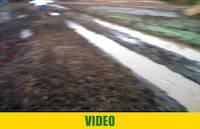 Sadly there was no passage to the mining site. The truck was getting stuck each few kilometers with very long delays in unstucking it.
Sadly there was no passage to the mining site. The truck was getting stuck each few kilometers with very long delays in unstucking it. - Road to the mining site
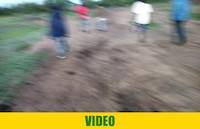 Mining site is about 9 kilometer from the town and requires good driver to pass the watery road. This time we did not make it. We will wait for dry season and then cross over with the container.
Mining site is about 9 kilometer from the town and requires good driver to pass the watery road. This time we did not make it. We will wait for dry season and then cross over with the container. - Surveying the road to estimate if the truck may pass there or not
 The road is not as rough as much it is watery. Wheels of the truck are easily stuck. Miners are surveying the road for the truck to pass there.
The road is not as rough as much it is watery. Wheels of the truck are easily stuck. Miners are surveying the road for the truck to pass there. - Truck driver and repair of the accessories on the truck
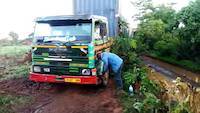 The truck driver is trying to fix some of accessories of the truck along the road to the mining site. The truck was stuck for multiple times.
The truck driver is trying to fix some of accessories of the truck along the road to the mining site. The truck was stuck for multiple times. - With timber secured mining shaft
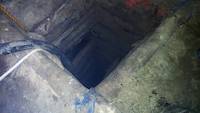 This is well secured mining shaft. One may see timbers for safety against collapsing.
This is well secured mining shaft. One may see timbers for safety against collapsing. - Tent on the mining site
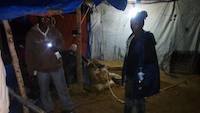 The tent have been erected to help the miners work even during the night time.
The tent have been erected to help the miners work even during the night time. - Chairs and tables on the mining site
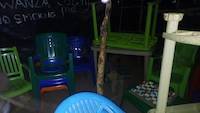 Just chairs and tables on the mining site for the kitchen and meetings with the miners.
Just chairs and tables on the mining site for the kitchen and meetings with the miners. - German compressors in Tanzania
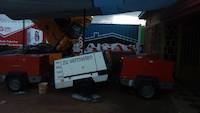 These compressors were imported from Germany, refurbished, with new batteries, new hoses and couplings, and may include jackhammers.
These compressors were imported from Germany, refurbished, with new batteries, new hoses and couplings, and may include jackhammers. - Compressors being washed
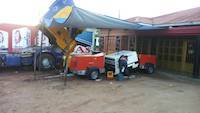 Our guy is washing compressors for sale in Kahama, Tanzania…
Our guy is washing compressors for sale in Kahama, Tanzania… - Compressors on display in Kahama
 Compressors are on display in Kahama for sale…
Compressors are on display in Kahama for sale… - Compressors in Kahama, Tanzania
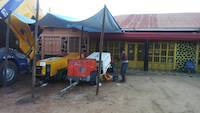 Air compressors are used to power mining equipment and provide compressed air for safe breathing while working deep within mines where other gases may pose hazards if inhaled without proper ventilation systems implemented. These machines play a crucial role not only by powering essential tools but also ensuring miners' safety during potentially hazardous work conditions in the depths of these gold-bearing sites, thus highlighting their importance to both equipment and human life underground.
Air compressors are used to power mining equipment and provide compressed air for safe breathing while working deep within mines where other gases may pose hazards if inhaled without proper ventilation systems implemented. These machines play a crucial role not only by powering essential tools but also ensuring miners' safety during potentially hazardous work conditions in the depths of these gold-bearing sites, thus highlighting their importance to both equipment and human life underground. - M'hengele with compressors in Kahama, Tanzania
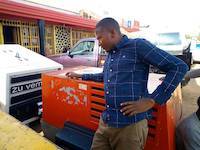 Our assistant M'hengele is watching compressors in Kahama, Tanzania…
Our assistant M'hengele is watching compressors in Kahama, Tanzania… - M'hengele with compressors
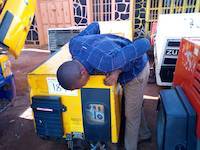 M'hengele is watching compressors…
M'hengele is watching compressors… - Source of nile at Jinja, Uganda
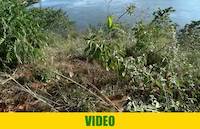 This is the entrance of the river Nile from Lake Victoria. It is often called the source of river Nile. Even it is not a source of water that builds the Lake Victoria this is the place where river Nile begins as the river.
This is the entrance of the river Nile from Lake Victoria. It is often called the source of river Nile. Even it is not a source of water that builds the Lake Victoria this is the place where river Nile begins as the river. - Baboon along the road at Busitema forest
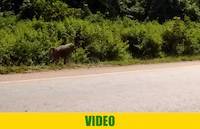 These baboons are found along the road at Busitema forest in Uganda.
These baboons are found along the road at Busitema forest in Uganda. - Baboons along the road in Uganda
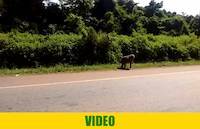 These baboons are begging for food and looking for opportunities at Busitema forest in Uganda. They are known to sometimes steal stuff from cars or people passing by. I do not recommend feeding baboons during the road as that creates those bad habits.
These baboons are begging for food and looking for opportunities at Busitema forest in Uganda. They are known to sometimes steal stuff from cars or people passing by. I do not recommend feeding baboons during the road as that creates those bad habits. - Yet another improvized mercury retort for gold recovery in Uganda, SYOGM EA UG II
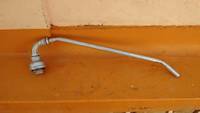 This is yet another improvized mercury retort for gold and mercury recovery as we made it for gold mining business in Uganda. Mercury is a waste and dangerous substance that negatively impact health, animals, fish, plants, agriculture and water sources. When local miners have polluted some area with much mercury or if we are recovering gold from tailing we often find too much mercury inside. We call this mercury retort SYOGM EA UG II, representing the Start Your Own Gold Mine program in East Africa,…
This is yet another improvized mercury retort for gold and mercury recovery as we made it for gold mining business in Uganda. Mercury is a waste and dangerous substance that negatively impact health, animals, fish, plants, agriculture and water sources. When local miners have polluted some area with much mercury or if we are recovering gold from tailing we often find too much mercury inside. We call this mercury retort SYOGM EA UG II, representing the Start Your Own Gold Mine program in East Africa,… - DC switch to turn on the bilge pumps
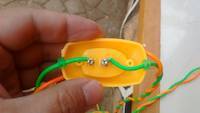 Often prospectors and gold miners are confused how to concentrate the concentrate. Or better said how to make the super concentrate. It is only by process of concentration that gold is recoverered. Multiple steps of concentration may require different methods of handling. Often it is useful to have a bilge pump of 600 gallons or 2271 liters per hour. Such pump may be perfectly enough to process 500 to 1000 kilograms of dry or wet ore in an hour. To start the pump you need a switch. I am placing this…
Often prospectors and gold miners are confused how to concentrate the concentrate. Or better said how to make the super concentrate. It is only by process of concentration that gold is recoverered. Multiple steps of concentration may require different methods of handling. Often it is useful to have a bilge pump of 600 gallons or 2271 liters per hour. Such pump may be perfectly enough to process 500 to 1000 kilograms of dry or wet ore in an hour. To start the pump you need a switch. I am placing this… - Water pumps and auxiliary equipment for water pumps
We are describing here water pumps and auxiliary equipment used in the program Start Your Own Gold Mine. Handling of pumps, their maintenance, tips and tricks, capacities and calculations of water usage will be represented in this category from time to time. - Bathroom in the hotel room
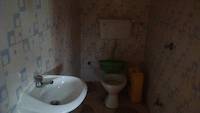 Bathroom is quite enough. By "standard", some bathroom accessories may be missing such as a light bulb. We know there is hot water, but that has to be tested before accepting the room.
Bathroom is quite enough. By "standard", some bathroom accessories may be missing such as a light bulb. We know there is hot water, but that has to be tested before accepting the room. - Small table in the hotel room
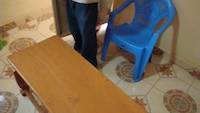 The small table is in the hotel room.
The small table is in the hotel room. - Bed in the hotel room in Busia, Uganda
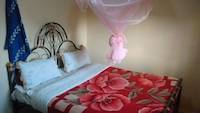 This is the bed in the room with the mosquito net.
This is the bed in the room with the mosquito net. - View from a hotel room
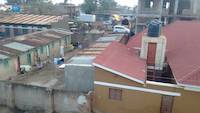 This is view from a hotel room in Busia, Uganda.
This is view from a hotel room in Busia, Uganda. - Secured door of the hotel in Busia, Uganda
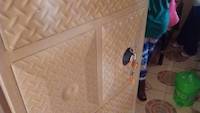 This is well secured door of the hotel in Busia, Uganda, main customs road. It is always better to use hotel rooms where a guest may replace the supplied padlock with his own padlocks.
This is well secured door of the hotel in Busia, Uganda, main customs road. It is always better to use hotel rooms where a guest may replace the supplied padlock with his own padlocks. - Offloading compressors one by one, total of 7 machines
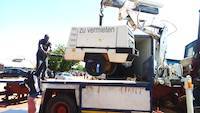 VMTRADE is a program designed by RCD Wealth and Mr. Jean Louis and it is yet another Wealth Generation Plan similar to SYOGM or Start Your Own Gold Mine.
VMTRADE is a program designed by RCD Wealth and Mr. Jean Louis and it is yet another Wealth Generation Plan similar to SYOGM or Start Your Own Gold Mine. - Offloading compressors one by one, total of 7 machines
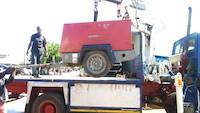 VMTRADE is a program designed by RCD Wealth and Mr. Jean Louis and it is yet another Wealth Generation Plan similar to SYOGM or Start Your Own Gold Mine.
VMTRADE is a program designed by RCD Wealth and Mr. Jean Louis and it is yet another Wealth Generation Plan similar to SYOGM or Start Your Own Gold Mine. - Offloading compressors one by one, total of 7 machines
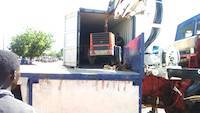 VMTRADE is a program designed by RCD Wealth and Mr. Jean Louis and it is yet another Wealth Generation Plan similar to SYOGM or Start Your Own Gold Mine.
VMTRADE is a program designed by RCD Wealth and Mr. Jean Louis and it is yet another Wealth Generation Plan similar to SYOGM or Start Your Own Gold Mine. - Offloading compressors one by one, total of 7 machines
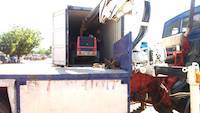 VMTRADE is a program designed by RCD Wealth and Mr. Jean Louis and it is yet another Wealth Generation Plan similar to SYOGM or Start Your Own Gold Mine.
VMTRADE is a program designed by RCD Wealth and Mr. Jean Louis and it is yet another Wealth Generation Plan similar to SYOGM or Start Your Own Gold Mine. - Offloading compressors one by one, total of 7 machines
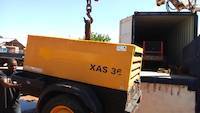 VMTRADE is a program designed by RCD Wealth and Mr. Jean Louis and it is yet another Wealth Generation Plan similar to SYOGM or Start Your Own Gold Mine.
VMTRADE is a program designed by RCD Wealth and Mr. Jean Louis and it is yet another Wealth Generation Plan similar to SYOGM or Start Your Own Gold Mine. - Offloading compressors one by one, total of 7 machines
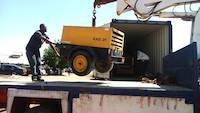 VMTRADE is a program designed by RCD Wealth and Mr. Jean Louis and it is yet another Wealth Generation Plan similar to SYOGM or Start Your Own Gold Mine.
VMTRADE is a program designed by RCD Wealth and Mr. Jean Louis and it is yet another Wealth Generation Plan similar to SYOGM or Start Your Own Gold Mine. - Offloading compressors one by one, total of 7 machines
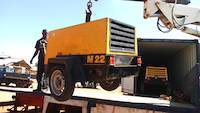 VMTRADE is a program designed by RCD Wealth and Mr. Jean Louis and it is yet another Wealth Generation Plan similar to SYOGM or Start Your Own Gold Mine.
VMTRADE is a program designed by RCD Wealth and Mr. Jean Louis and it is yet another Wealth Generation Plan similar to SYOGM or Start Your Own Gold Mine. - Offloading compressors one by one, total of 7 machines
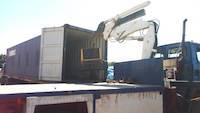 VMTRADE is a program designed by RCD Wealth and Mr. Jean Louis and it is yet another Wealth Generation Plan similar to SYOGM or Start Your Own Gold Mine.
VMTRADE is a program designed by RCD Wealth and Mr. Jean Louis and it is yet another Wealth Generation Plan similar to SYOGM or Start Your Own Gold Mine. - Offloading compressors one by one, total of 7 machines
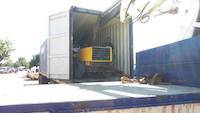 VMTRADE is a program designed by RCD Wealth and Mr. Jean Louis and it is yet another Wealth Generation Plan similar to SYOGM or Start Your Own Gold Mine.
VMTRADE is a program designed by RCD Wealth and Mr. Jean Louis and it is yet another Wealth Generation Plan similar to SYOGM or Start Your Own Gold Mine. - Offloading jackhammers
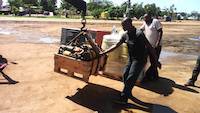 VMTRADE is a program designed by RCD Wealth and Mr. Jean Louis and it is yet another Wealth Generation Plan similar to SYOGM or Start Your Own Gold Mine.
VMTRADE is a program designed by RCD Wealth and Mr. Jean Louis and it is yet another Wealth Generation Plan similar to SYOGM or Start Your Own Gold Mine. - Offloading jackhammers
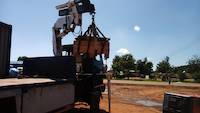 VMTRADE is a program designed by RCD Wealth and Mr. Jean Louis and it is yet another Wealth Generation Plan similar to SYOGM or Start Your Own Gold Mine.
VMTRADE is a program designed by RCD Wealth and Mr. Jean Louis and it is yet another Wealth Generation Plan similar to SYOGM or Start Your Own Gold Mine. - Offloading jackhammers from the container
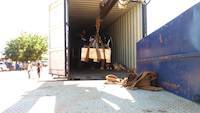 VMTRADE is a program designed by RCD Wealth and Mr. Jean Louis and it is yet another Wealth Generation Plan similar to SYOGM or Start Your Own Gold Mine.
VMTRADE is a program designed by RCD Wealth and Mr. Jean Louis and it is yet another Wealth Generation Plan similar to SYOGM or Start Your Own Gold Mine. - Offloading compressors one by one, total of 7 machines
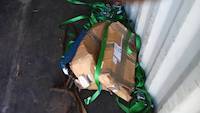 VMTRADE is a program designed by RCD Wealth and Mr. Jean Louis and it is yet another Wealth Generation Plan similar to SYOGM or Start Your Own Gold Mine.
VMTRADE is a program designed by RCD Wealth and Mr. Jean Louis and it is yet another Wealth Generation Plan similar to SYOGM or Start Your Own Gold Mine. - Offloading compressors one by one, total of 7 machines
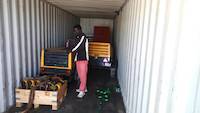 VMTRADE is a program designed by RCD Wealth and Mr. Jean Louis and it is yet another Wealth Generation Plan similar to SYOGM or Start Your Own Gold Mine.
VMTRADE is a program designed by RCD Wealth and Mr. Jean Louis and it is yet another Wealth Generation Plan similar to SYOGM or Start Your Own Gold Mine. - Offloading compressors one by one, total of 7 machines
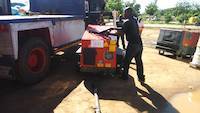 VMTRADE is a program designed by RCD Wealth and Mr. Jean Louis and it is yet another Wealth Generation Plan similar to SYOGM or Start Your Own Gold Mine.
VMTRADE is a program designed by RCD Wealth and Mr. Jean Louis and it is yet another Wealth Generation Plan similar to SYOGM or Start Your Own Gold Mine. - Offloading compressors one by one, total of 7 machines
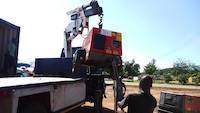 VMTRADE is a program designed by RCD Wealth and Mr. Jean Louis and it is yet another Wealth Generation Plan similar to SYOGM or Start Your Own Gold Mine.
VMTRADE is a program designed by RCD Wealth and Mr. Jean Louis and it is yet another Wealth Generation Plan similar to SYOGM or Start Your Own Gold Mine. - 💸 SOLD! Offloading compressors one by one, total of 7 machines
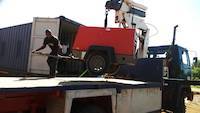 💸 SOLD! VMTRADE is a program designed by RCD Wealth and Mr. Jean Louis and it is yet another Wealth Generation Plan similar to SYOGM or Start Your Own Gold Mine.
💸 SOLD! VMTRADE is a program designed by RCD Wealth and Mr. Jean Louis and it is yet another Wealth Generation Plan similar to SYOGM or Start Your Own Gold Mine. - Offloading compressors one by one, total of 7 machines
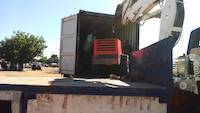 VMTRADE is a program designed by RCD Wealth and Mr. Jean Louis and it is yet another Wealth Generation Plan similar to SYOGM or Start Your Own Gold Mine.
VMTRADE is a program designed by RCD Wealth and Mr. Jean Louis and it is yet another Wealth Generation Plan similar to SYOGM or Start Your Own Gold Mine. - Offloading compressors one by one, total of 7 machines
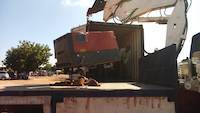 VMTRADE is a program designed by RCD Wealth and Mr. Jean Louis and it is yet another Wealth Generation Plan similar to SYOGM or Start Your Own Gold Mine.
VMTRADE is a program designed by RCD Wealth and Mr. Jean Louis and it is yet another Wealth Generation Plan similar to SYOGM or Start Your Own Gold Mine. - Offloading compressors one by one, total of 7 machines
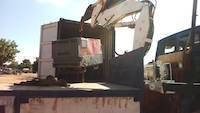 VMTRADE is a program designed by RCD Wealth and Mr. Jean Louis and it is yet another Wealth Generation Plan similar to SYOGM or Start Your Own Gold Mine.
VMTRADE is a program designed by RCD Wealth and Mr. Jean Louis and it is yet another Wealth Generation Plan similar to SYOGM or Start Your Own Gold Mine. - Offloading compressors one by one, total of 7 machines
 VMTRADE is a program designed by RCD Wealth and Mr. Jean Louis and it is yet another Wealth Generation Plan similar to SYOGM or Start Your Own Gold Mine.
VMTRADE is a program designed by RCD Wealth and Mr. Jean Louis and it is yet another Wealth Generation Plan similar to SYOGM or Start Your Own Gold Mine. - Goods are placed on the ground
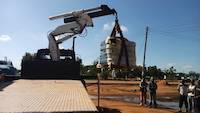 The goods are placed on the ground.
The goods are placed on the ground. - Offloading goods from a container
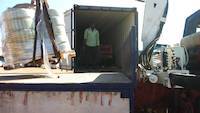 Offloading goods from a container.
Offloading goods from a container. - Offloading the pallet full of hoses
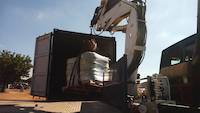 The pallet is offloaded.
The pallet is offloaded. - Offloading the pallet full of hoses for compressors
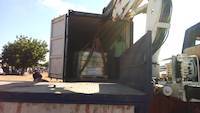 New hoses for the compressors and mining equipment such as jackhammers are on this picture offloaded by using the crane from another truck. VMTRADE is a program designed by RCD Wealth and Mr. Jean Louis and it is yet another Wealth Generation Plan similar to SYOGM or Start Your Own Gold Mine.
New hoses for the compressors and mining equipment such as jackhammers are on this picture offloaded by using the crane from another truck. VMTRADE is a program designed by RCD Wealth and Mr. Jean Louis and it is yet another Wealth Generation Plan similar to SYOGM or Start Your Own Gold Mine. - Offloading goods from our container
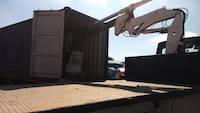 On this picture the goods are being offloaded from the container to the ground. VMTRADE is a program designed by RCD Wealth and Mr. Jean Louis and it is yet another Wealth Generation Plan similar to SYOGM or Start Your Own Gold Mine.
On this picture the goods are being offloaded from the container to the ground. VMTRADE is a program designed by RCD Wealth and Mr. Jean Louis and it is yet another Wealth Generation Plan similar to SYOGM or Start Your Own Gold Mine. - It is actually a small crane
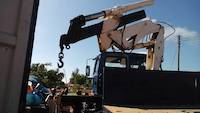 This is not a hoist, it is actually a small crane to offload goods from a truck. VMTRADE is a program designed by RCD Wealth and Mr. Jean Louis and it is yet another Wealth Generation Plan similar to SYOGM or Start Your Own Gold Mine.
This is not a hoist, it is actually a small crane to offload goods from a truck. VMTRADE is a program designed by RCD Wealth and Mr. Jean Louis and it is yet another Wealth Generation Plan similar to SYOGM or Start Your Own Gold Mine. - Using the hoist on the truck to offload the compressors
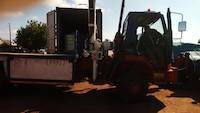 We are using this truck to offload the compressors from a container.
We are using this truck to offload the compressors from a container. - Completely new hoses for compressors with jackhammers
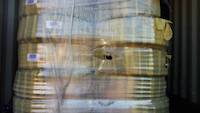 These are completely new hoses for compressors with jackhammers. VMTRADE is a program designed by RCD Wealth and Mr. Jean Louis and it is yet another Wealth Generation Plan similar to SYOGM or Start Your Own Gold Mine.
These are completely new hoses for compressors with jackhammers. VMTRADE is a program designed by RCD Wealth and Mr. Jean Louis and it is yet another Wealth Generation Plan similar to SYOGM or Start Your Own Gold Mine. - First we liberate the entrance to compressors
 First we need to offload the humanitarian goods and small stuff, so that we may access compressors. VMTRADE is a program designed by RCD Wealth and Mr. Jean Louis and it is yet another Wealth Generation Plan similar to SYOGM or Start Your Own Gold Mine.
First we need to offload the humanitarian goods and small stuff, so that we may access compressors. VMTRADE is a program designed by RCD Wealth and Mr. Jean Louis and it is yet another Wealth Generation Plan similar to SYOGM or Start Your Own Gold Mine. - Truck transporting the container to the mining site in Tanzania
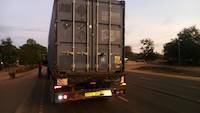 The truck is transporting the container to the mining site in Tanzania. VMTRADE is a program designed by RCD Wealth and Mr. Jean Louis and it is yet another Wealth Generation Plan similar to SYOGM or Start Your Own Gold Mine.
The truck is transporting the container to the mining site in Tanzania. VMTRADE is a program designed by RCD Wealth and Mr. Jean Louis and it is yet another Wealth Generation Plan similar to SYOGM or Start Your Own Gold Mine. - Truck with the container in the early morning of November 25th 2017
 The truck in the early morning of November 25th 2017 have transported our container to the mining site. VMTRADE is a program designed by RCD Wealth and Mr. Jean Louis and it is yet another Wealth Generation Plan similar to SYOGM or Start Your Own Gold Mine.
The truck in the early morning of November 25th 2017 have transported our container to the mining site. VMTRADE is a program designed by RCD Wealth and Mr. Jean Louis and it is yet another Wealth Generation Plan similar to SYOGM or Start Your Own Gold Mine. - Container on the road being transported to the mining site
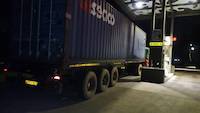 The container is being transported to the mining site through all of Tanzania. VMTRADE is a program designed by RCD Wealth and Mr. Jean Louis and it is yet another Wealth Generation Plan similar to SYOGM or Start Your Own Gold Mine.
The container is being transported to the mining site through all of Tanzania. VMTRADE is a program designed by RCD Wealth and Mr. Jean Louis and it is yet another Wealth Generation Plan similar to SYOGM or Start Your Own Gold Mine. - Container in transport through Tanzania to our mining site
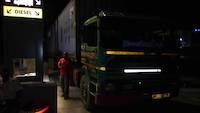 The container is finally on the transport through Tanzania and there is a long road ahead. It is destined to our mining site. VMTRADE is a program designed by RCD Wealth and Mr. Jean Louis and it is yet another Wealth Generation Plan similar to SYOGM or Start Your Own Gold Mine.
The container is finally on the transport through Tanzania and there is a long road ahead. It is destined to our mining site. VMTRADE is a program designed by RCD Wealth and Mr. Jean Louis and it is yet another Wealth Generation Plan similar to SYOGM or Start Your Own Gold Mine. - Port's employee working during the inspection of the container
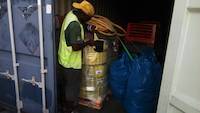 The port's employee is working during the inspection of the container.
The port's employee is working during the inspection of the container. - Jackhammers and chissels in the container
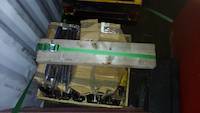 These are jackhammers and chissels in the container ready for further transport to the mining area.
These are jackhammers and chissels in the container ready for further transport to the mining area. - Compressors in the container
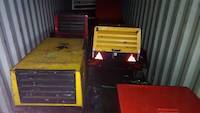 As you can see multiple compressors are in the container ready for further transport to our mining area.
As you can see multiple compressors are in the container ready for further transport to our mining area. - Some of compressors have changed their stable position
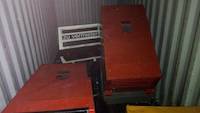 As seen, during transport, some of the compressors have changed their stable position.
As seen, during transport, some of the compressors have changed their stable position. - Humanitarian goods and mining equipment
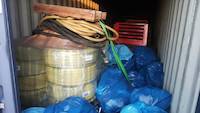 The container is loaded with mining equipment and humanitarian goods.
The container is loaded with mining equipment and humanitarian goods. - Container is open
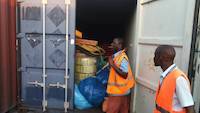 The container is now open and customs inspector may access it.
The container is now open and customs inspector may access it. - Port's employees opening the container
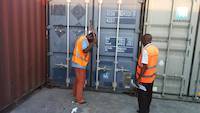 These port's employees are opening the container for customs inspection.
These port's employees are opening the container for customs inspection. - Detail on the container
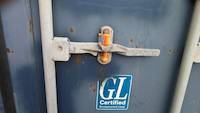 This is how it looked like before the opening of the container for the purposes of inspection.
This is how it looked like before the opening of the container for the purposes of inspection. - The specifications of our container
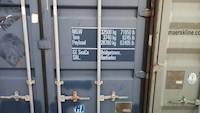 These are specifications of our container.
These are specifications of our container. - Container before the custom's inspection
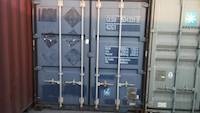 This is the container before the custom's inspection.
This is the container before the custom's inspection. - Transporting the neighboring containers so that ours may be liberated
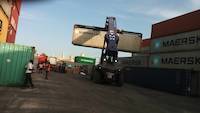 This container is transported away so that ours may be liberated for inspection and later transport. VMTRADE is a program designed by RCD Wealth and Mr. Jean Louis and it is yet another Wealth Generation Plan similar to SYOGM or Start Your Own Gold Mine.
This container is transported away so that ours may be liberated for inspection and later transport. VMTRADE is a program designed by RCD Wealth and Mr. Jean Louis and it is yet another Wealth Generation Plan similar to SYOGM or Start Your Own Gold Mine. - Import of compressors and jackhammers as possible privileged benefits for our clients
 On these pages we are demonstrating the importation of compressors and jackhammers as a possible privileged benefit for our clients in the program Start Your Own Gold Mine who are starting new gold mining businesses in Tanzania or in Uganda.
On these pages we are demonstrating the importation of compressors and jackhammers as a possible privileged benefit for our clients in the program Start Your Own Gold Mine who are starting new gold mining businesses in Tanzania or in Uganda. - Discharge of rudimentary ball mill
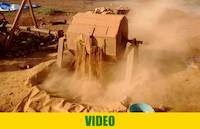 This is rudimentary ball mill as used in Uganda and Tanzania and some surrounding countries. It is locally welded and in Swahili also known as "calasher", in English "crusher". It is batch ball mill. It discharges after 45 minutes. The opening have to be replaced with the screen as you can see on this video for material to come out. In our program Start Your Own Gold Mine we are not using this type of ball mills.
This is rudimentary ball mill as used in Uganda and Tanzania and some surrounding countries. It is locally welded and in Swahili also known as "calasher", in English "crusher". It is batch ball mill. It discharges after 45 minutes. The opening have to be replaced with the screen as you can see on this video for material to come out. In our program Start Your Own Gold Mine we are not using this type of ball mills. - River Okame, source of water
 This source of water is good enough to process tonnes and tonnes of material.
This source of water is good enough to process tonnes and tonnes of material. - The day of work is not yet over for Mr. Louis
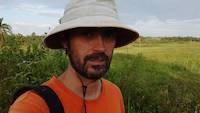 After this picture Mr. Louis have arranged another location for minining with the person who transported him back to town and who is producing 3 to 20 grams per day.
After this picture Mr. Louis have arranged another location for minining with the person who transported him back to town and who is producing 3 to 20 grams per day. - Panorama of the nature in Uganda
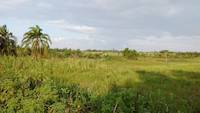 Beautiful nature around me.
Beautiful nature around me. - Discharge of rudimentary ball mill
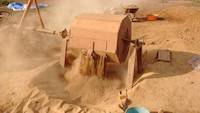 This is rudimentary ball mill also well known as calasher (english crusher) in Swahili language. The ball mills run in batches of about 45 minutes. Once the batch of milling have been finished the cover is replaced with the screen with holes so that powder material may run out.
This is rudimentary ball mill also well known as calasher (english crusher) in Swahili language. The ball mills run in batches of about 45 minutes. Once the batch of milling have been finished the cover is replaced with the screen with holes so that powder material may run out. - Children working on the mining site
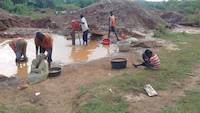 This condition have started to be handled today. I have advised the mineral processing site holder to get rid of children as it is forbidden by the Employment Act 2006 of Uganda, including multiple warnings have been issued by local government commissioners. Current management is unable to change the conditions. In case we obtain control over the mining site, we will change this condition within one hour and by using one guard with the baton.
This condition have started to be handled today. I have advised the mineral processing site holder to get rid of children as it is forbidden by the Employment Act 2006 of Uganda, including multiple warnings have been issued by local government commissioners. Current management is unable to change the conditions. In case we obtain control over the mining site, we will change this condition within one hour and by using one guard with the baton. - Fine gold in the pan
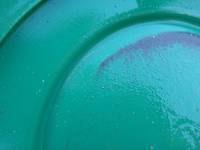 Fine gold in the pan requires skills to be recovered.
Fine gold in the pan requires skills to be recovered. - Fine gold and few bigger particles in the pan
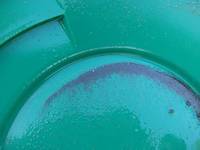 This is fine gold and few bigger particles.
This is fine gold and few bigger particles. - Fine gold in the pan
 This is fine gold in the pan after the field assay on the mineral processing site.
This is fine gold in the pan after the field assay on the mineral processing site. - The best field assay ever
 This was the best field assay ever with more than 3,000 particles of gold visible in the pan. The particles are counted by using the hand lens. This is very rich gold ore. Immediately after this assay we have started planning on how to obtain exactly this ore under our control.
This was the best field assay ever with more than 3,000 particles of gold visible in the pan. The particles are counted by using the hand lens. This is very rich gold ore. Immediately after this assay we have started planning on how to obtain exactly this ore under our control. - 14 grams of gold on the scale
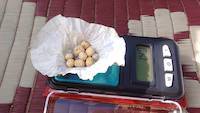 This is 14 grams of gold on the gold scale. This is about 14 grams of gold that miners upon my insistence recovered by simply panning the gold concentrate. They have first recovered all the gold without mercury. I was happy, and came there to see the result and eventually buy the gold. We are buying only environmentally friendly recovered gold. That means that gold recovered with mercury we are not to buy. We do tolerate our clients who are buying such gold and advising them how to buy it safely.
This is 14 grams of gold on the gold scale. This is about 14 grams of gold that miners upon my insistence recovered by simply panning the gold concentrate. They have first recovered all the gold without mercury. I was happy, and came there to see the result and eventually buy the gold. We are buying only environmentally friendly recovered gold. That means that gold recovered with mercury we are not to buy. We do tolerate our clients who are buying such gold and advising them how to buy it safely. - Gold recovered with mercury again mixed with mercury
 This is about 14 grams of gold that miners upon my insistence recovered by simply panning the gold concentrate. They have first recovered all the gold without mercury. I was happy, and came there to see the result and eventually buy the gold. We are buying only environmentally friendly recovered gold. That means that gold recovered with mercury we are not to buy. We do tolerate our clients who are buying such gold and advising them how to buy it safely. When I have arrived on this location we found…
This is about 14 grams of gold that miners upon my insistence recovered by simply panning the gold concentrate. They have first recovered all the gold without mercury. I was happy, and came there to see the result and eventually buy the gold. We are buying only environmentally friendly recovered gold. That means that gold recovered with mercury we are not to buy. We do tolerate our clients who are buying such gold and advising them how to buy it safely. When I have arrived on this location we found… - More than half a kilogram of gold in my hand
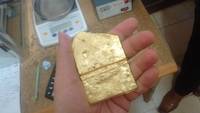 This gold is of purity 80% and it is more than half a kilogram.
This gold is of purity 80% and it is more than half a kilogram. - More than half a kilogram of gold in my hand
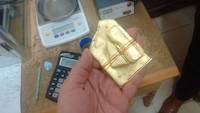 This is more than half a kilogram of gold in my hand.
This is more than half a kilogram of gold in my hand. - Gold nugget
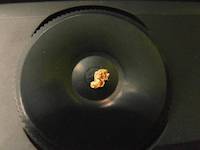 Gold nugget on the scale…
Gold nugget on the scale… - 0.242 grams of gold nugget on the scale
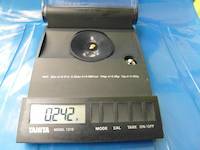 This is gold nugget on the scale.
This is gold nugget on the scale. - Gold nugget on my finger
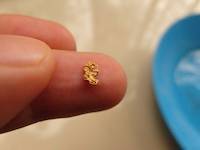 Gold nugget on my finger…
Gold nugget on my finger… - Gold nugget on my finger
 Gold nugget on my finger.
Gold nugget on my finger. - Gold nugget on my finger
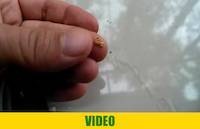 A gold nugget on the author's finger is a small piece of precious metal found in nature. It can have various shapes depending on its origin, with eluvial or placer sources leading to different angles based on distance traveled through erosion and natural processes like weathering over time. On the other hand, if it was discovered during an alluvial deposit where gold nuggets are more oval-shaped due to their long journey carried by water currents. This means they have been moved further away from its original source location after being extracted thousands of years ago.
A gold nugget on the author's finger is a small piece of precious metal found in nature. It can have various shapes depending on its origin, with eluvial or placer sources leading to different angles based on distance traveled through erosion and natural processes like weathering over time. On the other hand, if it was discovered during an alluvial deposit where gold nuggets are more oval-shaped due to their long journey carried by water currents. This means they have been moved further away from its original source location after being extracted thousands of years ago. - Gold nugget
 Gold nugget with some soil particles.
Gold nugget with some soil particles. - Gold nugget
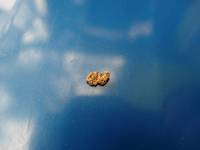 This is beautiful yet unclean gold nugget. It contains soil particles.
This is beautiful yet unclean gold nugget. It contains soil particles. - Melted gold in the vial
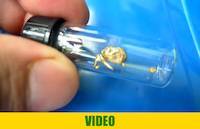 This is melted gold in the vial.
This is melted gold in the vial. - Melted gold in the vial
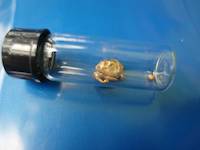 Vial is a small bottle usually for drugs, medicine, specimens. This is gold in the vial. It is easier to contain it that way.
Vial is a small bottle usually for drugs, medicine, specimens. This is gold in the vial. It is easier to contain it that way. - 2.614 grams of gold on the scale
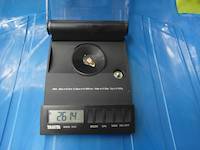 This is 2.614 grams of gold on the scale, just after melting.
This is 2.614 grams of gold on the scale, just after melting. - 2.63 grams of gold after melting
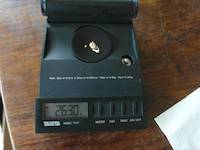 This is 2.63 grams of gold after melting on the scale.
This is 2.63 grams of gold after melting on the scale. - Melted gold in the gold pan
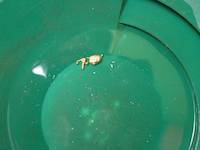 This is melted gold in the gold pan…
This is melted gold in the gold pan… - Gold in glass of water
 Gold in the glass of water after melting. Pour the hot gold into water after taking it out of the gold melting furnace.
Gold in the glass of water after melting. Pour the hot gold into water after taking it out of the gold melting furnace. - Grams of gold in glass
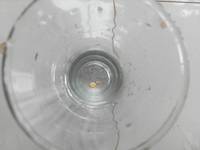 This is gold after melting in the glass.
This is gold after melting in the glass. - Few grams of gold after melting
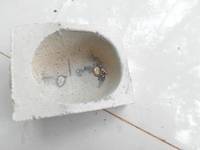 These are few grams of gold after melting…
These are few grams of gold after melting… - Tweezers to take the graphite crucible out of the furnace
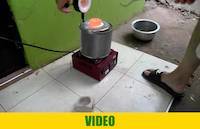 To take the graphite crucible for gold melting one need to use proper tweezers. Asbestos hand gloves are recommended as well.
To take the graphite crucible for gold melting one need to use proper tweezers. Asbestos hand gloves are recommended as well. - Melting gold in the furnace
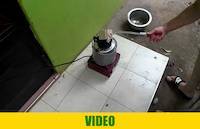 Gold in the furnace need to be shaken with the graphite stick so to melt better.
Gold in the furnace need to be shaken with the graphite stick so to melt better. - Melting gold in the melting furnace
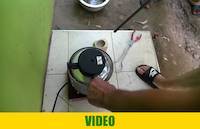 This is melting furnace and it is how it looks like inside until the furnace reaches the metling point.
This is melting furnace and it is how it looks like inside until the furnace reaches the metling point. - Melting furnace for gold
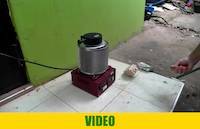 A melting furnace is used to melt 1 kilograms worth of gold in an hour, requiring specialized equipment and precise control over heat levels for extraction from raw materials at mining sites where valuable resources like precious metals are extracted under controlled conditions. The process involves several steps which necessitate the use of a suitable heating source that can maintain high temperatures while preventing accidents due to its hazardous nature as it deals with gold's extremely hot state during melting, hence requiring safety gear and expertise for safe handling and shaping in their pure form after solidification into liquid metal or alloy forms through precise control over heat levels.
A melting furnace is used to melt 1 kilograms worth of gold in an hour, requiring specialized equipment and precise control over heat levels for extraction from raw materials at mining sites where valuable resources like precious metals are extracted under controlled conditions. The process involves several steps which necessitate the use of a suitable heating source that can maintain high temperatures while preventing accidents due to its hazardous nature as it deals with gold's extremely hot state during melting, hence requiring safety gear and expertise for safe handling and shaping in their pure form after solidification into liquid metal or alloy forms through precise control over heat levels. - Melting of gold
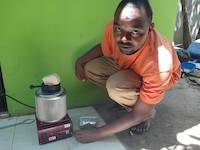 Laurence melts valuable pieces of gold metal into molten form using a specialized heating device called his 'melting furnace', which allows him to separate and purify pure gold from other metals like iron or black sand through the use of boric acid flux. By doing so, he ensures that only high-quality gold remains after cooling down and solidifying in an electric melting furnace with controlled conditions provided by the specialized heating device.
Laurence melts valuable pieces of gold metal into molten form using a specialized heating device called his 'melting furnace', which allows him to separate and purify pure gold from other metals like iron or black sand through the use of boric acid flux. By doing so, he ensures that only high-quality gold remains after cooling down and solidifying in an electric melting furnace with controlled conditions provided by the specialized heating device. - Gold balls with mercury in gold pan
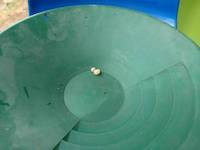 Mercury is dangerous substance that may cause cancer and other diseases. It pollutes human body, animals, plants, water source and environment. In our mining program Start Your Own Gold Mine we are not using mercury but recovering it when necessary and teaching miners how to implement mercury free methods. We do not use mercury in our programs. This gold was brought to us as sample from a mining site.
Mercury is dangerous substance that may cause cancer and other diseases. It pollutes human body, animals, plants, water source and environment. In our mining program Start Your Own Gold Mine we are not using mercury but recovering it when necessary and teaching miners how to implement mercury free methods. We do not use mercury in our programs. This gold was brought to us as sample from a mining site. - Gold ball as collected with mercury
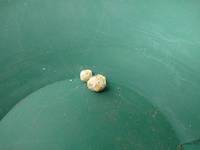 Mercury is dangerous substance that may cause cancer and other diseases. It pollutes human body, animals, plants, water source and environment. In our mining program Start Your Own Gold Mine we are not using mercury but recovering it when necessary and teaching miners how to implement mercury free methods. On the picture one can see gold balls as result from rudimentary local gold recovery methods. We are not using mercury in our program Start Your Own Gold Mine.
Mercury is dangerous substance that may cause cancer and other diseases. It pollutes human body, animals, plants, water source and environment. In our mining program Start Your Own Gold Mine we are not using mercury but recovering it when necessary and teaching miners how to implement mercury free methods. On the picture one can see gold balls as result from rudimentary local gold recovery methods. We are not using mercury in our program Start Your Own Gold Mine. - Gold nugget on the hand of a miner
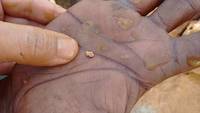 This is gold nugget on the hand of a local miner. Surprisingly on this mining location all the small gold was disposed into the soil and only large gold nuggets collected by miners. We bought gold nuggets as many as we could.
This is gold nugget on the hand of a local miner. Surprisingly on this mining location all the small gold was disposed into the soil and only large gold nuggets collected by miners. We bought gold nuggets as many as we could. - Gold nuggets
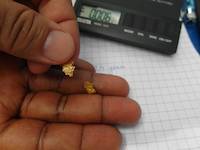 These gold nuggets are natural and have been found nearby the Geita Gold Mining company in Geita, Tanzania.
These gold nuggets are natural and have been found nearby the Geita Gold Mining company in Geita, Tanzania. - Nice gold nugget in my hand
 This is nice gold nugget in my hand.
This is nice gold nugget in my hand. - 1.426 grams of gold nugget in the hand
 This is 1.426 grams of gold nugget.
This is 1.426 grams of gold nugget. - Beautiful gold nugget
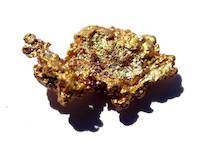 Beautiful gold nugget on this picture was found on one of the mining sites.
Beautiful gold nugget on this picture was found on one of the mining sites. - 1.018 grams of gold nugget on the scale
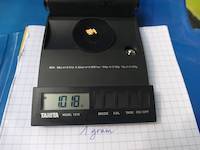 This is 1.018 grams of gold nugget on the scale.
This is 1.018 grams of gold nugget on the scale. - One beautiful gram of gold nugget
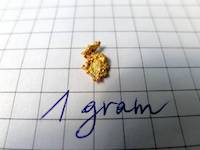 This is one beautiful gram of gold nugget we found on the mining site and cleaned it thereafter with the apple cider.
This is one beautiful gram of gold nugget we found on the mining site and cleaned it thereafter with the apple cider. - First gold we bought in Tanzania back in 2012
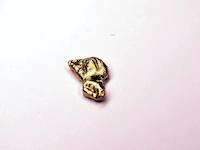 This is first gold we bought in Tanzania back in 2012. One of miners arrived to our office, we have melted the gold and bought it.
This is first gold we bought in Tanzania back in 2012. One of miners arrived to our office, we have melted the gold and bought it. - Gold as found during the business programs Start Your Own Gold Mine
 In this category there are various gold nuggets and gold particles, concentrates as found during the program Start Your Own Gold Mine in Tanzania, Uganda and other countries.
In this category there are various gold nuggets and gold particles, concentrates as found during the program Start Your Own Gold Mine in Tanzania, Uganda and other countries. - Very large ants after the rain in Geita, Tanzania
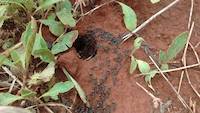 These ants were passing the path in bulk. I mean, really really large quantity of ants. When motorcycle crossed over their path, they quickly communicated it to each other and returned back into the hole.
These ants were passing the path in bulk. I mean, really really large quantity of ants. When motorcycle crossed over their path, they quickly communicated it to each other and returned back into the hole. - Very large ants
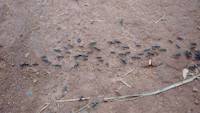 These large ants may be found in Geita, Tanzania.
These large ants may be found in Geita, Tanzania. - Large ants in Geita, Tanzania
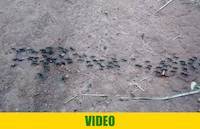 These ants are passing the path for better tomorrow. But motorcycle disturbed them and soon they came all back to the hole.
These ants are passing the path for better tomorrow. But motorcycle disturbed them and soon they came all back to the hole. - Large ants
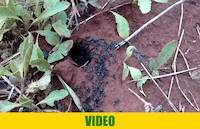 They are like 2 centimeters long... I mean, it could be a good breakfast with bunch of them, crispy, with the milk.
They are like 2 centimeters long... I mean, it could be a good breakfast with bunch of them, crispy, with the milk. - The improvized field retort for mercury recovery
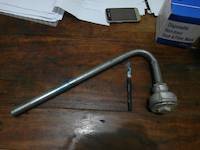 This is improvized field retort for mercury recovery. It may be made of the pipe reduction connector, the cover and piece of the pipe. The side shall be sealed by soil so that no fumes of mercury may come out during burning. The other part or the output of the pipe shall be immersed into the water cup where all the mercury is to be disposed. Without water it would get the chance to evaporate into the air. Mercury is dangerous substance that may cause cancer and other diseases. It pollutes human body,…
This is improvized field retort for mercury recovery. It may be made of the pipe reduction connector, the cover and piece of the pipe. The side shall be sealed by soil so that no fumes of mercury may come out during burning. The other part or the output of the pipe shall be immersed into the water cup where all the mercury is to be disposed. Without water it would get the chance to evaporate into the air. Mercury is dangerous substance that may cause cancer and other diseases. It pollutes human body,… - Field retort before pipe bending
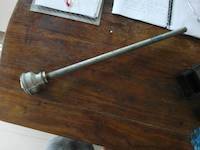 This is improvized field retort for mercury recovery. It may be made of the pipe reduction connector, the cover and piece of the pipe. This is before bending of the pipe. Mercury is dangerous substance that may cause cancer and other diseases. It pollutes human body, animals, plants, water source and environment. In our mining program Start Your Own Gold Mine we are not using mercury but recovering it when necessary and teaching miners how to implement mercury free methods.
This is improvized field retort for mercury recovery. It may be made of the pipe reduction connector, the cover and piece of the pipe. This is before bending of the pipe. Mercury is dangerous substance that may cause cancer and other diseases. It pollutes human body, animals, plants, water source and environment. In our mining program Start Your Own Gold Mine we are not using mercury but recovering it when necessary and teaching miners how to implement mercury free methods. - Mercury Free Gold Recovery Methods
 In this category we are explaining mercury free gold recovery methods including methods for disposal and recovery of mercury when founds in the gold bearing ore, gold concentrate or tailings. Mercury is dangerous substance that may cause cancer and other diseases. It pollutes human body, animals, plants, water source and environment. In our mining program Start Your Own Gold Mine we are not using mercury but recovering it when necessary and teaching miners how to implement mercury free methods.
In this category we are explaining mercury free gold recovery methods including methods for disposal and recovery of mercury when founds in the gold bearing ore, gold concentrate or tailings. Mercury is dangerous substance that may cause cancer and other diseases. It pollutes human body, animals, plants, water source and environment. In our mining program Start Your Own Gold Mine we are not using mercury but recovering it when necessary and teaching miners how to implement mercury free methods. - Conversion of pictures and videos as being prepared for website publishing
 This is my tiling window manager StumpWM showing four windows, each of it is doing one specific process such as preparation of images, conversion of videos to be published for the website, uploading images to the web server and similar.
This is my tiling window manager StumpWM showing four windows, each of it is doing one specific process such as preparation of images, conversion of videos to be published for the website, uploading images to the web server and similar. - Land for sale in Uganda
 People often sell their lands in Uganda.
People often sell their lands in Uganda. - View from streets of Busia, Uganda
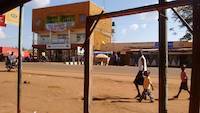 This is how the town Busia in Uganda looks like. Not quite different is the town of Busia in Kenya few hundred meters far.
This is how the town Busia in Uganda looks like. Not quite different is the town of Busia in Kenya few hundred meters far. - Measuring the screen sheets to make one out of the two
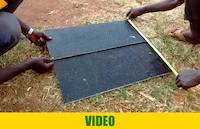 They are measuring two sheets in order to make one. The screens are connected so that they may be taken apart again depending of the needs or other sluices we may build locally. The screen size of 1/8" have been selected with the purpose to handle tailing heaps around the mining sites.
They are measuring two sheets in order to make one. The screens are connected so that they may be taken apart again depending of the needs or other sluices we may build locally. The screen size of 1/8" have been selected with the purpose to handle tailing heaps around the mining sites. - Straightening the metal screens
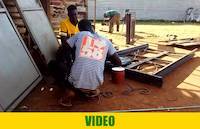 Here the boys are straightening the metal screen with 1/8" opening. We are using the material we have on hand. Even if I would like to buy the full sheet with such screen size, those are non existent in the area. We have imported the screens from other countries. The keey to proper gold ore washing is screening or classification of material. Having evenly distributed sizes of particles in the sluice is bringing the best results.
Here the boys are straightening the metal screen with 1/8" opening. We are using the material we have on hand. Even if I would like to buy the full sheet with such screen size, those are non existent in the area. We have imported the screens from other countries. The keey to proper gold ore washing is screening or classification of material. Having evenly distributed sizes of particles in the sluice is bringing the best results. - Rubber strings for gold washing sluice
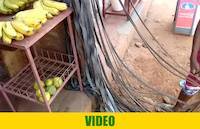 Rubber strings may be used to support the gold washing sluice to make the operation static. Instead, metal clamps may be used, by they were not obtainable in the city.
Rubber strings may be used to support the gold washing sluice to make the operation static. Instead, metal clamps may be used, by they were not obtainable in the city. - Wooden boards purchasing
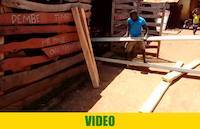 Wooden boards being purchased for the purpose of construction of supportive elements for the gold washing sluice.
Wooden boards being purchased for the purpose of construction of supportive elements for the gold washing sluice. - Carpenter choosing proper wooden boards
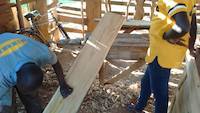 Carpenter is choosing proper wooden boards for the hopper box. It is going to be heavy. We will keep it at the mining site. The transport of the hopper box to the work place is just about 100 meters.
Carpenter is choosing proper wooden boards for the hopper box. It is going to be heavy. We will keep it at the mining site. The transport of the hopper box to the work place is just about 100 meters. - Screens waiting at the carpenter
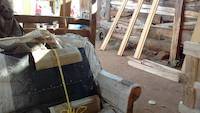 The screens that we have connected together are waiting with the carpenter for the hopper box to be constructed. It takes about one day to have the box ready. It will be used to feed the tailing into the sluice.
The screens that we have connected together are waiting with the carpenter for the hopper box to be constructed. It takes about one day to have the box ready. It will be used to feed the tailing into the sluice. - Next step is carpenter
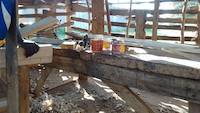 The next phase involves taking care of our screens and then moving on to bring everything over for carpentry work, where locally sourced but effective tools will help build a sturdy gold washbox using basic components we have at hand.
The next phase involves taking care of our screens and then moving on to bring everything over for carpentry work, where locally sourced but effective tools will help build a sturdy gold washbox using basic components we have at hand. - Screws are used to connect these screens together
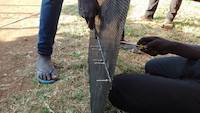 Screws are used to connect the screens together.
Screws are used to connect the screens together. - Screens being connected together
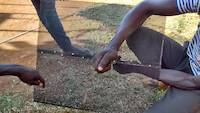 Screens are connected together.
Screens are connected together. - Screens are being connected together
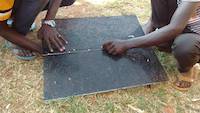 For feeding of about 5-6 tonnes per hour, these two screens have to be connected together. They are not welded. Screws are used for connection. Screens may be then later reused in other operations.
For feeding of about 5-6 tonnes per hour, these two screens have to be connected together. They are not welded. Screws are used for connection. Screens may be then later reused in other operations. - The screen with 1/8" openings
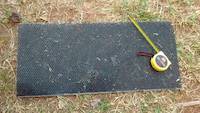 This is the screen destined to process tailings. The openings are 1/8 of an inch. One cannot use any type of screen for any type of material. Each material or ore or tailing have to be inspected to determine the particle sizes. Based on the analysis proper screens and classifiers have to be used to increase the recovery percentage.
This is the screen destined to process tailings. The openings are 1/8 of an inch. One cannot use any type of screen for any type of material. Each material or ore or tailing have to be inspected to determine the particle sizes. Based on the analysis proper screens and classifiers have to be used to increase the recovery percentage. - The screen opening is not more than 1/8"
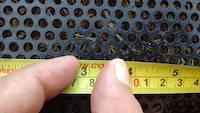 This screen has openings of 1/8" which is proper for the type of tailing it is going to handle. Proper classification is necessary before letting the material be concentrated on the gold washing sluice. It increases the gold recovery.
This screen has openings of 1/8" which is proper for the type of tailing it is going to handle. Proper classification is necessary before letting the material be concentrated on the gold washing sluice. It increases the gold recovery. - Two people are straightening the screen with hands
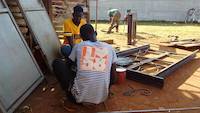 Two people here are straightening the screen with hands.
Two people here are straightening the screen with hands. - The screen or classifier being straightened by metal worker
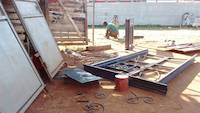 We have got few screens and two of them being straightened by hand by local metal worker. Screens are then connected together and the job is done in about 15 minutes.
We have got few screens and two of them being straightened by hand by local metal worker. Screens are then connected together and the job is done in about 15 minutes. - Preparing orange juice
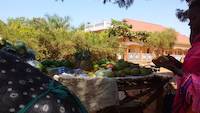 After soem work I was drinking an organge juice here directly on the street, as prepared by the mother that was selling fruits. In Uganda.
After soem work I was drinking an organge juice here directly on the street, as prepared by the mother that was selling fruits. In Uganda. - Rubber strings for static operation
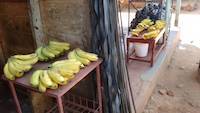 Rubber strings may be used instead of clamps to make the operation of a gold washing sluice static and firm. Rubber strings may hold sluices on wooden boards and allow all the parts to be assembled and disassembled in just few minutes.
Rubber strings may be used instead of clamps to make the operation of a gold washing sluice static and firm. Rubber strings may hold sluices on wooden boards and allow all the parts to be assembled and disassembled in just few minutes. - Plumbing parts and glue
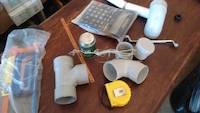 The plumbing parts and glue are purchased to create the spraying pipes that wash the material that is to be processed after showering. In general, the quantity of material being washed shall not be more than 30% in relation to the water quantity being sprayed. Thus an average gasoline pump that may bring even 80 cubic meter of water per hour may process 20 to 30 cubic meters of material which is usually equivalent to more than 20 or more than 30 cubic meter of sand or powdered material. Thus such…
The plumbing parts and glue are purchased to create the spraying pipes that wash the material that is to be processed after showering. In general, the quantity of material being washed shall not be more than 30% in relation to the water quantity being sprayed. Thus an average gasoline pump that may bring even 80 cubic meter of water per hour may process 20 to 30 cubic meters of material which is usually equivalent to more than 20 or more than 30 cubic meter of sand or powdered material. Thus such… - Wooden boards purchased for gold washing sluices
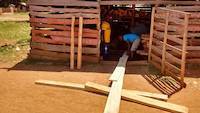 These wooden boards were purchased for gold washing sluices in Uganda. They are used to create supporting construction for the gold recovery plant.
These wooden boards were purchased for gold washing sluices in Uganda. They are used to create supporting construction for the gold recovery plant. - Wooden boards for gold washing sluices
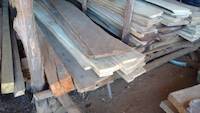 Simple gold washing sluices need not much of supporting construction. Few wooden boards and wooden stands may be just enough to process tonnes of ores per day on a sluice.
Simple gold washing sluices need not much of supporting construction. Few wooden boards and wooden stands may be just enough to process tonnes of ores per day on a sluice. - Clamp as made locally by metal technicians
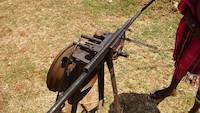 This type of clamp and metal bending tool is made locally by metal technicians in Uganda. Metal workers do not have access to modern tools like in other countries.Many times they are forced to make their own tools.
This type of clamp and metal bending tool is made locally by metal technicians in Uganda. Metal workers do not have access to modern tools like in other countries.Many times they are forced to make their own tools. - Two wooden goats
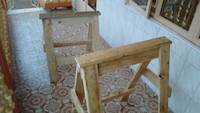 These two wooden goats are used as improvised legs of the table.
These two wooden goats are used as improvised legs of the table. - The wooden goat or sawhorse view from top
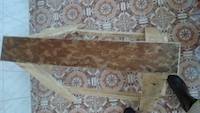 This is view from the top onto the wooden goat or better known as sawhorse in English.
This is view from the top onto the wooden goat or better known as sawhorse in English. - Wooden sawhorses
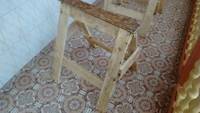 Wooden goats are used to support heavier wooden boards or sluices.
Wooden goats are used to support heavier wooden boards or sluices. - Wooden sawhorse being transported to headquarter
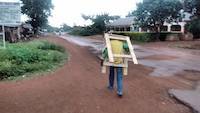 This wooden goat have been made for purposes on the mining site and is now being transported to our headquarter straight from carpenter.
This wooden goat have been made for purposes on the mining site and is now being transported to our headquarter straight from carpenter. - Beans for lunch
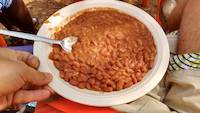 I like beans on the mining site, that was nicely made by one of the guys.
I like beans on the mining site, that was nicely made by one of the guys. - Sleeping and storage rooms on the mining site
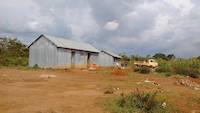 These are sleeping and storage rooms on the mining site.
These are sleeping and storage rooms on the mining site. - Miners searching for rich gold ore
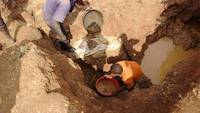 These miners are searching for rich gold ore in this shaft.
These miners are searching for rich gold ore in this shaft. - Water pond for processing of gold concentrates
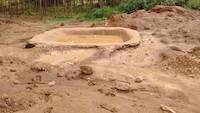 This water pond was used to process gold concentrates and is polluted with poisonous and dangerous mercury.
This water pond was used to process gold concentrates and is polluted with poisonous and dangerous mercury. - Water pond to handle material
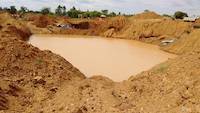 There is enough water held in the artificial pond so that material can be washed and handled, processed so that gold may be recovered.
There is enough water held in the artificial pond so that material can be washed and handled, processed so that gold may be recovered. - Children feeding the gold washing sluice in Uganda
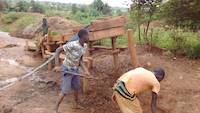 These children are feeding the gold washing sluice. They shall not be there, and we will need to make re-organization on the mining site.
These children are feeding the gold washing sluice. They shall not be there, and we will need to make re-organization on the mining site. - Injury on the mining site
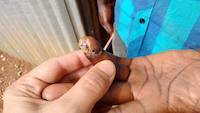 When handling the machinery one engages in all kinds of dangers, including to get own fingers cut away. This finger is still in place, yet it is heavily injured.
When handling the machinery one engages in all kinds of dangers, including to get own fingers cut away. This finger is still in place, yet it is heavily injured. - Hoses for water pumps
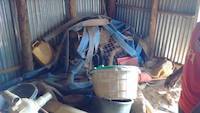 These hoses for water pumps may be used in the project of handling the tailing heaps.
These hoses for water pumps may be used in the project of handling the tailing heaps. - Water pumps
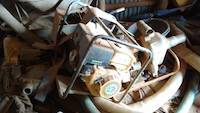 Water pumps in the storage room are not held in the best condition.
Water pumps in the storage room are not held in the best condition. - Mortar and pestle for rock sampling
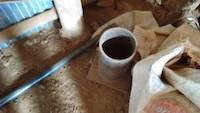 This is locally made mortar and pestle for rock crushing. It is very well made and usable for field assaying.
This is locally made mortar and pestle for rock crushing. It is very well made and usable for field assaying. - Heaps of tailing in background
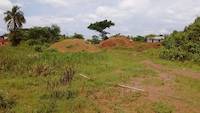 In Uganda’s vibrant mining landscape, numerous tailing heaps stand as remnants of past gold extraction efforts. These heaps, often visible in the background of mining sites, represent the waste material left after the initial gold recovery processes. However, recent assessments suggest that these tailings may still harbor significant quantities of gold that were never fully extracted.
In Uganda’s vibrant mining landscape, numerous tailing heaps stand as remnants of past gold extraction efforts. These heaps, often visible in the background of mining sites, represent the waste material left after the initial gold recovery processes. However, recent assessments suggest that these tailings may still harbor significant quantities of gold that were never fully extracted. - Heaps of tailing in background
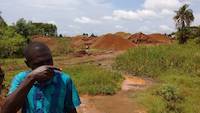 There are numerous visible heaps of tailings in the background.
There are numerous visible heaps of tailings in the background. - Always use same quantity of material for field assaying
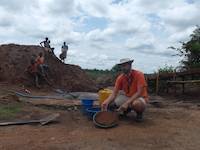 When doing field assaying and you wish to get a quantitative analysis of gold it is necessary to always use the same quantity of material. If you check one time smaller quantity and other time larger quantity and wish to assay gold in some ore dump or tailing heap, you will simply start making mistakes. Number of colors in a gold pan shall be always compared to other numbers while using the same quantity of material.
When doing field assaying and you wish to get a quantitative analysis of gold it is necessary to always use the same quantity of material. If you check one time smaller quantity and other time larger quantity and wish to assay gold in some ore dump or tailing heap, you will simply start making mistakes. Number of colors in a gold pan shall be always compared to other numbers while using the same quantity of material. - Children in background of Mr. Louis showing quantity of material in the gold pan
 These children are resting on the mercury polluted heap of tailing while Mr. Louis is showing the always one and same quantity of material that has to be used in the field assaying.
These children are resting on the mercury polluted heap of tailing while Mr. Louis is showing the always one and same quantity of material that has to be used in the field assaying. - Mr. Louis showing one quantity of material for field assaying
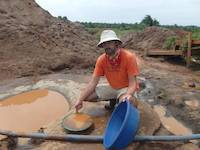 Only one and same quantity of material shall be used for field assaying so that proper estimates of gold quantity in the full material may take place.
Only one and same quantity of material shall be used for field assaying so that proper estimates of gold quantity in the full material may take place. - Another same quantity of material must be used for field assaying
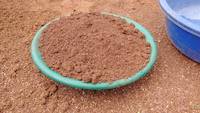 Always use the same quantity of material when assaying the gold content. You should not use one time more and next time less of the material quantity. This material is not meant for panning by using the gold pan in which it is contained. The gold pan is used just to measure the quantity of material so to be even and same each time.
Always use the same quantity of material when assaying the gold content. You should not use one time more and next time less of the material quantity. This material is not meant for panning by using the gold pan in which it is contained. The gold pan is used just to measure the quantity of material so to be even and same each time. - Always the same quantity of material is used for field assaying
 Always the same quantity of material must be used for field assaying in the Start Your Own Gold Mine program. On the left one may see the Garrett Prospecting Gold Pan full with the material of tailing. On the right side one may see the basin that is used to process the material and determine the gold content.
Always the same quantity of material must be used for field assaying in the Start Your Own Gold Mine program. On the left one may see the Garrett Prospecting Gold Pan full with the material of tailing. On the right side one may see the basin that is used to process the material and determine the gold content. - Gold recovered by dangerous substance mercury
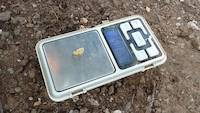 This gold of 0.58 grams was recovered by dangerous poisonous mercury on the mining site. The whole process was done by children. We do not approve of children working on the mining site. Especially we do not approve of the mercury usage that may cause cancer and other diseases to these children. We are devising the plan for the improvement of this mining site.
This gold of 0.58 grams was recovered by dangerous poisonous mercury on the mining site. The whole process was done by children. We do not approve of children working on the mining site. Especially we do not approve of the mercury usage that may cause cancer and other diseases to these children. We are devising the plan for the improvement of this mining site. - 0.58 grams of gold on the balance
 This is 0.58 grams of gold on the pocket scale.
This is 0.58 grams of gold on the pocket scale. - 0.58 grams of gold obtained by children after processing with mercury
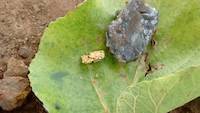 This is 0.58 grams of gold obtained by children after processing with mercury. Mercury have been burnt into the air. The air is polluted. Children are in constant contact with mercury. This is the condition we have found. We are to improve this condition by talks, descriptions and awareness about the dangers of mercury and also about the methods on how to recover gold without it.
This is 0.58 grams of gold obtained by children after processing with mercury. Mercury have been burnt into the air. The air is polluted. Children are in constant contact with mercury. This is the condition we have found. We are to improve this condition by talks, descriptions and awareness about the dangers of mercury and also about the methods on how to recover gold without it. - Gas heater for burning of mercury into the air, pollution everywhere
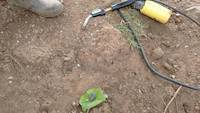 This gas heater is used to burn the mercury so that it evaporates directly into the air. As soon as we take over this location, on this ground and area of the land we will forbid burning of the mercury and usage of the mercury. All processing and final gold recovery may be done without mercury. Gold concentrates may be dried, it may be nicely separated from black sand, and gold may be measured on the balance scale without using a single drop of mercury. The other problem is that material is already…
This gas heater is used to burn the mercury so that it evaporates directly into the air. As soon as we take over this location, on this ground and area of the land we will forbid burning of the mercury and usage of the mercury. All processing and final gold recovery may be done without mercury. Gold concentrates may be dried, it may be nicely separated from black sand, and gold may be measured on the balance scale without using a single drop of mercury. The other problem is that material is already… - Gold slightly amalgamated with mercury
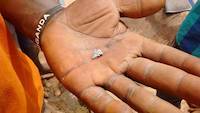 This is gold. It has been slightly amalgamated with mercury, thus there is silver color. Children were washing just few basins of material after crushing and obtained more than 0.50 grams in total.
This is gold. It has been slightly amalgamated with mercury, thus there is silver color. Children were washing just few basins of material after crushing and obtained more than 0.50 grams in total. - Children playing and working on the mercury polluted mining site in Uganda
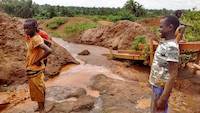 These children are working and playing on the
mercury polluted mining site. My findings and
inspection of the tailing told me that all those
heaps of tailing and ore are polluted by
mercury. I was surprised as I did not find that
much mercury in Tanzania on similar mining
places. Children work on the dangerous sluice and
are in constant bodily contact with the poisonous
and dangeours substance of mercury.
These children are working and playing on the
mercury polluted mining site. My findings and
inspection of the tailing told me that all those
heaps of tailing and ore are polluted by
mercury. I was surprised as I did not find that
much mercury in Tanzania on similar mining
places. Children work on the dangerous sluice and
are in constant bodily contact with the poisonous
and dangeours substance of mercury. - Children in background of Mr. Louis showing quantity of material in the gold pan
 These children are resting on the mercury polluted heap of tailing while Mr. Louis is showing the always one and same quantity of material that has to be used in the field assaying.
These children are resting on the mercury polluted heap of tailing while Mr. Louis is showing the always one and same quantity of material that has to be used in the field assaying. - Children washing on the mining site, Mr. Louis attempting to advise them
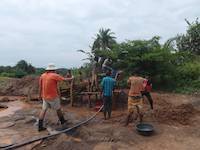 These children are washing material on the mining site. Material is completely polluted with mercury. The work on this sluice is dangerous and heavy. First one may fall down or cut oneself badly. Second the screens used to preclassify material are not efficient. Third the gold recovery is just partial.
These children are washing material on the mining site. Material is completely polluted with mercury. The work on this sluice is dangerous and heavy. First one may fall down or cut oneself badly. Second the screens used to preclassify material are not efficient. Third the gold recovery is just partial. - Children cloths dried on the classifying screen
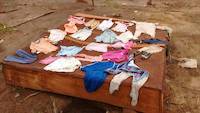 These are cloths for babies and children being dried on this screen used for classification of material before on the gold washing sluice.
These are cloths for babies and children being dried on this screen used for classification of material before on the gold washing sluice. - Children feeding the gold washing sluice in Uganda
 These children are feeding the gold washing sluice. They shall not be there, and we will need to make re-organization on the mining site.
These children are feeding the gold washing sluice. They shall not be there, and we will need to make re-organization on the mining site. - Child trying to recover all particles of gold from concentrates
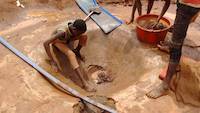 This child on the mining site in Uganda is trying to recover all concentrate particles by using plain hands. The task is impossible. The pond itself is broken and gold is simply depositing on its bottom, it is impossible to take smallest gold particles by using simple hands.
This child on the mining site in Uganda is trying to recover all concentrate particles by using plain hands. The task is impossible. The pond itself is broken and gold is simply depositing on its bottom, it is impossible to take smallest gold particles by using simple hands. - Incorrect process of handling gold
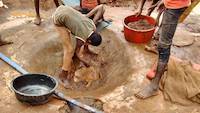 The process of handling gold at this site is totally incorrect. To capture small gold particles these boys are using the blue and red carpets and large bags. Instead that those carpets and bags are washing in a basin they are washing it in a broken pond. From there on, the material is transferred by hands into the basin! A lot of gold is then lost on the bottom of the pond. We are going to suck it all with our dredge equipment. And these children will be forbidden to access the mining site.
The process of handling gold at this site is totally incorrect. To capture small gold particles these boys are using the blue and red carpets and large bags. Instead that those carpets and bags are washing in a basin they are washing it in a broken pond. From there on, the material is transferred by hands into the basin! A lot of gold is then lost on the bottom of the pond. We are going to suck it all with our dredge equipment. And these children will be forbidden to access the mining site. - These children are washing mercury polluted ores on the mining site in Uganda
 These young boys of 10-16 years are washing mercury polluted material on this mining site in Uganda. I do not like this. They did obtain 0.58 grams of gold that day. However, children shall not be working on the mining site and they shall not be exposed to the dangerous substance - mercury. From this day on, I will try to show them better methods of gold recovery.
These young boys of 10-16 years are washing mercury polluted material on this mining site in Uganda. I do not like this. They did obtain 0.58 grams of gold that day. However, children shall not be working on the mining site and they shall not be exposed to the dangerous substance - mercury. From this day on, I will try to show them better methods of gold recovery. - Child in a mercury polluted pond of water
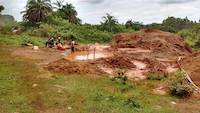 I do hate when I see this, but whatever I would do, either advice parents or tell to the license holder to refrain of allowing children to the mining site, these parents or mother with the child would just change the location to the other mercury polluted pond. What one can see here is that mother is bringing ores for processing on this place, they are crushing ores and then recovering gold by using mercury. Too many people pour mercury in this pond shown on this picture. Their children often help…
I do hate when I see this, but whatever I would do, either advice parents or tell to the license holder to refrain of allowing children to the mining site, these parents or mother with the child would just change the location to the other mercury polluted pond. What one can see here is that mother is bringing ores for processing on this place, they are crushing ores and then recovering gold by using mercury. Too many people pour mercury in this pond shown on this picture. Their children often help… - Mining site ID 281 in our database
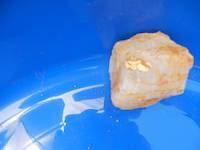 This is the mining site ID 281 in our database that we were assessing and inspecting and one of example of how Start Your Own Gold Mine program may quickly bring about the production of gold within 45 days. The mining site have three types of discovered gold bearing material, the overburden soil with eluvial gold particles, the rich gold ore with visible nuggets in quartz and tailings.
This is the mining site ID 281 in our database that we were assessing and inspecting and one of example of how Start Your Own Gold Mine program may quickly bring about the production of gold within 45 days. The mining site have three types of discovered gold bearing material, the overburden soil with eluvial gold particles, the rich gold ore with visible nuggets in quartz and tailings. - Artisanal Mining in Ghana
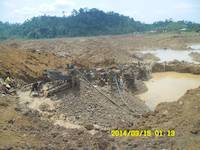 Ghana has a very developed artisanal mining. What is commendable is that many of miners know how to separate gold without using mercury. They are gold panning the concentrates by using traditional pots or bowls made of wood or other materials. Often miners work in teams and become very efficient. Their gold washing sluices are for one century of development better than those what may be found in East Africa.
Ghana has a very developed artisanal mining. What is commendable is that many of miners know how to separate gold without using mercury. They are gold panning the concentrates by using traditional pots or bowls made of wood or other materials. Often miners work in teams and become very efficient. Their gold washing sluices are for one century of development better than those what may be found in East Africa. - The gold cyanidation plant during the Preliminary Site Assessment and Inspection
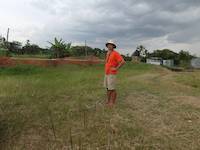 This series of images have been made during the first part of Preliminary Site Assessment and Inspection as devised by Mr. Jean Louis for the program Start Your Own Gold Mine that enables our clients to quickly start in gold mining business. Cyanidation tanks were assessed and found to be leaking fluids thus also leaking gold. A program have been envisioned on how to improve these gold cyanidation tanks so that full gold recovery may take place.
This series of images have been made during the first part of Preliminary Site Assessment and Inspection as devised by Mr. Jean Louis for the program Start Your Own Gold Mine that enables our clients to quickly start in gold mining business. Cyanidation tanks were assessed and found to be leaking fluids thus also leaking gold. A program have been envisioned on how to improve these gold cyanidation tanks so that full gold recovery may take place. - Jean Louis on gold cyanidation plant
 This series of images have been made during the first part of Preliminary Site Assessment and Inspection as devised by Mr. Jean Louis for the program Start Your Own Gold Mine that enables our clients to quickly start in gold mining business. Cyanidation tanks were assessed and found to be leaking fluids thus also leaking gold. A program have been envisioned on how to improve these gold cyanidation tanks so that full gold recovery may take place.
This series of images have been made during the first part of Preliminary Site Assessment and Inspection as devised by Mr. Jean Louis for the program Start Your Own Gold Mine that enables our clients to quickly start in gold mining business. Cyanidation tanks were assessed and found to be leaking fluids thus also leaking gold. A program have been envisioned on how to improve these gold cyanidation tanks so that full gold recovery may take place. - Detecting the water source on the gold cyanidation plant
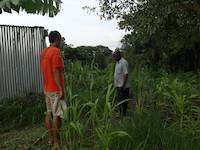 This series of images have been made during the first part of Preliminary Site Assessment and Inspection as devised by Mr. Jean Louis for the program Start Your Own Gold Mine that enables our clients to quickly start in gold mining business. Cyanidation tanks were assessed and found to be leaking fluids thus also leaking gold. A program have been envisioned on how to improve these gold cyanidation tanks so that full gold recovery may take place.
This series of images have been made during the first part of Preliminary Site Assessment and Inspection as devised by Mr. Jean Louis for the program Start Your Own Gold Mine that enables our clients to quickly start in gold mining business. Cyanidation tanks were assessed and found to be leaking fluids thus also leaking gold. A program have been envisioned on how to improve these gold cyanidation tanks so that full gold recovery may take place. - Generator on the gold cyanidation plant
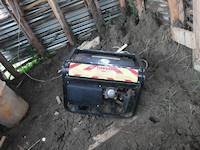 This series of images have been made during the first part of Preliminary Site Assessment and Inspection as devised by Mr. Jean Louis for the program Start Your Own Gold Mine that enables our clients to quickly start in gold mining business. Cyanidation tanks were assessed and found to be leaking fluids thus also leaking gold. A program have been envisioned on how to improve these gold cyanidation tanks so that full gold recovery may take place.
This series of images have been made during the first part of Preliminary Site Assessment and Inspection as devised by Mr. Jean Louis for the program Start Your Own Gold Mine that enables our clients to quickly start in gold mining business. Cyanidation tanks were assessed and found to be leaking fluids thus also leaking gold. A program have been envisioned on how to improve these gold cyanidation tanks so that full gold recovery may take place. - Buildings for people working on the gold cyanidation plant
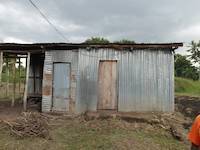 This series of images have been made during the first part of Preliminary Site Assessment and Inspection as devised by Mr. Jean Louis for the program Start Your Own Gold Mine that enables our clients to quickly start in gold mining business. Cyanidation tanks were assessed and found to be leaking fluids thus also leaking gold. A program have been envisioned on how to improve these gold cyanidation tanks so that full gold recovery may take place.
This series of images have been made during the first part of Preliminary Site Assessment and Inspection as devised by Mr. Jean Louis for the program Start Your Own Gold Mine that enables our clients to quickly start in gold mining business. Cyanidation tanks were assessed and found to be leaking fluids thus also leaking gold. A program have been envisioned on how to improve these gold cyanidation tanks so that full gold recovery may take place. - Talks with people
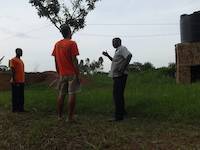 This series of images have been made during the first part of Preliminary Site Assessment and Inspection as devised by Mr. Jean Louis for the program Start Your Own Gold Mine that enables our clients to quickly start in gold mining business. Cyanidation tanks were assessed and found to be leaking fluids thus also leaking gold. A program have been envisioned on how to improve these gold cyanidation tanks so that full gold recovery may take place.
This series of images have been made during the first part of Preliminary Site Assessment and Inspection as devised by Mr. Jean Louis for the program Start Your Own Gold Mine that enables our clients to quickly start in gold mining business. Cyanidation tanks were assessed and found to be leaking fluids thus also leaking gold. A program have been envisioned on how to improve these gold cyanidation tanks so that full gold recovery may take place. - Buldings on the gold cyanidation plant
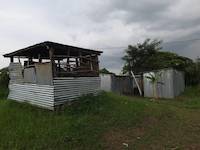 This series of images have been made during the first part of Preliminary Site Assessment and Inspection as devised by Mr. Jean Louis for the program Start Your Own Gold Mine that enables our clients to quickly start in gold mining business. Cyanidation tanks were assessed and found to be leaking fluids thus also leaking gold. A program have been envisioned on how to improve these gold cyanidation tanks so that full gold recovery may take place.
This series of images have been made during the first part of Preliminary Site Assessment and Inspection as devised by Mr. Jean Louis for the program Start Your Own Gold Mine that enables our clients to quickly start in gold mining business. Cyanidation tanks were assessed and found to be leaking fluids thus also leaking gold. A program have been envisioned on how to improve these gold cyanidation tanks so that full gold recovery may take place. - Buildings and resources on the gold cyanidation plant
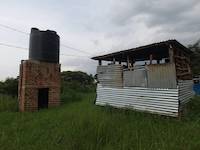 This series of images have been made during the first part of Preliminary Site Assessment and Inspection as devised by Mr. Jean Louis for the program Start Your Own Gold Mine that enables our clients to quickly start in gold mining business. Cyanidation tanks were assessed and found to be leaking fluids thus also leaking gold. A program have been envisioned on how to improve these gold cyanidation tanks so that full gold recovery may take place.
This series of images have been made during the first part of Preliminary Site Assessment and Inspection as devised by Mr. Jean Louis for the program Start Your Own Gold Mine that enables our clients to quickly start in gold mining business. Cyanidation tanks were assessed and found to be leaking fluids thus also leaking gold. A program have been envisioned on how to improve these gold cyanidation tanks so that full gold recovery may take place. - Buldings on the gold cyanidation plant
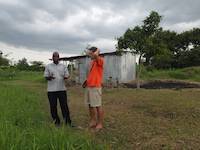 This series of images have been made during the first part of Preliminary Site Assessment and Inspection as devised by Mr. Jean Louis for the program Start Your Own Gold Mine that enables our clients to quickly start in gold mining business. Cyanidation tanks were assessed and found to be leaking fluids thus also leaking gold. A program have been envisioned on how to improve these gold cyanidation tanks so that full gold recovery may take place.
This series of images have been made during the first part of Preliminary Site Assessment and Inspection as devised by Mr. Jean Louis for the program Start Your Own Gold Mine that enables our clients to quickly start in gold mining business. Cyanidation tanks were assessed and found to be leaking fluids thus also leaking gold. A program have been envisioned on how to improve these gold cyanidation tanks so that full gold recovery may take place. - Gold cyanidation tanks
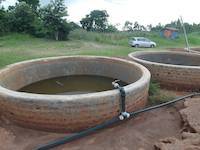 This series of images have been made during the first part of Preliminary Site Assessment and Inspection as devised by Mr. Jean Louis for the program Start Your Own Gold Mine that enables our clients to quickly start in gold mining business. Cyanidation tanks were assessed and found to be leaking fluids thus also leaking gold. A program have been envisioned on how to improve these gold cyanidation tanks so that full gold recovery may take place.
This series of images have been made during the first part of Preliminary Site Assessment and Inspection as devised by Mr. Jean Louis for the program Start Your Own Gold Mine that enables our clients to quickly start in gold mining business. Cyanidation tanks were assessed and found to be leaking fluids thus also leaking gold. A program have been envisioned on how to improve these gold cyanidation tanks so that full gold recovery may take place. - Gold cyanidation tanks
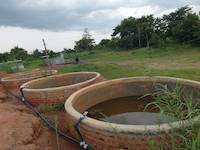 This series of images have been made during the first part of Preliminary Site Assessment and Inspection as devised by Mr. Jean Louis for the program Start Your Own Gold Mine that enables our clients to quickly start in gold mining business. Cyanidation tanks were assessed and found to be leaking fluids thus also leaking gold. A program have been envisioned on how to improve these gold cyanidation tanks so that full gold recovery may take place.
This series of images have been made during the first part of Preliminary Site Assessment and Inspection as devised by Mr. Jean Louis for the program Start Your Own Gold Mine that enables our clients to quickly start in gold mining business. Cyanidation tanks were assessed and found to be leaking fluids thus also leaking gold. A program have been envisioned on how to improve these gold cyanidation tanks so that full gold recovery may take place. - The laboratory on gold cyanidation plant
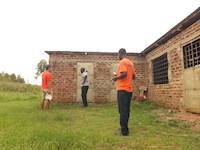 This series of images have been made during the first part of Preliminary Site Assessment and Inspection as devised by Mr. Jean Louis for the program Start Your Own Gold Mine that enables our clients to quickly start in gold mining business. Cyanidation tanks were assessed and found to be leaking fluids thus also leaking gold. A program have been envisioned on how to improve these gold cyanidation tanks so that full gold recovery may take place.
This series of images have been made during the first part of Preliminary Site Assessment and Inspection as devised by Mr. Jean Louis for the program Start Your Own Gold Mine that enables our clients to quickly start in gold mining business. Cyanidation tanks were assessed and found to be leaking fluids thus also leaking gold. A program have been envisioned on how to improve these gold cyanidation tanks so that full gold recovery may take place. - Water pump on gold cyanidation plant
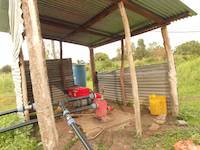 This series of images have been made during the first part of Preliminary Site Assessment and Inspection as devised by Mr. Jean Louis for the program Start Your Own Gold Mine that enables our clients to quickly start in gold mining business. Cyanidation tanks were assessed and found to be leaking fluids thus also leaking gold. A program have been envisioned on how to improve these gold cyanidation tanks so that full gold recovery may take place.
This series of images have been made during the first part of Preliminary Site Assessment and Inspection as devised by Mr. Jean Louis for the program Start Your Own Gold Mine that enables our clients to quickly start in gold mining business. Cyanidation tanks were assessed and found to be leaking fluids thus also leaking gold. A program have been envisioned on how to improve these gold cyanidation tanks so that full gold recovery may take place. - Activated carbon
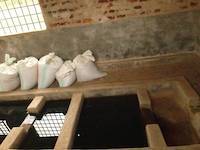 This series of images have been made during the first part of Preliminary Site Assessment and Inspection as devised by Mr. Jean Louis for the program Start Your Own Gold Mine that enables our clients to quickly start in gold mining business. Cyanidation tanks were assessed and found to be leaking fluids thus also leaking gold. A program have been envisioned on how to improve these gold cyanidation tanks so that full gold recovery may take place.
This series of images have been made during the first part of Preliminary Site Assessment and Inspection as devised by Mr. Jean Louis for the program Start Your Own Gold Mine that enables our clients to quickly start in gold mining business. Cyanidation tanks were assessed and found to be leaking fluids thus also leaking gold. A program have been envisioned on how to improve these gold cyanidation tanks so that full gold recovery may take place. - Activated carbon in the gold cyanidation plant
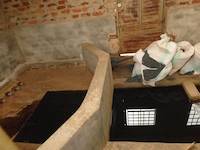 This series of images have been made during the first part of Preliminary Site Assessment and Inspection as devised by Mr. Jean Louis for the program Start Your Own Gold Mine that enables our clients to quickly start in gold mining business. Cyanidation tanks were assessed and found to be leaking fluids thus also leaking gold. A program have been envisioned on how to improve these gold cyanidation tanks so that full gold recovery may take place.
This series of images have been made during the first part of Preliminary Site Assessment and Inspection as devised by Mr. Jean Louis for the program Start Your Own Gold Mine that enables our clients to quickly start in gold mining business. Cyanidation tanks were assessed and found to be leaking fluids thus also leaking gold. A program have been envisioned on how to improve these gold cyanidation tanks so that full gold recovery may take place. - Gold cyanidation plant
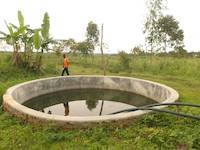 This series of images have been made during the first part of Preliminary Site Assessment and Inspection as devised by Mr. Jean Louis for the program Start Your Own Gold Mine that enables our clients to quickly start in gold mining business. Cyanidation tanks were assessed and found to be leaking fluids thus also leaking gold. A program have been envisioned on how to improve these gold cyanidation tanks so that full gold recovery may take place.
This series of images have been made during the first part of Preliminary Site Assessment and Inspection as devised by Mr. Jean Louis for the program Start Your Own Gold Mine that enables our clients to quickly start in gold mining business. Cyanidation tanks were assessed and found to be leaking fluids thus also leaking gold. A program have been envisioned on how to improve these gold cyanidation tanks so that full gold recovery may take place. - Talking with the gold cyanidation plant owner
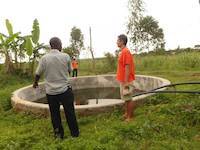 This series of images have been made during the first part of Preliminary Site Assessment and Inspection as devised by Mr. Jean Louis for the program Start Your Own Gold Mine that enables our clients to quickly start in gold mining business. Cyanidation tanks were assessed and found to be leaking fluids thus also leaking gold. A program have been envisioned on how to improve these gold cyanidation tanks so that full gold recovery may take place.
This series of images have been made during the first part of Preliminary Site Assessment and Inspection as devised by Mr. Jean Louis for the program Start Your Own Gold Mine that enables our clients to quickly start in gold mining business. Cyanidation tanks were assessed and found to be leaking fluids thus also leaking gold. A program have been envisioned on how to improve these gold cyanidation tanks so that full gold recovery may take place. - Jean Louis on the water tank
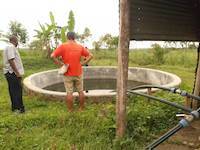 This series of images have been made during the first part of Preliminary Site Assessment and Inspection as devised by Mr. Jean Louis for the program Start Your Own Gold Mine that enables our clients to quickly start in gold mining business. Cyanidation tanks were assessed and found to be leaking fluids thus also leaking gold. A program have been envisioned on how to improve these gold cyanidation tanks so that full gold recovery may take place.
This series of images have been made during the first part of Preliminary Site Assessment and Inspection as devised by Mr. Jean Louis for the program Start Your Own Gold Mine that enables our clients to quickly start in gold mining business. Cyanidation tanks were assessed and found to be leaking fluids thus also leaking gold. A program have been envisioned on how to improve these gold cyanidation tanks so that full gold recovery may take place. - Jean Louis inspecting the production line on the cyanidation plant
 This series of images have been made during the first part of Preliminary Site Assessment and Inspection as devised by Mr. Jean Louis for the program Start Your Own Gold Mine that enables our clients to quickly start in gold mining business. Cyanidation tanks were assessed and found to be leaking fluids thus also leaking gold. A program have been envisioned on how to improve these gold cyanidation tanks so that full gold recovery may take place.
This series of images have been made during the first part of Preliminary Site Assessment and Inspection as devised by Mr. Jean Louis for the program Start Your Own Gold Mine that enables our clients to quickly start in gold mining business. Cyanidation tanks were assessed and found to be leaking fluids thus also leaking gold. A program have been envisioned on how to improve these gold cyanidation tanks so that full gold recovery may take place. - Children on the gold cyanidation plant
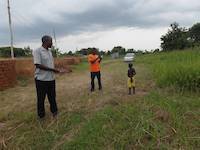 Children were advised to abandon the area of the gold cyanidation plant.
Children were advised to abandon the area of the gold cyanidation plant. - Talks with the gold cyanidation plant owner
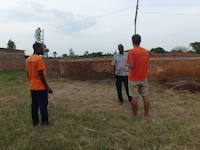 This series of images have been made during the first part of Preliminary Site Assessment and Inspection as devised by Mr. Jean Louis for the program Start Your Own Gold Mine that enables our clients to quickly start in gold mining business. Cyanidation tanks were assessed and found to be leaking fluids thus also leaking gold. A program have been envisioned on how to improve these gold cyanidation tanks so that full gold recovery may take place.
This series of images have been made during the first part of Preliminary Site Assessment and Inspection as devised by Mr. Jean Louis for the program Start Your Own Gold Mine that enables our clients to quickly start in gold mining business. Cyanidation tanks were assessed and found to be leaking fluids thus also leaking gold. A program have been envisioned on how to improve these gold cyanidation tanks so that full gold recovery may take place. - Inspection of gold cyanidation plant
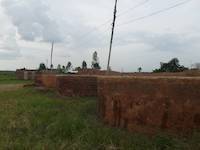 This series of images have been made during the first part of Preliminary Site Assessment and Inspection as devised by Mr. Jean Louis for the program Start Your Own Gold Mine that enables our clients to quickly start in gold mining business. Cyanidation tanks were assessed and found to be leaking fluids thus also leaking gold. A program have been envisioned on how to improve these gold cyanidation tanks so that full gold recovery may take place.
This series of images have been made during the first part of Preliminary Site Assessment and Inspection as devised by Mr. Jean Louis for the program Start Your Own Gold Mine that enables our clients to quickly start in gold mining business. Cyanidation tanks were assessed and found to be leaking fluids thus also leaking gold. A program have been envisioned on how to improve these gold cyanidation tanks so that full gold recovery may take place. - Preliminary Site Assessment and Inspection on Gold Cyanidation Plant
 This series of images have been made during the first part of Preliminary Site Assessment and Inspection as devised by Mr. Jean Louis for the program Start Your Own Gold Mine that enables our clients to quickly start in gold mining business. Cyanidation tanks were assessed and found to be leaking fluids thus also leaking gold. A program have been envisioned on how to improve these gold cyanidation tanks so that full gold recovery may take place.
This series of images have been made during the first part of Preliminary Site Assessment and Inspection as devised by Mr. Jean Louis for the program Start Your Own Gold Mine that enables our clients to quickly start in gold mining business. Cyanidation tanks were assessed and found to be leaking fluids thus also leaking gold. A program have been envisioned on how to improve these gold cyanidation tanks so that full gold recovery may take place. - Land under the exploration license in Uganda
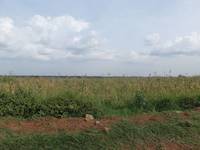 The exploration license enables the license holder
to explore for gold minerals or other minerals on
such land. Once gold deposit have been identified
one may apply for the mining lease.…
The exploration license enables the license holder
to explore for gold minerals or other minerals on
such land. Once gold deposit have been identified
one may apply for the mining lease.… - Land under the exploration license
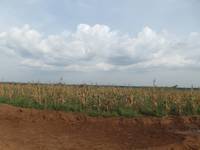 The exploration license enables the license holder to explore for gold minerals or other minerals on such land. Once gold deposit have been identified one may apply for the mining lease.
The exploration license enables the license holder to explore for gold minerals or other minerals on such land. Once gold deposit have been identified one may apply for the mining lease. - Land under the exploration license
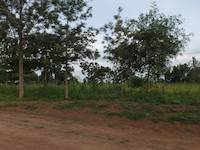 The exploration license enables the license holder to explore for gold minerals or other minerals on such land. Once gold deposit have been identified one may apply for the mining lease.
The exploration license enables the license holder to explore for gold minerals or other minerals on such land. Once gold deposit have been identified one may apply for the mining lease. - Drive around the exploration license
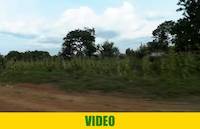 All the land visible on the side of the road belongs to the area of the exploration license of one of our local partners in Uganda.
All the land visible on the side of the road belongs to the area of the exploration license of one of our local partners in Uganda. - Land and surrounding of the exploration license
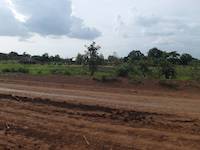 The exploration license enables the license holder to explore for gold minerals or other minerals on such land. Once gold deposit have been identified one may apply for the mining lease.
The exploration license enables the license holder to explore for gold minerals or other minerals on such land. Once gold deposit have been identified one may apply for the mining lease. - The land under the exploration license in Uganda
 The exploration license enables the license holder to explore for gold minerals or other minerals on such land. Once gold deposit have been identified one may apply for the mining lease.
The exploration license enables the license holder to explore for gold minerals or other minerals on such land. Once gold deposit have been identified one may apply for the mining lease. - Passing Jinja bridge
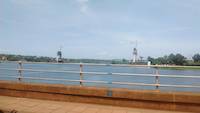 This is bridge over the river Nile in Jinja, Uganda.
This is bridge over the river Nile in Jinja, Uganda. - It is always pleasure to travel through Uganda
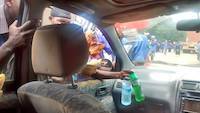 Traveling through Uganda always gives pleasures. We are invited to eat the tasty barbecue or muchomo. All the local languages use this same word. People agree when it comes to barbecue.
Traveling through Uganda always gives pleasures. We are invited to eat the tasty barbecue or muchomo. All the local languages use this same word. People agree when it comes to barbecue. - Baboons on the road
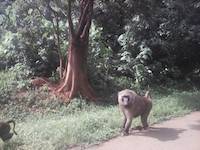 These baboons along the road are known to approach people in their cars stealing their fruits, vegetables, food and even money pockets. Do not feed them when driving through forests of Uganda. You are making their habbits become worse.
These baboons along the road are known to approach people in their cars stealing their fruits, vegetables, food and even money pockets. Do not feed them when driving through forests of Uganda. You are making their habbits become worse. - Drive to mining site in Uganda
 We are driving to the mining site in Uganda. The
drive takes 4-5 hours and we meet baboons on the
road along the muchoma or barbecue that is very
tasty.
We are driving to the mining site in Uganda. The
drive takes 4-5 hours and we meet baboons on the
road along the muchoma or barbecue that is very
tasty. - Local crusher on a mining site in Uganda
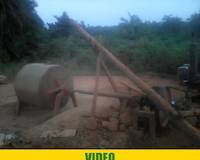 This local crusher has capacity of about 100 to 150 kilograms per hour. It is locally welded and constructed. It uses Chinese engines. The total price of such crusher may be well over US $4,000 both in Uganda or Tanzania. The money could be well spent on a better and professional crusher with more capacity and durability and less maintenance expenses.
This local crusher has capacity of about 100 to 150 kilograms per hour. It is locally welded and constructed. It uses Chinese engines. The total price of such crusher may be well over US $4,000 both in Uganda or Tanzania. The money could be well spent on a better and professional crusher with more capacity and durability and less maintenance expenses. - Baboon trying to enter the window
 One of baboons along the road tried to enter the window of our car. He had the intention, but was not quite decided. We tried to quickly close the window. Do not feed baboons in Uganda along the road.
One of baboons along the road tried to enter the window of our car. He had the intention, but was not quite decided. We tried to quickly close the window. Do not feed baboons in Uganda along the road. - The river nile as seen from the bridge in Jinja
 This is the river Nile, the source of life and water for people in multiple countries up to the Egypt.
This is the river Nile, the source of life and water for people in multiple countries up to the Egypt. - The bridge over the river Nile
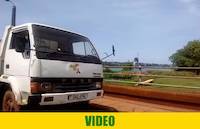 This is the bridge near Jinja over the river Nile in Uganda.
This is the bridge near Jinja over the river Nile in Uganda. - Passing over the river Nile
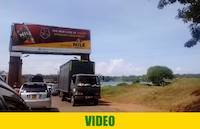 Here we are soon passing over the river Nile in Uganda.
Here we are soon passing over the river Nile in Uganda. - Muchomo is barbecue that we get offered on the road
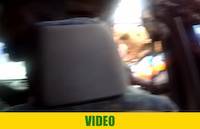 Muchomo is a tasty barbecue that we get offered on the road. This is one of the reasons why Ugandan people like traveling.
Muchomo is a tasty barbecue that we get offered on the road. This is one of the reasons why Ugandan people like traveling. - Waiting in the traffic jam
 The traffic jam…
The traffic jam… - Drive around the exploration license
 All the land visible on the side of the road belongs to the area of the exploration license of one of our local partners in Uganda.
All the land visible on the side of the road belongs to the area of the exploration license of one of our local partners in Uganda. - Review of the open pit in June, 2017
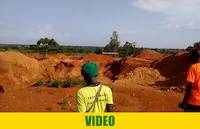 We are reviewing the open pit in June, 2017…
We are reviewing the open pit in June, 2017… - Gold particles in the gold pan
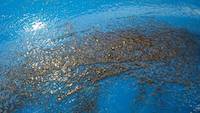 Visible gold particles in the gold pan.
Visible gold particles in the gold pan. - Gold panning on the mining site ID: 281 in our database
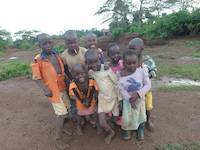 The gold panning is most important method for gold prospecting and recovery of final gold from concentrates. On this mining site we are gold panning for particles of gold in the overburden soil. The open pit itself contains a lot of rich gold ore and operation requires more capital. However, the overbuden soil and the tailing may create potential to recover good quantity of gold in a month. Children found on the mining site are warned and advised to refrain from playing on unsafe location.
The gold panning is most important method for gold prospecting and recovery of final gold from concentrates. On this mining site we are gold panning for particles of gold in the overburden soil. The open pit itself contains a lot of rich gold ore and operation requires more capital. However, the overbuden soil and the tailing may create potential to recover good quantity of gold in a month. Children found on the mining site are warned and advised to refrain from playing on unsafe location. - Children on the mining site
 These happy children are playing around the mining site that was left in unsafe condition. No warning signs and no indications of dangers have been placed on the mining site. We are advising local miners to change conditions and advise children and parents to refrain from playing on the mining site.
These happy children are playing around the mining site that was left in unsafe condition. No warning signs and no indications of dangers have been placed on the mining site. We are advising local miners to change conditions and advise children and parents to refrain from playing on the mining site. - Mr. Louis on the open pit
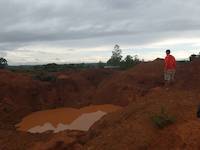 Mr. Louis is standing here on the top of the overburden soil from the open pit where exceptionally rich gold ore have been found.
Mr. Louis is standing here on the top of the overburden soil from the open pit where exceptionally rich gold ore have been found. - Verifying the overburden for gold particles
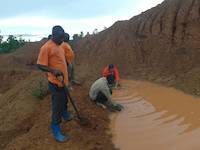 Here we are verifying the overburden for gold particles. In each shovel gold particles may be found, sometimes 25-30 pieces of smaller than 70 mesh. This type of overburden may be quickly processed similarly like tailing heaps that are laying around this mining site.
Here we are verifying the overburden for gold particles. In each shovel gold particles may be found, sometimes 25-30 pieces of smaller than 70 mesh. This type of overburden may be quickly processed similarly like tailing heaps that are laying around this mining site. - Inspection of gold particles with hand lens
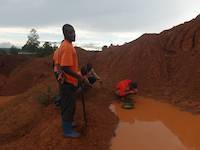 The hand lens is used to inspect for smallest gold particles in this overburden soil.
The hand lens is used to inspect for smallest gold particles in this overburden soil. - Mr. Louis gold panning on the open pit
 Mr. Louis is panning here the overburden soil on the open pit to verify the existence of gold. Without hand lens such small gold particles cannot be seen properly. One visible gold particle indicates usually 20-25 other not visible gold particles.
Mr. Louis is panning here the overburden soil on the open pit to verify the existence of gold. Without hand lens such small gold particles cannot be seen properly. One visible gold particle indicates usually 20-25 other not visible gold particles. - Boys are gold panning on the open pit
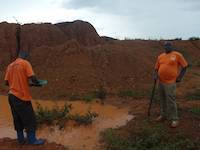 These boys are panning for gold on the open pit. The overburden itself contains particles of gold. While the rich gold ore contains as much as 2 kilograms of gold in 3 large trucks of material.
These boys are panning for gold on the open pit. The overburden itself contains particles of gold. While the rich gold ore contains as much as 2 kilograms of gold in 3 large trucks of material. - Gold panning and checking for gold existence
 We are gold panning the overburden soil from the open pit and verifying the soil for gold existence.
We are gold panning the overburden soil from the open pit and verifying the soil for gold existence. - Gold panning the overburden soil
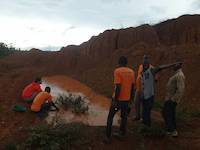 We are gold panning the overburden soil to verify for its existence of gold. Sometimes 20-25 particle in a pan are visible, indicating small quantity of gold.
We are gold panning the overburden soil to verify for its existence of gold. Sometimes 20-25 particle in a pan are visible, indicating small quantity of gold. - Mr. Louis in front of the open pit
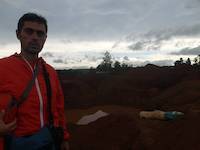 I am here standing in front of this open pit with rich gold ore under there.
I am here standing in front of this open pit with rich gold ore under there. - The open pit with rich gold ore under there
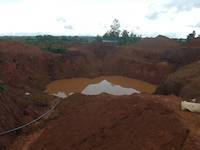 This is the open pit with rich gold ore under there.
This is the open pit with rich gold ore under there. - The future headquarter on the mining site
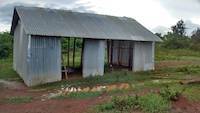 This is the future headquarter on the mining site.
This is the future headquarter on the mining site. - Panorama of the open pit
 This panorama of the open pit is probably not to be shown well on our web pages, yet you may get the insight into how it looks like from above.
This panorama of the open pit is probably not to be shown well on our web pages, yet you may get the insight into how it looks like from above. - Don't mind my serious face
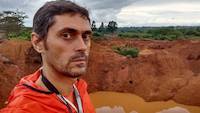 I may be looking serious on this picture, yet this picture is showing you that I was directly on the open pit we are here speaking about. In general and in small scale we are able to help any mining site that wish to increase their outputs.
I may be looking serious on this picture, yet this picture is showing you that I was directly on the open pit we are here speaking about. In general and in small scale we are able to help any mining site that wish to increase their outputs. - The open pit with very rich gold ore
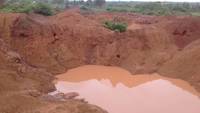 This is the open pit worth millions of dollars. It contains very rich gold ore that we have been mentioning on other pages. It is one out of many locations available for the program to Start Your Own Gold Mine.
This is the open pit worth millions of dollars. It contains very rich gold ore that we have been mentioning on other pages. It is one out of many locations available for the program to Start Your Own Gold Mine. - Excavations on the mining site
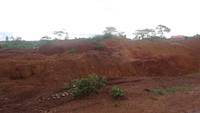 The excavations may be seen all over the mining site. Often they are not secured by red or yellow warning tapes and represent a constant danger for children and people around.
The excavations may be seen all over the mining site. Often they are not secured by red or yellow warning tapes and represent a constant danger for children and people around. - Rich gold ore with iron and quartz
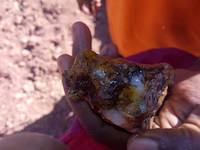 This is rich gold ore containing iron and quartz…
This is rich gold ore containing iron and quartz… - Rich gold ore with iron and quartz
 This is rich gold ore containing iron and quartz.
This is rich gold ore containing iron and quartz. - Miners panning for gold on the mining site ID 281
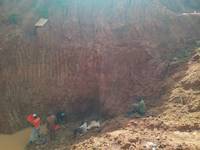 Miners are panning for gold in Uganda on the mining site with the ID 281 in our database. The rich gold ore vein is just there in sight. The soil and gravel around contains grams and grams of gold that may be picked out by fingers. No special panning skills are required to get to the gold.
Miners are panning for gold in Uganda on the mining site with the ID 281 in our database. The rich gold ore vein is just there in sight. The soil and gravel around contains grams and grams of gold that may be picked out by fingers. No special panning skills are required to get to the gold. - Too steep slopes of the open pit
 This open pit is dangerous with its too steep slopes.
This open pit is dangerous with its too steep slopes. - Open pit and gold panning in Uganda
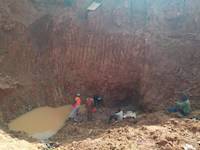 In this open pit miners in Uganda are panning for gold.
In this open pit miners in Uganda are panning for gold. - Open pit
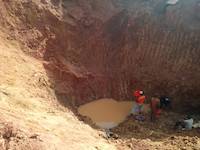 This open pit mine in Nsangalo, Uganda is located near Amonikakinei and faces challenges due to steep slopes that hinder efficient excavation processes. The focus on short-term gains often leads the miners not considering long term sustainability or planning their activities effectively causing further complications at the site.
This open pit mine in Nsangalo, Uganda is located near Amonikakinei and faces challenges due to steep slopes that hinder efficient excavation processes. The focus on short-term gains often leads the miners not considering long term sustainability or planning their activities effectively causing further complications at the site. - Miners panning for gold
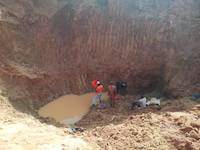 Gold panning in Uganda…
Gold panning in Uganda… - Scenes from gold panning in open pit
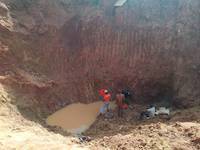 Miners panning for gold…
Miners panning for gold… - Scenes from gold panning in open pit
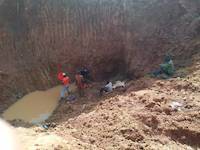 Miners panning gold in the open pit as the gold particles are easily obtained from the surrounding soil.
Miners panning gold in the open pit as the gold particles are easily obtained from the surrounding soil. - Gold nuggets from lode ore
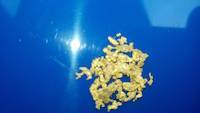 Lode is a deposit of valuable ore occurring within definite boundaries separating it from surrounding rocks. These gold nuggets were picked out of the soil surrounding the rich gold ore vein at this Ugandan mining site.
Lode is a deposit of valuable ore occurring within definite boundaries separating it from surrounding rocks. These gold nuggets were picked out of the soil surrounding the rich gold ore vein at this Ugandan mining site. - Gold nuggets
 Gold nuggets from a lode.
Gold nuggets from a lode. - Gold nuggets directly from a lode
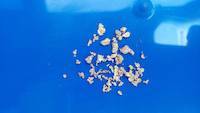 Lode is a deposit of valuable ore occurring within definite boundaries separating it from surrounding rocks. These gold nuggets have been separated directly from a lode.
Lode is a deposit of valuable ore occurring within definite boundaries separating it from surrounding rocks. These gold nuggets have been separated directly from a lode. - Gold flakes directly from a lode
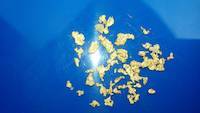 Lode is a deposit of valuable ore occurring within definite boundaries separating it from surrounding rocks. These gold flakes have been taken directly from rich gold ore vein and they were separated from rocks. Many other gold flakes are directly in the ore.
Lode is a deposit of valuable ore occurring within definite boundaries separating it from surrounding rocks. These gold flakes have been taken directly from rich gold ore vein and they were separated from rocks. Many other gold flakes are directly in the ore. - Misguided Local Miners Rely on Harmful Mercury for Gold Extraction
 These local miners in Uganda are naively believing that mercury is the only way to extract and recovery gold from concentrates. We do not advise using mercury in gold recovery and will refuse to do so. All miners are advised to stop using mercury immediately. Mercury is dangerous poison and is polluting environment, the water which is drunk by children, people and cattle. Mercury poison is then traveling to plants, fruits, vegetables, to fish, and trees. People are getting cancer and other dangerous…
These local miners in Uganda are naively believing that mercury is the only way to extract and recovery gold from concentrates. We do not advise using mercury in gold recovery and will refuse to do so. All miners are advised to stop using mercury immediately. Mercury is dangerous poison and is polluting environment, the water which is drunk by children, people and cattle. Mercury poison is then traveling to plants, fruits, vegetables, to fish, and trees. People are getting cancer and other dangerous… - Miners with the mercury sponge ball
 This miner is showing his "result", the large mercury ball with several grams of gold. We do not advise using mercury in gold recovery and will refuse to do so. All miners are advised to stop using mercury immediately. Mercury is dangerous poison and is polluting environment, the water which is drunk by children, people and cattle. Mercury poison is then traveling to plants, fruits, vegetables, to fish, and trees. People are getting cancer and other dangerous diseases from mercury.
This miner is showing his "result", the large mercury ball with several grams of gold. We do not advise using mercury in gold recovery and will refuse to do so. All miners are advised to stop using mercury immediately. Mercury is dangerous poison and is polluting environment, the water which is drunk by children, people and cattle. Mercury poison is then traveling to plants, fruits, vegetables, to fish, and trees. People are getting cancer and other dangerous diseases from mercury. - Amalgam of gold with mercury
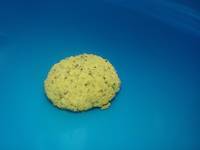 This is not quite the "amalgam" because this gold was not quite nicely melted with mercury. It is better say "connected" to mercury. We do not advise using mercury in gold recovery and will refuse to do so. All miners are advised to stop using mercury immediately. Mercury is dangerous poison and is polluting environment, the water which is drunk by children, people and cattle. Mercury poison is then traveling to plants, fruits, vegetables, to fish, and trees. People are getting cancer and other dangerous…
This is not quite the "amalgam" because this gold was not quite nicely melted with mercury. It is better say "connected" to mercury. We do not advise using mercury in gold recovery and will refuse to do so. All miners are advised to stop using mercury immediately. Mercury is dangerous poison and is polluting environment, the water which is drunk by children, people and cattle. Mercury poison is then traveling to plants, fruits, vegetables, to fish, and trees. People are getting cancer and other dangerous… - Gold amalgamated with mercury
 This is picture of gold amalgamated with mercury. This is exceptional good result for the local miners. We do not endorse any of the mercury recovery methods. Mercury is a danger and liability for environment, animals, plants, and people. It may cause cancer and other dangerous diseases. It cannot collect all the gold out of the concentrates and it is expensive. We are advising miners how to recover gold without using mercury. Mercury free methods of gold recovery are used all over the North Americas…
This is picture of gold amalgamated with mercury. This is exceptional good result for the local miners. We do not endorse any of the mercury recovery methods. Mercury is a danger and liability for environment, animals, plants, and people. It may cause cancer and other dangerous diseases. It cannot collect all the gold out of the concentrates and it is expensive. We are advising miners how to recover gold without using mercury. Mercury free methods of gold recovery are used all over the North Americas… - Ugandan miners panning and searching for gold
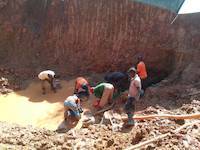 These Ugandan miners are panning and searching for gold. They have pumped the water out of the small open pit and again and repeatedly reached the ore in sight. The rich gold ore vein is yielding with more than 2 kilograms of gold out of 3 large trucks of such material. Start Your Own Gold Mine program is engaging to help the local miners and share the proceedings with them.
These Ugandan miners are panning and searching for gold. They have pumped the water out of the small open pit and again and repeatedly reached the ore in sight. The rich gold ore vein is yielding with more than 2 kilograms of gold out of 3 large trucks of such material. Start Your Own Gold Mine program is engaging to help the local miners and share the proceedings with them. - Miners panning for gold in Uganda
 These miners are panning for gold in Uganda.
These miners are panning for gold in Uganda. - Ugandan miners panning for a rich gold ore
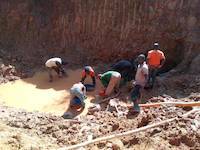 Each of these miners is hoping for their luck! On this day, the water was pumped out and the rich gold ore was just there available for excavation. All the soil around the hard rocks contains a lot of gold that could be panned right away. Miners started panning and collecting grams of gold.
Each of these miners is hoping for their luck! On this day, the water was pumped out and the rich gold ore was just there available for excavation. All the soil around the hard rocks contains a lot of gold that could be panned right away. Miners started panning and collecting grams of gold. - Rich gold ore vein
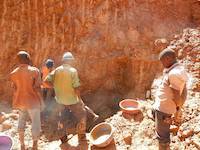 This is the rich gold ore vein.
This is the rich gold ore vein. - Rich gold ore vein
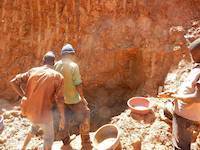 Here is the ore in sight, the rich gold ore vein.
Here is the ore in sight, the rich gold ore vein. - Gold ore vein
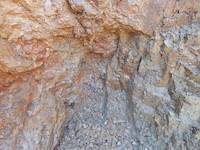 This is the rich gold ore vein.
This is the rich gold ore vein. - Rich gold ore vein
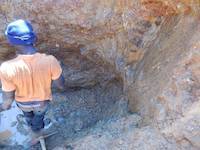 Here is the rich gold ore vein, whatever is excavated on this place is yielding with high gold content.
Here is the rich gold ore vein, whatever is excavated on this place is yielding with high gold content. - Gold Ore Mining in Uganda: Hard Rock Deposits
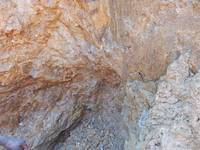 This is the gold ore in Uganda on one of available locations for the program Start Your Own Gold Mine.
This is the gold ore in Uganda on one of available locations for the program Start Your Own Gold Mine. - Miners at ore in sight
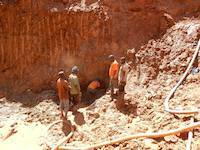 Ore is in sight! The ore have been discovered long ago. It is just that water and lack of knowledge and equipment is preventing these miners to get to the rich gold ore. That is why we are here, to help them and us!…
Ore is in sight! The ore have been discovered long ago. It is just that water and lack of knowledge and equipment is preventing these miners to get to the rich gold ore. That is why we are here, to help them and us!… - Miners at ore in sight
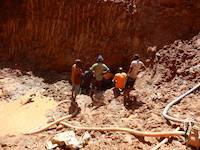 Miners are at "ore in sight". That means the ore have been discovered, it is accessible, it is only not known what is the actual underground volume of such ore.
Miners are at "ore in sight". That means the ore have been discovered, it is accessible, it is only not known what is the actual underground volume of such ore. - The rich gold ore at the gold mining site ID 281
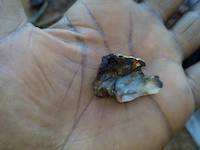 This is very rich gold ore at the gold mining site with the ID 281 in our database. This gold ore contains as much as 2 kilograms of gold in 3 large trucks of the ore. Normally, gold with the content of 20 grams per tonne is not such that one can even see particles on the surface of rocks. With this gold bearing ore, one may see gold nuggets as large as one gram and more directly on surface of the rock. A handful of 5 kilograms of gold have already yielded with 6 grams and more for local miners who…
This is very rich gold ore at the gold mining site with the ID 281 in our database. This gold ore contains as much as 2 kilograms of gold in 3 large trucks of the ore. Normally, gold with the content of 20 grams per tonne is not such that one can even see particles on the surface of rocks. With this gold bearing ore, one may see gold nuggets as large as one gram and more directly on surface of the rock. A handful of 5 kilograms of gold have already yielded with 6 grams and more for local miners who… - Rich gold ore
 Rich gold ore…
Rich gold ore… - Gold in a rich gold ore
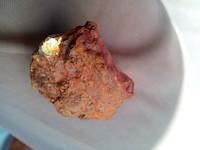 This is gold nugget visible in a piece of rock that contains a lot of iron that is visible on the rusty color of this rock.
This is gold nugget visible in a piece of rock that contains a lot of iron that is visible on the rusty color of this rock. - Gold after panning
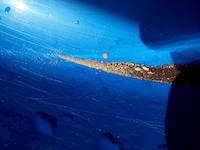 Gold after panning…
Gold after panning… - Gold panned
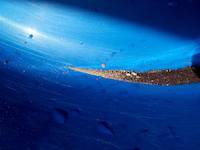 Gold panned…
Gold panned… - Gold panned
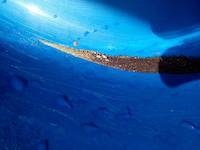 Gold panned…
Gold panned… - Panning for Good Gold Concentrate
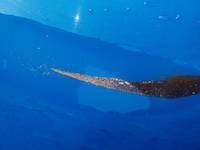 This gold was panned from rich gold soil that was found around the hard rocks.
This gold was panned from rich gold soil that was found around the hard rocks. - Gold concentrate made out of soil from rich gold ore
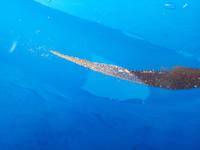 This is small panning test with a lot of gold from small quantity of soil around the rich gold ore vein.
This is small panning test with a lot of gold from small quantity of soil around the rich gold ore vein. - Gold nugget in a rich gold rock
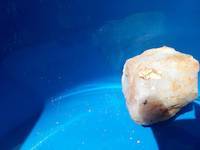 Gold nugget in a gold rock.
Gold nugget in a gold rock. - Gold nugget in a rich gold rock
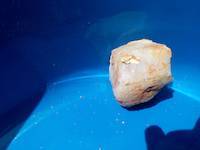 Gold nugget in piece of quartz.
Gold nugget in piece of quartz. - Gold nugget in a rich gold rock
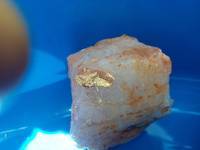 This is gold nugget in a rich gold rock of quartz.
This is gold nugget in a rich gold rock of quartz. - Gold nugget in a rich gold rock
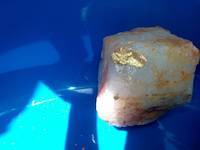 This is a gold nugget in a rich gold rock.
This is a gold nugget in a rich gold rock. - Gold nuggets in rich gold ore
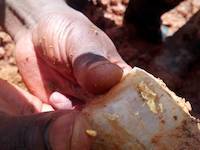 These are gold nuggets in rich gold ore. This type of ore is yielding more than 2 kilograms in 3 trucks of material.
These are gold nuggets in rich gold ore. This type of ore is yielding more than 2 kilograms in 3 trucks of material. - The rich gold ore with gold flakes falling off the rock
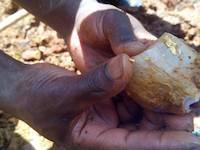 This is the rich gold ore. The gold flakes may be seen as falling off the rock. Some gold nuggets are in the rock.
This is the rich gold ore. The gold flakes may be seen as falling off the rock. Some gold nuggets are in the rock. - Rich gold ore
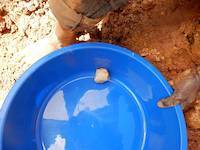 This is rich gold ore with visible nugget in the quartz rock. This type of the ore is yielding currently on the location we know more than 2 kilograms out of 3 trucks of material.
This is rich gold ore with visible nugget in the quartz rock. This type of the ore is yielding currently on the location we know more than 2 kilograms out of 3 trucks of material. - Rich gold ore
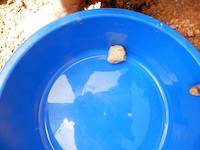 This is rich gold ore with visible nugget in the quartz rock. This type of the ore is yielding currently on the location we know more than 2 kilograms out of 3 trucks of material.
This is rich gold ore with visible nugget in the quartz rock. This type of the ore is yielding currently on the location we know more than 2 kilograms out of 3 trucks of material. - Rich gold ore, nugget in quartz
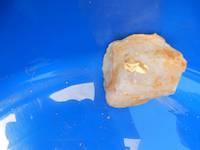 This is rich gold ore with visible nugget in the quartz rock. This type of the ore is yielding currently on the location we know more than 2 kilograms out of 3 trucks of material.
This is rich gold ore with visible nugget in the quartz rock. This type of the ore is yielding currently on the location we know more than 2 kilograms out of 3 trucks of material. - Gold Ore with Quartz Veins
 This is rich gold ore with visible nugget in the quartz rock. This type of the ore is yielding currently on the location we know more than 2 kilograms out of 3 trucks of material.
This is rich gold ore with visible nugget in the quartz rock. This type of the ore is yielding currently on the location we know more than 2 kilograms out of 3 trucks of material. - Travel to the mining site ID: 281 in Uganda, June 2017
 We are traveling to the mining site ID: 281 in Uganda, in June 2017. The travel is easy, roads are good, and people friendly.
We are traveling to the mining site ID: 281 in Uganda, in June 2017. The travel is easy, roads are good, and people friendly. - Baboons Traveling on the Path to Busia District, Near Busitema Forest
 The baboons that can be found along the mining road to Busia district in Uganda are a unique and interesting sight to see for travelers and locals alike. However, these primates have become quite bold in their interactions with humans, often approaching cars and attempting to steal fruits, vegetables, food, and even money from unsuspecting passengers.
The baboons that can be found along the mining road to Busia district in Uganda are a unique and interesting sight to see for travelers and locals alike. However, these primates have become quite bold in their interactions with humans, often approaching cars and attempting to steal fruits, vegetables, food, and even money from unsuspecting passengers.
- Passing Jinja bridge
 This is bridge over the river Nile in Jinja, Uganda.
This is bridge over the river Nile in Jinja, Uganda. - It is always pleasure to travel through Uganda
 Traveling through Uganda always gives pleasures. We are invited to eat the tasty barbecue or muchomo. All the local languages use this same word. People agree when it comes to barbecue.
Traveling through Uganda always gives pleasures. We are invited to eat the tasty barbecue or muchomo. All the local languages use this same word. People agree when it comes to barbecue. - Ugandan miners trying to get to the rich gold ore vein
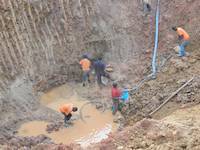 These miners on the mining site of our partner in Uganda are trying to reach to the very rich gol ore vein. All miners around know that the area is full of gold and that very rich gold ore vein exists. Lack of equipment and knowledge of mining is what is preventing these miners to get the wealth. The slopes of the open pit seem to be too steep and dangerous. No safety equipment is used. Even when rich gold vein is discovered, the lack of proper equipment to handle such ore is preventing miners to…
These miners on the mining site of our partner in Uganda are trying to reach to the very rich gol ore vein. All miners around know that the area is full of gold and that very rich gold ore vein exists. Lack of equipment and knowledge of mining is what is preventing these miners to get the wealth. The slopes of the open pit seem to be too steep and dangerous. No safety equipment is used. Even when rich gold vein is discovered, the lack of proper equipment to handle such ore is preventing miners to… - Miners working hard to reach the rich gold ore vein
 These miners are working hard to reach the rich gold ore vein.
These miners are working hard to reach the rich gold ore vein. - Ugandan Miners Seek Wealth in Deep Ore Vein
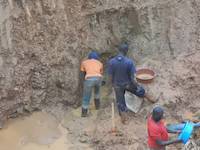 These miners and good people in Uganda are trying to reach the rich gold ore vein that we all know where it is, and just need to be reached.
These miners and good people in Uganda are trying to reach the rich gold ore vein that we all know where it is, and just need to be reached. - Backhoe loader, good for gold prospecting
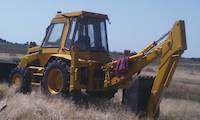 Backhoe loader is certainly a good machine for gold prospecting. For our clients who arrive to Tanzania, we have the possibility to provide this machine for prospecting and digging purposes. This machine may be provided as the privileged benefit in the program to Start Your Own Gold Mine. Privileged benefit means that you may use the machine provided that you do not endanger environment, that you respect the laws and follow up the program as advised. Mining with responsibility is good mining.
Backhoe loader is certainly a good machine for gold prospecting. For our clients who arrive to Tanzania, we have the possibility to provide this machine for prospecting and digging purposes. This machine may be provided as the privileged benefit in the program to Start Your Own Gold Mine. Privileged benefit means that you may use the machine provided that you do not endanger environment, that you respect the laws and follow up the program as advised. Mining with responsibility is good mining. - Use of Wheel Loaders in Gold Mining
 A wheel loader, also known as a front-end loader or bucket loader, is a type of heavy equipment used in construction, mining, and other industries for loading and moving materials such as dirt, rocks, gravel, and sand. It consists of a large, wide bucket attached to the front of a tractor-like machine, which is mounted on wheels for mobility.
A wheel loader, also known as a front-end loader or bucket loader, is a type of heavy equipment used in construction, mining, and other industries for loading and moving materials such as dirt, rocks, gravel, and sand. It consists of a large, wide bucket attached to the front of a tractor-like machine, which is mounted on wheels for mobility. - Wheel loader being repaired
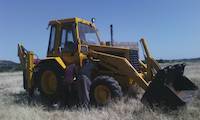 The wheel loader is a combinated machine that may be used for excavation and movement of the soil.
The wheel loader is a combinated machine that may be used for excavation and movement of the soil. - Wheel loader in Tanzania
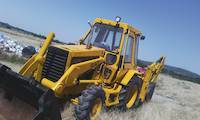 The wheel loader is a combinated machine that may be used for excavation and movement of the soil.
The wheel loader is a combinated machine that may be used for excavation and movement of the soil. - Wheel loader in Tanzania
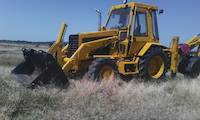 The wheel loader is a combinated machine that may be used for excavation and movement of the soil.
The wheel loader is a combinated machine that may be used for excavation and movement of the soil. - Wheel loader in Tanzania
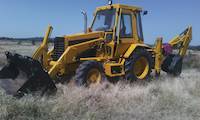 The wheel loader is a combinated machine that may be used for excavation and movement of the soil.
The wheel loader is a combinated machine that may be used for excavation and movement of the soil. - Wheel loader in Tanzania transported to the site
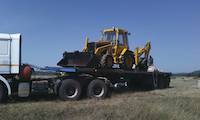 The wheel loader is a combinated machine that may be used for excavation and movement of the soil.
The wheel loader is a combinated machine that may be used for excavation and movement of the soil. - Rich gold ore
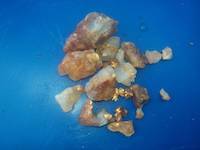 This is rich gold ore that contains about 2 kilograms of gold in 3 trucks of 10 tonnes. This type of ore shows visible nuggets and may contain in just 10 kilograms 5 grams of gold. On the same gold reef a hundred meter far from this location 3 trucks of ore have yielded with 2 kilograms of gold.
This is rich gold ore that contains about 2 kilograms of gold in 3 trucks of 10 tonnes. This type of ore shows visible nuggets and may contain in just 10 kilograms 5 grams of gold. On the same gold reef a hundred meter far from this location 3 trucks of ore have yielded with 2 kilograms of gold. - The future headquarter on the mining site
 This is the future headquarter on the mining site.
This is the future headquarter on the mining site. - EQV Formula - Example Evaluation of Future Gold Production
Any present gold production may be improved by using the EQV Formula for gold production as devised by Mr. Jean Louis. Be it a large scale mining, small scale mining or artisanal mining, or recreational gold prospecting, just any type of gold recovery may be improved by observing simple factors such as Equipment, Quality and Volume that relate to gold production. In this article we are reviewing the real world example on an artisanal mining site in Tanzania, where certain equipment and expenses have been proposed that are contradictory to itself and its own capacities, and that would become nothing but liability, instead of an income bringing asset. - I'm interested in mining my own gold mine. Let me know the process.
MOST IMPORTANT IN GOLD MINING: Please keep in mind, that MOST IMPORTANT FACTOR IN GOLD MINING is the availability of GOLD BEARING ORES. Do not focus on exploration, prospecting, if you can focus immediately on the gold bearing ores. You want a gold mining business that creates income for you. You do not want a long-term exploration, and searching for gold, when gold bearing ores have already been found. My business is to help you to COME STRAIGHT to gold bearing ores. - Frequently Asked Questions and Answers on How to Start Your Own Gold Mine
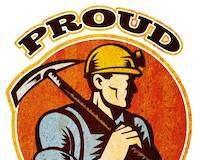 Many clients send us their questions on how to start their own gold mining company, and we answer them. Questions are then edited and published on our website Start Your Own Gold Mine so that other clients may benefit from same answers, and understand what is all necessary to start a gold mining company, what gold mining equipment is required, how to conduct gold prospecting, how to obtain licenses, how to learn about the gold bearing ores, and in general how to conduct the gold mining business.
Many clients send us their questions on how to start their own gold mining company, and we answer them. Questions are then edited and published on our website Start Your Own Gold Mine so that other clients may benefit from same answers, and understand what is all necessary to start a gold mining company, what gold mining equipment is required, how to conduct gold prospecting, how to obtain licenses, how to learn about the gold bearing ores, and in general how to conduct the gold mining business. - Gold Mining Equipment For Sale and Rent by Start Your Own Gold Mine & GOLDIVANTI LP
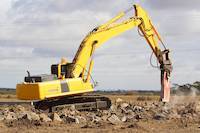 Gold mining equipment for sale as provided by company Start Your Own Gold Mine and GOLDIVANTI LP with compressors, pneumatic hammers, pumps, pipes, fittings, plumbing systems, sluices and gold recovery equipment, microscopes, laboratory equipment relating to gold mining, feeders, jigs, excavators, bulldozers, jaw crushers, hammer crushers, ball mills, wet pan mills, Raymond mills, trucks, backhoe loaders, gold pans, magnets, sieves and sifters, gold refining and smelting equipment and tools, winches, and just about anything relating to gold mining you can buy here.
Gold mining equipment for sale as provided by company Start Your Own Gold Mine and GOLDIVANTI LP with compressors, pneumatic hammers, pumps, pipes, fittings, plumbing systems, sluices and gold recovery equipment, microscopes, laboratory equipment relating to gold mining, feeders, jigs, excavators, bulldozers, jaw crushers, hammer crushers, ball mills, wet pan mills, Raymond mills, trucks, backhoe loaders, gold pans, magnets, sieves and sifters, gold refining and smelting equipment and tools, winches, and just about anything relating to gold mining you can buy here. - Software we are using in the program Start Your Own Gold Mine
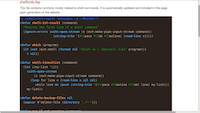 Here is the description, listing and download of some of the small and large software we are using in the program Start Your Own Gold Mine. Small scale mining without mathematics, physics, chemistry, geology simply does not function well. Same is with software. Repetitive tasks and calculations, estimates and the EQV Formula for gold production demands the usage of programming languages and specific software tools.
Here is the description, listing and download of some of the small and large software we are using in the program Start Your Own Gold Mine. Small scale mining without mathematics, physics, chemistry, geology simply does not function well. Same is with software. Repetitive tasks and calculations, estimates and the EQV Formula for gold production demands the usage of programming languages and specific software tools. - Practical application of the EQV Gold Production formula
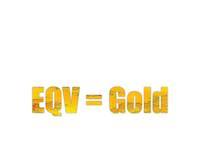 Here are few practical examples of the EQV Gold Production and how our company is using it to assess the present mining operation and to predict our investment and the future gold mining production. The formula is simple and applies to small scale mining of gold and may apply to other types of minerals as well. The full and expanded EQV formula relates not only to the production of gold but to the income of gold mining production, operational expenses and other expenses. Every small scale mining company may increase and improve their outputs by observing the factors that are most important and relate to each other, the present and future Equipment and its capacity and usage, the Quality of ores, gold and processing and the Volume of ores being excavated and processed.
Here are few practical examples of the EQV Gold Production and how our company is using it to assess the present mining operation and to predict our investment and the future gold mining production. The formula is simple and applies to small scale mining of gold and may apply to other types of minerals as well. The full and expanded EQV formula relates not only to the production of gold but to the income of gold mining production, operational expenses and other expenses. Every small scale mining company may increase and improve their outputs by observing the factors that are most important and relate to each other, the present and future Equipment and its capacity and usage, the Quality of ores, gold and processing and the Volume of ores being excavated and processed. - How to obtain gold bars and bullion through Prepaid Gold Forward Sales Contract
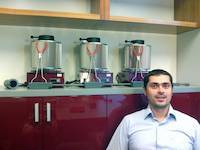 There are few steps to follow on how to obtain gold bars and bullion through Prepaid Gold Forward Sales Contract with companies that have mineral rights and mining sites under control. One need to obtain proper information of the companies and their business, to exchange the due diligence, and to fully understand the process of production of gold on the mining site.
There are few steps to follow on how to obtain gold bars and bullion through Prepaid Gold Forward Sales Contract with companies that have mineral rights and mining sites under control. One need to obtain proper information of the companies and their business, to exchange the due diligence, and to fully understand the process of production of gold on the mining site. - An dismantled gold washing plant trummel at a mining site in Akanteng near Akwatia, Ghana
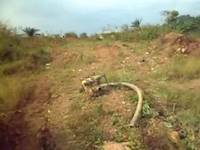 Mr. Frank Boateng in 2014, on research, demonstrating dismantled gold washing plant trummel at a mining site in Akanteng near Akwatia, Ghana, demonstrating the remains of mining equipment.
Mr. Frank Boateng in 2014, on research, demonstrating dismantled gold washing plant trummel at a mining site in Akanteng near Akwatia, Ghana, demonstrating the remains of mining equipment. - Prepaid Gold Forward Sales Contract by Start Your Own Gold Mine
 Prepaid Gold Forward Sales Contract as provided by company Start Your Own Gold Mine is a good way of financing mining production where the buyer of gold may obtain the asset with 20 to 30% discount, and the producer obtains the new mining equipment and machinery and thus enlarges the production capacities. Details are specified on this page.
Prepaid Gold Forward Sales Contract as provided by company Start Your Own Gold Mine is a good way of financing mining production where the buyer of gold may obtain the asset with 20 to 30% discount, and the producer obtains the new mining equipment and machinery and thus enlarges the production capacities. Details are specified on this page.
- Prepaid Gold Forward Sales Contract
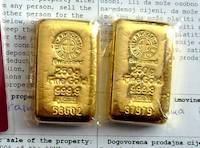 The Prepaid Gold Forward Sales Contract is a contract between two parties to deliver the gold in the future for prepaid payment and at a price agreed upon the time of the contract. The Tanzanian mining company Start Your Own Gold Mine agrees to deliver gold bullion or raw gold at some time in the future in return for the agreement and payment from the other party. The mininig and production of such gold is thus being financed by the buyer of gold bars for the mutual win win situation.
The Prepaid Gold Forward Sales Contract is a contract between two parties to deliver the gold in the future for prepaid payment and at a price agreed upon the time of the contract. The Tanzanian mining company Start Your Own Gold Mine agrees to deliver gold bullion or raw gold at some time in the future in return for the agreement and payment from the other party. The mininig and production of such gold is thus being financed by the buyer of gold bars for the mutual win win situation. - How providing benefits to the producers of gold brings benefits back to gold buyers
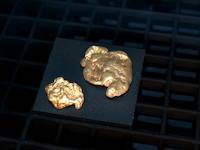 Providing benefits to producers of gold, such as prepaid forward contracts for gold purchase with fixed prices and sometimes with discounts, finances the producers and gives the producer the incentives to sell the gold to such gold buyers. Investment into small scale mining companies may bring equivalent investment such as those with larger mining companies. Providing equipment, excavators, bulldozers, trucks, containers, hydraulic hammers, winches, all that brings benefits to mining companies who have the gold bearing ores, the administration in place and proper technology to deliver the results.
Providing benefits to producers of gold, such as prepaid forward contracts for gold purchase with fixed prices and sometimes with discounts, finances the producers and gives the producer the incentives to sell the gold to such gold buyers. Investment into small scale mining companies may bring equivalent investment such as those with larger mining companies. Providing equipment, excavators, bulldozers, trucks, containers, hydraulic hammers, winches, all that brings benefits to mining companies who have the gold bearing ores, the administration in place and proper technology to deliver the results. - Delegation
Delegation - Qualification requirements for executive staff in the Start Your Own Gold Mine company
 The qualification requirements as listed on this page provide you with references to education and online resources, so that you may qualify for the position of executive staff within the Start Your Own Gold Mine company. The resources and courses you may attend by following the instructions may empower you as an individual and staff member, and as a businessman.
The qualification requirements as listed on this page provide you with references to education and online resources, so that you may qualify for the position of executive staff within the Start Your Own Gold Mine company. The resources and courses you may attend by following the instructions may empower you as an individual and staff member, and as a businessman. - My experience with fraud in gold trade in Ghana
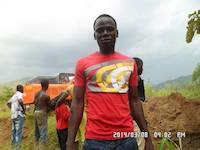 The Chief Financier of my activity is a Dubai-based gold buyer with a registered business and office in Accra, Ghana, and two of his trusted managers (all U.A.E nationals) based in the Accra office, while I was the trusted Operations / Field Manager.
The Chief Financier of my activity is a Dubai-based gold buyer with a registered business and office in Accra, Ghana, and two of his trusted managers (all U.A.E nationals) based in the Accra office, while I was the trusted Operations / Field Manager. - Services of Start Your Own Gold Mine company
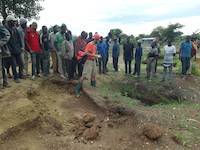 Start Your Own Gold Mine company provides various services including the management of mineral rights, sales of mining and prospecting equipment, training, consulting, sales of ores, evaluation and assaying services of ores, gold and other minerals. We try to help our clients whenever possible. Foreign investors require assistance in Tanzania to bring the vehicles, machinery, to purchase the proper equipment for mining, to know the local customs, tradition, rules and laws. We are providing assistance and support for mining businesses in Tanzania and in other countries.
Start Your Own Gold Mine company provides various services including the management of mineral rights, sales of mining and prospecting equipment, training, consulting, sales of ores, evaluation and assaying services of ores, gold and other minerals. We try to help our clients whenever possible. Foreign investors require assistance in Tanzania to bring the vehicles, machinery, to purchase the proper equipment for mining, to know the local customs, tradition, rules and laws. We are providing assistance and support for mining businesses in Tanzania and in other countries. - Deliver, part of the RCD Formula: Reach, Connect, Deliver
 Deliver is a part of the RCD Formula as invented by Mr. Jean Louis: Reach, Connect and Deliver, are the three factors generating the wealth. By increasing and improving one of the factors, the others are increasing and improving automatically. It is the formula of success to reach to potential clients, to connect to them in a personal relation and to deliver more and more goods and services. Most people fail to recognize that they are not reaching enough, not adveritising enough and often not delivering enough to create wealth. By carefully observing the factors relating to creation of wealth, it is practically possible to devise the business that generates wealth.
Deliver is a part of the RCD Formula as invented by Mr. Jean Louis: Reach, Connect and Deliver, are the three factors generating the wealth. By increasing and improving one of the factors, the others are increasing and improving automatically. It is the formula of success to reach to potential clients, to connect to them in a personal relation and to deliver more and more goods and services. Most people fail to recognize that they are not reaching enough, not adveritising enough and often not delivering enough to create wealth. By carefully observing the factors relating to creation of wealth, it is practically possible to devise the business that generates wealth. - Memorandum and Articles of START YOUR OWN GOLD MINE LIMITED
 The objects for which the company is established are to provide assistance, advisory services and consultancy with regard to business planning, business analysis, business management, and business organization in regards to starting new gold mining businesses in Tanzania, by introducing foreign investors and facilitating investments into the country.
The objects for which the company is established are to provide assistance, advisory services and consultancy with regard to business planning, business analysis, business management, and business organization in regards to starting new gold mining businesses in Tanzania, by introducing foreign investors and facilitating investments into the country. - Preliminary Site Assessment and Inspection to Start Your Own Gold Mine
 Preliminary Site Assessment and Inspection is a project to find better gold mining site. Before important decisions can be made in relation to a mining site, our company is conducting a Preliminary Site Assessment and Inspection project that has the purpose to diligently assess and analyze the life and business resources available on the mining site in order to understand what is needed and wanted for living and mining activities in the future, as also the previous gold mining history.
Preliminary Site Assessment and Inspection is a project to find better gold mining site. Before important decisions can be made in relation to a mining site, our company is conducting a Preliminary Site Assessment and Inspection project that has the purpose to diligently assess and analyze the life and business resources available on the mining site in order to understand what is needed and wanted for living and mining activities in the future, as also the previous gold mining history. - Software we are using in program Start Your Own Gold Mine
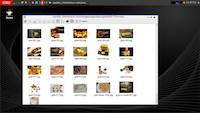 We are informing thousands of people every month of our business, in the same time, conducting Preliminary Site Inspections and Matrix Gold Prospecting projects on remote mining sites. Our business and communication system would not be possible without the software and computing.
We are informing thousands of people every month of our business, in the same time, conducting Preliminary Site Inspections and Matrix Gold Prospecting projects on remote mining sites. Our business and communication system would not be possible without the software and computing. - Pictures from September 20th, 2016, Preliminary Site Inspection
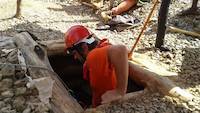 Pictures from September 20th, 2016, Preliminary Site Inspection near Geita, Tanzania. The purpose of Preliminary Site Inspection is to assess the living and business resources and to confirm the existence of any gold on such a prospective gold mining site.
Pictures from September 20th, 2016, Preliminary Site Inspection near Geita, Tanzania. The purpose of Preliminary Site Inspection is to assess the living and business resources and to confirm the existence of any gold on such a prospective gold mining site. - Videos
Videos - Pictures
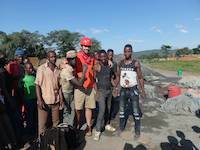 Pictures
Pictures - Media
Media - I have discovered the key to a happy and successful life
 When I was deeply in difficulties and in much stress I came across to realize that when you put faith and hope in something you wished to archive, but you found it difficult, you will surely raise a positive answer in a negative world.
When I was deeply in difficulties and in much stress I came across to realize that when you put faith and hope in something you wished to archive, but you found it difficult, you will surely raise a positive answer in a negative world. - Glossary
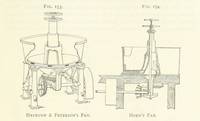 Glossary of mining terms used in the book The A.B.C. of Mining, it is alphabetical list of technical terms in some specialized field of knowledge; usually published as an appendix to a text on that field.
Glossary of mining terms used in the book The A.B.C. of Mining, it is alphabetical list of technical terms in some specialized field of knowledge; usually published as an appendix to a text on that field. - Odds and Ends
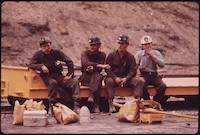 A miner's inch of water varies in different States, and is, therefore, not a fixed quantity. In some States it means the quantity of water that will flow through an orifice one inch square on the bottom or side of a box under a pressure of four inches. Under these conditions a miner's inch will discharge 2259 cubic feet, or 17,648 gallons every twenty-four hours, which is at the rate of 12 gallons a minute.
A miner's inch of water varies in different States, and is, therefore, not a fixed quantity. In some States it means the quantity of water that will flow through an orifice one inch square on the bottom or side of a box under a pressure of four inches. Under these conditions a miner's inch will discharge 2259 cubic feet, or 17,648 gallons every twenty-four hours, which is at the rate of 12 gallons a minute. - Atomic Weights
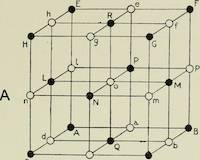 The atomic weight of a mineral is the proportion in which its elements are united, i.e., they represent the weights of the different atoms in the minerals. Hydrogen, being lightest, is made the unit.
The atomic weight of a mineral is the proportion in which its elements are united, i.e., they represent the weights of the different atoms in the minerals. Hydrogen, being lightest, is made the unit. - Dynamite
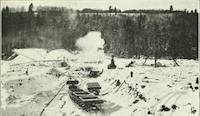 Dynamite should be stored in a magazine which must be dry, cool, and well ventilated. Bricks are best, but when built of wood, the frame should be covered inside and out with boards allowing the air to have free circulation between the walls, so that the inner wall may not be heated by the sun.
Dynamite should be stored in a magazine which must be dry, cool, and well ventilated. Bricks are best, but when built of wood, the frame should be covered inside and out with boards allowing the air to have free circulation between the walls, so that the inner wall may not be heated by the sun. - Medical Hints
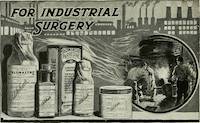 Miners as a rule are a healthy, hardy lot of men, but nevertheless they are occasionally taken ill, and there is very seldom a doctor near at hand. Moreover, by the very nature of their work they are particularly liable to accidents. The so-called miner's consumption is caused by want of fresh air. The miner passes most of his life in places where there is a great deficiency of oxygen. Deep down in the mine the air is usually very bad, being full of smoke and damp, and the hut in which he sleeps is too often overcrowded, while the places in which he seeks his amusement, should he live in a mining camp, are usually little better.
Miners as a rule are a healthy, hardy lot of men, but nevertheless they are occasionally taken ill, and there is very seldom a doctor near at hand. Moreover, by the very nature of their work they are particularly liable to accidents. The so-called miner's consumption is caused by want of fresh air. The miner passes most of his life in places where there is a great deficiency of oxygen. Deep down in the mine the air is usually very bad, being full of smoke and damp, and the hut in which he sleeps is too often overcrowded, while the places in which he seeks his amusement, should he live in a mining camp, are usually little better. - Floating a Company
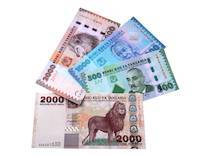 Should the prospector discover mineral that increases in amount as the mine is opened, and shows that it is likely to prove a profitable deposit, he will have little difficulty in selling out to some wealthy syndicate. But if his mine is likely to become a big producer he should try rather to organize a company, of which he should be a shareholder--the controlling one if possible--as then the output of the mine will probably make him a rich man. It is rare that a prospector selling outright obtains anything but a fraction of the value of a good mine.
Should the prospector discover mineral that increases in amount as the mine is opened, and shows that it is likely to prove a profitable deposit, he will have little difficulty in selling out to some wealthy syndicate. But if his mine is likely to become a big producer he should try rather to organize a company, of which he should be a shareholder--the controlling one if possible--as then the output of the mine will probably make him a rich man. It is rare that a prospector selling outright obtains anything but a fraction of the value of a good mine. - Surveying
 A man, to make a success of prospecting, must have what is known as "a good eye for a country." Given that faculty he will readily pick up the little knowledge of surveying that is sometimes almost indispensable. A tape measure, and a prismatic or surveying compass, are all that he is likely to require in laying off to his own satisfaction the extent of his claim, or any similar simple operation. The surveying compass has two fixed sights, and a Jacob staff mounting, into which a wooden support is inserted. The north end of the compass is always pointed ahead, while the needle, which of course indicates the magnetic north, gives the bearing of the line run toward that north.
A man, to make a success of prospecting, must have what is known as "a good eye for a country." Given that faculty he will readily pick up the little knowledge of surveying that is sometimes almost indispensable. A tape measure, and a prismatic or surveying compass, are all that he is likely to require in laying off to his own satisfaction the extent of his claim, or any similar simple operation. The surveying compass has two fixed sights, and a Jacob staff mounting, into which a wooden support is inserted. The north end of the compass is always pointed ahead, while the needle, which of course indicates the magnetic north, gives the bearing of the line run toward that north. - Camp Life
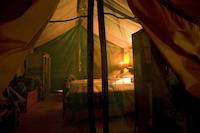 The Indian truthfully observes: "White man make heap big fire; keep far off. Indian make little fire; get close. All same." The small fire does best in the circular tepee tent, made of canvas or leather, in use on the plains. The tepee is quite an institution, but it is generally as full of smoke as a kitchen chimney, and for that reason cannot truthfully be recommended. In theory, the smoke should all pass out of the opening in the top.
The Indian truthfully observes: "White man make heap big fire; keep far off. Indian make little fire; get close. All same." The small fire does best in the circular tepee tent, made of canvas or leather, in use on the plains. The tepee is quite an institution, but it is generally as full of smoke as a kitchen chimney, and for that reason cannot truthfully be recommended. In theory, the smoke should all pass out of the opening in the top. - Mining
 Although the scope of this work does not include the very complex problem involved in the working of a great mine, prospecting and the simpler mining operations are so intimately connected that it would not be desirable to make mention of the one and ignore the other, because the prospector must perforce become a miner as soon as he discovers mineral, even though his operations should not go beyond a shallow trial shaft.
Although the scope of this work does not include the very complex problem involved in the working of a great mine, prospecting and the simpler mining operations are so intimately connected that it would not be desirable to make mention of the one and ignore the other, because the prospector must perforce become a miner as soon as he discovers mineral, even though his operations should not go beyond a shallow trial shaft. - Economic Ores and Minerals
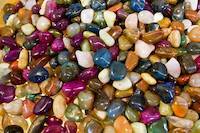 Aluminum is derived from two ores, cryolite and bauxite. This metal has made rapid strides into favor during the past half-dozen years. Although known since 1827, it remained a rare substance in the metallic form, though it is the most abundant of any of the metals in its ore. In ordinary clay there is an inexhaustible source of aluminum. But the ores that yield the metal cheaply are few. Until recently, cryolite, found abundantly in Greenland, was the chief source of the metal, but now bauxite is used in its place.
Aluminum is derived from two ores, cryolite and bauxite. This metal has made rapid strides into favor during the past half-dozen years. Although known since 1827, it remained a rare substance in the metallic form, though it is the most abundant of any of the metals in its ore. In ordinary clay there is an inexhaustible source of aluminum. But the ores that yield the metal cheaply are few. Until recently, cryolite, found abundantly in Greenland, was the chief source of the metal, but now bauxite is used in its place. - Blow-Pipe Tests
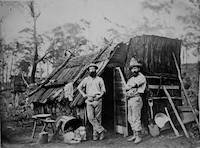 As a means of readily detecting the presence of minerals in their ores the blow-pipe, in the hands of a skillful operator, is unrivaled. Nor is this skill at all hard to come by; two or three weeks' patient study under a good master should teach a great deal, and subsequently proficiency would come by practice in the field. Unfortunately, some very clever men have become so enthusiastic as to blow-pipe work that they have devised methods by which the amount of metal in an ore as well as its nature may be determined, but in so doing have so enlarged the amount of apparatus, and complicated the tests so seriously that the simplicity of the blow-pipe outfit is in danger of being lost, and its chief advantage of being forgotten.
As a means of readily detecting the presence of minerals in their ores the blow-pipe, in the hands of a skillful operator, is unrivaled. Nor is this skill at all hard to come by; two or three weeks' patient study under a good master should teach a great deal, and subsequently proficiency would come by practice in the field. Unfortunately, some very clever men have become so enthusiastic as to blow-pipe work that they have devised methods by which the amount of metal in an ore as well as its nature may be determined, but in so doing have so enlarged the amount of apparatus, and complicated the tests so seriously that the simplicity of the blow-pipe outfit is in danger of being lost, and its chief advantage of being forgotten. - How to test for minerals
 When silver must be separated from gold, it is sometimes convenient to increase its proportion by the addition of some known weight of the inferior metal. After fusing, the globule is placed in nitric acid, and the silver parted from the gold, which may then be weighed. This result subtracted from the weight of the original globule gives the amount of silver.
When silver must be separated from gold, it is sometimes convenient to increase its proportion by the addition of some known weight of the inferior metal. After fusing, the globule is placed in nitric acid, and the silver parted from the gold, which may then be weighed. This result subtracted from the weight of the original globule gives the amount of silver. - Prospecting
 A few simple tools and a not very deep knowledge of assaying, with an observant eye and a brain quick to deduce inferences from what that eye has seen, are the most valuable assets of a prospector. In time he will gain experience, and experience will teach him much that he could not learn in any college nor from any book. Each mining district differs from every other, and it has been found that certain rules which hold good in one region, and guide the seeker after wealth to the hidden treasure that has been stored up for eons of time, do not apply in another region.
A few simple tools and a not very deep knowledge of assaying, with an observant eye and a brain quick to deduce inferences from what that eye has seen, are the most valuable assets of a prospector. In time he will gain experience, and experience will teach him much that he could not learn in any college nor from any book. Each mining district differs from every other, and it has been found that certain rules which hold good in one region, and guide the seeker after wealth to the hidden treasure that has been stored up for eons of time, do not apply in another region. - The ABC of Mining, by CHARLES A. BRAMBLE, D.L.S.
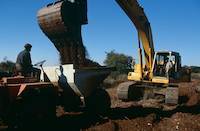 The ABC of Mining, free book provided by Start Your Own Gold Mine and written back in 1898 by Charles A. Bramble, D.L.S. Treating fully of exploratory and preparatory work of the physical properties of ores, field geology, the occurrence and associations of minerals, methods of chemical analysis and assay, blow-pipe tests, promising indications, and simple methods of working valuable deposits, together with chapters on quartz and hydraulic mining and especial detailed information on placer mining, with an addenda on camp life and medical hints.
The ABC of Mining, free book provided by Start Your Own Gold Mine and written back in 1898 by Charles A. Bramble, D.L.S. Treating fully of exploratory and preparatory work of the physical properties of ores, field geology, the occurrence and associations of minerals, methods of chemical analysis and assay, blow-pipe tests, promising indications, and simple methods of working valuable deposits, together with chapters on quartz and hydraulic mining and especial detailed information on placer mining, with an addenda on camp life and medical hints. - How businessmen take the natural risks of mining
 There are unavoidable risks of mining itself, which may, at any moment during the year lost, call for increased expenses and increased faith in ultimate success. To the mining man who makes money by the business, the natural risks of mining is all he will take; it is sufficient; and when he invests more money in machinery he takes good care that he takes no chances of either failure or delay.
There are unavoidable risks of mining itself, which may, at any moment during the year lost, call for increased expenses and increased faith in ultimate success. To the mining man who makes money by the business, the natural risks of mining is all he will take; it is sufficient; and when he invests more money in machinery he takes good care that he takes no chances of either failure or delay.
- Mining Risks
Mining Risks - Gold Prospecting in Geita, Tanzania, with Small Scale Miners
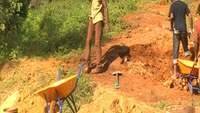 We are prospecting for gold and checking out surface soil and uncovered ore deposits. At this particular site location small scale miners have previously worked for over 20 years, almost 30 years. Miaio is our friend with the shovel, he is...
We are prospecting for gold and checking out surface soil and uncovered ore deposits. At this particular site location small scale miners have previously worked for over 20 years, almost 30 years. Miaio is our friend with the shovel, he is... - Mining Appliances and Methods a Temporary Forge
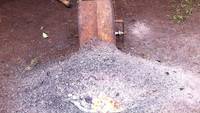 What prospector has not at times been troubled for the want of a forge? To steel or harden a pick or sharpen a drill is comparatively easy, but there is often a difficulty in getting a forge. Big single action bellows are sometimes bought at great expense, and some ingenious fellows have made an imitation of the blacksmith's bellows by means of sheepskins and rough boards.
What prospector has not at times been troubled for the want of a forge? To steel or harden a pick or sharpen a drill is comparatively easy, but there is often a difficulty in getting a forge. Big single action bellows are sometimes bought at great expense, and some ingenious fellows have made an imitation of the blacksmith's bellows by means of sheepskins and rough boards. - Rules of Thumb
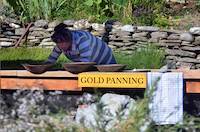 This chapter has been headed as above because a number of the rules and recipes given are simply practical expedients, not too closely scientific. My endeavour has been to supply practical and useful information in language as free from technicalities as possible, so as to adapt it to the ordinary miner, mill operator and prospector, many of whom have had no scientific training.
This chapter has been headed as above because a number of the rules and recipes given are simply practical expedients, not too closely scientific. My endeavour has been to supply practical and useful information in language as free from technicalities as possible, so as to adapt it to the ordinary miner, mill operator and prospector, many of whom have had no scientific training. - Company Formation and Operations
 All the world over, the operation of winning from the soil and rendering marketable the many valuable ores and mine products which abound is daily becoming more and more a scientific business which cannot be too carefully entered into or too skilfully conducted. The days of the dolly and windlass, of the puddler, cradle, and tin dish, are rapidly receding; and mining, either in lode or alluvial working, is being more generally recognised as one of the exact sciences.
All the world over, the operation of winning from the soil and rendering marketable the many valuable ores and mine products which abound is daily becoming more and more a scientific business which cannot be too carefully entered into or too skilfully conducted. The days of the dolly and windlass, of the puddler, cradle, and tin dish, are rapidly receding; and mining, either in lode or alluvial working, is being more generally recognised as one of the exact sciences. - Motor Power and Its Transmition
 It is unnecessary to describe methods by which power for mining purposes has been obtained—that is, up to within the last five years—beyond a general statement, that when water power has been available in the immediate locality of the mine, this cheap natural source of power has been called upon to do duty. Steam has been the alternative agent of power production applied in many different ways, but labouring under as many disadvantages, chief of which are lack of water, scarcity of fuel and cost of transit of machinery.
It is unnecessary to describe methods by which power for mining purposes has been obtained—that is, up to within the last five years—beyond a general statement, that when water power has been available in the immediate locality of the mine, this cheap natural source of power has been called upon to do duty. Steam has been the alternative agent of power production applied in many different ways, but labouring under as many disadvantages, chief of which are lack of water, scarcity of fuel and cost of transit of machinery. - Calcination or Roasting of Ores
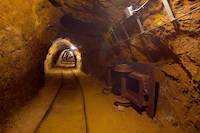 The object of calcining or roasting certain ores before treatment is to dissipate the sulphur or sulphides of arsenic, antimony, lead, etc., which are inimical to treatment, whether by ordinary mercuric amalgamation or lixiviation. The effect of the roasting is first to sublimate and drive off as fumes the sulphur and a proportion of the objectionable metals. What is left is either iron oxide, "gossan," or the oxides of the other metals.
The object of calcining or roasting certain ores before treatment is to dissipate the sulphur or sulphides of arsenic, antimony, lead, etc., which are inimical to treatment, whether by ordinary mercuric amalgamation or lixiviation. The effect of the roasting is first to sublimate and drive off as fumes the sulphur and a proportion of the objectionable metals. What is left is either iron oxide, "gossan," or the oxides of the other metals. - Gold Extraction - Secondary Processes and Lixiviation
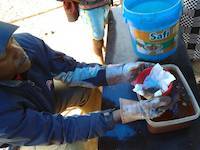 Before any plan is adopted for treating the ore in a new mine the management should very seriously and carefully consider the whole circumstances of the case, taking into account the quantity and quality of the lode stuff to be operated on, and ascertain by analysis what are its component parts, for, as before stated, the treatment which will yield most satisfactory results with a certain class of gangue on one mine will sometimes, even when the material is apparently similar, prove a disastrous failure in another.
Before any plan is adopted for treating the ore in a new mine the management should very seriously and carefully consider the whole circumstances of the case, taking into account the quantity and quality of the lode stuff to be operated on, and ascertain by analysis what are its component parts, for, as before stated, the treatment which will yield most satisfactory results with a certain class of gangue on one mine will sometimes, even when the material is apparently similar, prove a disastrous failure in another. - Gold Extraction
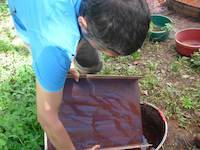 We now come to a highly important part of our subject, the practical treatment of ores and matrixes for the extraction of the metals contained. The methods employed are multitudinous, but may be divided into four classes, namely, washing, amalgamating with mercury, chlorinating, cyaniding and other leaching processes, and smelting.
We now come to a highly important part of our subject, the practical treatment of ores and matrixes for the extraction of the metals contained. The methods employed are multitudinous, but may be divided into four classes, namely, washing, amalgamating with mercury, chlorinating, cyaniding and other leaching processes, and smelting. - Gold Prospecting - Auriferous Drifts
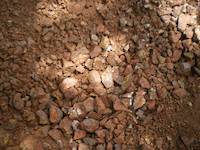 Having considered the origin of auriferous lodes, and the mode by which in all probability the gold was conveyed to them and deposited as a metal, it is necessary also to inquire into the derivation of the gold of our auriferous drifts, and the reasons for its occurrence therein.
Having considered the origin of auriferous lodes, and the mode by which in all probability the gold was conveyed to them and deposited as a metal, it is necessary also to inquire into the derivation of the gold of our auriferous drifts, and the reasons for its occurrence therein. - Genesiology of Gold - Auriferous Lodes
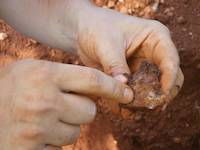 Among the theories which they discredit is that ore bodies may usually be assumed to become richer in depth. As applied to gold lodes the teaching of experience does not bear out this view.
Among the theories which they discredit is that ore bodies may usually be assumed to become richer in depth. As applied to gold lodes the teaching of experience does not bear out this view. - Lode or Reef Prospecting
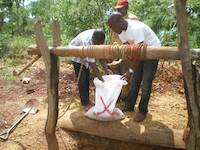 In searching for payable lodes, whether of gold, silver, copper, or even tin in some forms of occurrence, the indications are often very similar. The first prospecting is usually done on the hilltops or ridges, because, owing to denudation by ice or water which have bared the bedrock, the outcrops are there more exposed, and thence the lodes are followed down through the alluvial covered plains, partly by their "strike" or "trend," and sometimes by other indicating evidences, which the practical miner has learned to know.
In searching for payable lodes, whether of gold, silver, copper, or even tin in some forms of occurrence, the indications are often very similar. The first prospecting is usually done on the hilltops or ridges, because, owing to denudation by ice or water which have bared the bedrock, the outcrops are there more exposed, and thence the lodes are followed down through the alluvial covered plains, partly by their "strike" or "trend," and sometimes by other indicating evidences, which the practical miner has learned to know. - Gold Prospecting - Alluvial and General
 Much disappointment and loss of time and money may sometimes be prevented if prospectors will realise that *all* alluvial gold does not come from the quartz veins or reefs; and that following up an alluvial lead, no matter how rich, will not inevitably develop a payable gold lode.
Much disappointment and loss of time and money may sometimes be prevented if prospectors will realise that *all* alluvial gold does not come from the quartz veins or reefs; and that following up an alluvial lead, no matter how rich, will not inevitably develop a payable gold lode. - Introduction to Gold
 GOLD is a name to charm by. It is desired by all nations, and is the one metal the supply of which never exceeds the demand. Some one has aptly said, "Gold is the most potent substance on the surface of our planet."
GOLD is a name to charm by. It is desired by all nations, and is the one metal the supply of which never exceeds the demand. Some one has aptly said, "Gold is the most potent substance on the surface of our planet." - Getting Gold, by J.C.F. Johnson, F.G.S.
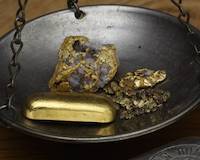 Getting Gold, as written by J.C.F. Johnson, F.G.S., is the prepared from a 1898 edition. The gold-mining industry has grown considerably since 1891, and it appeared to the writer that the present would be a propitious time to bring out a similar work, but with a considerably enlarged scope. What has been aimed at is to make "Getting Gold" a compendium, in specially concrete form, of useful information respecting the processes of winning from the soil and the after-treatment of gold and gold ores, including some original practical discoveries by the author.
Getting Gold, as written by J.C.F. Johnson, F.G.S., is the prepared from a 1898 edition. The gold-mining industry has grown considerably since 1891, and it appeared to the writer that the present would be a propitious time to bring out a similar work, but with a considerably enlarged scope. What has been aimed at is to make "Getting Gold" a compendium, in specially concrete form, of useful information respecting the processes of winning from the soil and the after-treatment of gold and gold ores, including some original practical discoveries by the author. - How we help gold mining license and land owners
 Our company helps the owners of gold mining lands and licenses, concessions, to obtain a mining startup. We provide integrated approach to start in gold mining either by joint ventures with our company or one of our clients. Mining land and license owners receive free services such as preliminary site inspection, matrix gold prospecting, geological reports, mining land valuations and gold mining startups. The final result is monthly and annnually income from gold mining profits.
Our company helps the owners of gold mining lands and licenses, concessions, to obtain a mining startup. We provide integrated approach to start in gold mining either by joint ventures with our company or one of our clients. Mining land and license owners receive free services such as preliminary site inspection, matrix gold prospecting, geological reports, mining land valuations and gold mining startups. The final result is monthly and annnually income from gold mining profits. - Miscellaneous Considerations
 There are regions producing ores that are too refractory for the simple treatments that might be given by company plants located at the mines. There are districts that have many small gold and silver mines with ores that do not yield to simple milling processes and which must therefore be shipped to custom smelteries. Even were the ores amenable to milling of some sort, it is often the case that the mines are not of sufficient magnitude to warrant the maintenance of their own treatment plants.
There are regions producing ores that are too refractory for the simple treatments that might be given by company plants located at the mines. There are districts that have many small gold and silver mines with ores that do not yield to simple milling processes and which must therefore be shipped to custom smelteries. Even were the ores amenable to milling of some sort, it is often the case that the mines are not of sufficient magnitude to warrant the maintenance of their own treatment plants. - The Men of the Future in Mining
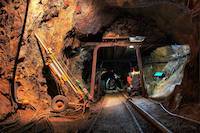 The mining of the future will probably be largely in the hands of young men. To arrive at any conclusions concerning the probabilities of success, therefore, we are obliged to recognize the dual conditions. In other words, there is to be an interdependence between men and mining. Up to this point in our discussion, we have dwelt upon the probabilities as viewed from the standpoints of natural resources and of human capability. In a certain degree, we have already covered the ground of this present chapter; and yet there are some points that must be given special consideration.
The mining of the future will probably be largely in the hands of young men. To arrive at any conclusions concerning the probabilities of success, therefore, we are obliged to recognize the dual conditions. In other words, there is to be an interdependence between men and mining. Up to this point in our discussion, we have dwelt upon the probabilities as viewed from the standpoints of natural resources and of human capability. In a certain degree, we have already covered the ground of this present chapter; and yet there are some points that must be given special consideration. - Investment in Mining Stocks
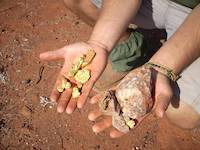 As a feature of investment in mining stocks, there has always been a more or less open lure. Generally much larger returns are promised or are expected than in other kinds of investments. There may be absolutely no intention on the part of the seller to create this impression; but there does, somehow, exist in the memories of people accounts of wonderful fortunes that have been made in mining.
As a feature of investment in mining stocks, there has always been a more or less open lure. Generally much larger returns are promised or are expected than in other kinds of investments. There may be absolutely no intention on the part of the seller to create this impression; but there does, somehow, exist in the memories of people accounts of wonderful fortunes that have been made in mining. - Mine Accounting
 While there has been a great deal of attention given to the matter of keeping systematic mine accounts, both in the main offices and those at the works, there still is a lack of uniformity in practice. In the bookkeeping of manufacturing and mercantile institutions, uniform practices or systems have become a feature. But there have been good reasons for the absence of similar methods in mine offices.
While there has been a great deal of attention given to the matter of keeping systematic mine accounts, both in the main offices and those at the works, there still is a lack of uniformity in practice. In the bookkeeping of manufacturing and mercantile institutions, uniform practices or systems have become a feature. But there have been good reasons for the absence of similar methods in mine offices. - Prices of Metals
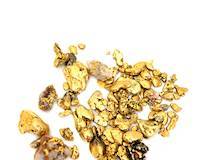 There is only one product of mines that has a constant market value, viz., gold. The precious metals, gold, silver, and platinum, are sold by the Troy ounce: the base metals are all handled and dealt with on avoirdupois weights. Copper, lead, zinc, tin, and nickel are quoted in cents per pound avoirdupois. Iron and manganese are curiously sold by mines to smelting companies on the ton of ore basis.
There is only one product of mines that has a constant market value, viz., gold. The precious metals, gold, silver, and platinum, are sold by the Troy ounce: the base metals are all handled and dealt with on avoirdupois weights. Copper, lead, zinc, tin, and nickel are quoted in cents per pound avoirdupois. Iron and manganese are curiously sold by mines to smelting companies on the ton of ore basis. - Mine Equipments
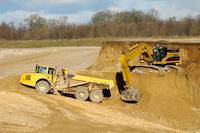 There is a constant tendency toward the adoption of machinery for the performance of every mining act which, formerly, was done by manual or animal labor. There are good reasons for this tendency. Good, trained labor is scarce; wages are slowly but gradually rising; ores of lower grade must be mined, and the tonnages must be correspondingly greater. The increased economy in production can be brought about by the adoption of devices that will supplant, and even excel, muscular effort.
There is a constant tendency toward the adoption of machinery for the performance of every mining act which, formerly, was done by manual or animal labor. There are good reasons for this tendency. Good, trained labor is scarce; wages are slowly but gradually rising; ores of lower grade must be mined, and the tonnages must be correspondingly greater. The increased economy in production can be brought about by the adoption of devices that will supplant, and even excel, muscular effort. - Mining Investments
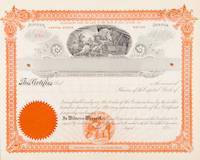 One should be able to establish, in his mind, a distinction between the value of investments in operating mines and in prospective mines; and he should likewise be competent to fix some difference in his attitude when purchasing the stocks in these dissimilar projects. One should invest in an established mine with the same business precautions that would guide him in buying an interest in a mercantile establishment.
One should be able to establish, in his mind, a distinction between the value of investments in operating mines and in prospective mines; and he should likewise be competent to fix some difference in his attitude when purchasing the stocks in these dissimilar projects. One should invest in an established mine with the same business precautions that would guide him in buying an interest in a mercantile establishment. - Incorporation and Capitalization
 Let us consider the legitimate financing of a new or a reorganized, worthy, mining proposition. It is the universal custom to own and work a mine under the laws that govern a corporation and, for this reason, the mining man of the day is familiar with the practices of incorporating.
Let us consider the legitimate financing of a new or a reorganized, worthy, mining proposition. It is the universal custom to own and work a mine under the laws that govern a corporation and, for this reason, the mining man of the day is familiar with the practices of incorporating. - The Mine Promoter
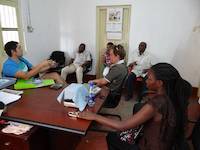 With the thought that has justly been given to the place occupied (or that should be occupied) in the world's financial and economic affairs by legitimate mining, there has developed a well-founded stigma upon the operations of a class of persons who have styled themselves by what was formerly considered a worthy title, that of "promoters."
With the thought that has justly been given to the place occupied (or that should be occupied) in the world's financial and economic affairs by legitimate mining, there has developed a well-founded stigma upon the operations of a class of persons who have styled themselves by what was formerly considered a worthy title, that of "promoters." - Valuation of Mining Property
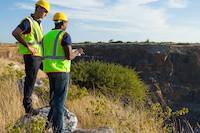 Whenever a piece of mining property is to change hands, it is the proper procedure to employ an expert engineer to investigate the ground and the improvements and so arrive at some estimate concerning its intrinsic value. Nobody is infallible and it is a trite saying that "nobody can see into a mine farther than the last drill hole." But there is a great difference in the reliabilities of reports made by trained and by untrained men.
Whenever a piece of mining property is to change hands, it is the proper procedure to employ an expert engineer to investigate the ground and the improvements and so arrive at some estimate concerning its intrinsic value. Nobody is infallible and it is a trite saying that "nobody can see into a mine farther than the last drill hole." But there is a great difference in the reliabilities of reports made by trained and by untrained men. - The Questions of Depth and Grades of Ore
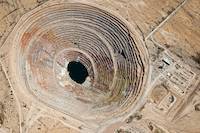 The prevailing belief of a few years ago that ore bodies always improve with depth has been discredited. Not a single mining geologist will longer maintain such a notion. The evidence of many thousands of mines has refuted this older belief and it has been proven that quite the opposite view is the correct one concerning changes of value with depth. Values, instead of getting better, do actually, in the majority of cases, grow poorer as depth is gained.
The prevailing belief of a few years ago that ore bodies always improve with depth has been discredited. Not a single mining geologist will longer maintain such a notion. The evidence of many thousands of mines has refuted this older belief and it has been proven that quite the opposite view is the correct one concerning changes of value with depth. Values, instead of getting better, do actually, in the majority of cases, grow poorer as depth is gained. - Types of Ore Bodies
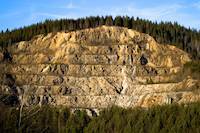 Because of the laxity in type differentiation which has prevailed among miners and writers, the same geologists who have framed definitions of ore, have also defined the various types of ore bodies. The definitions, having been accepted by the leading mining geologists and engineers of the present day, it is well for us to fall into line and to agree with the authorities in such matters.
Because of the laxity in type differentiation which has prevailed among miners and writers, the same geologists who have framed definitions of ore, have also defined the various types of ore bodies. The definitions, having been accepted by the leading mining geologists and engineers of the present day, it is well for us to fall into line and to agree with the authorities in such matters. - Mine Openings
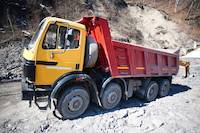 In every new mining project, there is much to be considered concerning the expediency of opening up through shafts, inclines or adits. More attention has lately been given to this subject than formerly. There are very good reasons for the selection of any one of these kinds of mine openings.
In every new mining project, there is much to be considered concerning the expediency of opening up through shafts, inclines or adits. More attention has lately been given to this subject than formerly. There are very good reasons for the selection of any one of these kinds of mine openings.
- The Opening of Mines
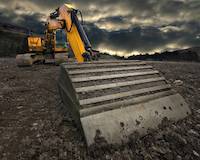 The word "exploitation" is used by many mining men and engineers to signify a plan of so opening up ore deposits as to render the contents removable. The same persons use the word "mining" to mean the operations involved in the actual extraction of the ore exploited. It is sometimes difficult to draw any line between the meanings of these two words for, as handled by different men, with varying shades of intention, they are sometimes synonymous.
The word "exploitation" is used by many mining men and engineers to signify a plan of so opening up ore deposits as to render the contents removable. The same persons use the word "mining" to mean the operations involved in the actual extraction of the ore exploited. It is sometimes difficult to draw any line between the meanings of these two words for, as handled by different men, with varying shades of intention, they are sometimes synonymous. - The Finding of Mines
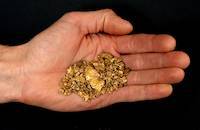 Mines are discovered in many ways. One hears much about prospecting, and since this is a practice which is rapidly changing from a mystical to a scientific basis, a few considerations will here be in order.
Mines are discovered in many ways. One hears much about prospecting, and since this is a practice which is rapidly changing from a mystical to a scientific basis, a few considerations will here be in order. - Mining's Place in Commerce
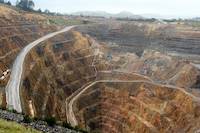 It is said that upon two of the world's commercial industries, every other form of activity depends. These two fundamental industries are agriculture and mining. Statisticians prove the above statement and the further fact that these two dissimilar branches of civilization's business are so closely related as to be quite inter-dependent. Strides are made by one of these industries only when advance is noted in the other. While it may not be possible to explain just why this is so, it is worth our attention to consider some brief figures that show this condition of affairs.
It is said that upon two of the world's commercial industries, every other form of activity depends. These two fundamental industries are agriculture and mining. Statisticians prove the above statement and the further fact that these two dissimilar branches of civilization's business are so closely related as to be quite inter-dependent. Strides are made by one of these industries only when advance is noted in the other. While it may not be possible to explain just why this is so, it is worth our attention to consider some brief figures that show this condition of affairs. - The Antiquity of Mining
 Mining is believed to have been one of man's earliest occupations. In historical writings, many of which date back into antiquity, there are allusions, as well as direct statements, concerning the art and tasks of obtaining valuable metals from Mother Earth. We are told that the very ancient Egyptians made common use of metals and that they possessed knowledge of certain metallurgical and metal-working processes.
Mining is believed to have been one of man's earliest occupations. In historical writings, many of which date back into antiquity, there are allusions, as well as direct statements, concerning the art and tasks of obtaining valuable metals from Mother Earth. We are told that the very ancient Egyptians made common use of metals and that they possessed knowledge of certain metallurgical and metal-working processes. - Gold Mining Terminology
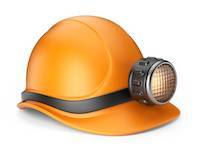 Gold Mining Terminology is a system of words used to name things in gold mining discipline. It is a doctrine of terms, a treatise on terms, declaring and describing definitions of words related to gold mining.
Gold Mining Terminology is a system of words used to name things in gold mining discipline. It is a doctrine of terms, a treatise on terms, declaring and describing definitions of words related to gold mining. - What is mining?
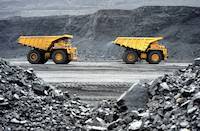 Mining is the art or practice of operating mines. Mining is carried on only when ore is being produced. Ore is a natural aggregation of one or more minerals from which useful metal may be profitably extracted. Mines are excavations in the earth from which ore, coal or gems are taken.
Mining is the art or practice of operating mines. Mining is carried on only when ore is being produced. Ore is a natural aggregation of one or more minerals from which useful metal may be profitably extracted. Mines are excavations in the earth from which ore, coal or gems are taken. - What is a mine?
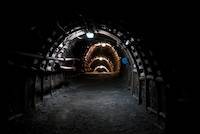 Before entering into a discussion of the economic features of the mining industry, it will be well to be sure that we understand, definitely, what is meant by mining. As one investigates the question, he is bound to run across varying shades of meaning for the words Mine and Mining, and so we must pause long enough to define these words according to the best usages.
Before entering into a discussion of the economic features of the mining industry, it will be well to be sure that we understand, definitely, what is meant by mining. As one investigates the question, he is bound to run across varying shades of meaning for the words Mine and Mining, and so we must pause long enough to define these words according to the best usages. - The Business of Mining by Arthur J. Hoskin, M.E.
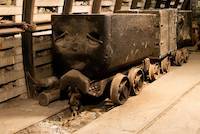 The Business of Mining, by Arthur J. Hoskin, M.E. - a brief non-technical exposition of principles involved in the profitable operations of mines, book published online as public domain by Start Your Own Gold Mine
The Business of Mining, by Arthur J. Hoskin, M.E. - a brief non-technical exposition of principles involved in the profitable operations of mines, book published online as public domain by Start Your Own Gold Mine - Books about Gold and Gold Mining
 Books about gold and gold mining are important part of the Knowledge section in the program Start Your Own Gold Mine, so that our clients can learn about gold, gold prospecting, gold mining, about survival and living in the bush, including about the culture and mentality of countries where mining companies are started.
Books about gold and gold mining are important part of the Knowledge section in the program Start Your Own Gold Mine, so that our clients can learn about gold, gold prospecting, gold mining, about survival and living in the bush, including about the culture and mentality of countries where mining companies are started. - Miners in Mgusu, using "testio" (Swahili) and finding more gold than expected in their tailing
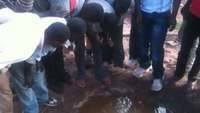 Miners in Mgusu, using "testio" (Swahili) and finding more gold than expected in their tailing. Gold was found and miners were thrilled as they did not expect that tailing has that much gold. They use small "testio" plates and ave pretty...
Miners in Mgusu, using "testio" (Swahili) and finding more gold than expected in their tailing. Gold was found and miners were thrilled as they did not expect that tailing has that much gold. They use small "testio" plates and ave pretty... - They were thinking there is no gold in tailing, but we could still recover some in Mgusu, Geita, Tanzania
 http://www.startmyowgoldmine.com - They were thinking there is no gold in tailing, but we could still recover some in Mgusu, Geita, Tanzania - Start Your Own Gold Mine: https://vimeo.com/startyourowngoldmine...
http://www.startmyowgoldmine.com - They were thinking there is no gold in tailing, but we could still recover some in Mgusu, Geita, Tanzania - Start Your Own Gold Mine: https://vimeo.com/startyourowngoldmine... - Technology
Technology - Get Ready for Gold Rush: Essential Mining Equipment for Start Your Own Mine
 Start Your Own Gold Mine is a leading manufacturer and supplier of top-notch fine gold recovery equipment and expert guidance for small and medium-scale gold mining startups, ready to unlock the gold rush and full-scale mining potential.
Start Your Own Gold Mine is a leading manufacturer and supplier of top-notch fine gold recovery equipment and expert guidance for small and medium-scale gold mining startups, ready to unlock the gold rush and full-scale mining potential. - The proper way to pan for gold by adventure-trader.com
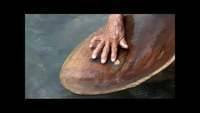 www.adventure-trader.com How and where to find gold. Learn on this video the proper way to pan for gold - dariofloresben: https://vimeo.com/user16117980
www.adventure-trader.com How and where to find gold. Learn on this video the proper way to pan for gold - dariofloresben: https://vimeo.com/user16117980 - Mining for gold nuggets with metal Detector
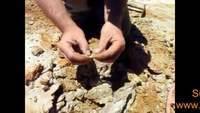 http://www.adventure-trader.com/gold-prospecting.html Gold Prospecting, mining for gold nuggets with metal Detector - dariofloresben: https://vimeo.com/user16117980
http://www.adventure-trader.com/gold-prospecting.html Gold Prospecting, mining for gold nuggets with metal Detector - dariofloresben: https://vimeo.com/user16117980 - Metal Detecting
Metal Detecting - Here is how you can get two troy ounces of gold in one day
Here is how you can get two troy ounces of gold in one day with simple equipment and on the right spot by using simplest technology. That is more than 60 grams of gold. Everyone involved in setting up a new small scale mining activity shall see and understand this video. - Kim Kiyosaki - Money Tips - well to consider before investing to Start Your Own Gold Mine
 Kim Kiyosaki - Money Tips, business tip, money tip and personal tip. Do not do business with people you would not enjoy to go to dinner with. It is very painful. It is struggle. Never invest unless you are crystal clear what that investment is. Do not blindly put the money into our program Start Your Own Gold Mine. Know full well the details, the facts, the figures, about the business you wish to invest to.
Kim Kiyosaki - Money Tips, business tip, money tip and personal tip. Do not do business with people you would not enjoy to go to dinner with. It is very painful. It is struggle. Never invest unless you are crystal clear what that investment is. Do not blindly put the money into our program Start Your Own Gold Mine. Know full well the details, the facts, the figures, about the business you wish to invest to. - Investing in Precious Metals - with Robert Kiyosaki and Jerry Williams
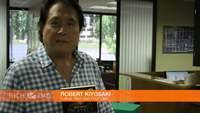 Investing in precious metals from Mr. Robert Kyosaki. A good lesson in investing in gold and silver brought to you by nobody else but Mr. Robert Kyosaki, the provider of financial education Rich Dad.
Investing in precious metals from Mr. Robert Kyosaki. A good lesson in investing in gold and silver brought to you by nobody else but Mr. Robert Kyosaki, the provider of financial education Rich Dad. - Investing in Gold
Investing in Gold - Gold Panning
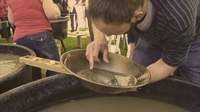 New Zealand Gold Panning Championship 2012 in Arrowtown - Amélie: https://vimeo.com/user12793213
New Zealand Gold Panning Championship 2012 in Arrowtown - Amélie: https://vimeo.com/user12793213 - Kultaa kurussa-Gold in the creek
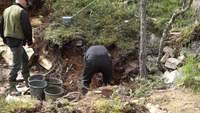 Gold panning in Lappland. Eräpera teaches how to do it at Finish Lappland. - Ilkka Saarela: https://vimeo.com/user9350334
Gold panning in Lappland. Eräpera teaches how to do it at Finish Lappland. - Ilkka Saarela: https://vimeo.com/user9350334 - Where to find gold in Colorado Springs
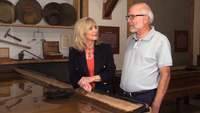 The Gazette's Katie Carrol talks with Richard A. Sauers, the executive director of the Western Museum of Mining and Industry, about the museum's family-friendly attractions including: gold panning, mine machine demonstrations,...
The Gazette's Katie Carrol talks with Richard A. Sauers, the executive director of the Western Museum of Mining and Industry, about the museum's family-friendly attractions including: gold panning, mine machine demonstrations,... - Approaching small scale mining site in Akanteng, near Akwatia in Ghana
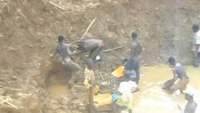 Small scale miners are panning for gold in Akanteng, near Akwatia, Ghana. They use traditional wooden pans and artisanal methods of recovering gold. We are developing this kind of mining sites and upgrading them with efficient and modern...
Small scale miners are panning for gold in Akanteng, near Akwatia, Ghana. They use traditional wooden pans and artisanal methods of recovering gold. We are developing this kind of mining sites and upgrading them with efficient and modern... - Ghanaian small scale miners panning for gold
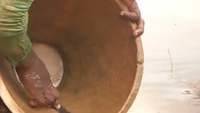 Ghanaian small scale miners, very hard working, panning for gold with traditional tools and equipment. Artisanal mining is traditional method with traditional tools that produces results and supports the living of miners and their...
Ghanaian small scale miners, very hard working, panning for gold with traditional tools and equipment. Artisanal mining is traditional method with traditional tools that produces results and supports the living of miners and their... - Artisanal extraction of gold in Burkina Faso
 Near 300 hundred people work every day making little holes in the hard quartz, manually reducing the rock to powder and then panning it to get a few grains of gold from several kilograms or rock. Is a hard work, but it keeps them busy and happy. -...
Near 300 hundred people work every day making little holes in the hard quartz, manually reducing the rock to powder and then panning it to get a few grains of gold from several kilograms or rock. Is a hard work, but it keeps them busy and happy. -... - Amy panning for gold
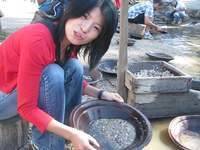 - Vernon Fowler: https://vimeo.com/vfowler
- Vernon Fowler: https://vimeo.com/vfowler - Cleanup and recovery of gold from concentrates on the small scale mining site in Akanteng, Ghana
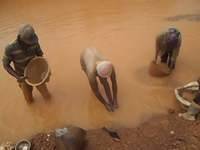 http://www.startmyowngoldmine.com - These skillful miners show how they recover the final gold from concentrates after washing the gold ores and after the hard working day on a small scale mining site in Akanteng, Ghana. There is much to...
http://www.startmyowngoldmine.com - These skillful miners show how they recover the final gold from concentrates after washing the gold ores and after the hard working day on a small scale mining site in Akanteng, Ghana. There is much to... - Hixon Creek 001 July 2014
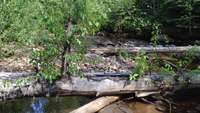 Gold panning and exploring on Hixon Creek for the first time - Marty Peterson: https://vimeo.com/user36019924
Gold panning and exploring on Hixon Creek for the first time - Marty Peterson: https://vimeo.com/user36019924 - Gold panning 2015
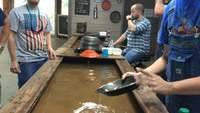 - Lynn Brooks: https://vimeo.com/user10092480
- Lynn Brooks: https://vimeo.com/user10092480 - St. Clair Gold Panning
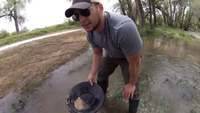 A tutorial on how to pan for gold in Colorado by Josh St. Clair - Kelsey Ledbetter: https://vimeo.com/user24874322
A tutorial on how to pan for gold in Colorado by Josh St. Clair - Kelsey Ledbetter: https://vimeo.com/user24874322 - Makorokoza
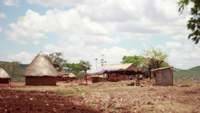 - Kombo Chapfika: https://vimeo.com/kombo
- Kombo Chapfika: https://vimeo.com/kombo - Gold Panning Championships
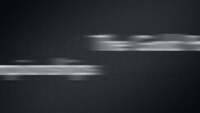 You never know what you'll discover when out for a walk. The other weekend I happened across the 16th Annual Australasian Gold Panning Championships. They were being held in my home town of Ballarat. - Chris Richardson:...
You never know what you'll discover when out for a walk. The other weekend I happened across the 16th Annual Australasian Gold Panning Championships. They were being held in my home town of Ballarat. - Chris Richardson:... - Recovering gold from concentrate, on the small scale mining site in Akanteng, near Akwatia, Ghana
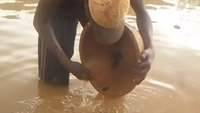 In the first stage, ores have been processed on the wash plant such as Soagum. The resulting concentrate is brought nearby river, and the concentrate is being processed once again, to produce concentrate with higher gold content. Small...
In the first stage, ores have been processed on the wash plant such as Soagum. The resulting concentrate is brought nearby river, and the concentrate is being processed once again, to produce concentrate with higher gold content. Small... - Gold Panning in Central Otago, NZ
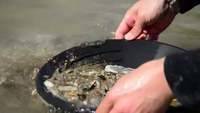 - Alice Stip: https://vimeo.com/user22251947
- Alice Stip: https://vimeo.com/user22251947 - Mariposa Mineral and Mining State Park 2013
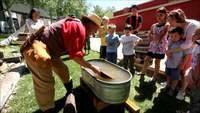 Mariposa Mineral and Mining State Park Located at the Mariposa County Fairgrounds and Event Center. This is un-edited raw footage displaying the process of panning for gold and talking about Miners and the tools they used. 4-14-13 -...
Mariposa Mineral and Mining State Park Located at the Mariposa County Fairgrounds and Event Center. This is un-edited raw footage displaying the process of panning for gold and talking about Miners and the tools they used. 4-14-13 -... - Panning for Gold
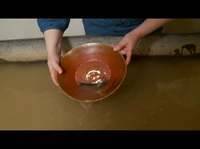 Learn how to pan for gold with an expert from The Western Museum of Mining and Industry. - PPLD TV: https://vimeo.com/ppldtv
Learn how to pan for gold with an expert from The Western Museum of Mining and Industry. - PPLD TV: https://vimeo.com/ppldtv - Basic gold panning tools for gold prospecting
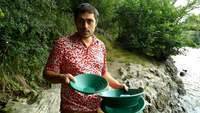 http://www.startmyowngoldmine.com - Learn about the basic tools for gold panning and prospecting. The location of this video is on the river Mur in Austria https://en.wikipedia.org/wiki/Mur_(river) where one can pan for gold....
http://www.startmyowngoldmine.com - Learn about the basic tools for gold panning and prospecting. The location of this video is on the river Mur in Austria https://en.wikipedia.org/wiki/Mur_(river) where one can pan for gold.... - Gold Panning Instructions
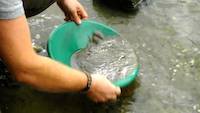 Gold Panning Instructions for people who wish to start gold mining and earning money from gold mining.
Gold Panning Instructions for people who wish to start gold mining and earning money from gold mining. - Taking ore samples at small scale mining site with much fun in Swahili
 We are taking ore samples on small scale mining sites to determine with certainty that gold is available on the land. Mining lands that we provide in program to Start Your Own Gold Mine http://www.startyourowngoldmine.com - are already...
We are taking ore samples on small scale mining sites to determine with certainty that gold is available on the land. Mining lands that we provide in program to Start Your Own Gold Mine http://www.startyourowngoldmine.com - are already... - Matrix Gold Prospecting: A Guide to Systematic Mining Site Exploration and Development
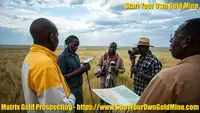 Matrix Gold Prospecting offers a systematic approach for investors, from initial assessment to efficient gold extraction, involving preliminary site evaluation, surface and shaft prospecting, subsurface drilling using manual methods and advanced geophysical technology (proton magnetometer survey), followed by diamond core drilling. This structured process aims to reach profitability in gold production as early as possible based on thorough assessments conducted during these stages.
Matrix Gold Prospecting offers a systematic approach for investors, from initial assessment to efficient gold extraction, involving preliminary site evaluation, surface and shaft prospecting, subsurface drilling using manual methods and advanced geophysical technology (proton magnetometer survey), followed by diamond core drilling. This structured process aims to reach profitability in gold production as early as possible based on thorough assessments conducted during these stages. - Mr. Louis, mentor, on the prospective small scale mining site for gold mining
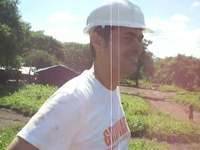 Mr. Louis, mentor, on the prospective small scale mining site for gold mining, making fun and short interview in front of our office. Small scale mining sites at Geita are beautiful, natural and healthy locations, just very similar to...
Mr. Louis, mentor, on the prospective small scale mining site for gold mining, making fun and short interview in front of our office. Small scale mining sites at Geita are beautiful, natural and healthy locations, just very similar to... - Mr. Louis
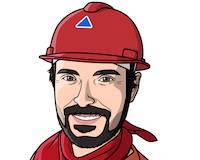 Mr. Louis
Mr. Louis - Children selling Mango in Tanzania, around Geita Gold Mine on the road to Mwanza
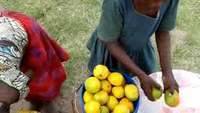 Children selling Mango in Tanzania, around Geita Gold Mine on the road to Mwanza. We wanted to buy everything — at Geita Gold Mine. Africa is unlike Europe or United States. Families must work. Children are selling mango to provide side...
Children selling Mango in Tanzania, around Geita Gold Mine on the road to Mwanza. We wanted to buy everything — at Geita Gold Mine. Africa is unlike Europe or United States. Families must work. Children are selling mango to provide side... - Tanzania Gold Mining Industry
Tanzania - Global Mercury-Free Gold Recovery Methods and Procedures
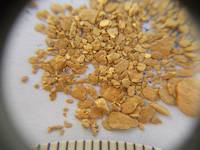 Global Mercury-Free Gold Recovery Methods and Procedures help the small scale miners to recover gold efficiently and without using poisonous and dangerous mercury. Our organization does not endorse any usage of mercury, cyanide or any other environment damaging gold recovery methods.
Global Mercury-Free Gold Recovery Methods and Procedures help the small scale miners to recover gold efficiently and without using poisonous and dangerous mercury. Our organization does not endorse any usage of mercury, cyanide or any other environment damaging gold recovery methods. - The 10 Principles of the International Council on Mining & Metals
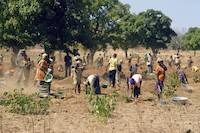 The 10 principles of the International Council on Mining & Metals strive to implement and maintain ethical business practices, to integrate sustainable development considerations, to uphold fundamental human rights and respect cultures, customs and values, to implement risk management and seek continual improvement.
The 10 principles of the International Council on Mining & Metals strive to implement and maintain ethical business practices, to integrate sustainable development considerations, to uphold fundamental human rights and respect cultures, customs and values, to implement risk management and seek continual improvement. - Licensed Gold Dealers in Tanzania
 There are many licensed gold dealers in Dar es Salaam, Tanzania. They buy gold and pay best prices. Gold will be assayed by using the gold density scale and the XRF machine. Some of families are more than 100 years in business of gold. They buy gold from local miners. You are welcome to visit their office in Dar es Salaam.
There are many licensed gold dealers in Dar es Salaam, Tanzania. They buy gold and pay best prices. Gold will be assayed by using the gold density scale and the XRF machine. Some of families are more than 100 years in business of gold. They buy gold from local miners. You are welcome to visit their office in Dar es Salaam. - crusher,jaw crusher,stone crusher,rock crusher
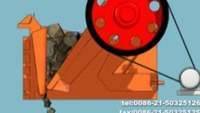 The jaw crushers Shanghai Jianye Heavy Industry Co.Ltd offers are ideal for primary and secondary crushing. It features in: 1 Firm structure, stable performance, large capacity, even producing granularity 2 With the increase of...
The jaw crushers Shanghai Jianye Heavy Industry Co.Ltd offers are ideal for primary and secondary crushing. It features in: 1 Firm structure, stable performance, large capacity, even producing granularity 2 With the increase of... - Jaw Crusher
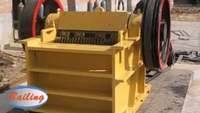 Jaw crusher is crushing stone equipment with long history. It is widely used in metallurgy, mechanical industry, building material, power, transportation until now, because it is simple in structure, b, reliable, easy for maintenance...
Jaw crusher is crushing stone equipment with long history. It is widely used in metallurgy, mechanical industry, building material, power, transportation until now, because it is simple in structure, b, reliable, easy for maintenance... - Completely stone crushing production line-www.hljcoal.com
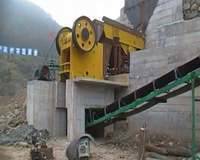 stone crushing line is primarily used for reducing various kinds of stones and lump materials into medium-grained gravel.It include:jaw crusher,impact crusher,vibrating feeder,vibrating screen,belt conveyor,etc.Visit us...
stone crushing line is primarily used for reducing various kinds of stones and lump materials into medium-grained gravel.It include:jaw crusher,impact crusher,vibrating feeder,vibrating screen,belt conveyor,etc.Visit us... - Impact Crusher Features and Benefits
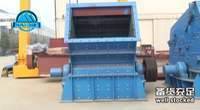 Impact Crusher Features and Benefits: 1. Many cavity to crush, suitable for crushing hard rock. 2. Low and big feed opening make the production line easy to arrange and increase the size of feeding material. 3. New anti-abrasive material...
Impact Crusher Features and Benefits: 1. Many cavity to crush, suitable for crushing hard rock. 2. Low and big feed opening make the production line easy to arrange and increase the size of feeding material. 3. New anti-abrasive material... - China
China - Gold Mining Equipment
Gold Mining Equipment - Small Scale Mining Classification & Gravity Separation with Tomas Zubicek
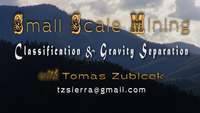 > Small Scale Mining Classification &Gravity Separation with Tomas Zubicek ABOUT THIS VIDEO: On location In the heart of the Humbug Mining District in Northern California. Filming, Tomas Zubicek's Consolidated Mining and Mill...
> Small Scale Mining Classification &Gravity Separation with Tomas Zubicek ABOUT THIS VIDEO: On location In the heart of the Humbug Mining District in Northern California. Filming, Tomas Zubicek's Consolidated Mining and Mill... - Other people
Other people - Indonesia
Indonesia - A Changing Landscape
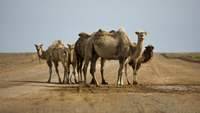 For the New York Times: In the Gobi Desert, things are changing. Mining has come to Mongolia. Next to the world's largest gold and copper mine, Oyu Tolgoi, is the town of Khanbogd . Exploration and preparation of the mine has caused a boom in...
For the New York Times: In the Gobi Desert, things are changing. Mining has come to Mongolia. Next to the world's largest gold and copper mine, Oyu Tolgoi, is the town of Khanbogd . Exploration and preparation of the mine has caused a boom in... - Mahono Mahalabaani | The Originators of Gold
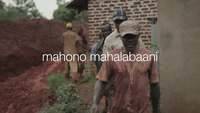 Uganda. Busitema Sub County. Mahono Mahalabaani, is the title chosen by the gold mining community, meaning "Struggling Hands". In this personal cinematic portrait the men and women give their accounts of the daily challenges presented...
Uganda. Busitema Sub County. Mahono Mahalabaani, is the title chosen by the gold mining community, meaning "Struggling Hands". In this personal cinematic portrait the men and women give their accounts of the daily challenges presented... - Uganda
Uganda - The High Price of Gold
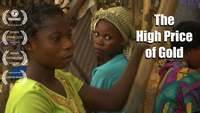 "The High Price of Gold" documents the plight of women and children living in the mineral rich eastern Democratic Republic of Congo who have been driven off their land by militias who repeatedly rape them. They have been forced to work at...
"The High Price of Gold" documents the plight of women and children living in the mineral rich eastern Democratic Republic of Congo who have been driven off their land by militias who repeatedly rape them. They have been forced to work at... - Congo, the land of the lion and the heart of Africa
Congo Republic, a heavily mineralized and challenging environment for mining, boasts significant reserves of copper, cobalt, gold, and diamonds, but faces high risks, fragile institutions, and a reputation for violence, making it not as attractive or feasible as neighboring countries in the region. - Ninja Gold Miners
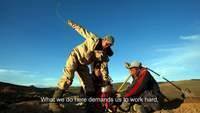 http://www.anabrigida.com http://www.flickr.com/ana_brigida Mongolians discovered that their land contained the most precious metal in the world, gold. Miners started to dig in rural areas all across Mongolia to try their luck....
http://www.anabrigida.com http://www.flickr.com/ana_brigida Mongolians discovered that their land contained the most precious metal in the world, gold. Miners started to dig in rural areas all across Mongolia to try their luck.... - Mongolia is a country in Asia with a rich history of gold mining
Mongolia - Small pond for processing gold containing ores in Akwatia, Ghana
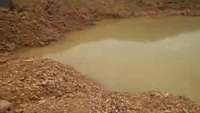 Small dam for processing ores in Akwatia, Ghana - To start your own gold mining company, go to: http://www.startmyowngoldmine.com -- the small scale mining site must have a water source. Water can be recirculated and brought back to the...
Small dam for processing ores in Akwatia, Ghana - To start your own gold mining company, go to: http://www.startmyowngoldmine.com -- the small scale mining site must have a water source. Water can be recirculated and brought back to the... - The abandoned Soagum wash plant, the local sluice for washing gold ores, in Akwatia, Ghana
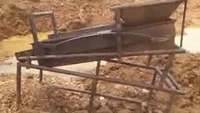 This is abandoned Soagum, wash plant, to process ores containing gold particles. It has been used by small scale miners in Akwatia, Ghana. This plant is worth few hundreds of dollars. It can process quickly large volume of ores. For better...
This is abandoned Soagum, wash plant, to process ores containing gold particles. It has been used by small scale miners in Akwatia, Ghana. This plant is worth few hundreds of dollars. It can process quickly large volume of ores. For better... - Miners playing cards, after the day of recovery of gold
 Small scale miners playing cards during a rest. If there is gold, there is also money to gamble on. For efficient gold mining startups in Africa, contact: http://www.startmyowngoldmine.com
Small scale miners playing cards during a rest. If there is gold, there is also money to gamble on. For efficient gold mining startups in Africa, contact: http://www.startmyowngoldmine.com - Small scale miners at the site in Akanteng, Ghana
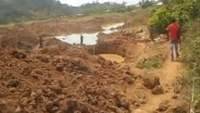 http://www.startmyowngoldmine.com - Busy small scale miners on the site in Akanteng, Ghana, are working to recover gold from soil, gravel and sand. The open pit have been worked on for many years. The business is profitable. Foreign...
http://www.startmyowngoldmine.com - Busy small scale miners on the site in Akanteng, Ghana, are working to recover gold from soil, gravel and sand. The open pit have been worked on for many years. The business is profitable. Foreign... - Cleanup and recovery of gold from concentrates on the small scale mining site in Akanteng, Ghana
 http://www.startmyowngoldmine.com - These skillful miners show how they recover the final gold from concentrates after washing the gold ores and after the hard working day on a small scale mining site in Akanteng, Ghana. There is much to...
http://www.startmyowngoldmine.com - These skillful miners show how they recover the final gold from concentrates after washing the gold ores and after the hard working day on a small scale mining site in Akanteng, Ghana. There is much to... - Cleanup and recovery of gold from concentrates on the small scale mining site in Akanteng, Ghana
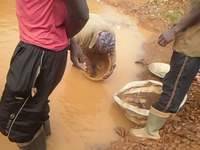 http://www.startmyowngoldmine.com - These skillful miners show how they recover the final gold from concentrates after washing the gold ores and after the hard working day on a small scale mining site in Akanteng, Ghana. There is much to...
http://www.startmyowngoldmine.com - These skillful miners show how they recover the final gold from concentrates after washing the gold ores and after the hard working day on a small scale mining site in Akanteng, Ghana. There is much to... - Small scale miner in the pit, excavating gold ore, Banso, Ghana
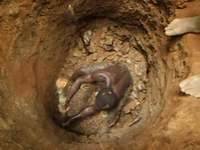 Small scale miner is excavating gold ores in Banso, Ghana. This is the similar type of prospecting that company does when preparing the mining site: http://www.startmyowngoldmine.com - one has to go deep few meters to find out the gold...
Small scale miner is excavating gold ores in Banso, Ghana. This is the similar type of prospecting that company does when preparing the mining site: http://www.startmyowngoldmine.com - one has to go deep few meters to find out the gold... - Recovering gold from concentrate after washing the ores in the sluice, Ghana
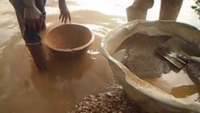 http://www.startmyowngoldmine.com - Before you learn methods and recovery of gold by using US patented and very efficient technology, it is important to compare the new methods to also very much efficient technology used in small scale...
http://www.startmyowngoldmine.com - Before you learn methods and recovery of gold by using US patented and very efficient technology, it is important to compare the new methods to also very much efficient technology used in small scale... - Recovering gold from concentrate, on the small scale mining site in Akanteng, near Akwatia, Ghana
 In the first stage, ores have been processed on the wash plant such as Soagum. The resulting concentrate is brought nearby river, and the concentrate is being processed once again, to produce concentrate with higher gold content. Small...
In the first stage, ores have been processed on the wash plant such as Soagum. The resulting concentrate is brought nearby river, and the concentrate is being processed once again, to produce concentrate with higher gold content. Small... - Cleaning the sluice, after work and ore processing on the small scale mining site in Ghana
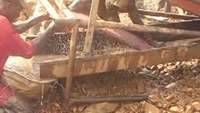 Small scale miners clean the sluice and carpets with concentrate of the gold. They do not do that as efficient as it can be done. For more information on how to set up your own but efficient gold mining equipment and gold mining company in...
Small scale miners clean the sluice and carpets with concentrate of the gold. They do not do that as efficient as it can be done. For more information on how to set up your own but efficient gold mining equipment and gold mining company in... - Wash plant in Akanteng, near Akwatia, Ghana
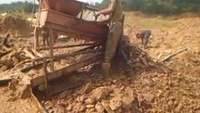 Small scale miners are washing ores on the traditional wash plant, Soagum, in Akanteng, near Akwatia, Ghana. They are doing efficient work with least expenses. For more information on how to invest in gold mining in Africa visit...
Small scale miners are washing ores on the traditional wash plant, Soagum, in Akanteng, near Akwatia, Ghana. They are doing efficient work with least expenses. For more information on how to invest in gold mining in Africa visit... - Children working just like self-employed on the small scale mining site in Ghana
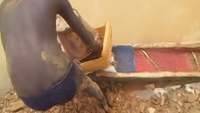 http://www.startmyowngoldmine.com - This is interesting to see how these children made their own small sluice for gold ore washing and are working on their own to earn some money in free time. These children are not forced to work, they are...
http://www.startmyowngoldmine.com - This is interesting to see how these children made their own small sluice for gold ore washing and are working on their own to earn some money in free time. These children are not forced to work, they are... - Open pit small scale mining on the site in Akanteng, Ghana near Akwatia
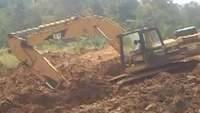 Open pit small scale mining on the site in Akanteng, Ghana. Project run and sponsored by http://www.startmyowngoldmine.com - the US company helping investors to open a profitable gold mining company in Africa....
Open pit small scale mining on the site in Akanteng, Ghana. Project run and sponsored by http://www.startmyowngoldmine.com - the US company helping investors to open a profitable gold mining company in Africa.... - Various alluvial rocks on the small scale mining site in Akanteng, Ghana
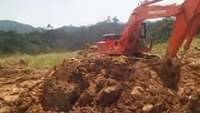 Various alluvial rocks on the small scale mining site in Akanteng, Ghana, near Akwatia. For those who wish to invest in gold mining please visit http://www.startmyowngoldmine.com - These small scale miners are doing great work with...
Various alluvial rocks on the small scale mining site in Akanteng, Ghana, near Akwatia. For those who wish to invest in gold mining please visit http://www.startmyowngoldmine.com - These small scale miners are doing great work with... - Small scale mining site in Ghana, Soagum wash plant on the site
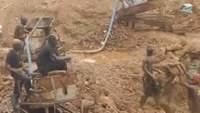 Small scale mining site in Ghana - http://www.startmyowngoldmine.com - small scale miners are washing gold on Soagum, the local and traditional wash plant. One may see how many people are working peacefully and handle much of ores and...
Small scale mining site in Ghana - http://www.startmyowngoldmine.com - small scale miners are washing gold on Soagum, the local and traditional wash plant. One may see how many people are working peacefully and handle much of ores and... - Passing the street on the overhead bridge at the Kwame Nkrumah Circle in Accra, Ghana
 One can see many street sellers and beautiful people in Accra, Ghana. Mr. Frank Boateng is on his way to accomplish the project on the mining site. For more information on how to set up gold mine in Ghana, Tanzania, Sierra Leone or other...
One can see many street sellers and beautiful people in Accra, Ghana. Mr. Frank Boateng is on his way to accomplish the project on the mining site. For more information on how to set up gold mine in Ghana, Tanzania, Sierra Leone or other... - Ghana is a country in West Africa known for its gold mining industry
Ghana - Culture and Mentality
Culture and Mentality - Approaching small scale mining site in Akanteng, near Akwatia in Ghana
 Small scale miners are panning for gold in Akanteng, near Akwatia, Ghana. They use traditional wooden pans and artisanal methods of recovering gold. We are developing this kind of mining sites and upgrading them with efficient and modern...
Small scale miners are panning for gold in Akanteng, near Akwatia, Ghana. They use traditional wooden pans and artisanal methods of recovering gold. We are developing this kind of mining sites and upgrading them with efficient and modern... - Mr. Frank Boateng, reporting in front of the GCDL main processing plant No. 12 in Akwatia, Ghana
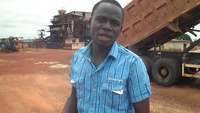 Great Consolidated Diamond Limited (GCDL) brings hope to Akwatia. Mr. Frank Boateng is reporting about the location and availability of minerals, such as diamonds and gold in Ghana. For more information on how to set up gold mining...
Great Consolidated Diamond Limited (GCDL) brings hope to Akwatia. Mr. Frank Boateng is reporting about the location and availability of minerals, such as diamonds and gold in Ghana. For more information on how to set up gold mining... - Excavating soft ores for processing on the wash plant, recovering gold
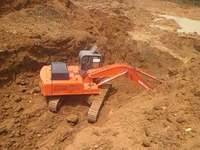 Excavating soft ores with such an excavator is quite easy. The capacity of the excavator is about 500 tonnes of soft ores per day. It goes fast. The capacity of the wash plant for gold concentration is about 80 tonnes per SYOGM™ Gold Recovery...
Excavating soft ores with such an excavator is quite easy. The capacity of the excavator is about 500 tonnes of soft ores per day. It goes fast. The capacity of the wash plant for gold concentration is about 80 tonnes per SYOGM™ Gold Recovery... - Excavator may easily handle 500 tonnes of ores such as gravel, sand, soil on the small scale mining site
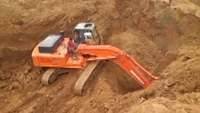 One excavator may easily handle 500 tonnes of ores such as gravel, sand, soil on the small scale mining site. With efficient equipment such as...
One excavator may easily handle 500 tonnes of ores such as gravel, sand, soil on the small scale mining site. With efficient equipment such as... - Excavation on the small scale mining site in Ghana
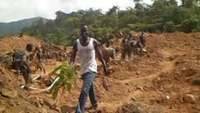 Small scale miners including women are excavating the gold bearing soft gravel and sand, earth, soil, to process it on wash plants, known as Soagum. Today everybody from the world may come to Africa and set up new gold mining company. With...
Small scale miners including women are excavating the gold bearing soft gravel and sand, earth, soil, to process it on wash plants, known as Soagum. Today everybody from the world may come to Africa and set up new gold mining company. With... - Ghanaian small scale miners panning for gold
 Ghanaian small scale miners, very hard working, panning for gold with traditional tools and equipment. Artisanal mining is traditional method with traditional tools that produces results and supports the living of miners and their...
Ghanaian small scale miners, very hard working, panning for gold with traditional tools and equipment. Artisanal mining is traditional method with traditional tools that produces results and supports the living of miners and their... - Small scale miners panning gold in Ghana
 We are helping small scale miners to utilize their lands and start in gold mining under joint ventures. For more information http://www.startyourowngoldmine.com - On this video one may see how small scale miners are panning gold in...
We are helping small scale miners to utilize their lands and start in gold mining under joint ventures. For more information http://www.startyourowngoldmine.com - On this video one may see how small scale miners are panning gold in... - Quarry mining equipment that is crushing 1600 tonnes of ores per day
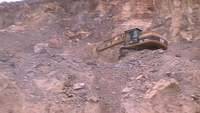 The quarry mining equipment is focused on crushing, grinding, milling rocks and separation, and selling this kind of product as cement or as rocks, gravel and similar output. This same type of equipment can be used for gold mining...
The quarry mining equipment is focused on crushing, grinding, milling rocks and separation, and selling this kind of product as cement or as rocks, gravel and similar output. This same type of equipment can be used for gold mining... - Small Scale Mining
Small Scale Mining - Large rock crushing and grinding plant handling 1600 tonnes of ores per day
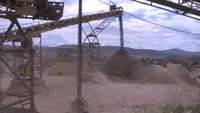 We drive around the large rock crushing and grinding plant that handles 1600 tonnes of ores per day. Clients who engage in the business program to Start Your Own Gold Mine as shown and described on http://www.startyourowngoldmine.com may...
We drive around the large rock crushing and grinding plant that handles 1600 tonnes of ores per day. Clients who engage in the business program to Start Your Own Gold Mine as shown and described on http://www.startyourowngoldmine.com may... - Financing
Financing - Amalgamation of gold particles with mercury in the concentrate, small scale miners endanger the health
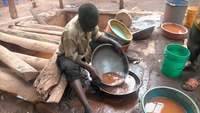 Amalgamation with mercury is dangerous and poisonous. It is danger for health and for the environment, animals, food, plants. These small scale miners still use the mercury to recover gold particles. Using mercury is not as efficient as...
Amalgamation with mercury is dangerous and poisonous. It is danger for health and for the environment, animals, food, plants. These small scale miners still use the mercury to recover gold particles. Using mercury is not as efficient as... - Environment
Environment - Training
Training - How to start a small scale gold mining company
 Small scale mining is easy when one knows how. This introduction may help the reader to start in small scale mining activity. The general information shall give a guidance on how to properly look into the future.
Small scale mining is easy when one knows how. This introduction may help the reader to start in small scale mining activity. The general information shall give a guidance on how to properly look into the future. - Safety
Safety - Protection
Protection - Small Scale Mining Code
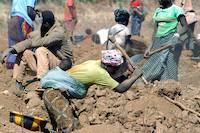 This Small Scale Mining Code was adopted by Start Your Own Gold Mine and has to be observed and followed by all present and future clients for the duration of the contract with our company. The Small Scale Mining Code is there for managing impacts of small scale mining activities carried out under a mining claim or mining license, that states guidelines for small scale mining activities.
This Small Scale Mining Code was adopted by Start Your Own Gold Mine and has to be observed and followed by all present and future clients for the duration of the contract with our company. The Small Scale Mining Code is there for managing impacts of small scale mining activities carried out under a mining claim or mining license, that states guidelines for small scale mining activities. - Where and how to pay the US $22,000 to Start Your Own Gold Mine
 If you wish to know where the money to Start Your Own Gold Mine will be paid in, it will be our bank account with the Wells Fargo bank for our company Start Your Own Gold Mine in Tacoma, Washington, United States. For more information on how to start your own gold mining company, contact us.
If you wish to know where the money to Start Your Own Gold Mine will be paid in, it will be our bank account with the Wells Fargo bank for our company Start Your Own Gold Mine in Tacoma, Washington, United States. For more information on how to start your own gold mining company, contact us. - Connect
Connect - Start Your Own Gold Mine is a straightforward, integrated and turnkey business program
 Start Your Own Gold Mine is a straightforward, integrated and turnkey business program that helps the client to start in gold mining production within 45 days upon company registration. It is carried out as consulting, mentor guided program. The business program Start Your Own Gold Mine is your Wealth Generation Plan as authored and designed by Mr. Jean Louis and the company RCD Wealth. Wealth Generation Plan is well worked out to help our clients obtain wealth and richness within shorter time, and with fast return of investment in order to enjoy financial freedom.
Start Your Own Gold Mine is a straightforward, integrated and turnkey business program that helps the client to start in gold mining production within 45 days upon company registration. It is carried out as consulting, mentor guided program. The business program Start Your Own Gold Mine is your Wealth Generation Plan as authored and designed by Mr. Jean Louis and the company RCD Wealth. Wealth Generation Plan is well worked out to help our clients obtain wealth and richness within shorter time, and with fast return of investment in order to enjoy financial freedom. - Reach
Reach - Reach, Connect, Deliver is a sales and marketing formula that generates wealth.
RCD stands for Reach, Connect, Deliver, which is a sales and marketing formula that helps generate wealth. - Sitemap of Start Your Own Gold Mine website
Sitemap - Pictures from September 20th 2016, Preliminary Site Inspection
 Preliminary Site Inspection is one important part of the program to Start Your Own Gold Mine, whereby we assess the business and living resources on the site, and confirm the existence of gold, by gold prospecting and checking for alluvial and eluvial gold in the soil, gravel, or rocks.
Preliminary Site Inspection is one important part of the program to Start Your Own Gold Mine, whereby we assess the business and living resources on the site, and confirm the existence of gold, by gold prospecting and checking for alluvial and eluvial gold in the soil, gravel, or rocks. - Selling gold is easy in Tanzania, small scale mining, Geita, Tanzania
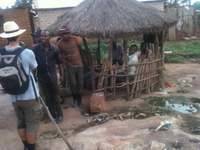 You can see here many brokers buying gold directly in the bush, or let us say mining village. The location of the village is just 20 meter from the nature, and true bush. Any small scale miner that has gold, may come to these brokers and sell it. Brokers pay best prices on the market, something like 98% or 2% less the market price for gold. There is illusion that gold is cheap in Tanzania. It was not worth for us to move to city if gold can be cheaply sold in the bush, just 2 kilometers from our mining site. We were walking there without problems.
You can see here many brokers buying gold directly in the bush, or let us say mining village. The location of the village is just 20 meter from the nature, and true bush. Any small scale miner that has gold, may come to these brokers and sell it. Brokers pay best prices on the market, something like 98% or 2% less the market price for gold. There is illusion that gold is cheap in Tanzania. It was not worth for us to move to city if gold can be cheaply sold in the bush, just 2 kilometers from our mining site. We were walking there without problems. - Teaching small scale miners on how prospect for gold
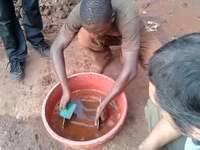 Small scale miners are usually using mercury in processing of the concentrates in Tanzania. Here I am teaching small scale miners to use new technology, to correctly recover gold without using the poisonous mercury. We are here testing the gold particles in the tailing, before we start processing it.
Small scale miners are usually using mercury in processing of the concentrates in Tanzania. Here I am teaching small scale miners to use new technology, to correctly recover gold without using the poisonous mercury. We are here testing the gold particles in the tailing, before we start processing it. - Earnings disclaimer
 Any income or earnings statements are estimates of income potential only, and there is no assurance that your earnings will match the figures we present.
Any income or earnings statements are estimates of income potential only, and there is no assurance that your earnings will match the figures we present. - EQV formula for gold mining production
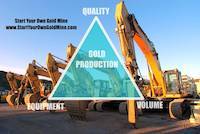 The newly invented EQV formula for increased income and gold mining production may help every small scale miner in the world. The EQV is acronym for Equipment, Quality, Volume. By increasing any of those 3 parts of the EQV triangle, one is increasing the other two and overall gold production and income. The expanded EQV formula relates to the income and expenses out of the gold production. It may be used to estimate the production of gold on mining sites and find out what to improve.
The newly invented EQV formula for increased income and gold mining production may help every small scale miner in the world. The EQV is acronym for Equipment, Quality, Volume. By increasing any of those 3 parts of the EQV triangle, one is increasing the other two and overall gold production and income. The expanded EQV formula relates to the income and expenses out of the gold production. It may be used to estimate the production of gold on mining sites and find out what to improve. - SYOGM™ Gold Recovery Plant
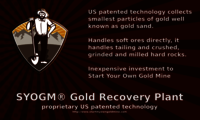 SYOGM™ Gold Recovery Plant is the set of equipment and tools for gold recovery that are primary implemented in the program to Start Your Own Gold Mine. The equipment may handle 80 tonnes of ores per day and may recover gold nuggets larger than 1 millimeter with the excellent recovery of fine gold particles down to the size of 5 microns.
SYOGM™ Gold Recovery Plant is the set of equipment and tools for gold recovery that are primary implemented in the program to Start Your Own Gold Mine. The equipment may handle 80 tonnes of ores per day and may recover gold nuggets larger than 1 millimeter with the excellent recovery of fine gold particles down to the size of 5 microns. - Gold Mining Equipment
Equipment used for starting a small-scale gold mine, including hand tools like picks and shovels; mechanical drilling machines such as hydraulic drills with rotary hammers or rock sawing machinery to bore holes into the ground; manufacturing techniques using HDPE pipes by Kampala company called Lagal Pumps Limited; Gold Panning is Easy videos from Garrett company for metal detecting gold, seven pairs of walkie-talkies essential on remote sites and basic usage SYOGM Auger equipment. - Excavating soft ores for processing on the wash plant, recovering gold
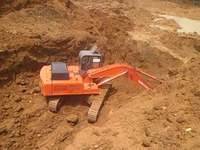 Excavating soft ores with such an excavator is quite easy. The capacity of the excavator is about 500 tonnes of soft ores per day. It goes fast. The capacity of…
Excavating soft ores with such an excavator is quite easy. The capacity of the excavator is about 500 tonnes of soft ores per day. It goes fast. The capacity of… - Video
Video - Reach
Reach - How facilitators and intermediaries can profit in developing gold mining claims
 We are often asked how facilitators and intermediaries can profit in the development of gold mining claims. There are several ways to cooperate with our company and to help on accomplishment of steps required to start the gold mining business. Intermediaries and facilitators are welcome.
We are often asked how facilitators and intermediaries can profit in the development of gold mining claims. There are several ways to cooperate with our company and to help on accomplishment of steps required to start the gold mining business. Intermediaries and facilitators are welcome. - Welcome to Start Your Own Gold Mine
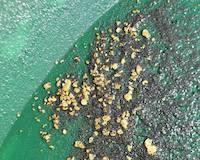 Welcome to Start Your Own Gold Mine. My name is Jean Louis, you can call me Mr. John. I am a mentor here to help you start your own gold mining venture. This is a unique opportunity for individuals looking to generate wealth in a relatively short period of time. Our turnkey solution provides you with a mining claim, land, equipment, skilled personnel, accommodation, and your very own gold mining company.
Welcome to Start Your Own Gold Mine. My name is Jean Louis, you can call me Mr. John. I am a mentor here to help you start your own gold mining venture. This is a unique opportunity for individuals looking to generate wealth in a relatively short period of time. Our turnkey solution provides you with a mining claim, land, equipment, skilled personnel, accommodation, and your very own gold mining company. - Start Your Own Gold Mine (3) - consulting, guiding, mentoring
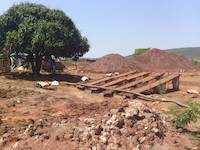 We are Europeans and Americans with gold mining activities in Tanzania. And we are offering to our friends and business partners the opportunity to Start Your Own Gold Mine. Within this opportunity, you are able to start gold mining within 45 days upon your arrival.
We are Europeans and Americans with gold mining activities in Tanzania. And we are offering to our friends and business partners the opportunity to Start Your Own Gold Mine. Within this opportunity, you are able to start gold mining within 45 days upon your arrival. - Start Your Own Gold Mine (2) - Your Wealth Plan
 Yes, you may now own, operate, manage your own gold mine. You get valuable resources, guidance, consulting and equipment, everything ready.
Yes, you may now own, operate, manage your own gold mine. You get valuable resources, guidance, consulting and equipment, everything ready. - Start Your Own Gold Mine (1) - Introduction
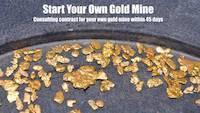 My name is John Louis and I am adviser for international investment in gold and provider of consulting and guidance service to start your own gold mine and sustainable gold mining business.
My name is John Louis and I am adviser for international investment in gold and provider of consulting and guidance service to start your own gold mine and sustainable gold mining business. - Mailing
Mailing - Contact Start Your Own Gold Mine
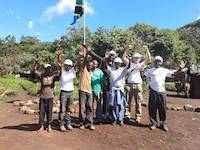 Contact our company Start Your Own Gold Mine for any matters regarding our consulting plan on starting gold mines, services in gold and diamonds or gold mining equipment and establishment of gold trade.
Contact our company Start Your Own Gold Mine for any matters regarding our consulting plan on starting gold mines, services in gold and diamonds or gold mining equipment and establishment of gold trade. - How gold can be sold in Ghana, easily and for cash, and good prices...
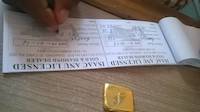 The report tells the foreign investor how easily gold can be sold in Ghana, without effort and for cash on the spot, no questions asked, for almost spot prices on the market.
The report tells the foreign investor how easily gold can be sold in Ghana, without effort and for cash on the spot, no questions asked, for almost spot prices on the market. - Ghana
Ghana - Services by Start Your Own Gold Mine
Services - Rules
Rules - RPW
RPW - Timeline of development of the Start Your Own Gold Mine business startup program
 This is the timeline of development of the Start Your Own Gold Mine business startup program. Beginning from back in 2009 up to today, the business startup program Start Your Own Gold Mine continues to be developed and is today spread over Rwanda, Uganda, Kenya and Tanzania. The risks are high. Do you have the guts? The motto is: no guts, no glory. Gold is here, ready for you to take it and create your financial freedom. Get the insight into our background development, business pitfalls, ups and downs, failures and succcesses of Start Your Own Gold Mine group of companies.
This is the timeline of development of the Start Your Own Gold Mine business startup program. Beginning from back in 2009 up to today, the business startup program Start Your Own Gold Mine continues to be developed and is today spread over Rwanda, Uganda, Kenya and Tanzania. The risks are high. Do you have the guts? The motto is: no guts, no glory. Gold is here, ready for you to take it and create your financial freedom. Get the insight into our background development, business pitfalls, ups and downs, failures and succcesses of Start Your Own Gold Mine group of companies. - Proline Dreadge
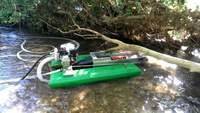 This Video was shot at Contary Creek Verginia and yes we found some gold it was very fun learning experiance One thing I learned was the natural sulferic acid in…
This Video was shot at Contary Creek Verginia and yes we found some gold it was very fun learning experiance One thing I learned was the natural sulferic acid in… - Gold Mining - Gold Hog Sluice Mats
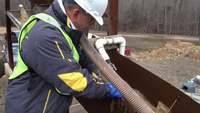 A trip with us to do a commercial install.
A trip with us to do a commercial install. - Sluice Mat Flow Rate - Gold hog
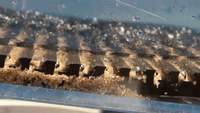 A straight run of UR mat. Various levels of water flow.
A straight run of UR mat. Various levels of water flow. - Gold Recovery Fluid Bed
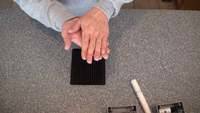 Making a cheap, mini, fluid bed for recovering gold. A great way to work concentrates.
Making a cheap, mini, fluid bed for recovering gold. A great way to work concentrates. - Pay Dirt: the Lost Treasure of Palmer Lake
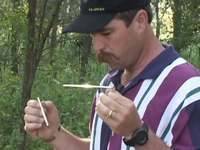 Armed with a local legend, a backhoe, and a sophisticated gold detecting device; rancher/businessman George Broady and National Sniper Champion Todd Hodnett set…
Armed with a local legend, a backhoe, and a sophisticated gold detecting device; rancher/businessman George Broady and National Sniper Champion Todd Hodnett set… - Urban Prospector
 go to UrbanProspecting.net to build your own and learn how to get some cash.
go to UrbanProspecting.net to build your own and learn how to get some cash. - Mining for gold nuggets with metal Detector
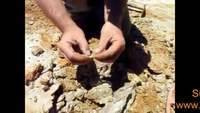 http://www.adventure-trader.com/gold-prospecting.html Gold Prospecting, mining for gold nuggets with metal Detector
http://www.adventure-trader.com/gold-prospecting.html Gold Prospecting, mining for gold nuggets with metal Detector - The Prospects of Slow Gold Part IV
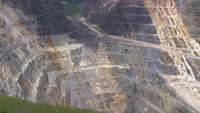 Though wedding bands symbolize enduring commitment, most jewelry consumers don’t know the origin of the metal used in their rings. The precious metal supply…
Though wedding bands symbolize enduring commitment, most jewelry consumers don’t know the origin of the metal used in their rings. The precious metal supply… - The Prospects of Slow Gold Part III
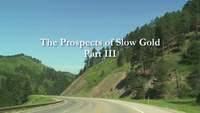 Though wedding bands symbolize enduring commitment, most jewelry consumers don’t know the origin of the metal used in their rings. The precious metal supply…
Though wedding bands symbolize enduring commitment, most jewelry consumers don’t know the origin of the metal used in their rings. The precious metal supply… - The Prospects of Slow Gold Part II
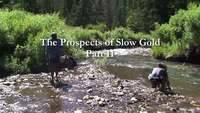 Though wedding bands symbolize enduring commitment, most jewelry consumers don’t know the origin of the metal used in their rings. The precious metal supply…
Though wedding bands symbolize enduring commitment, most jewelry consumers don’t know the origin of the metal used in their rings. The precious metal supply… - The Prospects of Slow Gold Part I
 Though wedding bands symbolize enduring commitment, most jewelry consumers don’t know the origin of the metal used in their rings. The precious metal supply…
Though wedding bands symbolize enduring commitment, most jewelry consumers don’t know the origin of the metal used in their rings. The precious metal supply… - MAKIA GOES ULTIMA THULE - Jukka Kela
 Yes, there are professional gold prospectors in Finland. Jukka Kela is one of them.
Yes, there are professional gold prospectors in Finland. Jukka Kela is one of them. - Color in the Pan Teaser
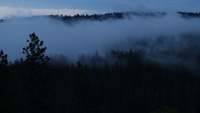 Teaser for a larger documentary about the current gold rush in the Sierra Nevada mountains of Northern California. Shot at Edwards Crossing, Yuba River, Nevada…
Teaser for a larger documentary about the current gold rush in the Sierra Nevada mountains of Northern California. Shot at Edwards Crossing, Yuba River, Nevada… - Searching For Gold.
 Part of "My Mother's Engagement Ring".
Part of "My Mother's Engagement Ring". - 2015 Gold Prospecting Training Promo Video
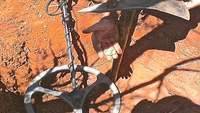 Come and book your Minelab GPX series metal detecting training course with the Aussie Adventurer for the 2015 WA Prospecting Season.
Come and book your Minelab GPX series metal detecting training course with the Aussie Adventurer for the 2015 WA Prospecting Season. - Gold Miners on Strike
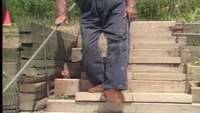 Silver Baton: Jon Alpert production with NBC about gold miner in South Dakota on strike with lung disease.
Silver Baton: Jon Alpert production with NBC about gold miner in South Dakota on strike with lung disease. - Humbug: The Documentary
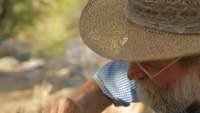 Flickr Photos: https://www.flickr.com/photos/tylerbesh/sets/72157644951263816/
Flickr Photos: https://www.flickr.com/photos/tylerbesh/sets/72157644951263816/ - Goldfields mines rescue teams put to the test
 The WA Goldfields was built on mining, but lots of people don't actually get the chance see an operating mine – have a peek inside the Kanowna Belle underground…
The WA Goldfields was built on mining, but lots of people don't actually get the chance see an operating mine – have a peek inside the Kanowna Belle underground… - Mount Morgan Mine
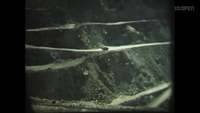 Ex-miner Ken Reid shot this footage of the Mount Morgan Mine with his Super 8 movie camera before the work site closed in 1990.
Ex-miner Ken Reid shot this footage of the Mount Morgan Mine with his Super 8 movie camera before the work site closed in 1990. - Alaskan Season 2 - 1st half Series Promo
 Alaskan is a ground breaking new series about what it takes to be a gold miner in Alaska. In season 2, the audience is taken on an epic journey through the historic…
Alaskan is a ground breaking new series about what it takes to be a gold miner in Alaska. In season 2, the audience is taken on an epic journey through the historic… - Days of gold and silver by Jessie Pollock
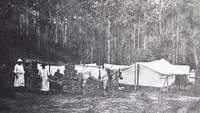 This photo was taken at one of the miner's camps at Donkey Hill goldmine near Moruya. It was taken in the late 1920s, when Jessie was about 9 years old. Jessie…
This photo was taken at one of the miner's camps at Donkey Hill goldmine near Moruya. It was taken in the late 1920s, when Jessie was about 9 years old. Jessie… - Alaskan Season 2 - 2nd Half Promo
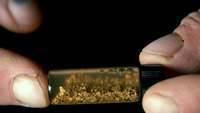 Alaskan is a ground breaking new series about what it takes to be a gold miner in Alaska. In season 2, the audience is taken on an epic journey through the historic…
Alaskan is a ground breaking new series about what it takes to be a gold miner in Alaska. In season 2, the audience is taken on an epic journey through the historic… - Alaskan Season 2 Show Open
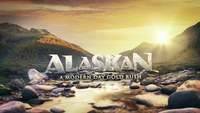 Alaskan is a ground breaking new series about what it takes to be a gold miner in Alaska. In season 2, the audience is taken on an epic journey through the historic…
Alaskan is a ground breaking new series about what it takes to be a gold miner in Alaska. In season 2, the audience is taken on an epic journey through the historic… - The Applegate Valley
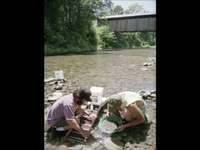 The end of the valley”, in geographical terms, refers to the southern- most end of the Applegate Valley, where it gets swallowed up within the convergence…
The end of the valley”, in geographical terms, refers to the southern- most end of the Applegate Valley, where it gets swallowed up within the convergence… - Yellow Peril (3min excerpt)
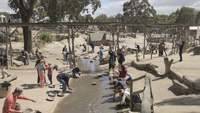 ‘Yellow Peril’ explores the impact and influence of mining and immigration on the Australian identity. An archival photograph of my parents in front…
‘Yellow Peril’ explores the impact and influence of mining and immigration on the Australian identity. An archival photograph of my parents in front… - Oregon Prospecting
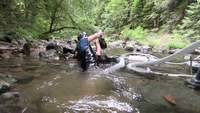 A short video of a modern day river dredging gold miner in the forest hills of Oregon.
A short video of a modern day river dredging gold miner in the forest hills of Oregon. - The California Gold Rush
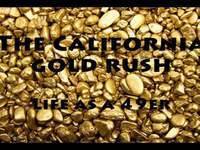 This is a video on the 1849 Gold Rush, with video footage of a miner working to find fortune!
This is a video on the 1849 Gold Rush, with video footage of a miner working to find fortune! - EMPIRE MIGRANTS
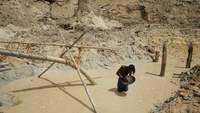 Original cut of the 3-channel video installation "Empire Migrants" by Jongsma + O'Neill (Eline Jongsma and Kel O'Neill ). Premiered IDFA 2012,…
Original cut of the 3-channel video installation "Empire Migrants" by Jongsma + O'Neill (Eline Jongsma and Kel O'Neill ). Premiered IDFA 2012,… - Fly Over of Barrick Gold's Mine in Lake Cowal, 4 February 2013
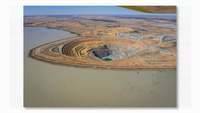 On Monday 4th February 2013, Wiradjuri Traditional Owner, Nevillle 'Chappy' Williams and ProtestBarrick.net co-founders and editors Sakura Saunders (Canada)…
On Monday 4th February 2013, Wiradjuri Traditional Owner, Nevillle 'Chappy' Williams and ProtestBarrick.net co-founders and editors Sakura Saunders (Canada)… - Finding gold in the sand
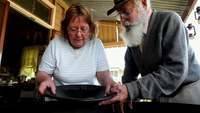 Tony Christiansen is a gold panning tutor and musician at The Miner's Cottage Museum in Charters Towers. In this ABC Open Whadyaknow? video he shows a group…
Tony Christiansen is a gold panning tutor and musician at The Miner's Cottage Museum in Charters Towers. In this ABC Open Whadyaknow? video he shows a group… - Yukon John. The Gold Prospector. 1.1
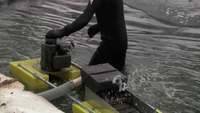 While traveling in the west Kootenay mountains on a snowboard trip, we met John Niebel (Yukon John). He was doing a bit of work at the hotel we were staying at and…
While traveling in the west Kootenay mountains on a snowboard trip, we met John Niebel (Yukon John). He was doing a bit of work at the hotel we were staying at and… - LA Miner
 LA Miner is a documentary about Patrick Blankenship, a man who found gold mining as a way to work a few things out. It follows him up into the mountains around…
LA Miner is a documentary about Patrick Blankenship, a man who found gold mining as a way to work a few things out. It follows him up into the mountains around… - (BBC) Life as an Unregistered Gold Miner
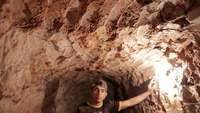 São José community, Pacu river (Tapajós tributary), Pará state - September 2013 In the remarkable gold rush that gripped Brazil's…
São José community, Pacu river (Tapajós tributary), Pará state - September 2013 In the remarkable gold rush that gripped Brazil's… - Bob The Gold Miner
 Bob finds his treasure in the San Gabriel River.
Bob finds his treasure in the San Gabriel River. - Other people's experiences
Other people's experiences - Knowledge
Knowledge - Planning
Planning - DPE
DPE - North Carolina Hydro Force Nozzle PART 4
Field Testing the Hydro-Force Dry Land Suction Nozzle at Vein Mountain & Thermal City, North Carolina - PART 4 - North Carolina Hydro Force Nozzle PART 3
Field Testing the Hydro-Force Dry Land Suction Nozzle at Vein Mountain & Thermal City, North Carolina - PART 3 of 4 - North Carolina Hydro Force Nozzle PART 2
Field Testing the Hydro-Force Dry Land Suction Nozzle at Vein Mountain & Thermal City, North Carolina - PART 2 of 4 - North Carolina Hydro Force Nozzle PART 1
Field testing the Hydro-Force Dry Land Suction Nozzle at Vein Mountain & Thermal City, North Carolina - PART 1 of 4 - Hydro-Force Nozzle Application
Introducing the Hydro-Force Nozzle Application - your solution for efficient gold dredging and effective gold recovery. In the world of gold mining, it's all about maximizing your gold extraction and increasing your recovery rates. With the Hydro-Force Nozzle Application, you can achieve just that. Designed specifically for dredging gold, this advanced technology allows you to target and collect even the tiniest particles of gold with precision. No more leaving valuable gold behind in the water. - Training is number one priority in gold mining business
 Training is number one priority in gold mining business. Not the money, but training, knowledge and application of the knowledge. Knowing the geological areas even roughly in one country can help the startup businessman to spare tremendous sums of money. Types of ores, types of gold, directly influence the expenses in mining activities. Knowledge is again the key to success in gold mining business. Get trained in gold recovery methods and you will sooner understand how and where to begin the gold mining site.
Training is number one priority in gold mining business. Not the money, but training, knowledge and application of the knowledge. Knowing the geological areas even roughly in one country can help the startup businessman to spare tremendous sums of money. Types of ores, types of gold, directly influence the expenses in mining activities. Knowledge is again the key to success in gold mining business. Get trained in gold recovery methods and you will sooner understand how and where to begin the gold mining site. - Staff Members
Staff Members - Gold Rush Panning Kit Instructions
Parker Schnabel from the hit Discovery TV show Gold Rush, takes you through the proper way to pan for gold. Just add water! This is an incredible must-see HD instructional video by an expert gold miner..... - How To Start A Gold Mine As Public Company
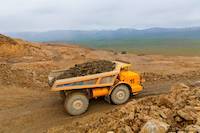 When it comes to incorporating a mining company in the UK or the US, Start Your Own Gold Mine provides guidance and assistance to ensure a smooth and legally compliant process. Here's an elaboration on how the program can prepare everything for the incorporation of a public company in various countries.
When it comes to incorporating a mining company in the UK or the US, Start Your Own Gold Mine provides guidance and assistance to ensure a smooth and legally compliant process. Here's an elaboration on how the program can prepare everything for the incorporation of a public company in various countries. - Articles on gold mining business
 Some opinions and articles about the gold mining business in general as written by Mr. Jean Louis and contributive authors and associates. With focus on practical gold mining and getting gold for profit these articles shall give the insight to beginner prospectors and gold miners about the approach to the business and best and efficient methods and practices for gold mining startups.
Some opinions and articles about the gold mining business in general as written by Mr. Jean Louis and contributive authors and associates. With focus on practical gold mining and getting gold for profit these articles shall give the insight to beginner prospectors and gold miners about the approach to the business and best and efficient methods and practices for gold mining startups. - Started Gold Mining Projects
Started Gold Mining Projects - Language
Language - Start Your Own Gold Mine in 45 days with less than US $100,000
 Start Your Own Gold Mine in 45 days with less than US $70,000 in Africa with full help, training, assistance, mentorship until your become competent in maintaining, organizing and managing small scale mine. Your small scale mining business may grow into medium and large scale mining. Once you start in gold mining business, you will receive all necessary factors necessary for the sustainable gold production: the location and control over at least one mining license or mining claim, the determination of gold bearing ores on such mining site, the necessary equipment for mercury free gold recovery and privileged benefits to enjoy resources that have been created since 2012. You will learn and understand how to Start Your Own Gold Mine through a mentor guided program and how to improve your gold mining production, or alternatively you may purchase gold sourced from our mining sites or engage in gold mining investment opportunities.
Start Your Own Gold Mine in 45 days with less than US $70,000 in Africa with full help, training, assistance, mentorship until your become competent in maintaining, organizing and managing small scale mine. Your small scale mining business may grow into medium and large scale mining. Once you start in gold mining business, you will receive all necessary factors necessary for the sustainable gold production: the location and control over at least one mining license or mining claim, the determination of gold bearing ores on such mining site, the necessary equipment for mercury free gold recovery and privileged benefits to enjoy resources that have been created since 2012. You will learn and understand how to Start Your Own Gold Mine through a mentor guided program and how to improve your gold mining production, or alternatively you may purchase gold sourced from our mining sites or engage in gold mining investment opportunities. - Mwagimagi & Goldivanti Mining Site
 The website for the joint venture of Mwagimagi Small Scale Gold Mining Co-operative Society Limited and Start Your Own Gold Mine Limited in Tanzania demonstrates its history, its working, past and current production of gold, and education of artisanal gold miners. Mercury free gold recovery methods and mineral processing is conducted near Masumbwe, Kahama, Tanzania.
The website for the joint venture of Mwagimagi Small Scale Gold Mining Co-operative Society Limited and Start Your Own Gold Mine Limited in Tanzania demonstrates its history, its working, past and current production of gold, and education of artisanal gold miners. Mercury free gold recovery methods and mineral processing is conducted near Masumbwe, Kahama, Tanzania. - The infographics for EQV Formula for Gold Mining Production by Mr. Jean Louis
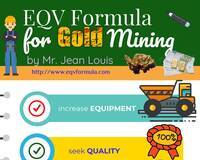 This is very short infographics for the EQV formula for gold mining production as observed and conceived by Mr. Jean Louis during the business program Start Your Own Gold Mine. One need to increase the Equipment factor and by constantly increasing the Quality of ore and gold found to attain the highest Volume of processing, and by minimizing the Expenses to achieve higher and better Gold Production and income. The formula is very simple. It serves beginning miners to quickly grasp factors on how…
This is very short infographics for the EQV formula for gold mining production as observed and conceived by Mr. Jean Louis during the business program Start Your Own Gold Mine. One need to increase the Equipment factor and by constantly increasing the Quality of ore and gold found to attain the highest Volume of processing, and by minimizing the Expenses to achieve higher and better Gold Production and income. The formula is very simple. It serves beginning miners to quickly grasp factors on how… - EQV Gold Mining Production
 The EQV™ Formula™ for Gold Mining Production has been authored by Mr. Jean Louis, mentor for the program Start Your Own Gold Mine conducted for mining license holders and entrepreneurs who wish to engage in gold mining business. The acronym EQV relates to most important factors of the gold mining production: Equipment, Quality, Volume that are directly influencing the gold mining production. The expanded EQV formula is resulting in income from gold mining production and is taking into account all of the operational gold mining expenses and other expenses relating to the gold mining business.
The EQV™ Formula™ for Gold Mining Production has been authored by Mr. Jean Louis, mentor for the program Start Your Own Gold Mine conducted for mining license holders and entrepreneurs who wish to engage in gold mining business. The acronym EQV relates to most important factors of the gold mining production: Equipment, Quality, Volume that are directly influencing the gold mining production. The expanded EQV formula is resulting in income from gold mining production and is taking into account all of the operational gold mining expenses and other expenses relating to the gold mining business. - FALSE REPORTS is major problem in getting gold from gold mining development
- Ideal scene for geologist in Start Your Own Gold Mine program
 Here is the ideal scene for a geologist in Start Your Own Gold Mine
program. The description is expectation for every associated geologist
that contributes to creation of wealth.
Here is the ideal scene for a geologist in Start Your Own Gold Mine
program. The description is expectation for every associated geologist
that contributes to creation of wealth.